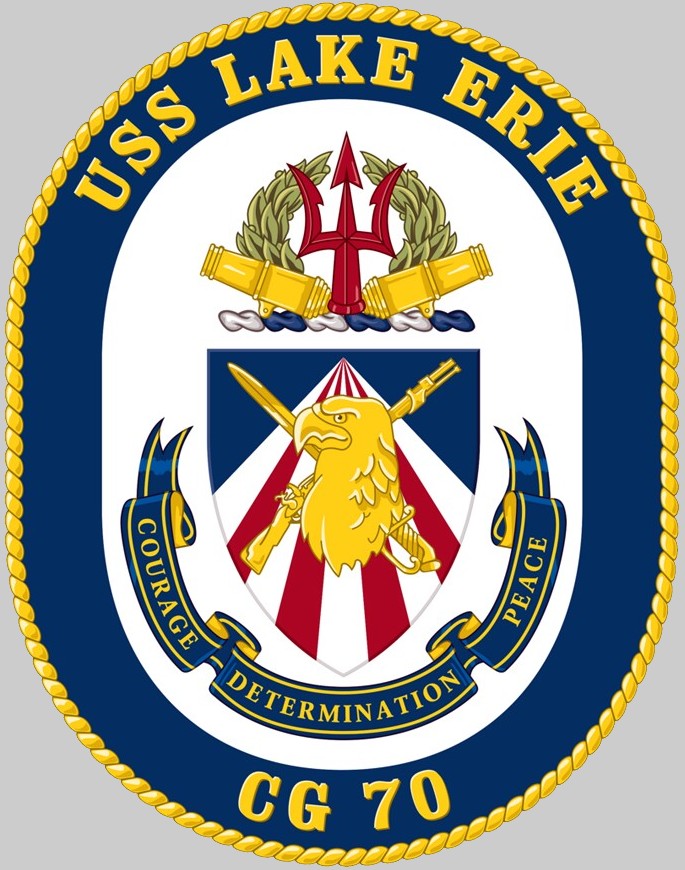 |
||
|
HOME
|
US Navy -
ships
|
US Navy - air
units
|
USMC - air
units
|
International
Navies
|
Weapon Systems
|
Special Reports |
||
|
US Navy - Guided Missile Cruiser CG 70 - USS Lake Erie |
||
|
||
| 07/22 | ||
|
Type,
class: Guided Missile Cruiser (CG); Ticonderoga
class Builder: Bath Iron Works, Bath, Maine, USA STATUS: Awarded: February 25, 1988 Laid down: March 6, 1990 Launched: July 13, 1991 Commissioned: May 10, 1993 IN SERVICE Homeport: Naval Base San Diego, California Namesake: the Battle of Lake Erie (near Put-in-Bay), Ohio - 1813 Ships Motto: COURAGE - DETERMINATION - PEACE Technical Data: see: INFO > Ticonderoga class Guided Missile Cruiser - CG |
||
| images | ||
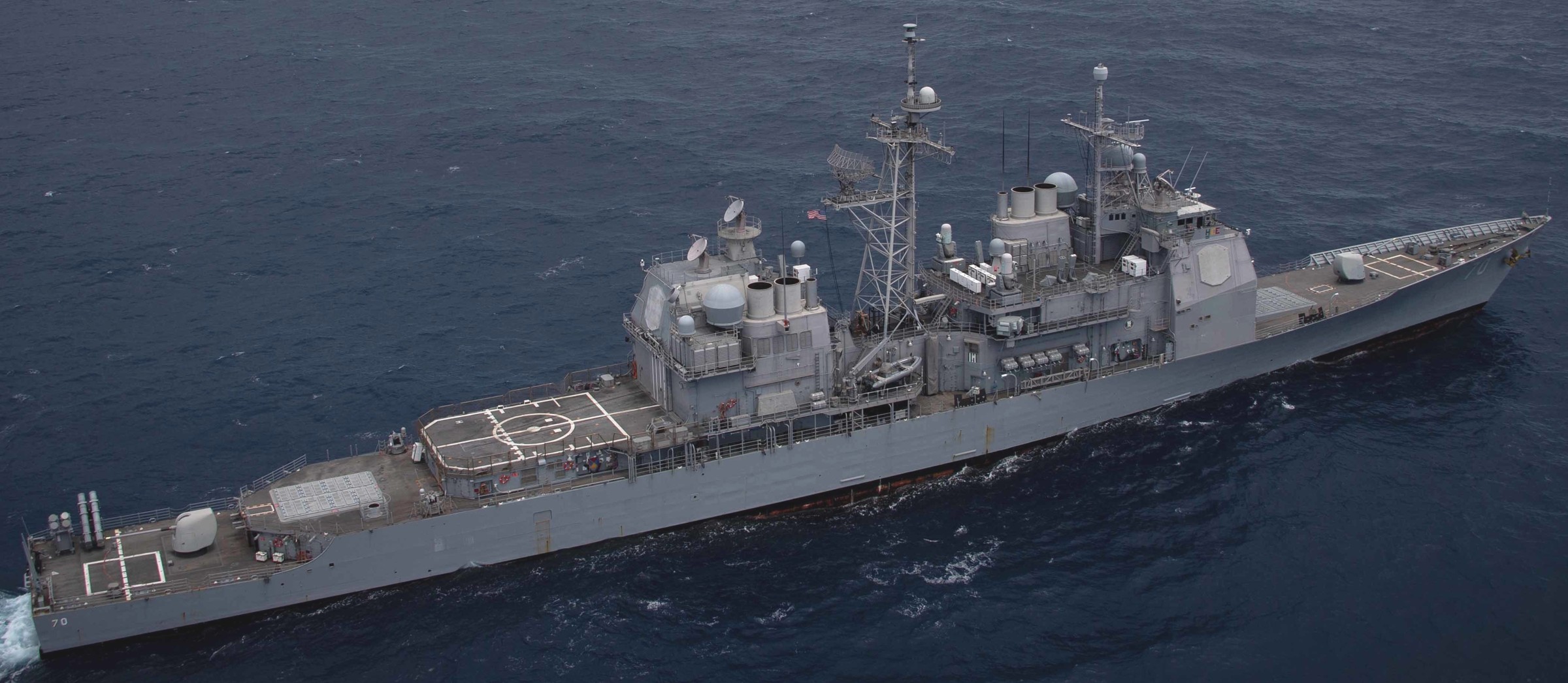 during exercise RIMPAC 20 - Pacific Ocean - August 2020 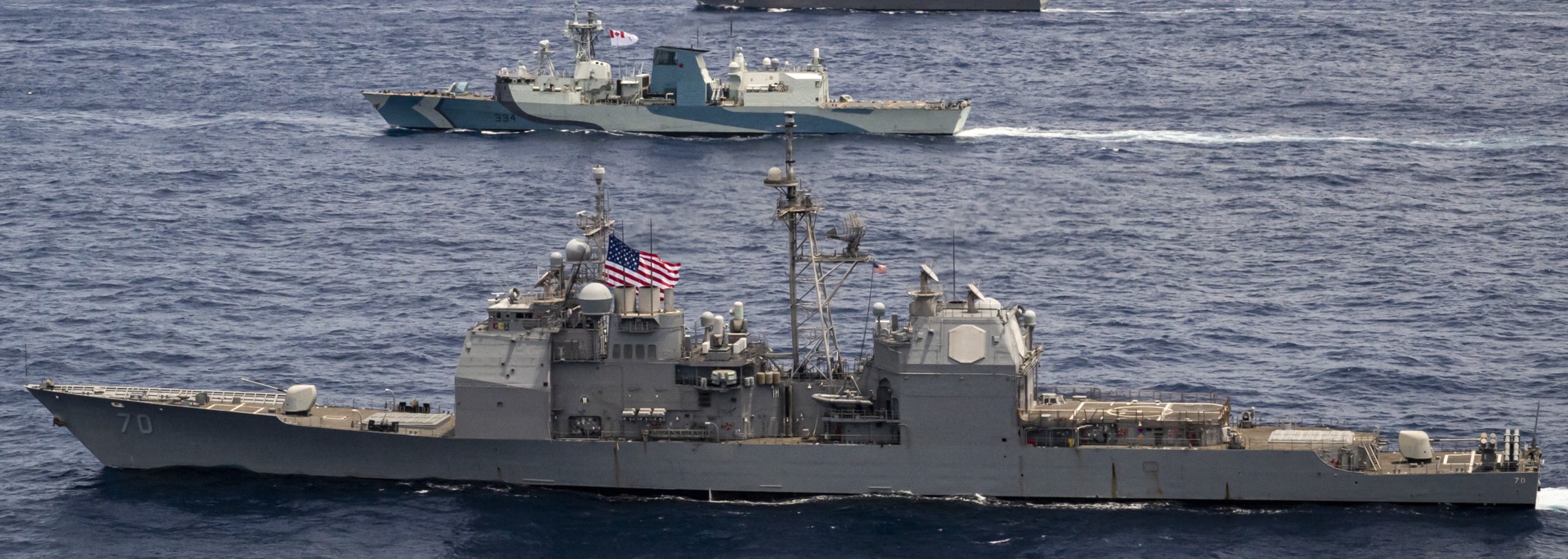 during exercise RIMPAC 20 - Pacific Ocean - August 2020 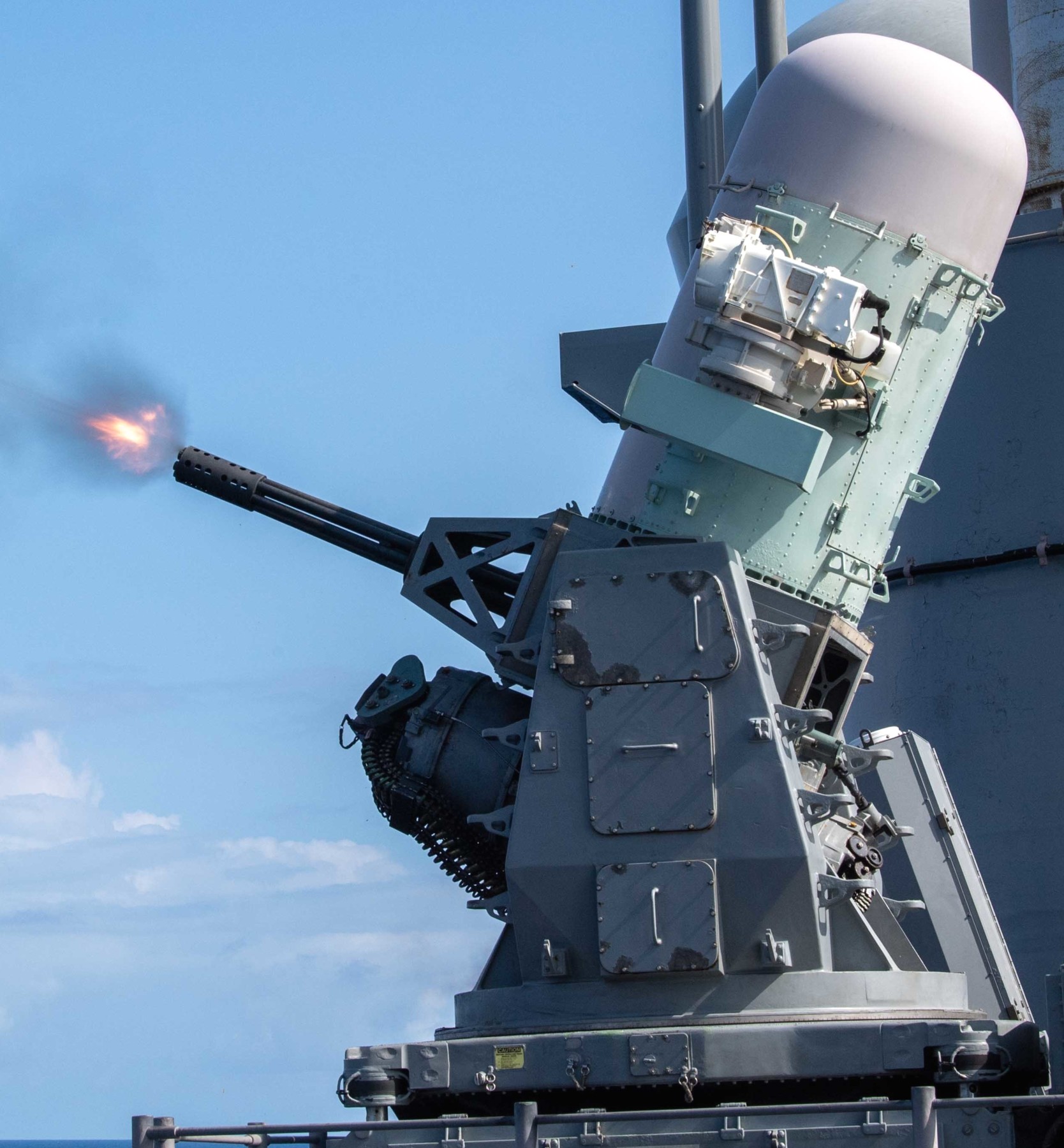 Mk.15 Phalanx CIWS live fire exercise during exercise RIMPAC 20 - Pacific Ocean - August 2020 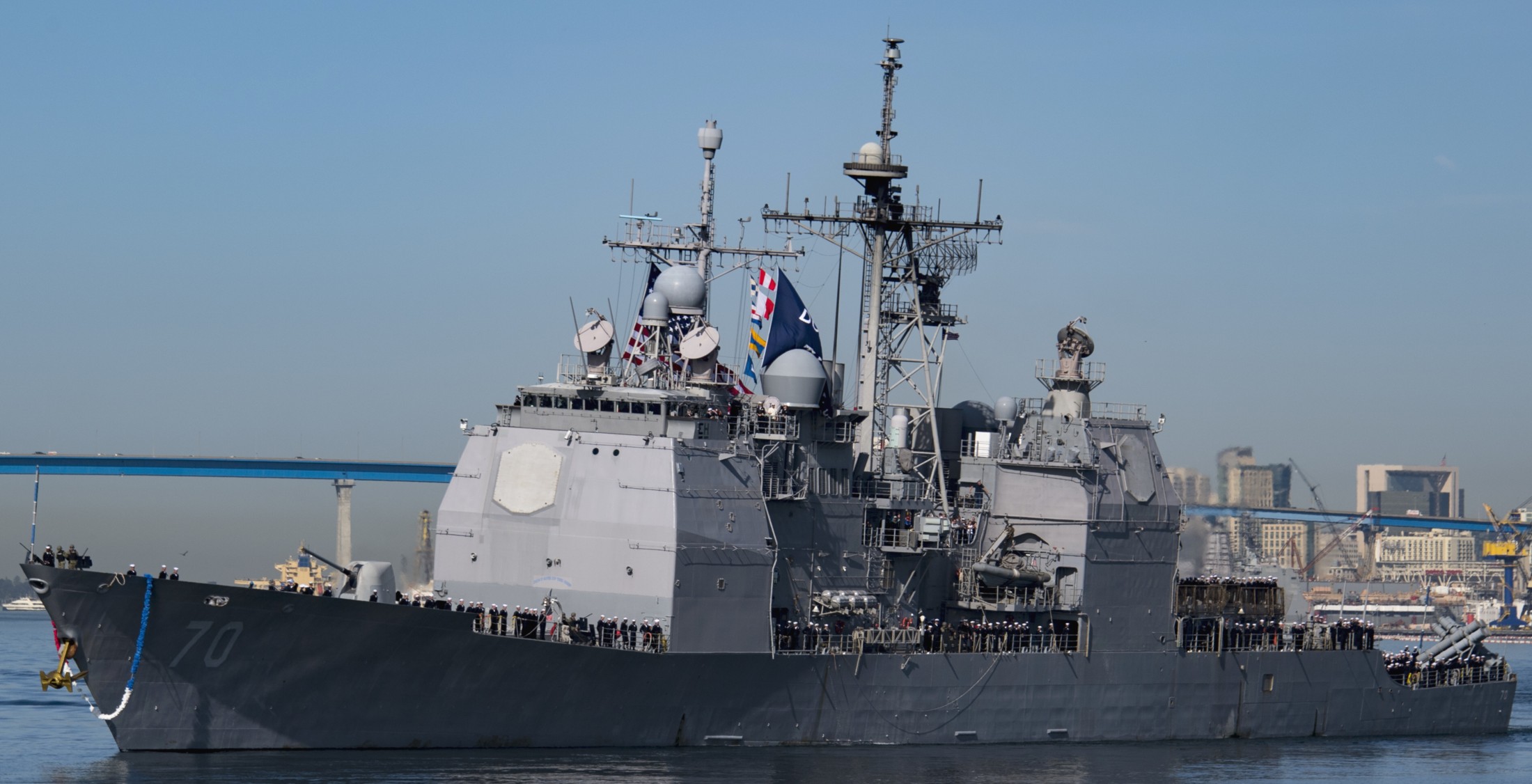 returning to San Diego, California - November 2019  returning to San Diego, California - November 2019 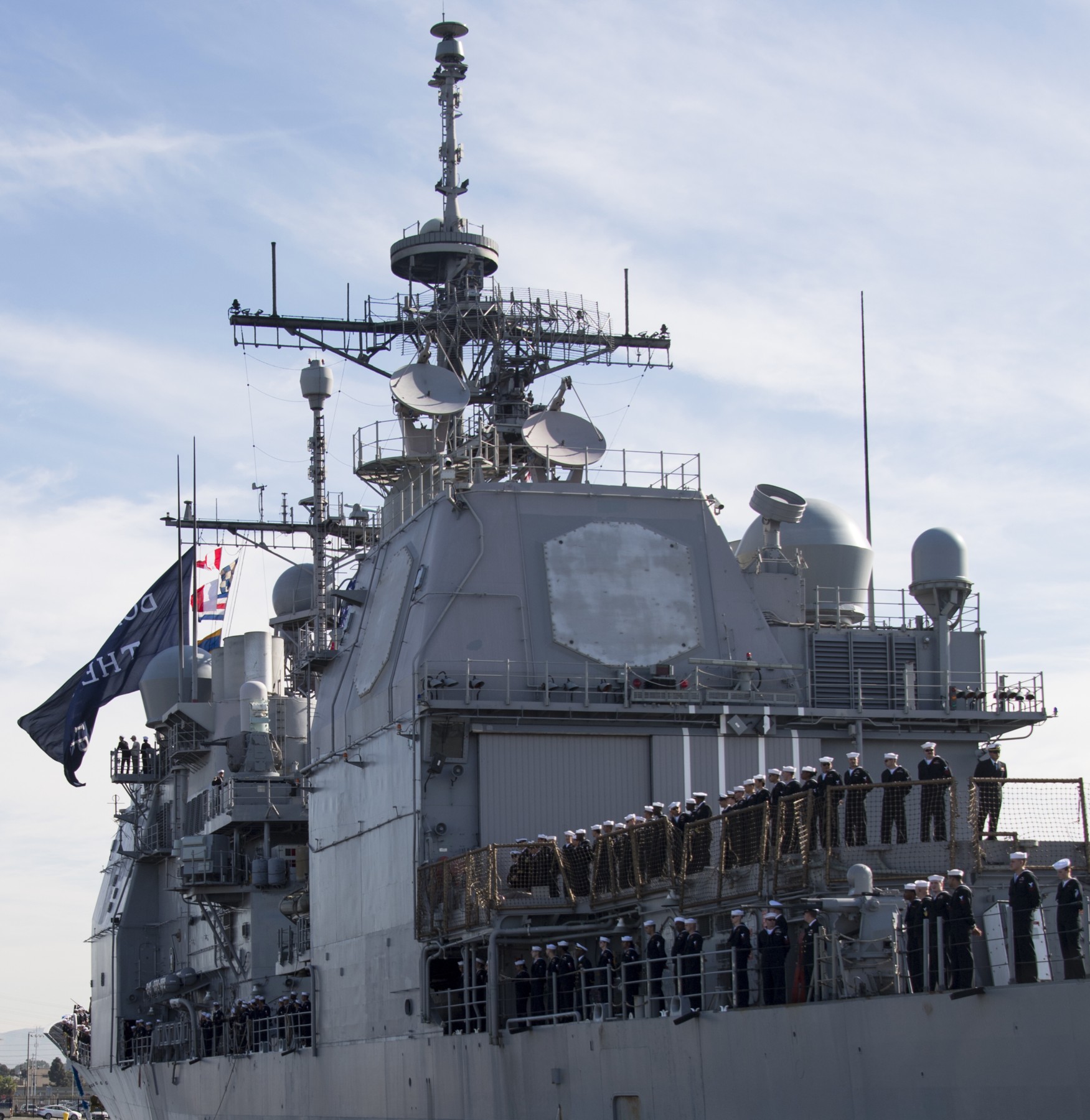 returning to San Diego, California - November 2019  East China Sea - October 2019 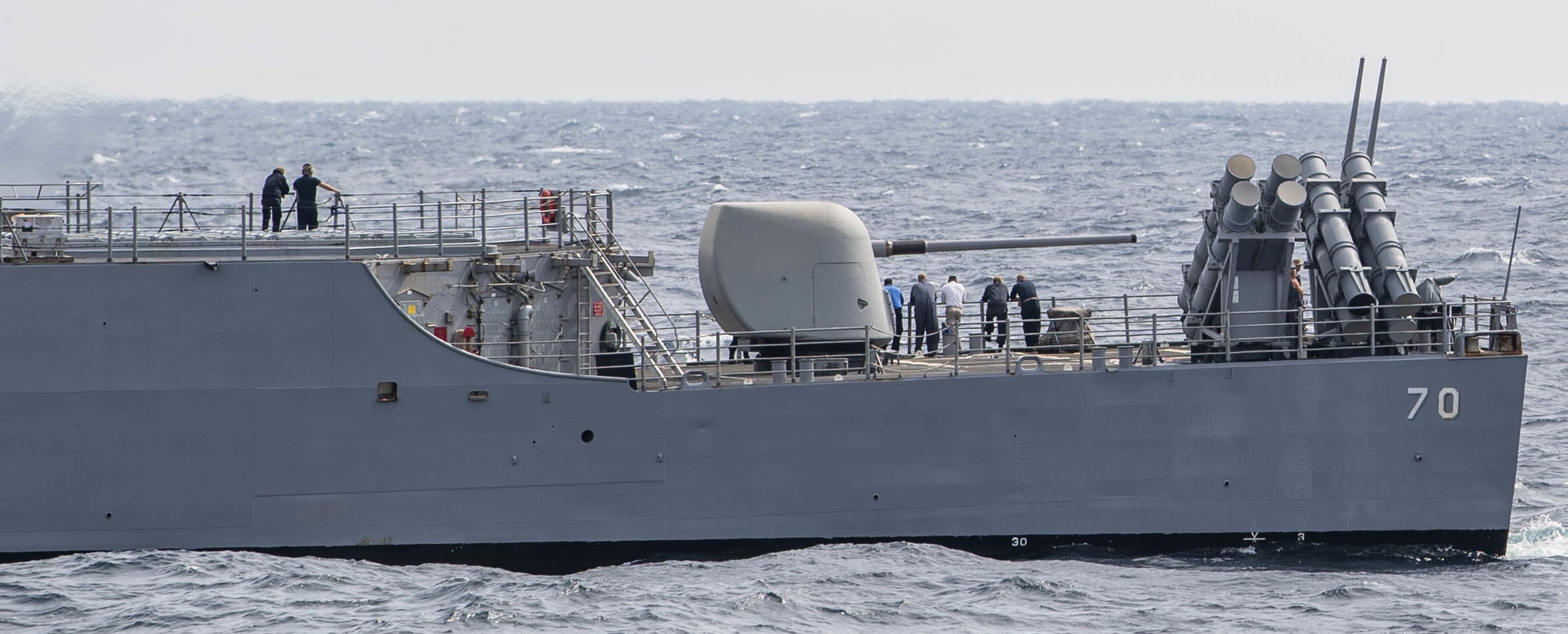 East China Sea - October 2019  East China Sea - July 2019 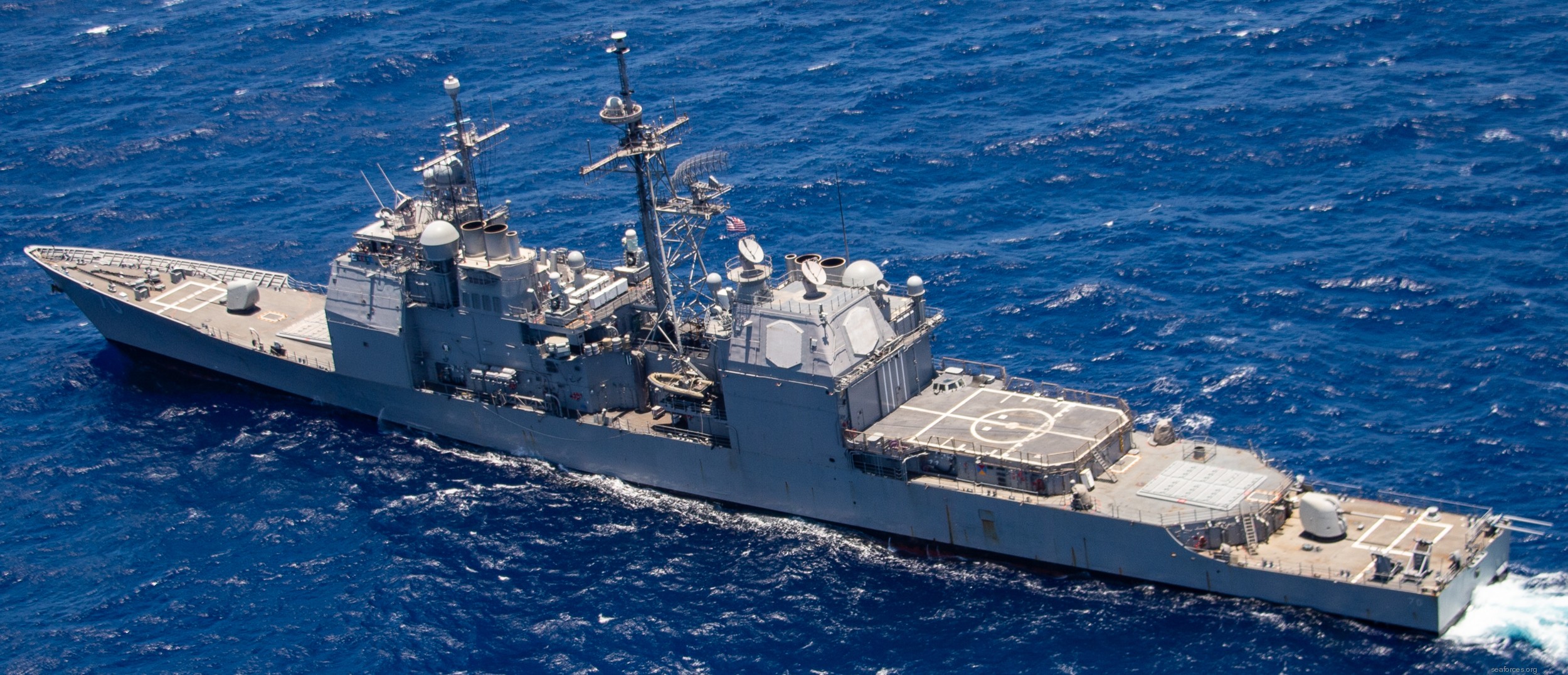 during exercise RIMPAC 18 - Pacific Ocean - July 2018 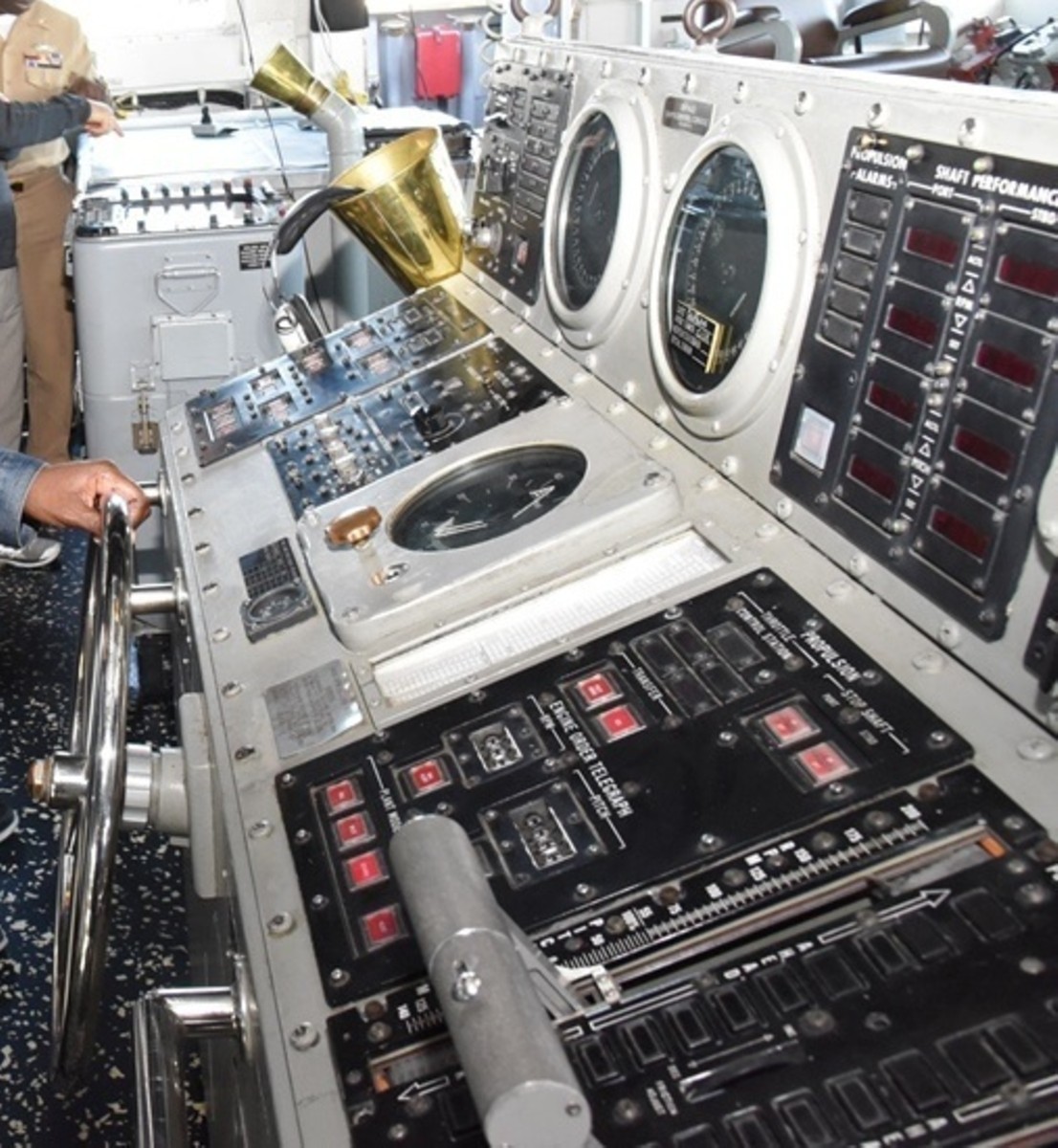 February 2018 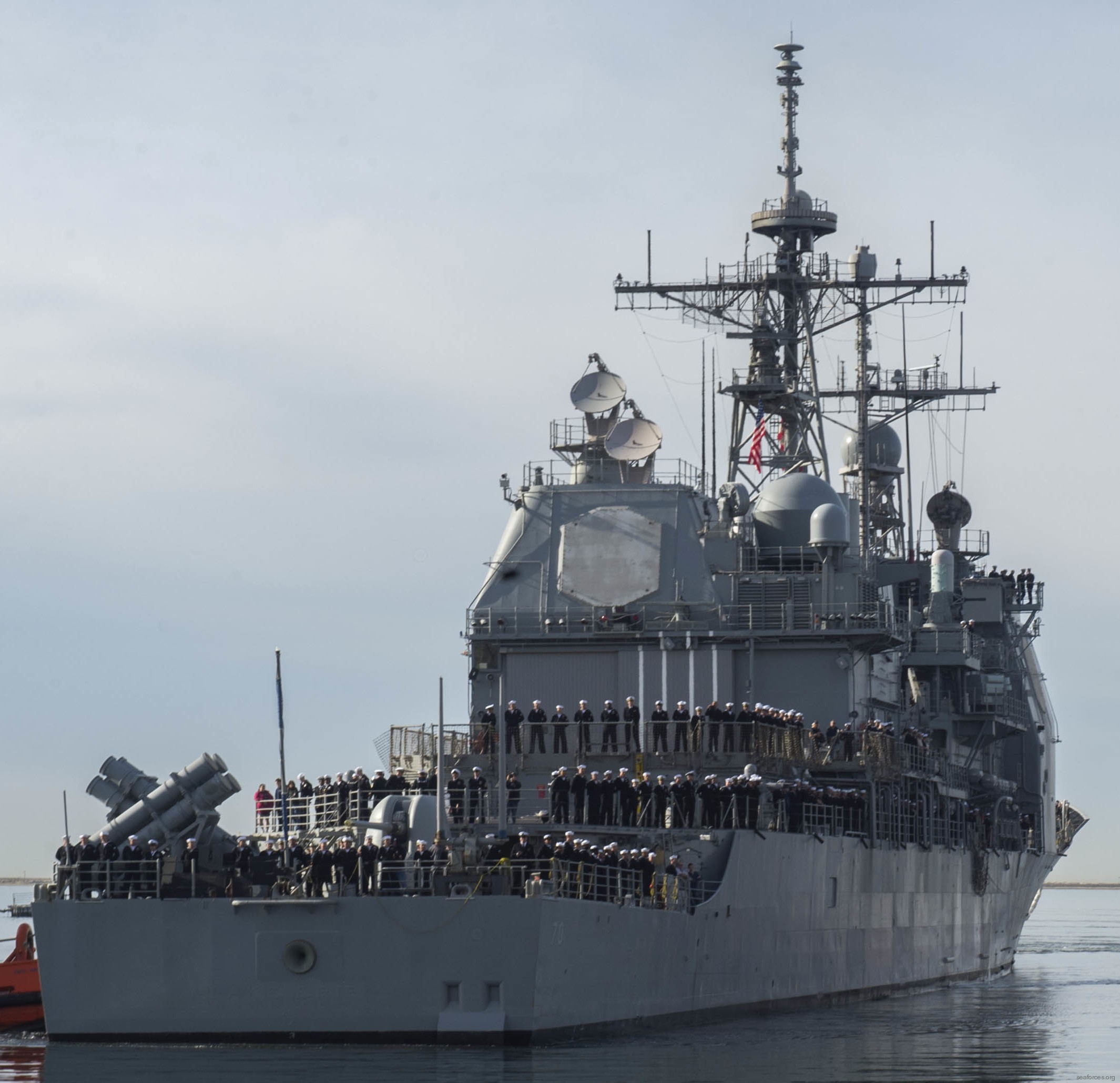 returning to Naval Base San Diego, California - December 2017 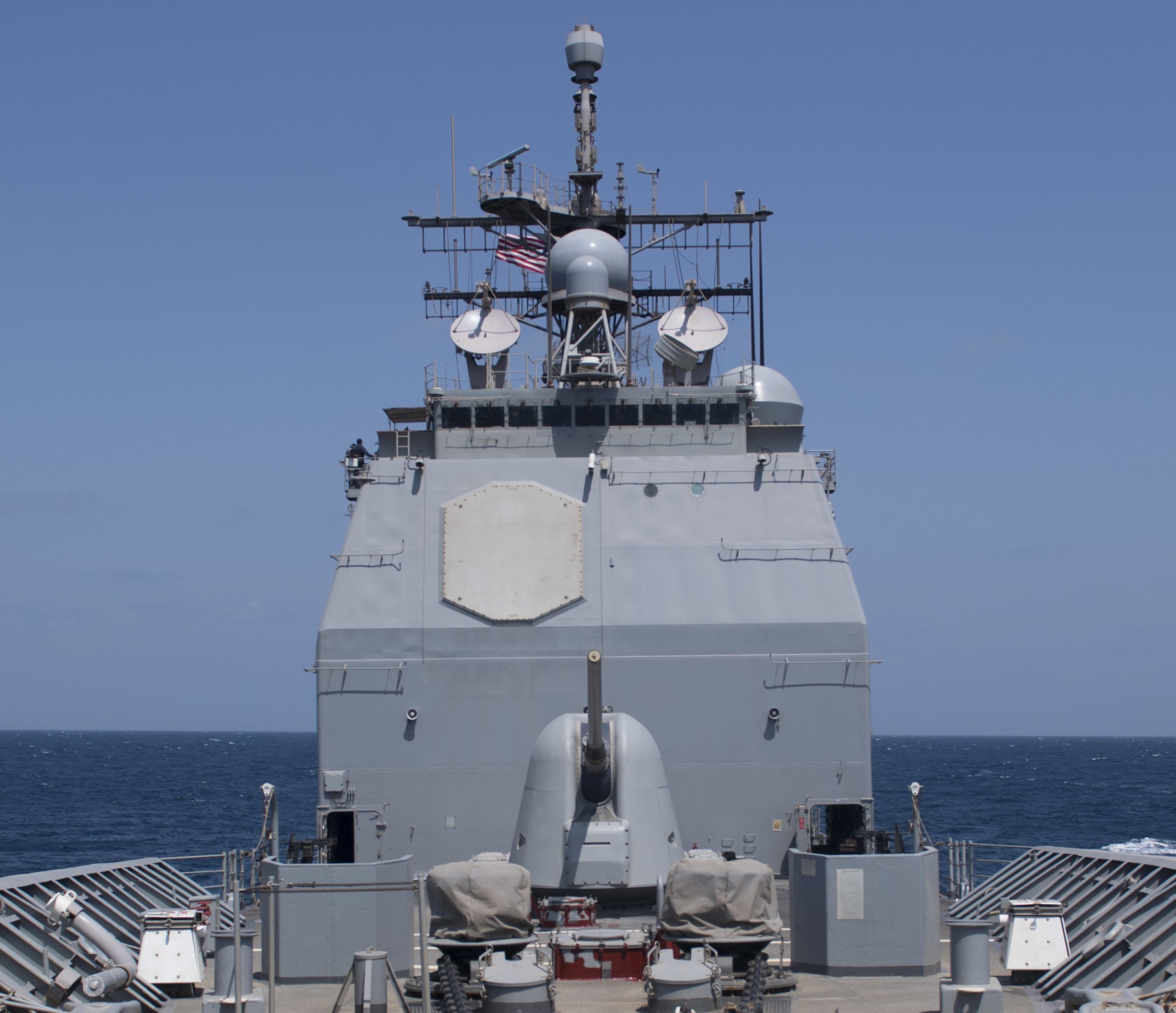 Arabian Gulf - October 2017  Arabian Gulf - October 2017  Arabian Gulf - October 2017 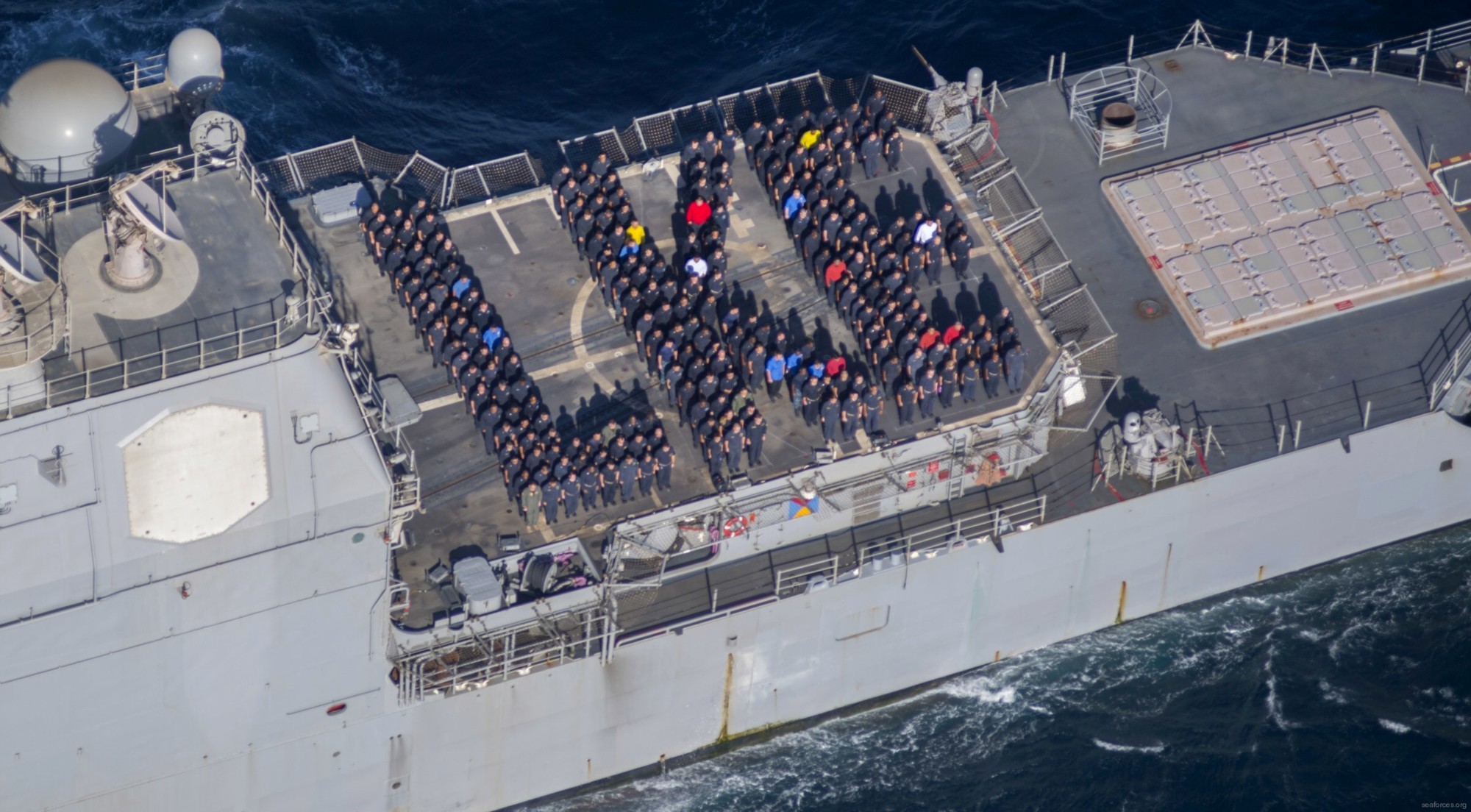 Arabian Gulf - October 2017 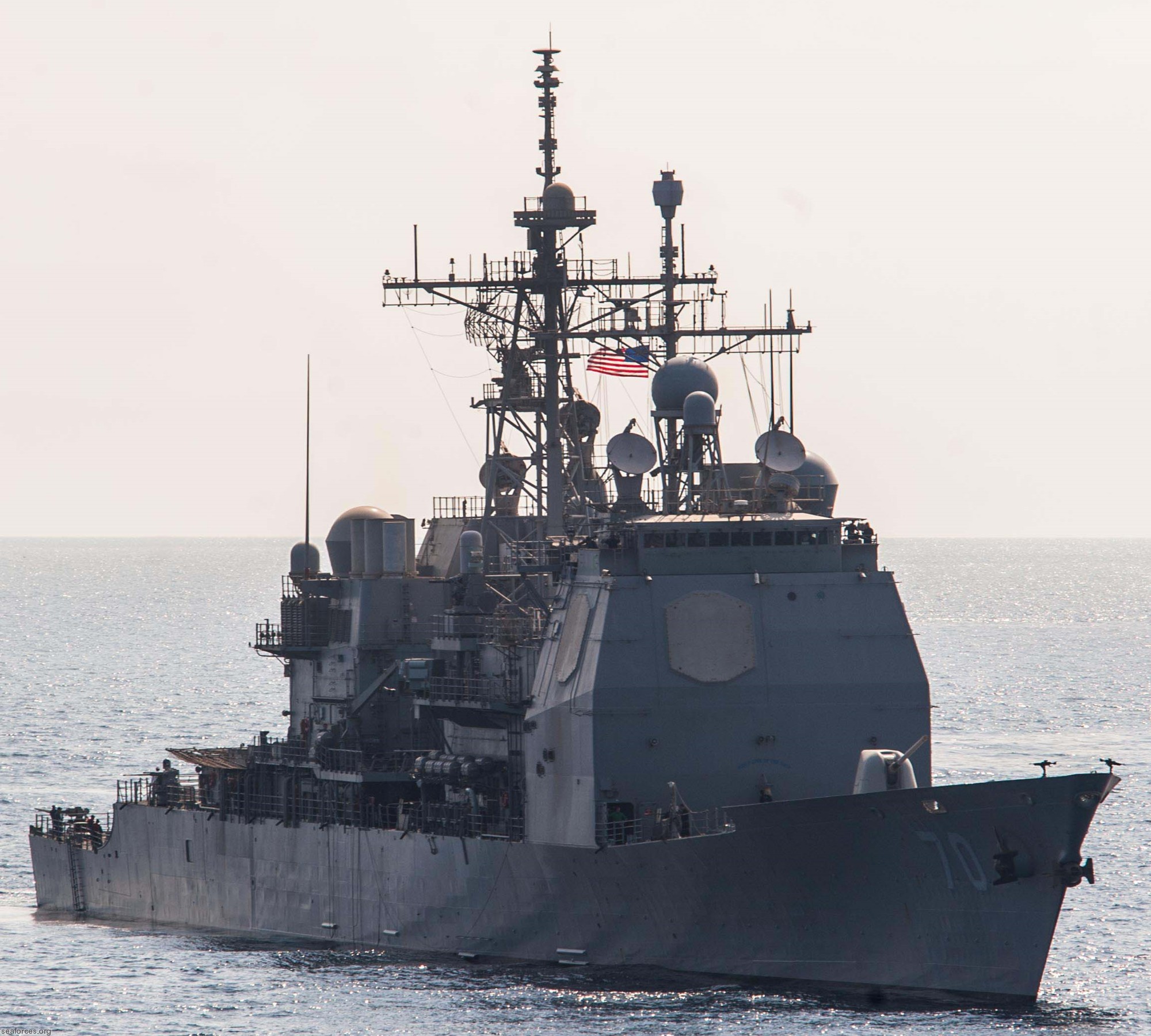 5th Fleet AOR - October 2017 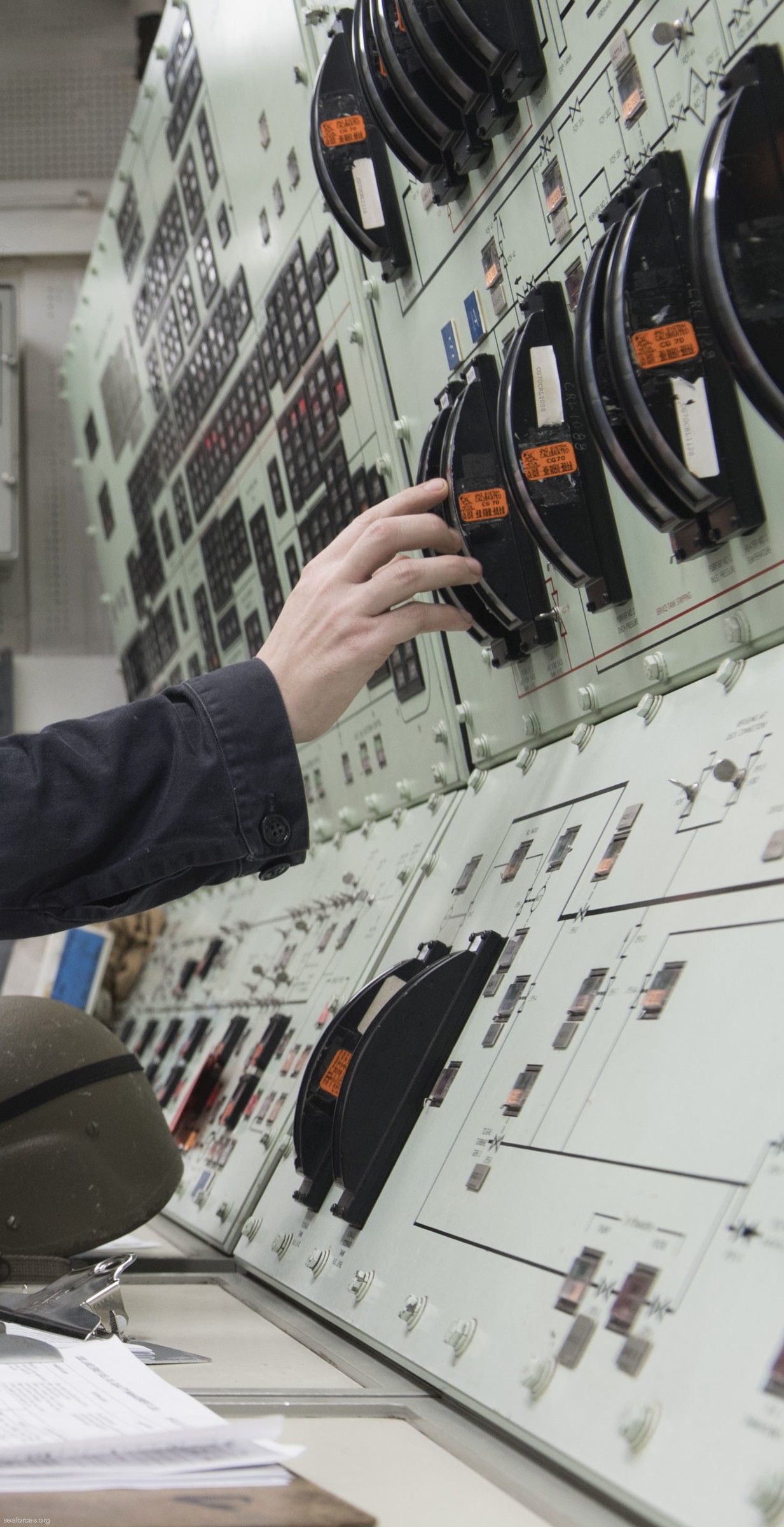 Central Control Station - 5th Fleet AOR - October 2017 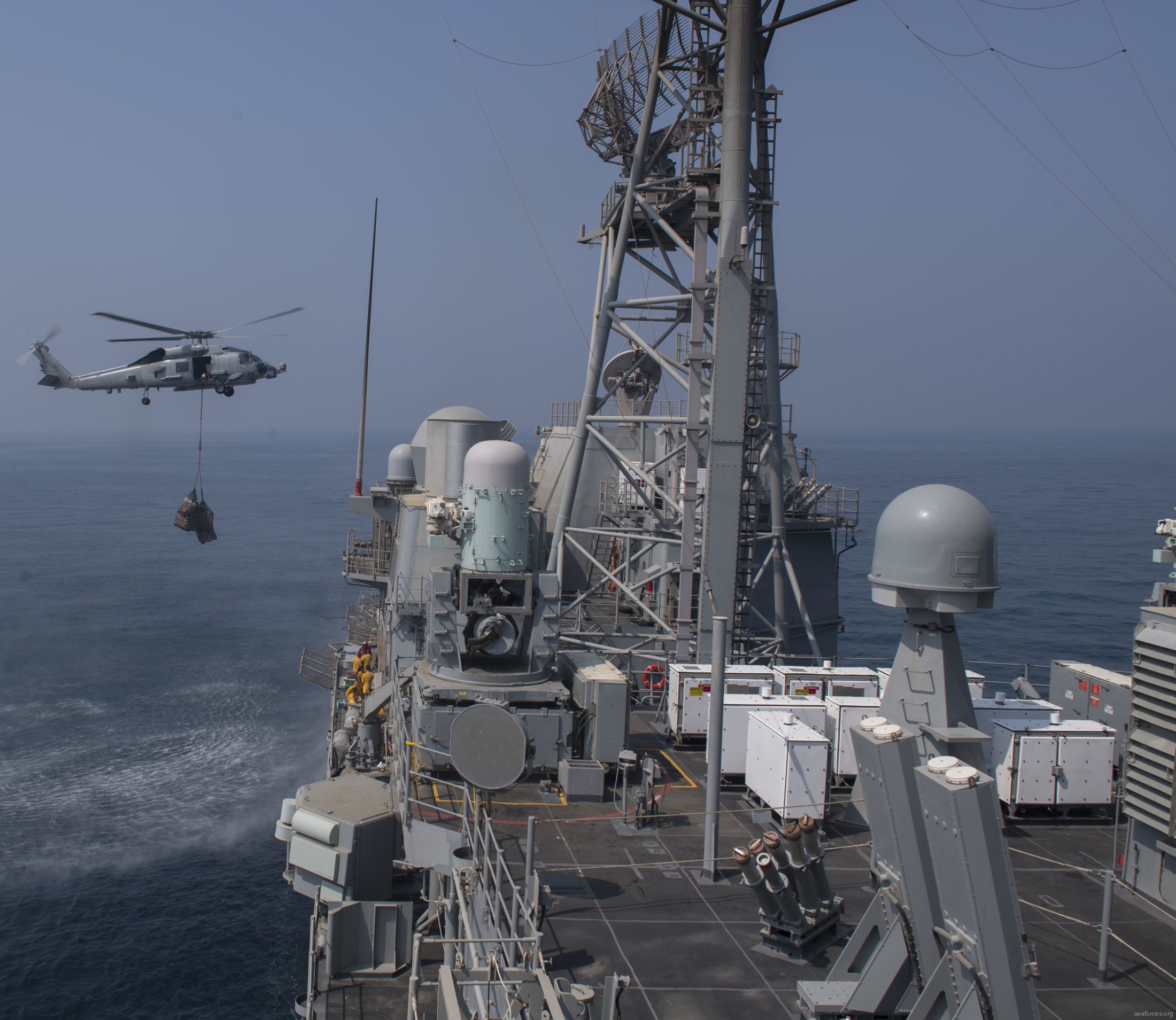 Arabian Gulf - September 2017 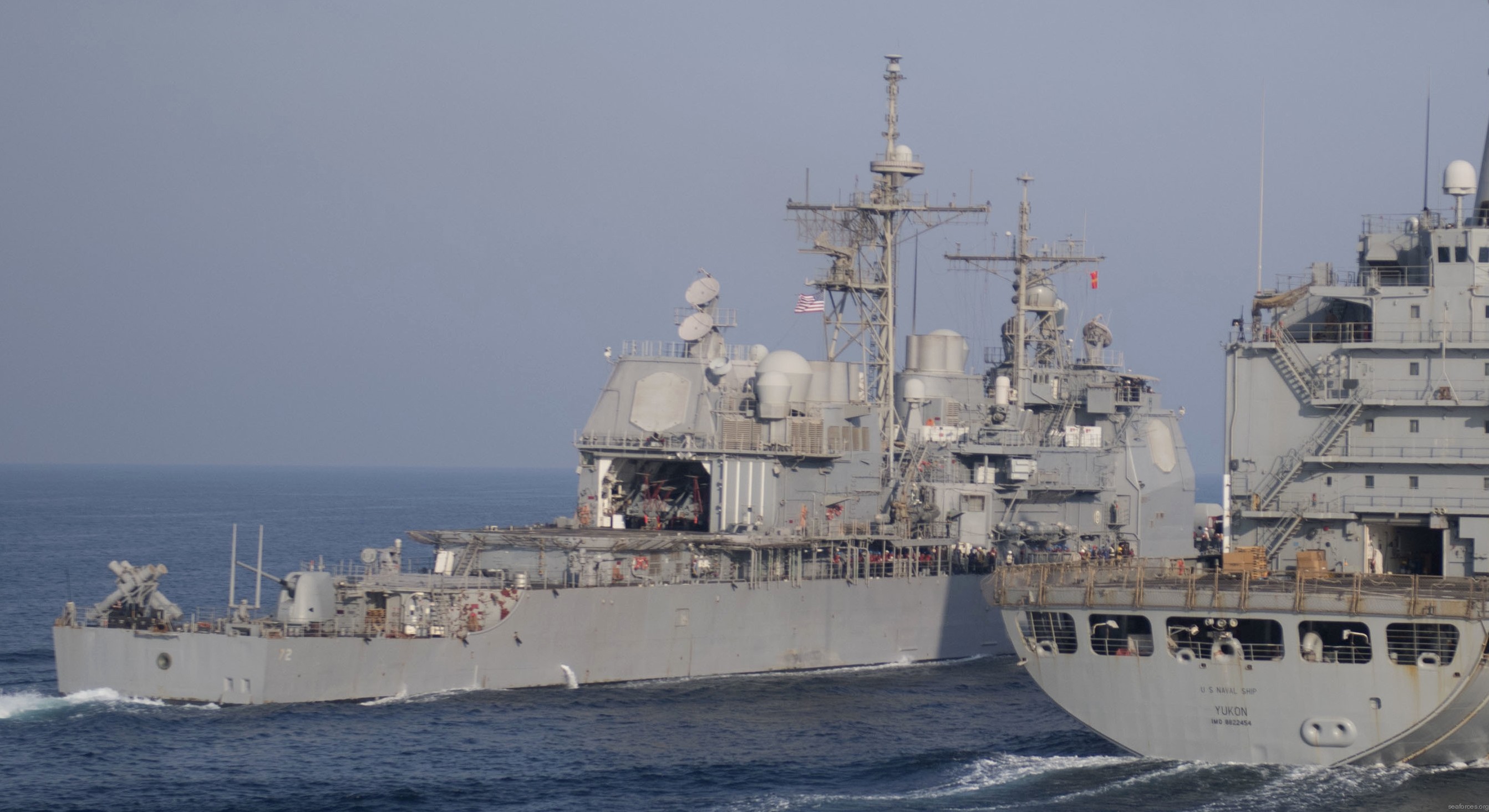 Arabian Gulf - September 2017 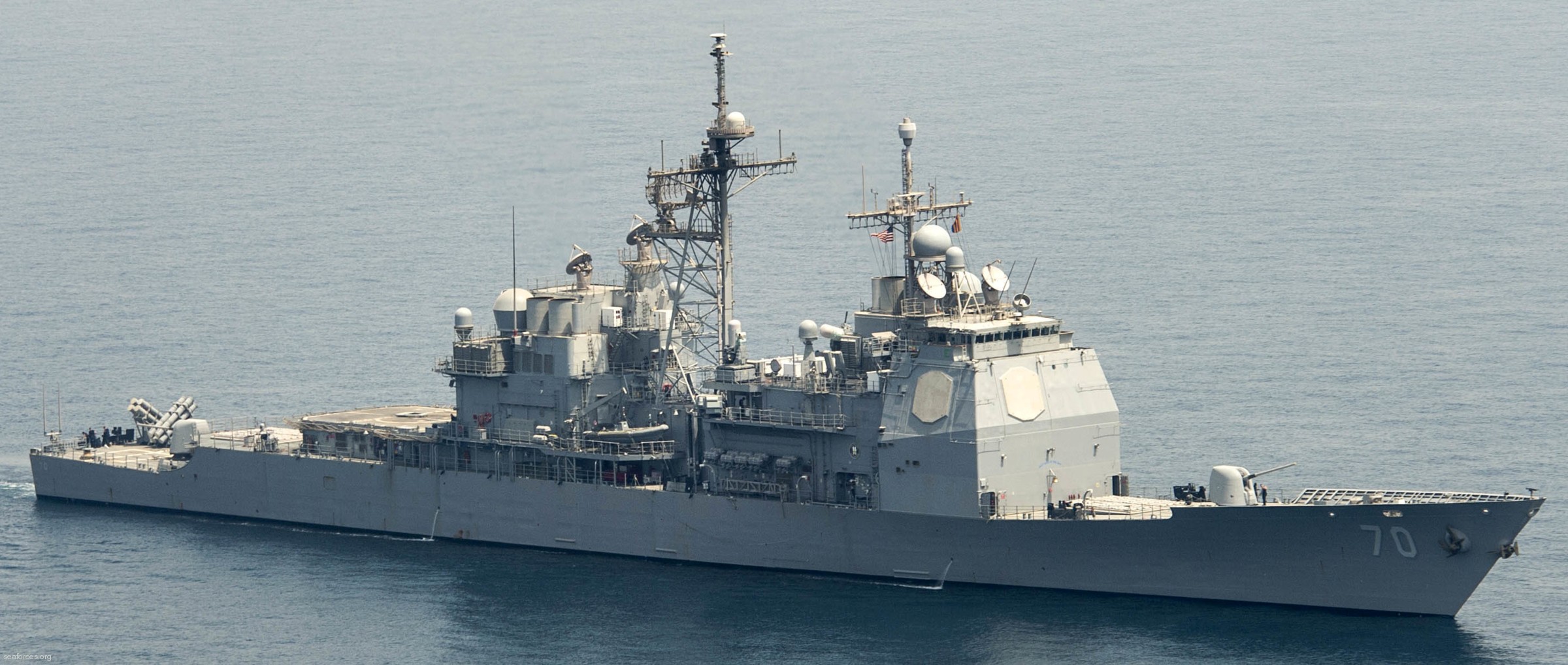 off Bahrain - July 2017 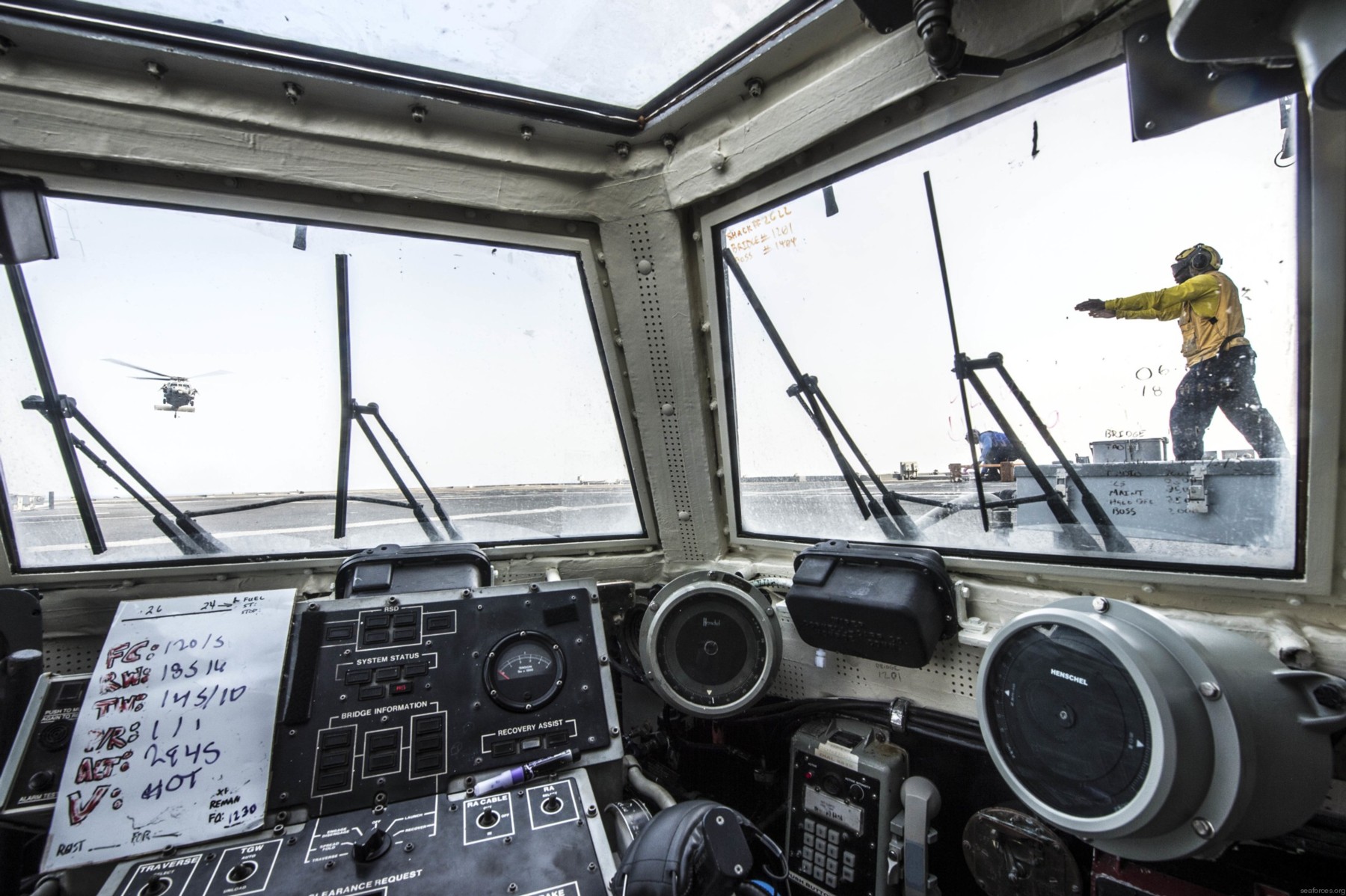 flight deck control - Arabian Gulf - July 2017 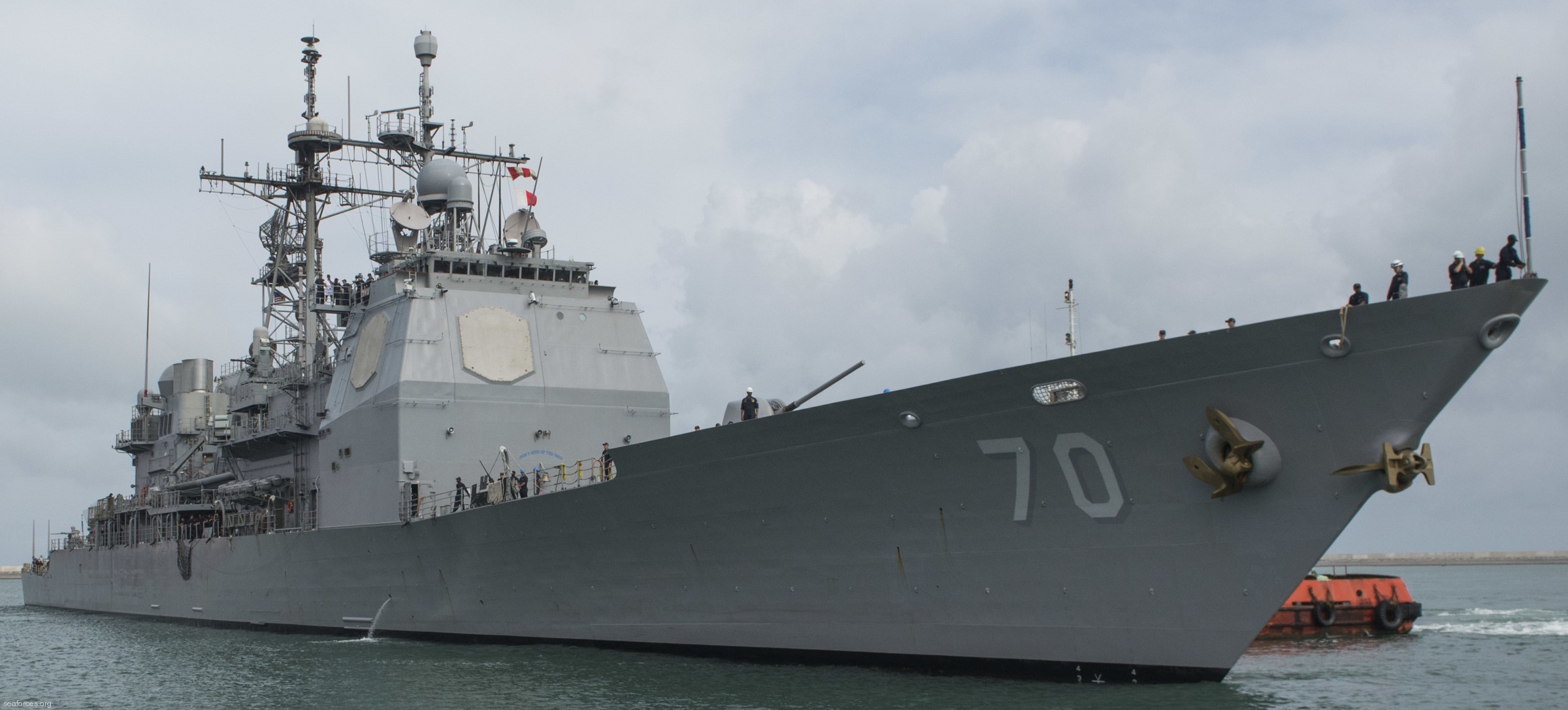 Colombo, Sri Lanka - June 2017 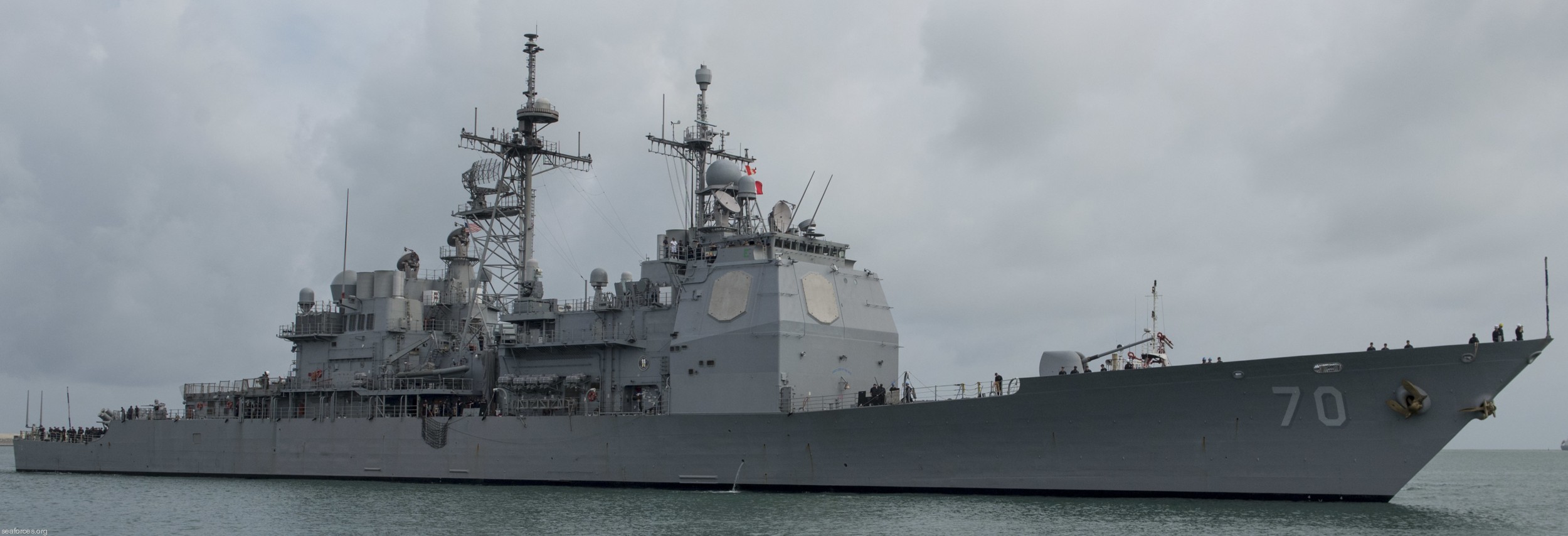 Colombo, Sri Lanka - June 2017 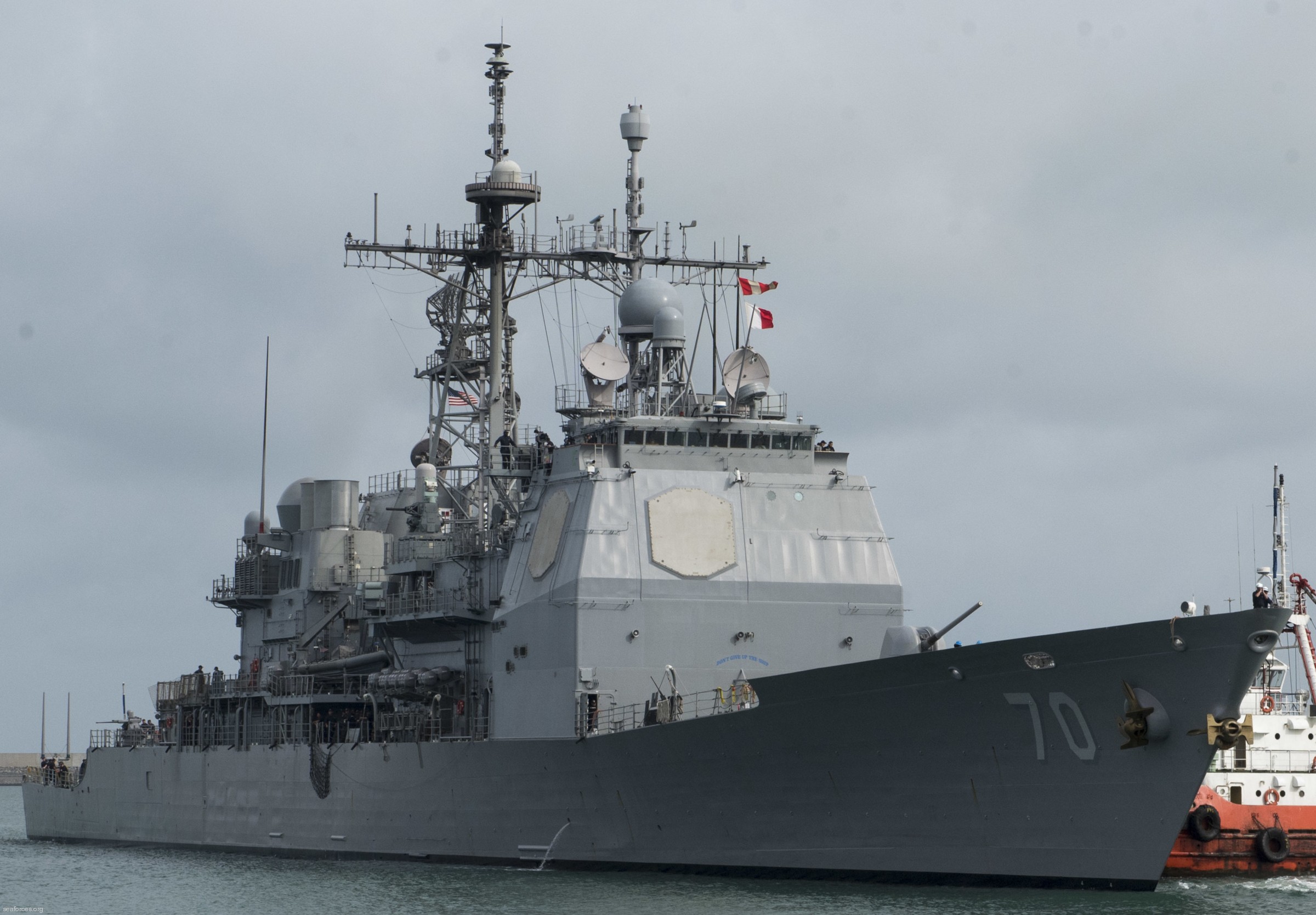 Colombo, Sri Lanka - June 2017 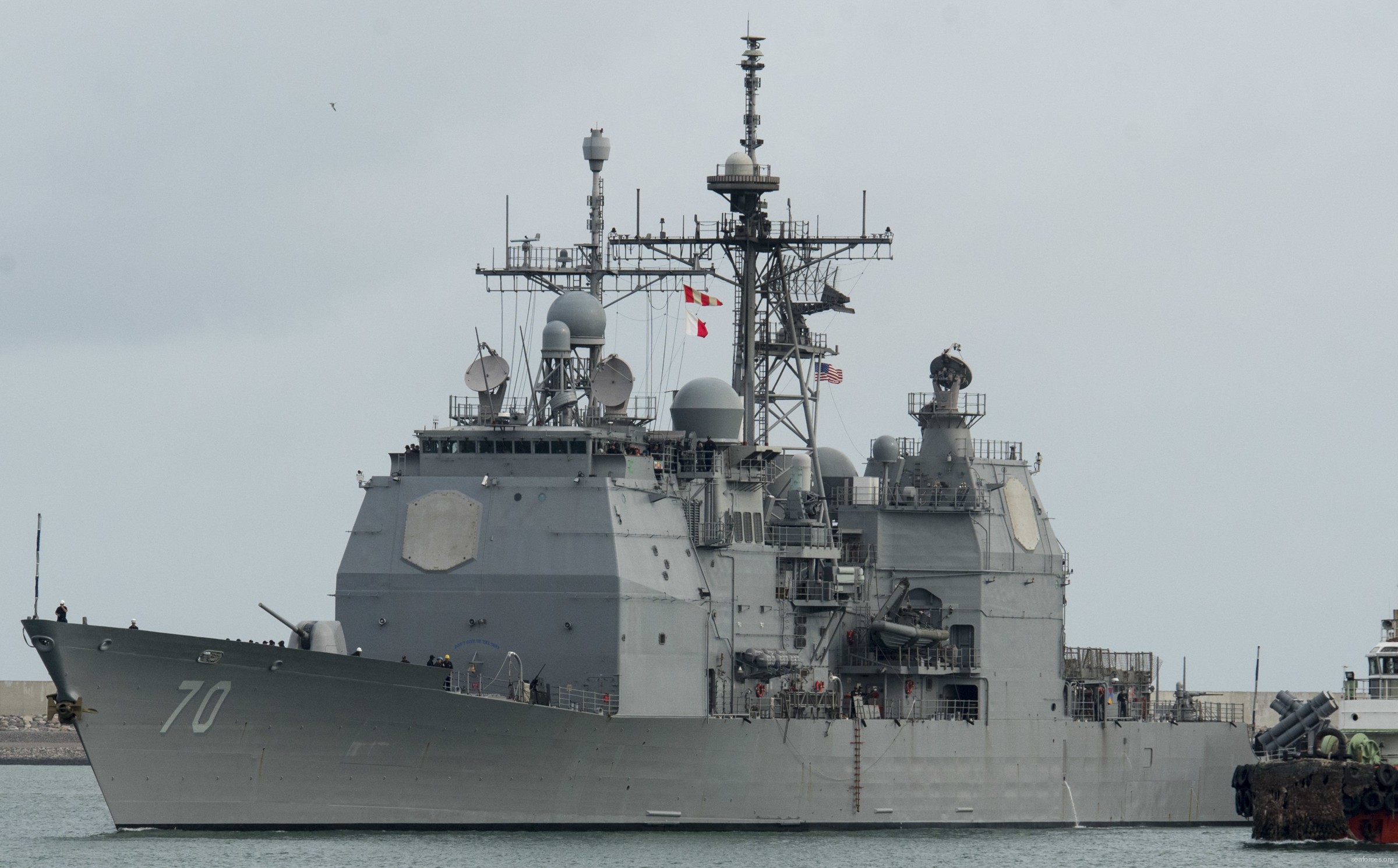 Colombo, Sri Lanka - June 2017 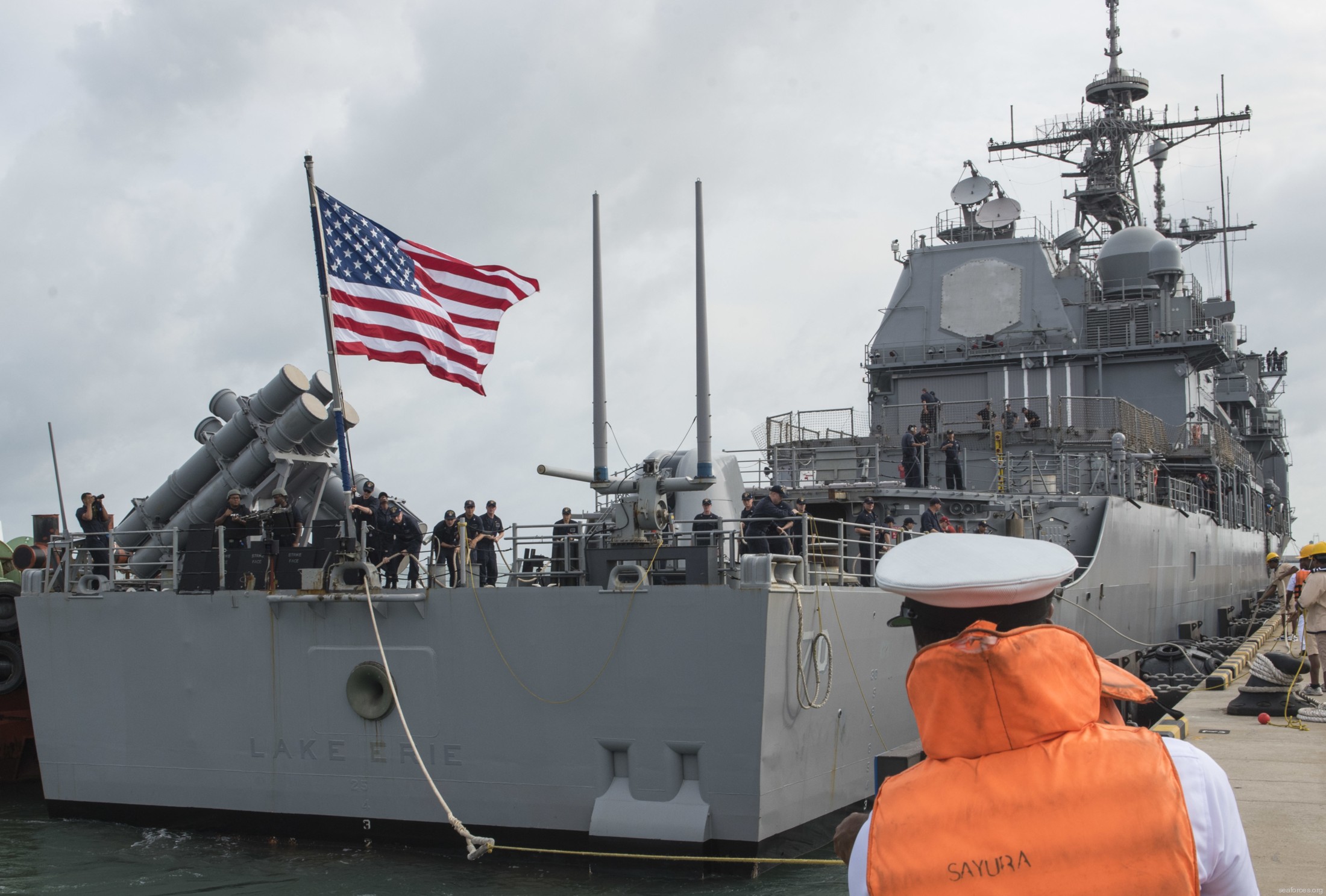 Colombo, Sri Lanka - June 2017 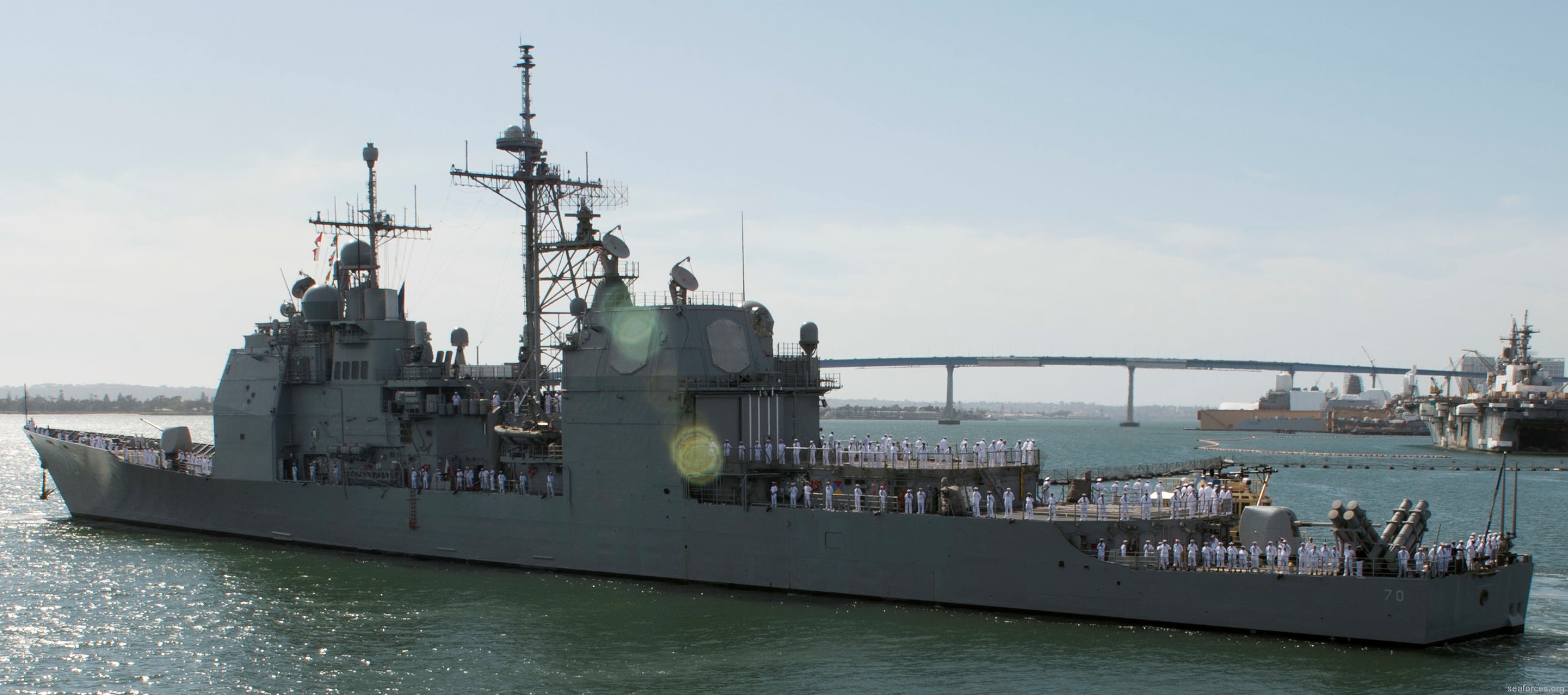 departing Naval Base San Diego, California - May 2017 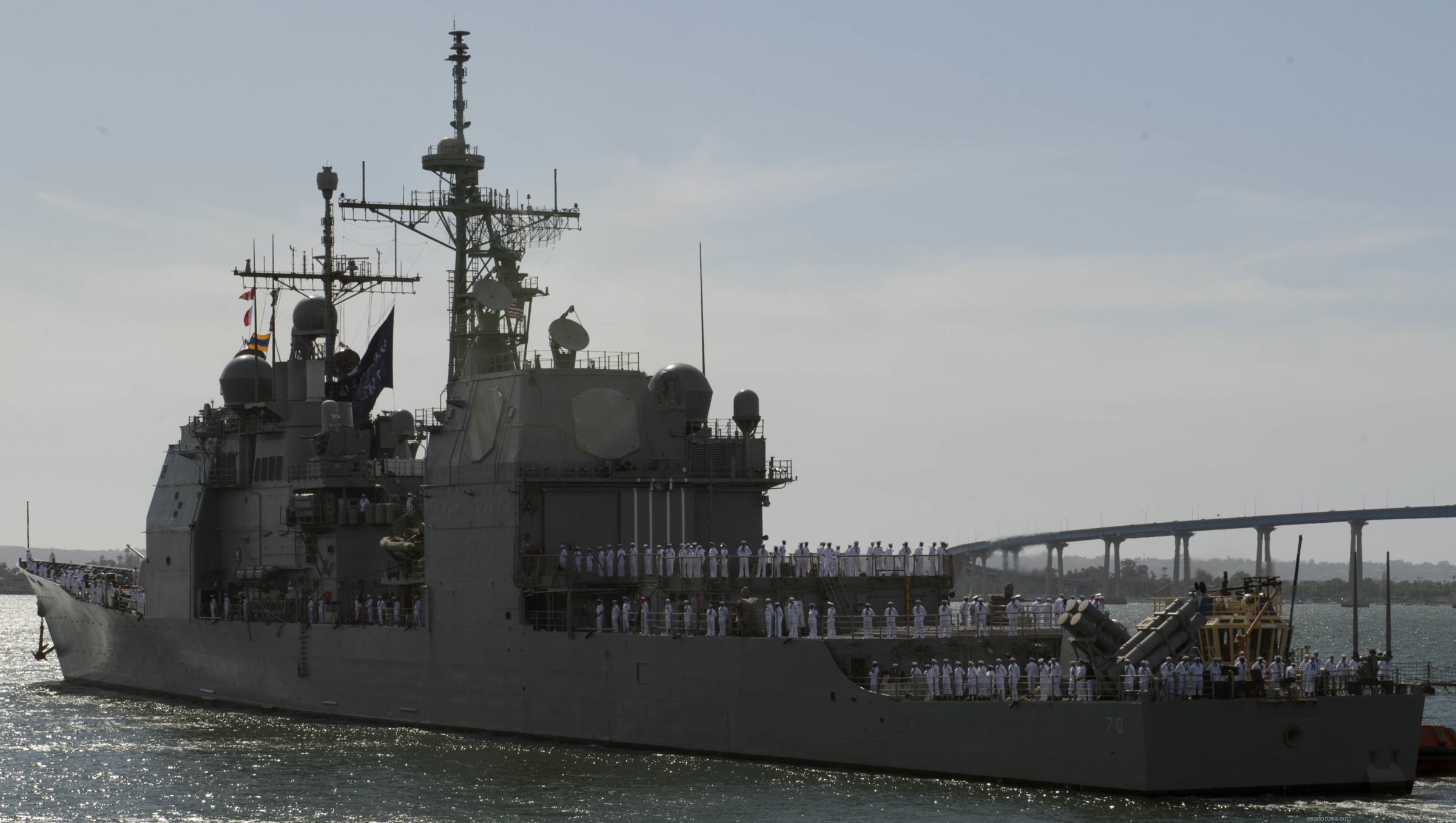 departing Naval Base San Diego, California - May 2017 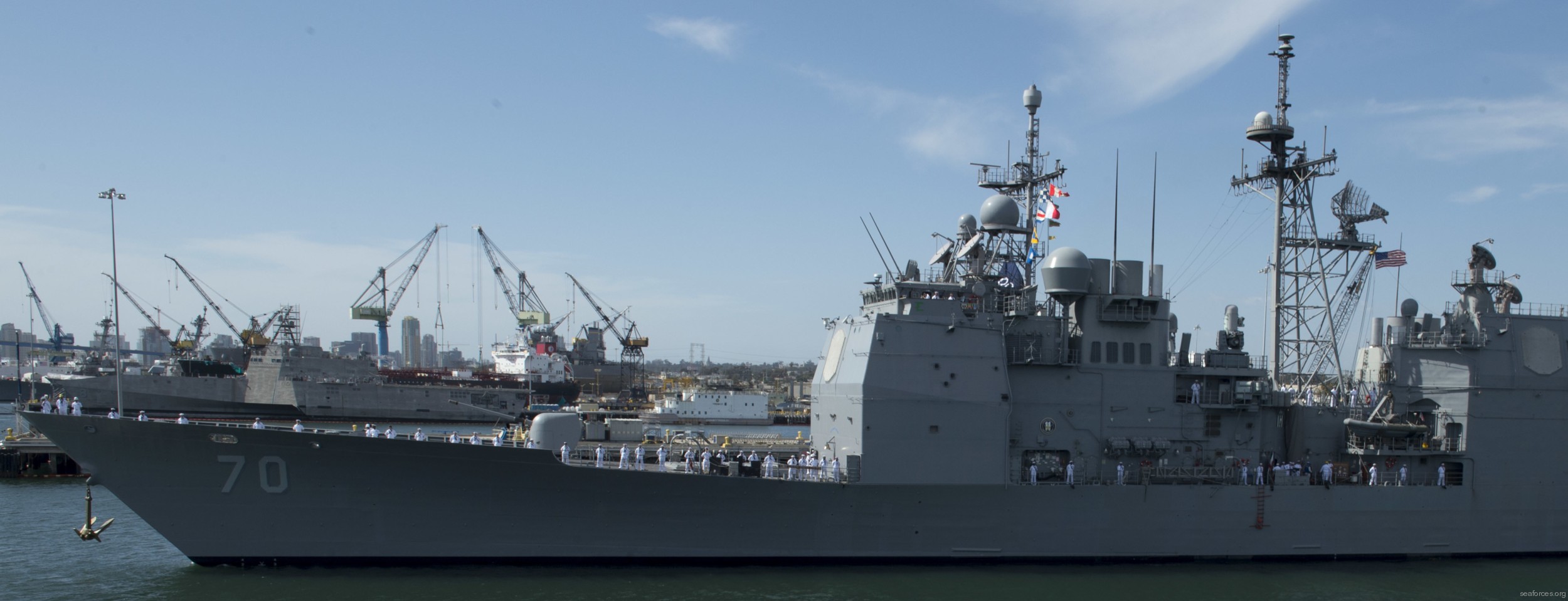 departing Naval Base San Diego, California - May 2017 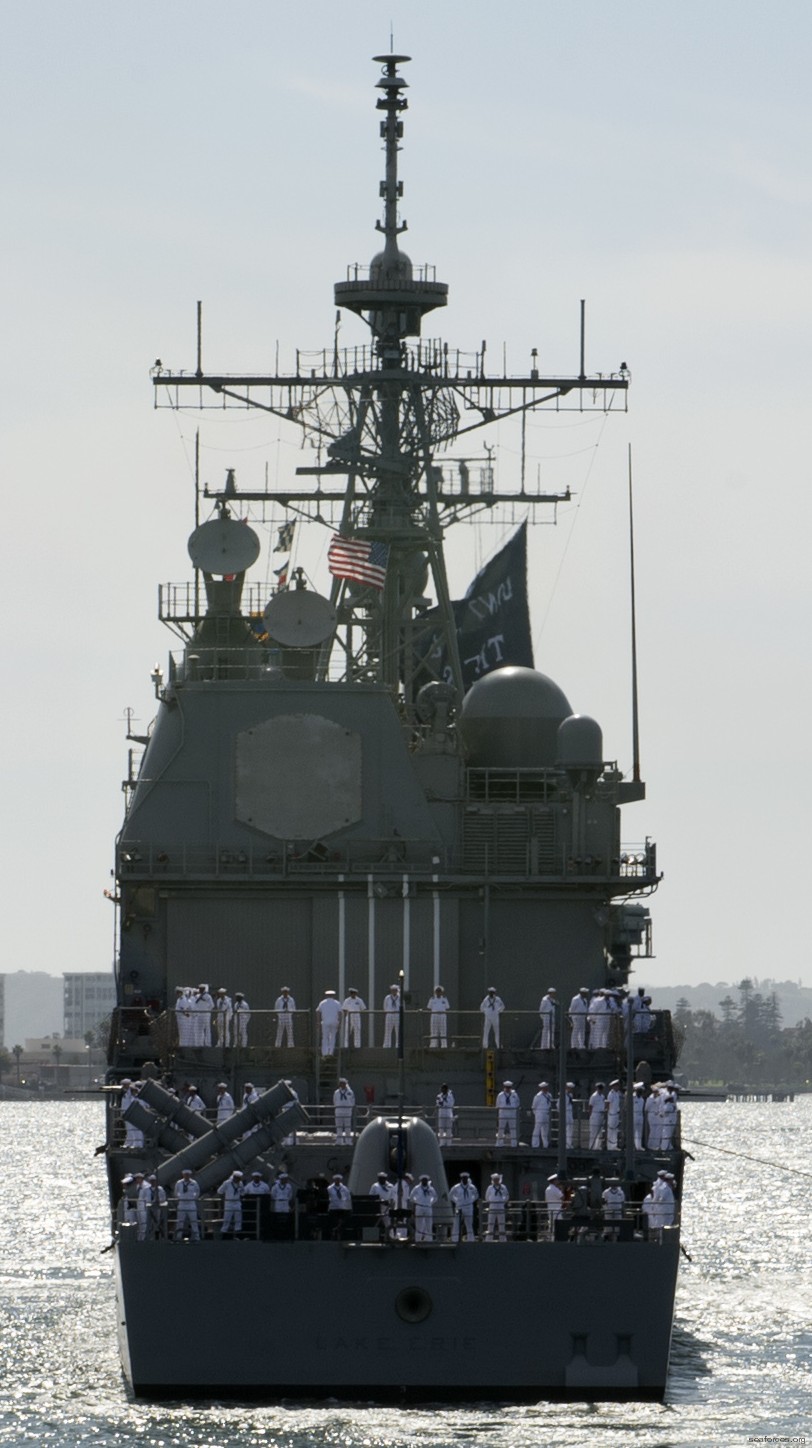 departing Naval Base San Diego, California - May 2017 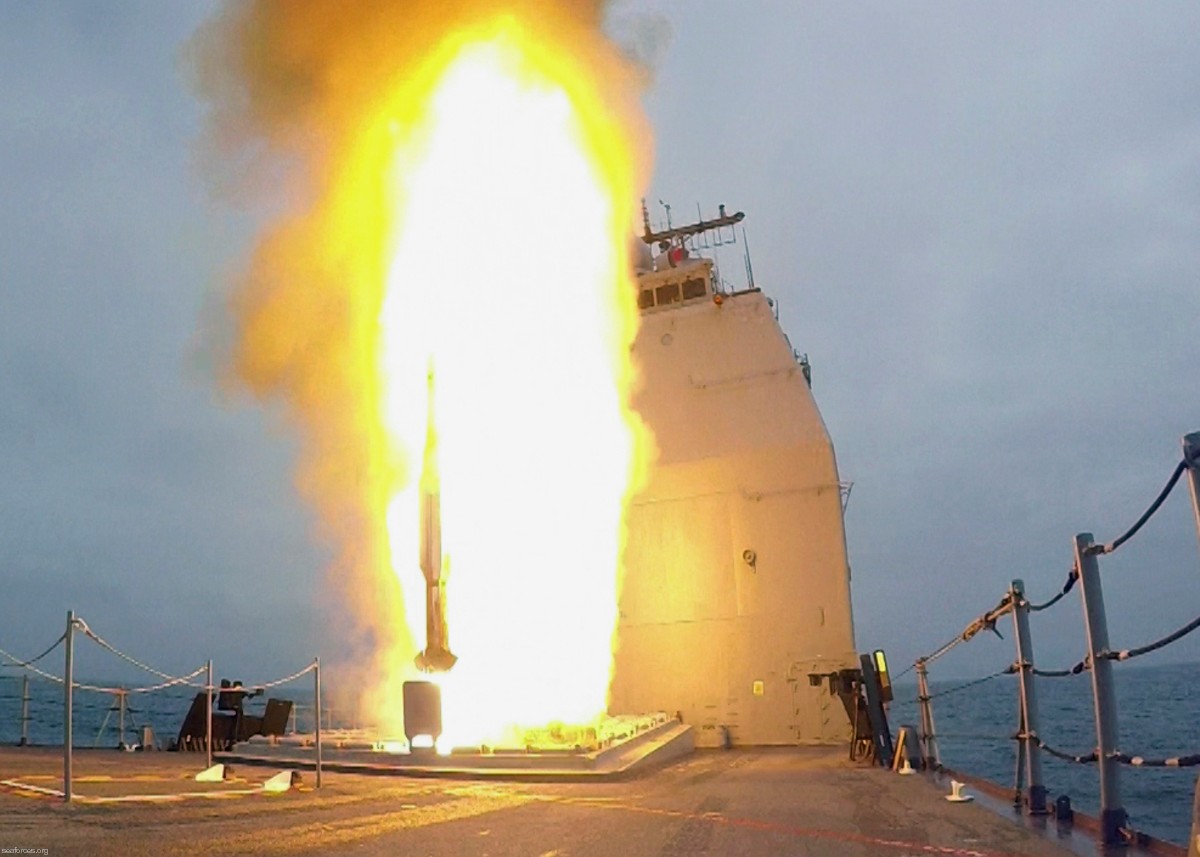 launching a Standard Missile SM-2 - Pacific Ocean - May 2017  Pacific Ocean - March 2017 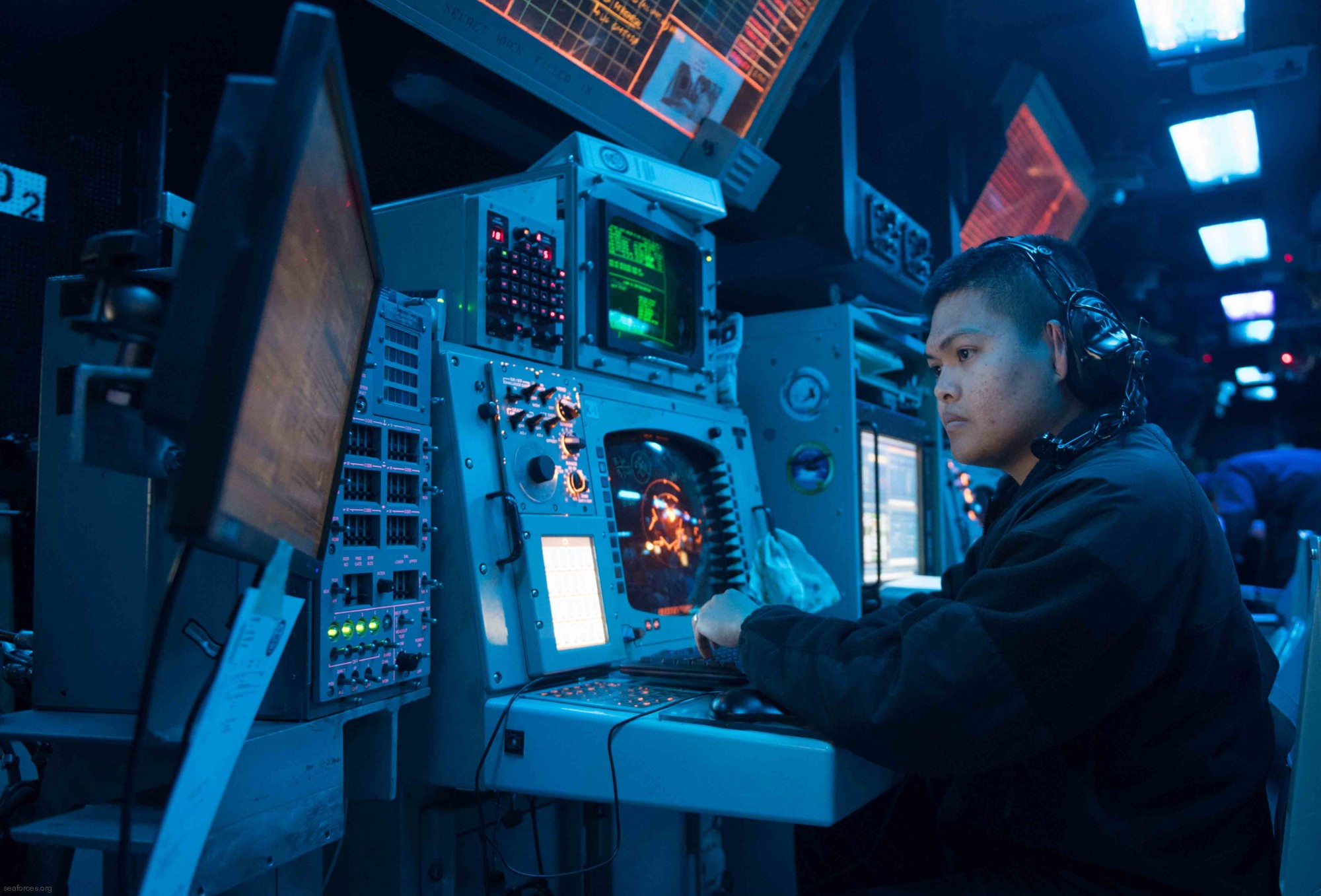 Combat Information Center (CIC) - Pacific Ocean - March 2017 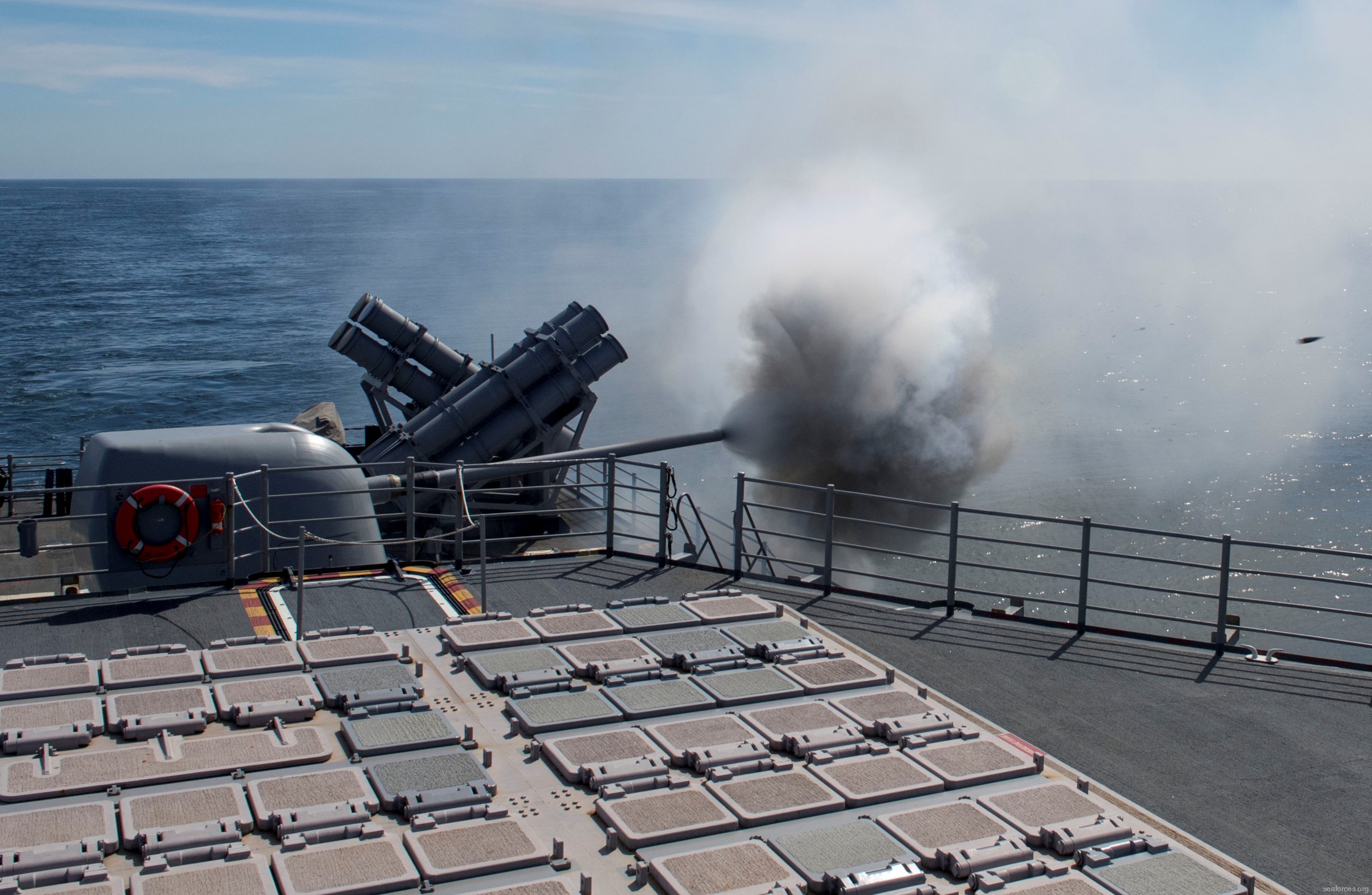 Mk-45 Mod.2 (5"/54-caliber) gun fire exercise - Pacific Ocean - March 2017 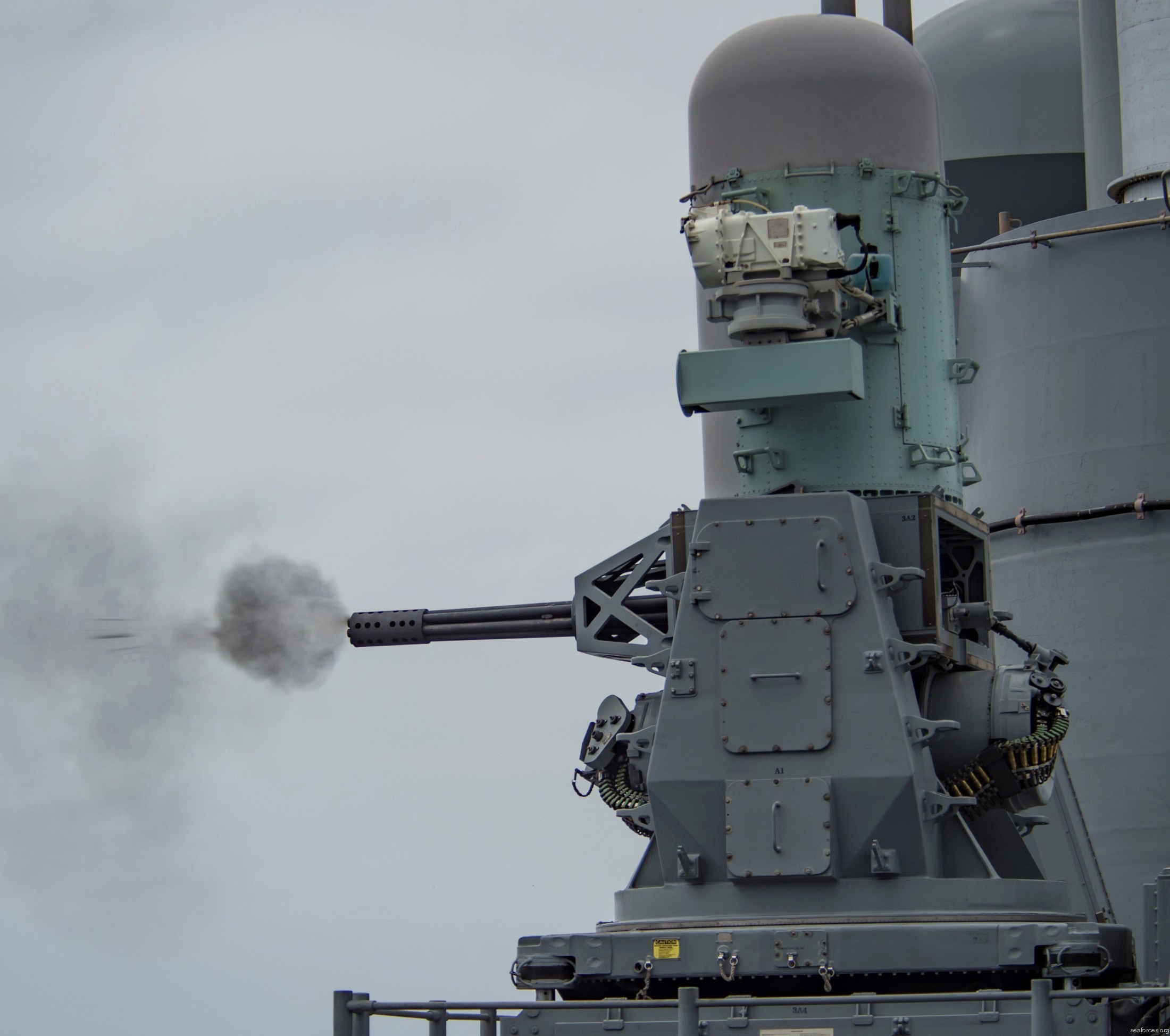 Mk-15 close-in weapon system (CIWS) fire dxercise - Pacific Ocean - August 2016 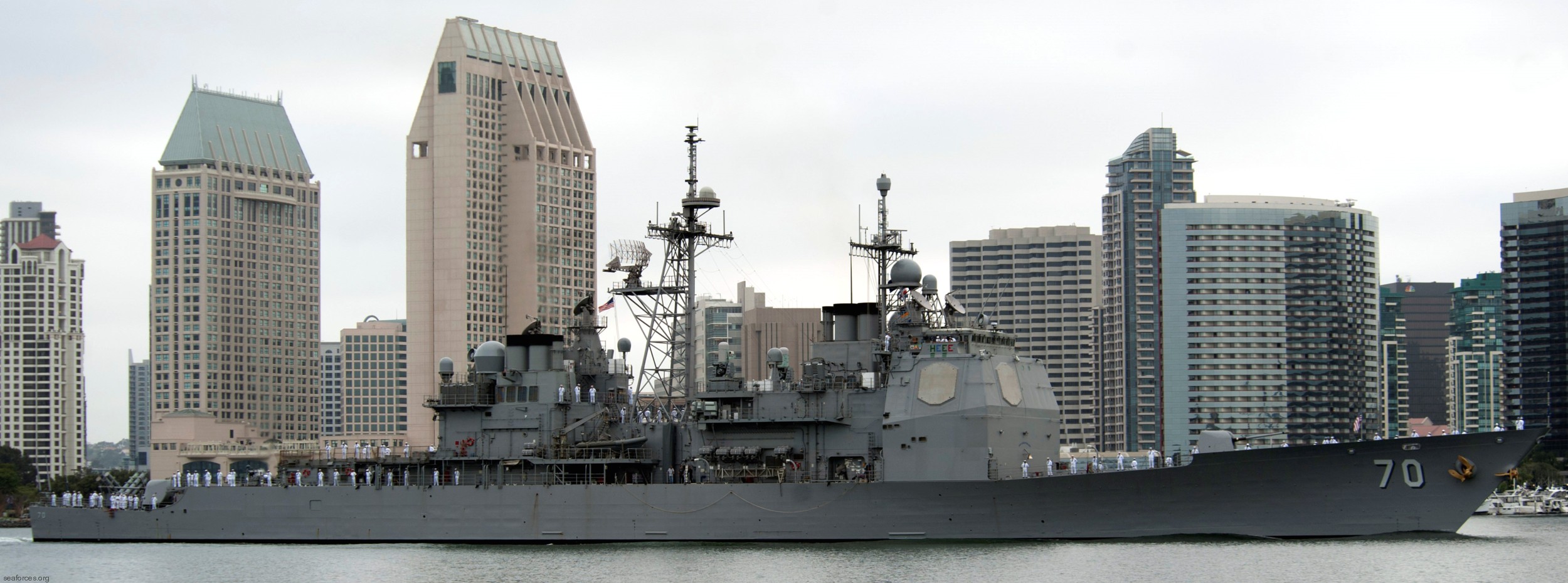 San Diego, California - September 2014 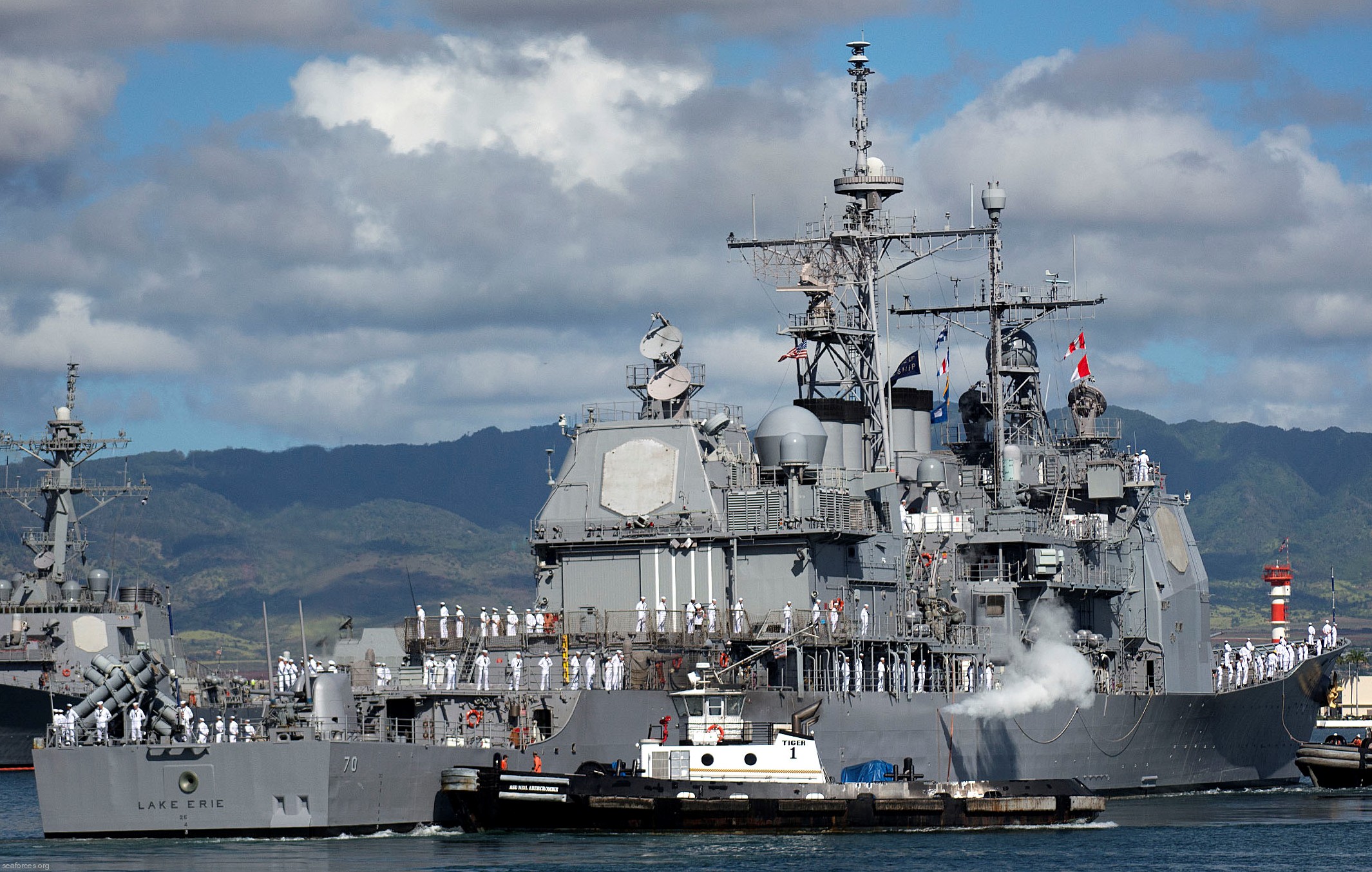 departing Joint Base Pearl Harbor-Hickam, Hawaii - August 2014 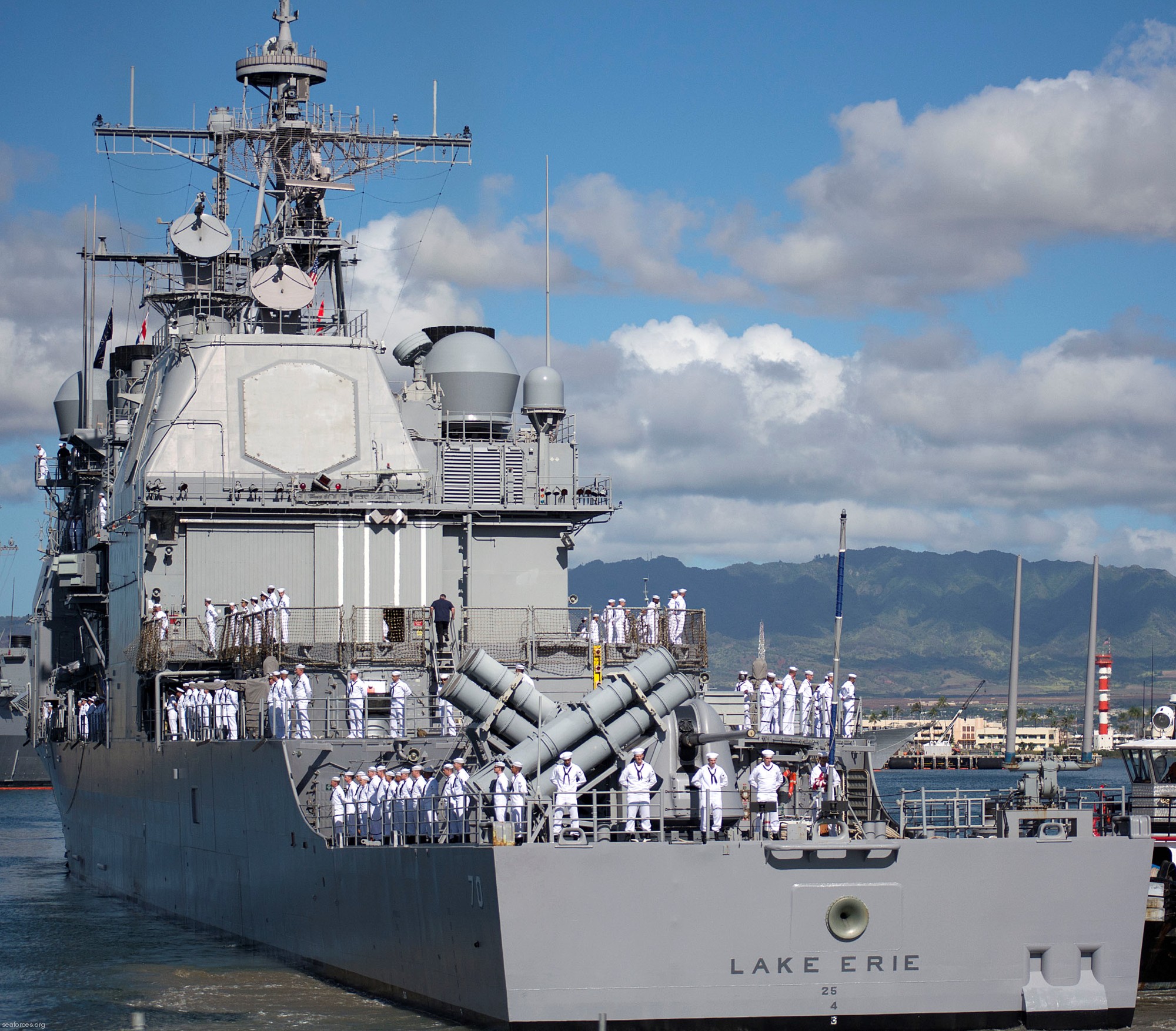 departing Joint Base Pearl Harbor-Hickam, Hawaii - August 2014 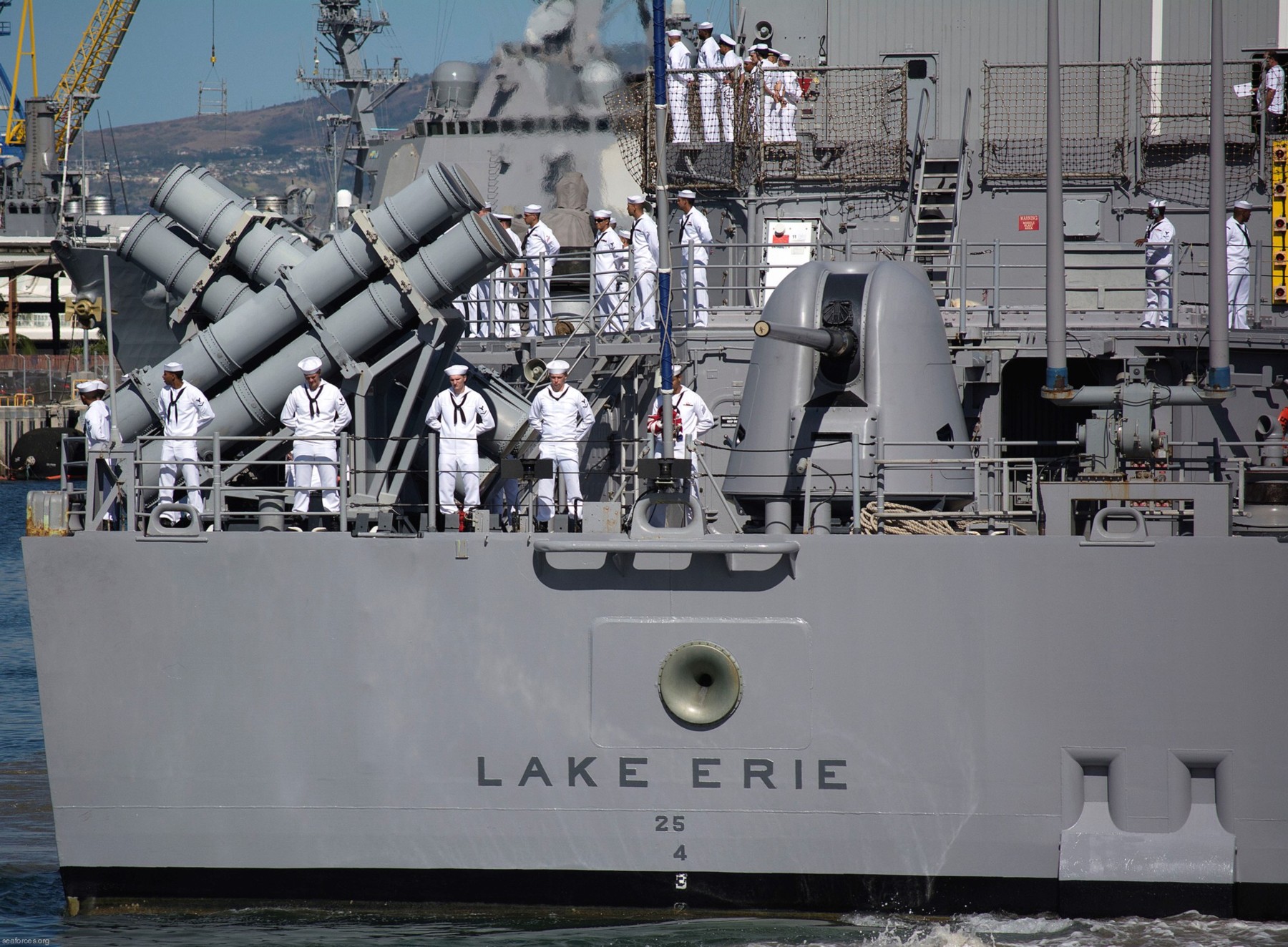 departing Joint Base Pearl Harbor-Hickam, Hawaii - August 2014 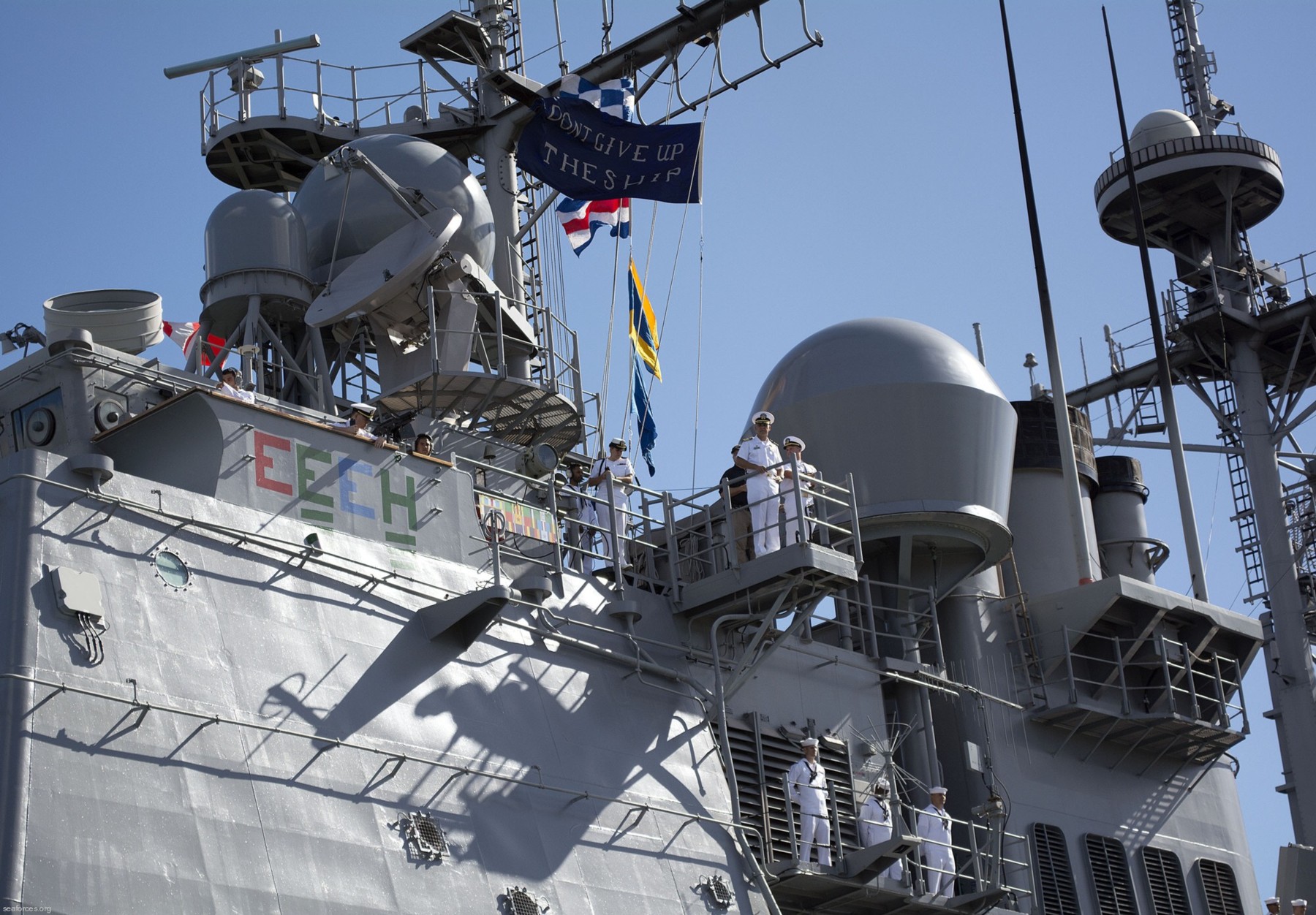 departing Joint Base Pearl Harbor-Hickam, Hawaii - August 2014 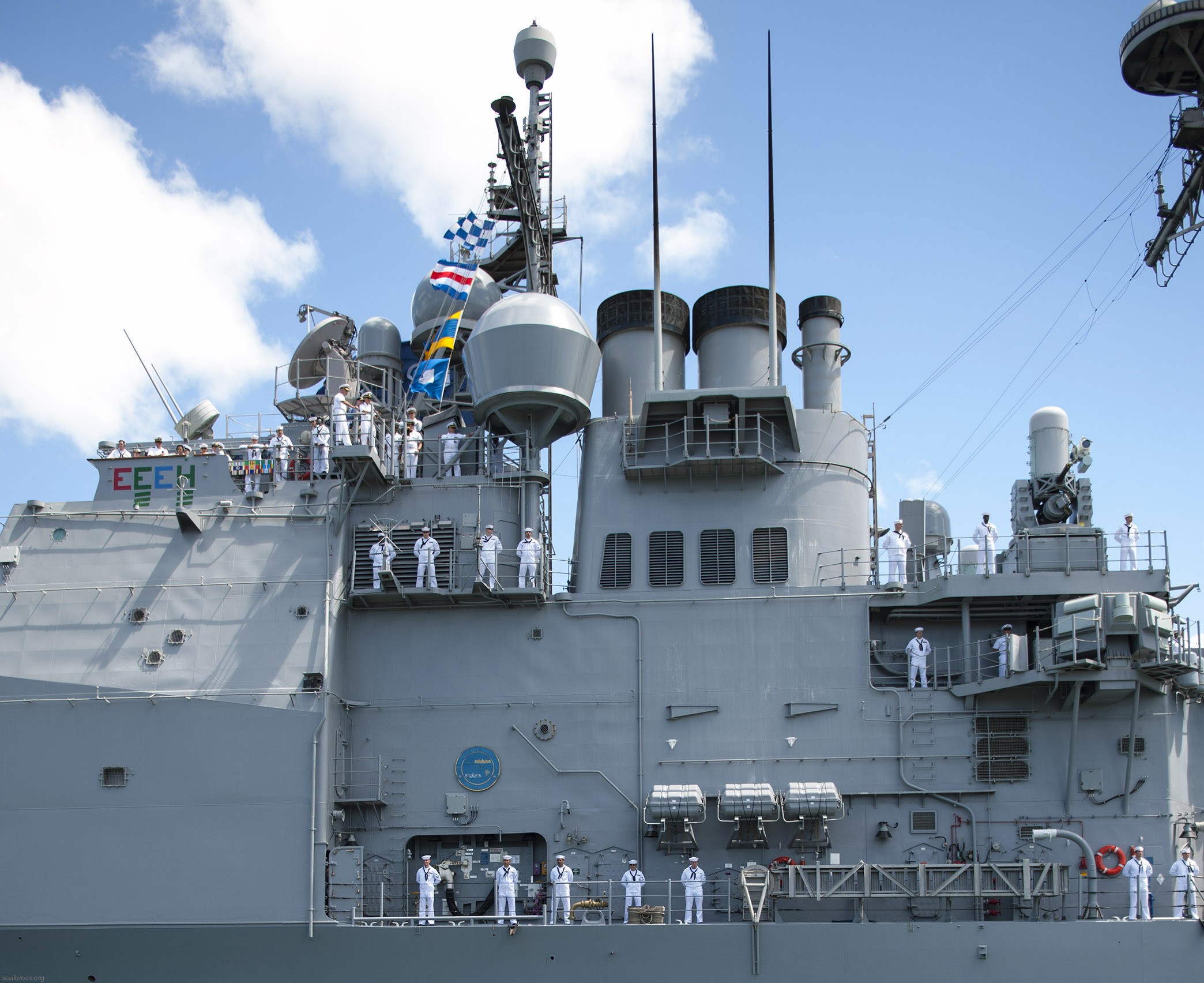 returning to Joint Base Pearl Harbor-Hickam, Hawaii - June 2014 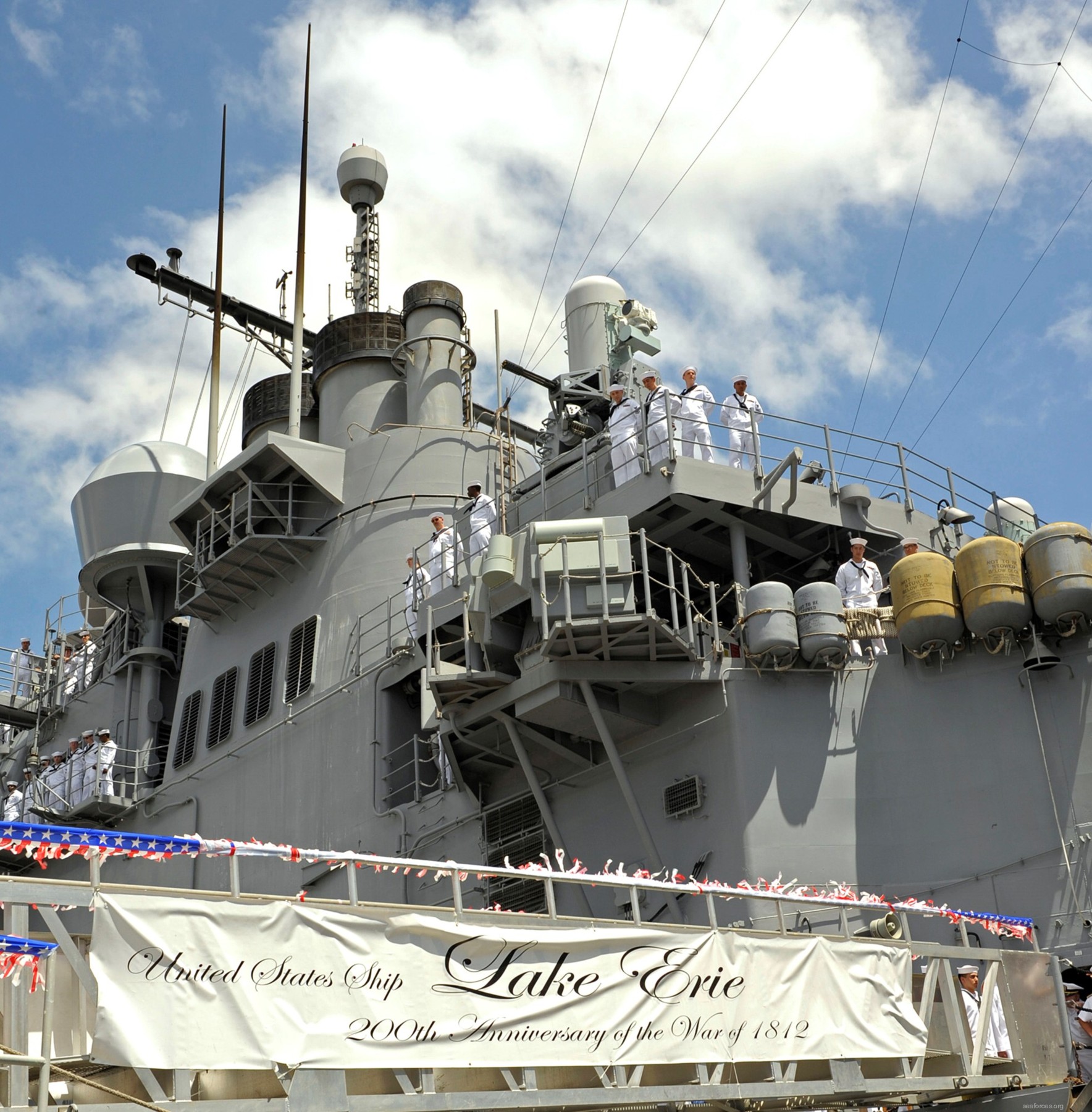 returning to Joint Base Pearl Harbor-Hickam, Hawaii - June 2014 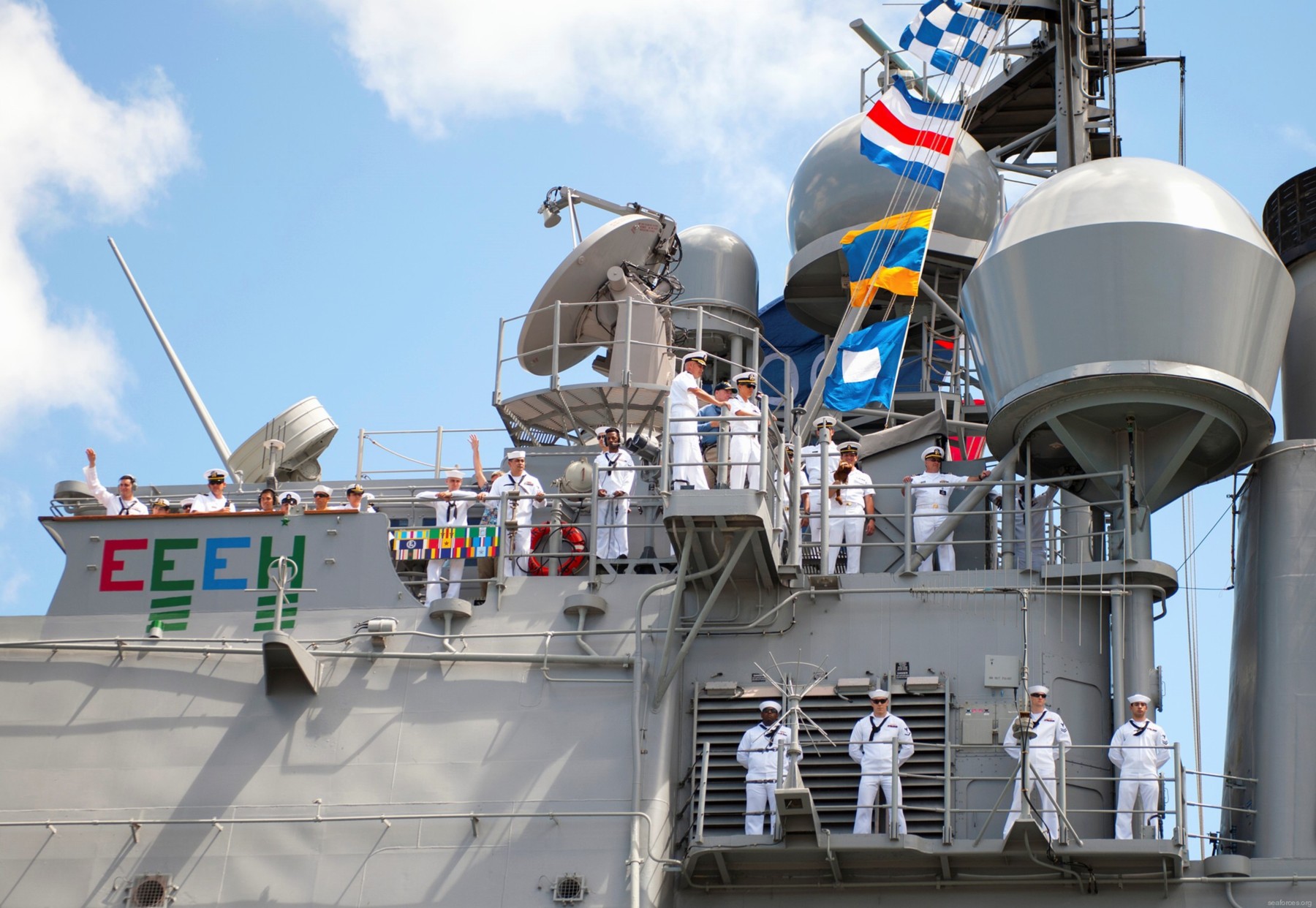 returning to Joint Base Pearl Harbor-Hickam, Hawaii - June 2014 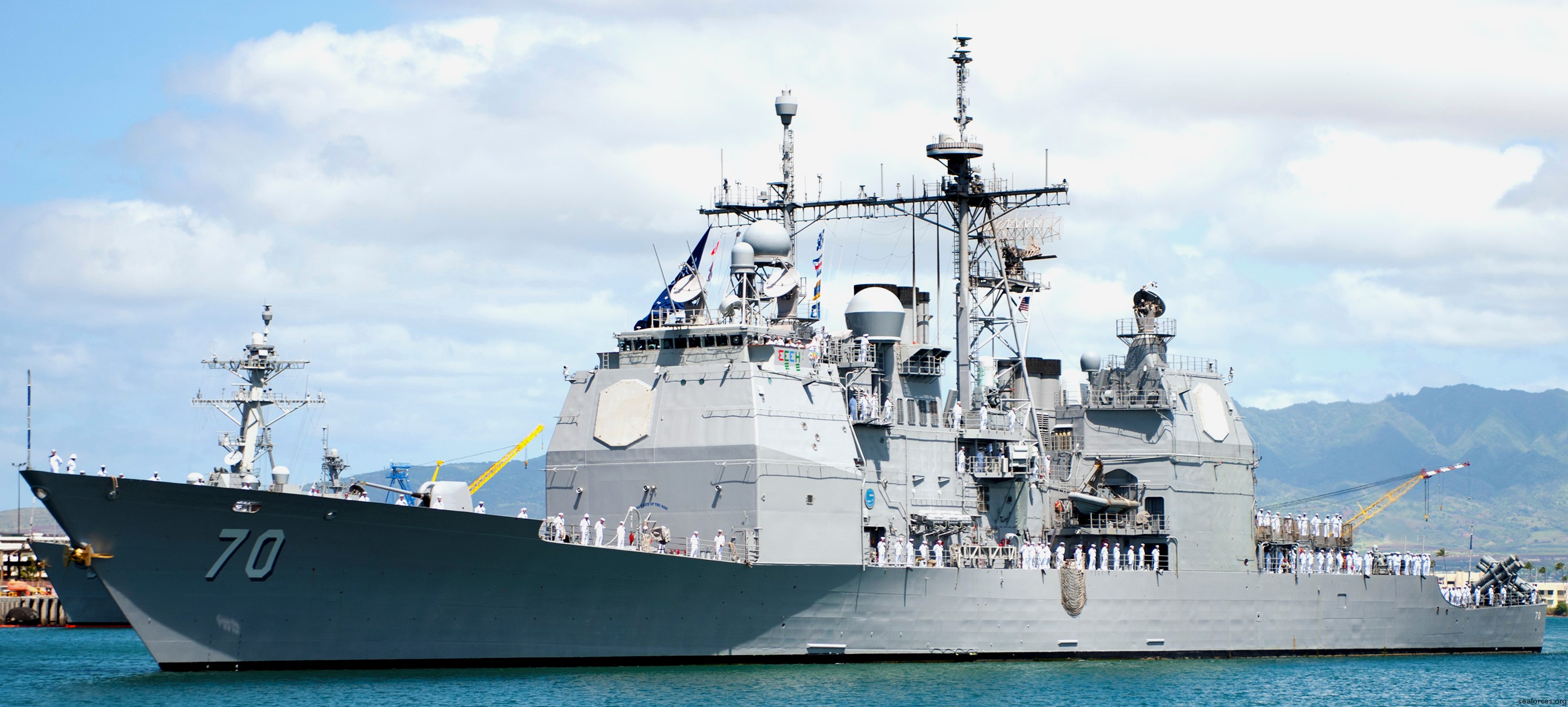 returning to Joint Base Pearl Harbor-Hickam, Hawaii - June 2014  returning to Joint Base Pearl Harbor-Hickam, Hawaii - June 2014 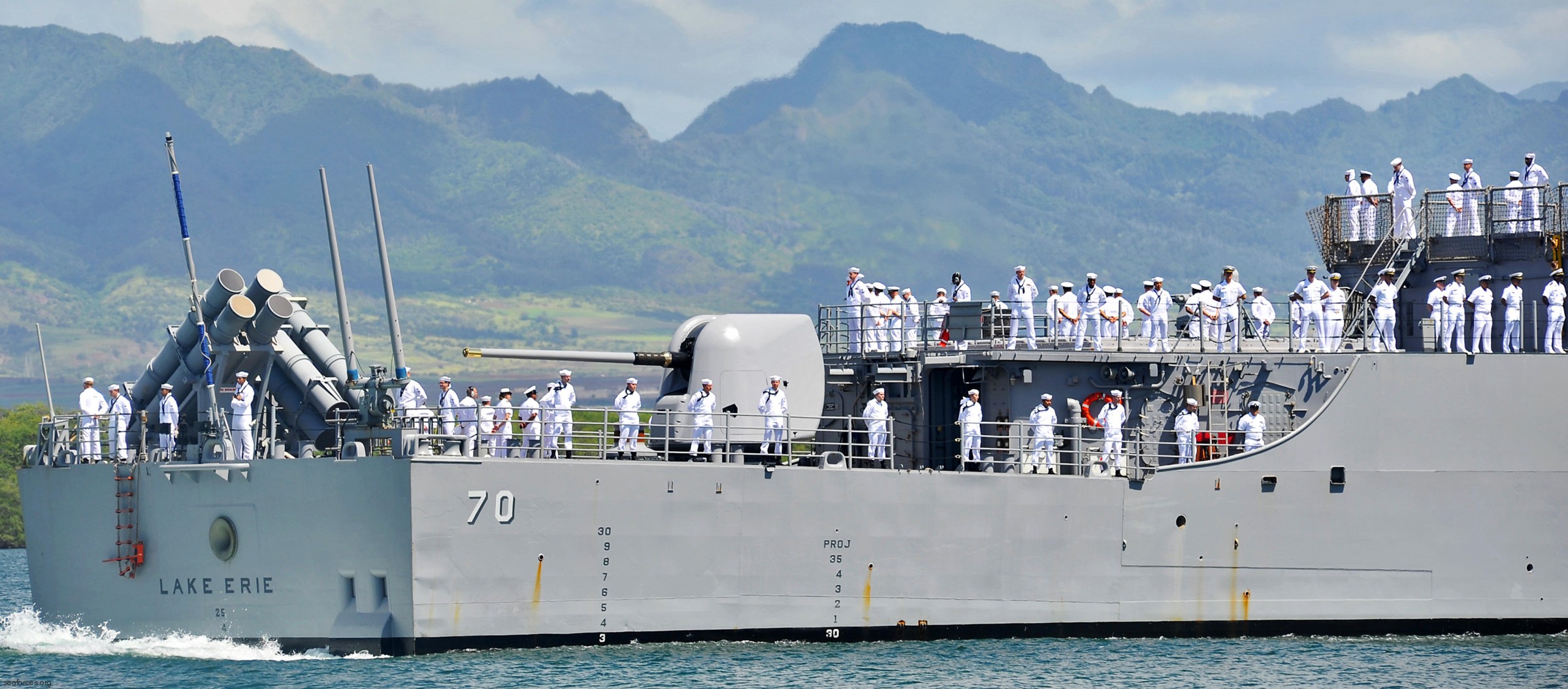 returning to Joint Base Pearl Harbor-Hickam, Hawaii - June 2014 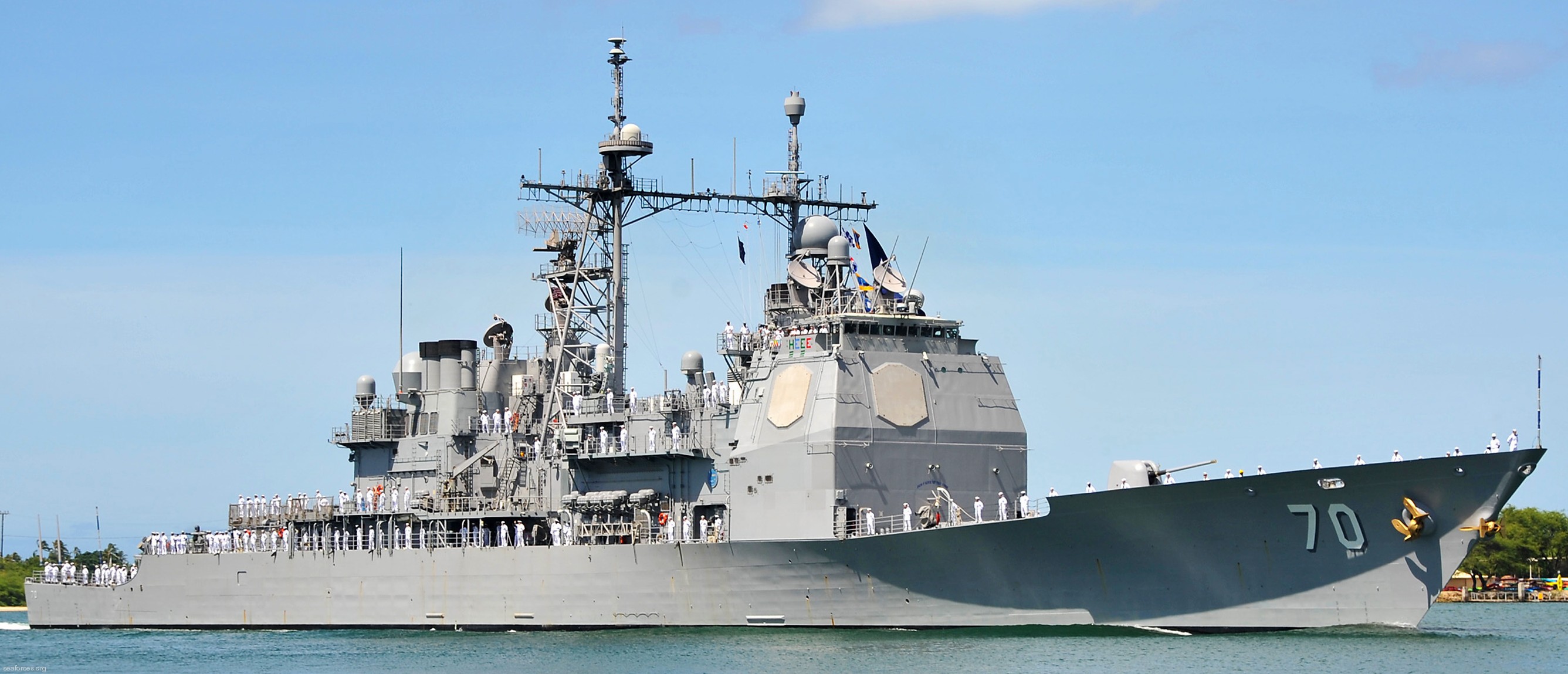 returning to Joint Base Pearl Harbor-Hickam, Hawaii - June 2014 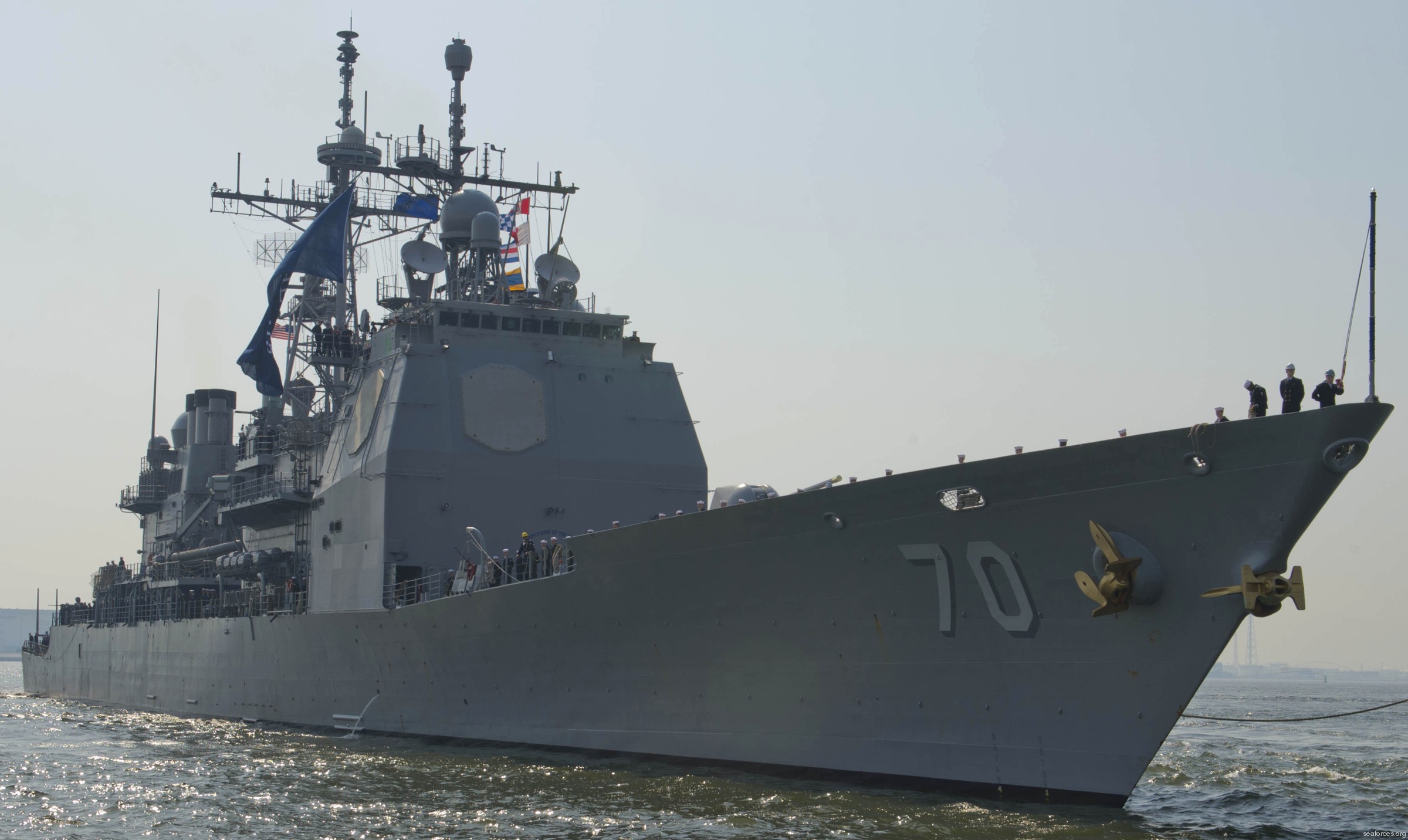 Osaka, Japan - April 2014 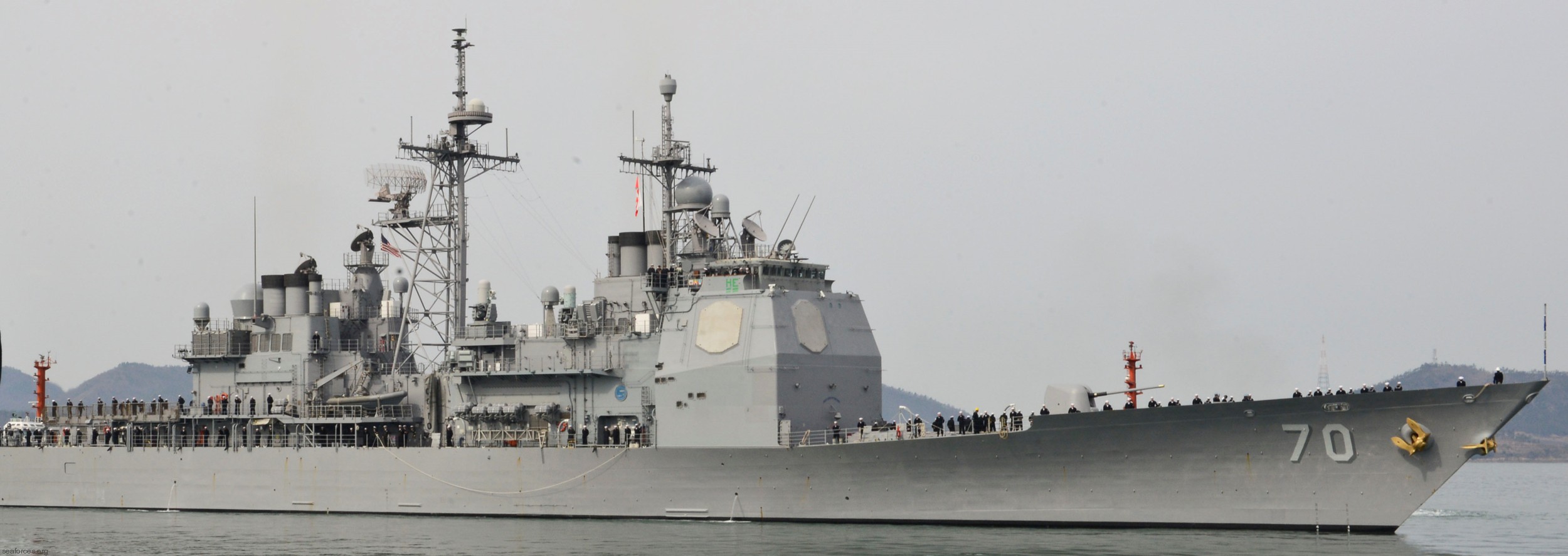 Mokpo, Republic of Korea - March 2014 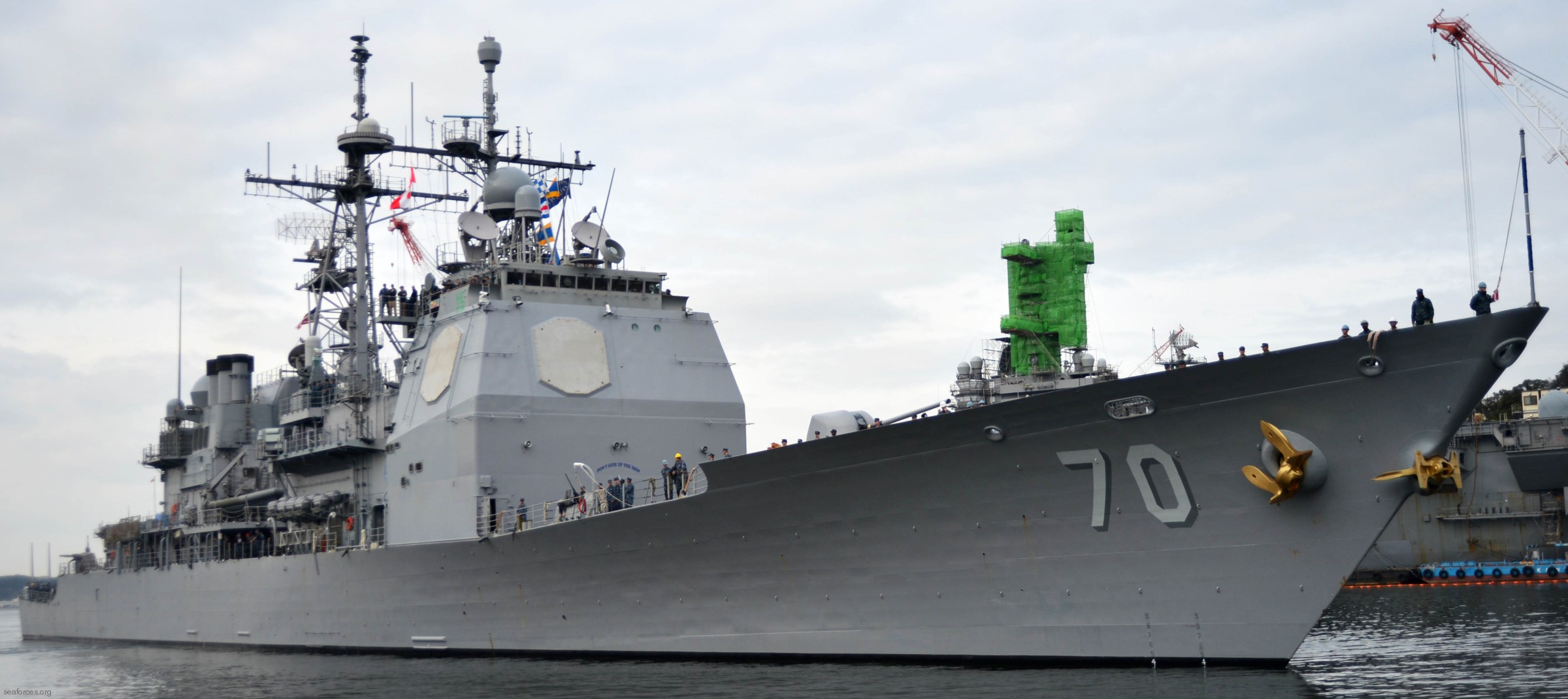 Yokosuka, Japan - February 2014 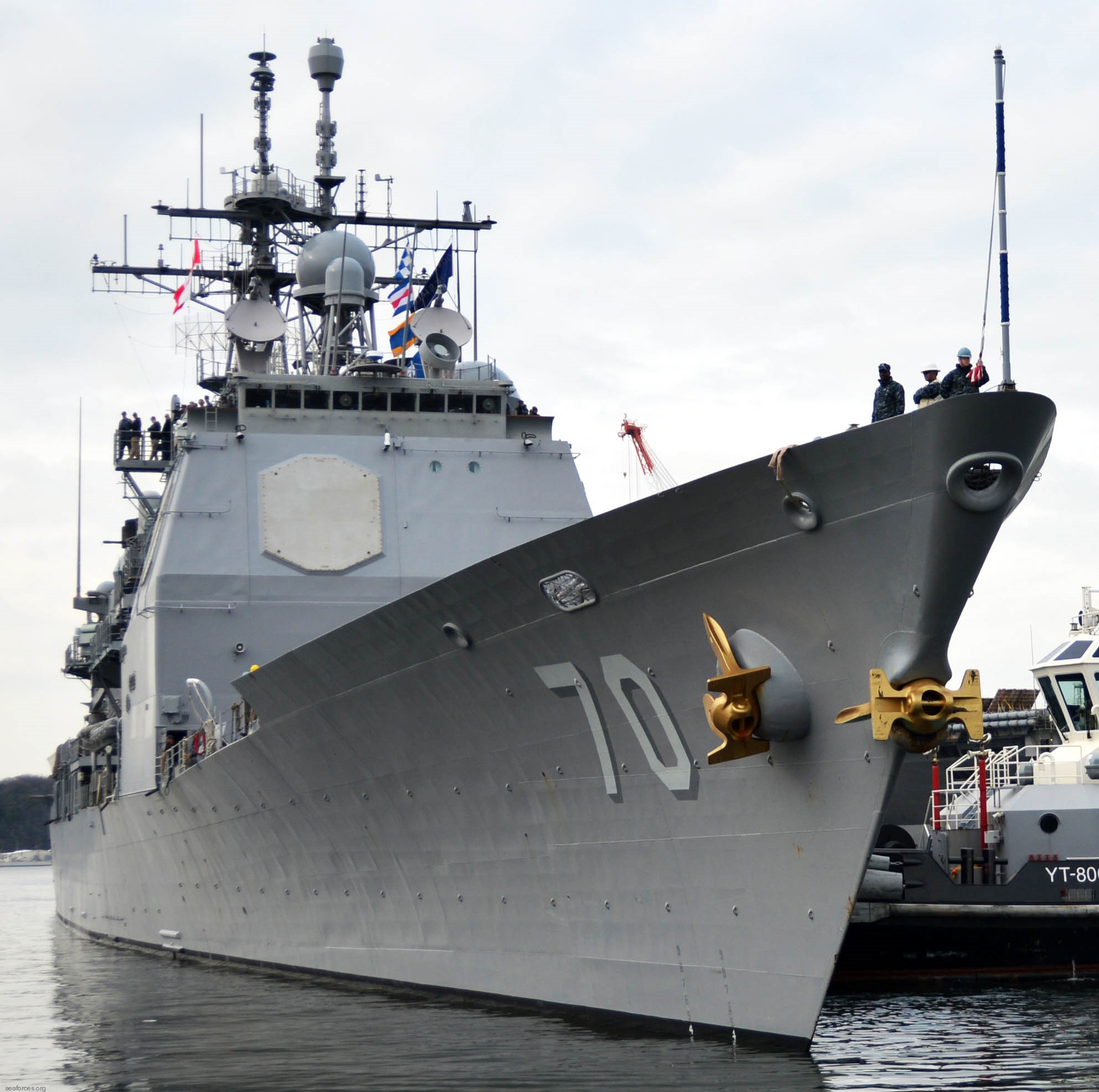 Yokosuka, Japan - February 2014 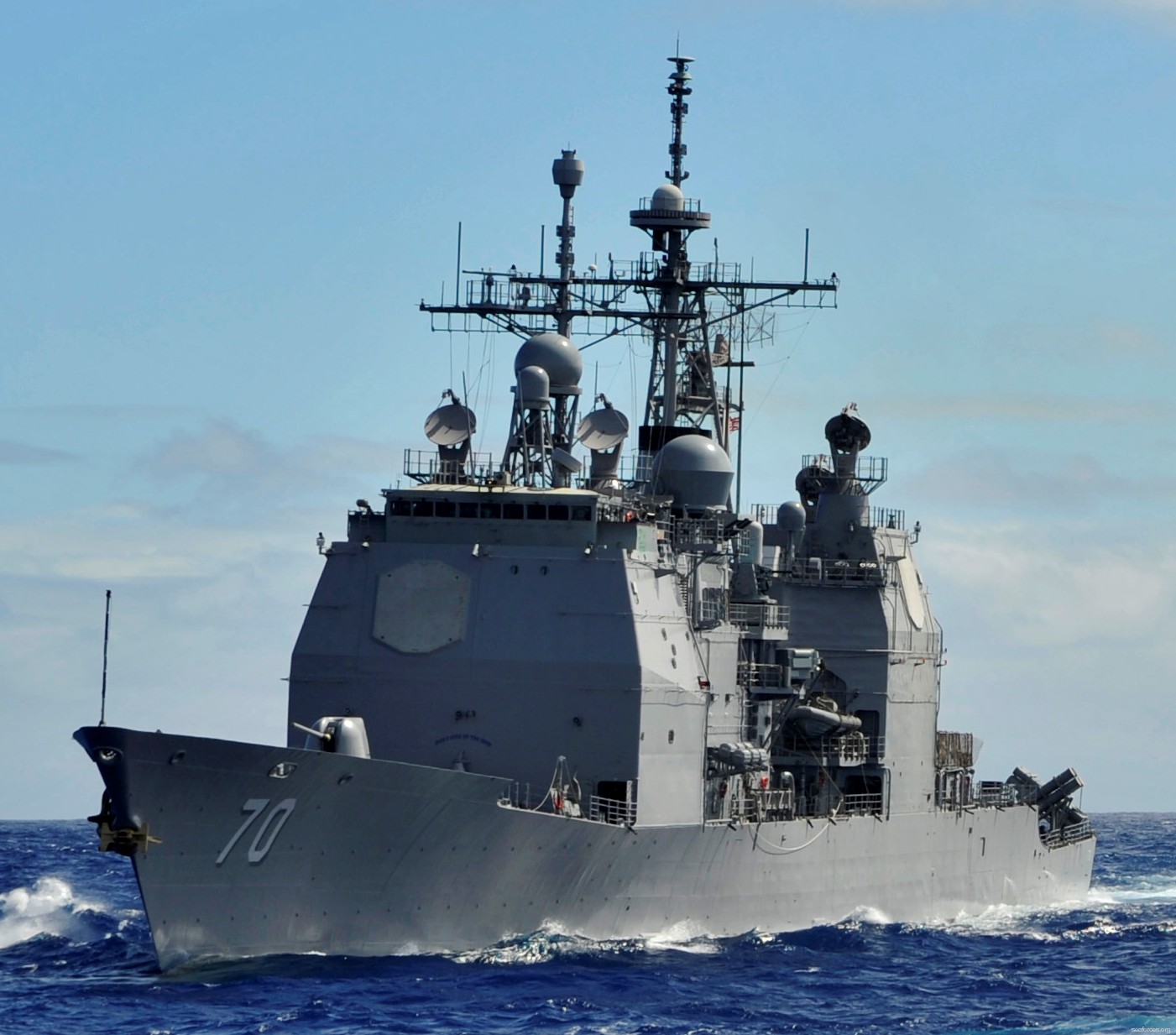 during exercise Koa Kai 14-1 - Pacific Ocean - January 2014 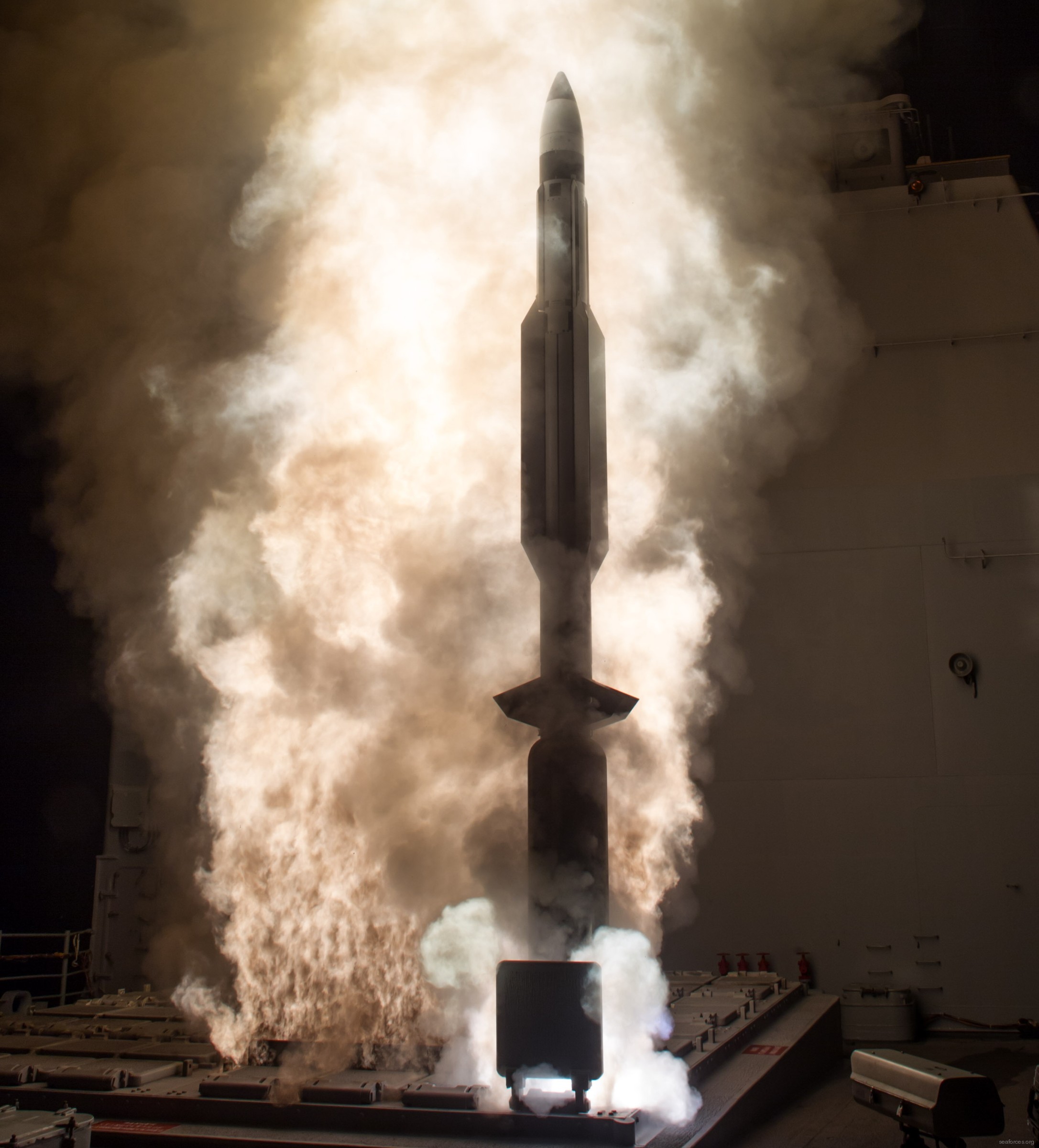 a RIM-161 Standard Missile SM-3 Block 1B was launched from the Mk-41 VLS - Pacific Ocean - October 2013 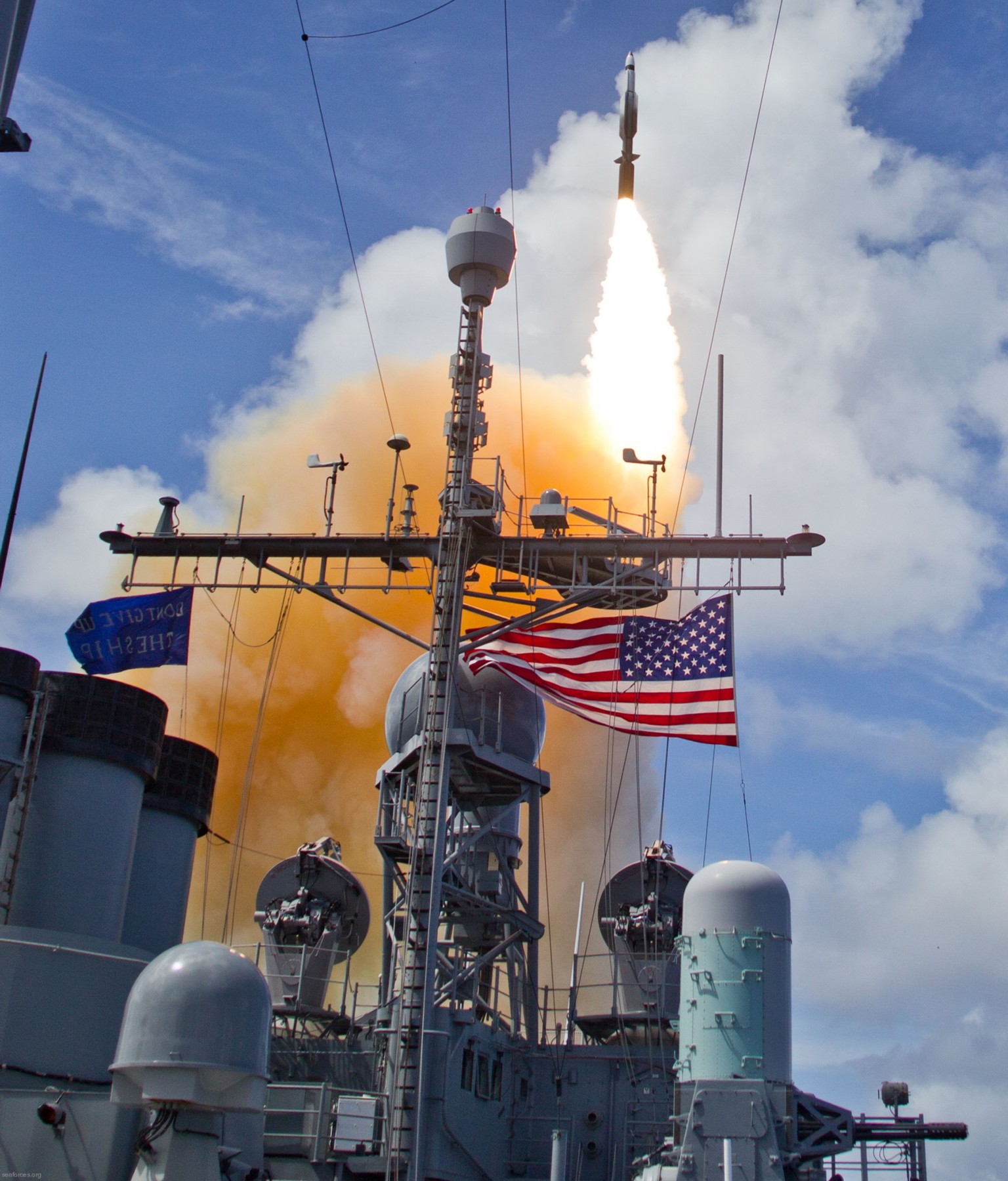 a RIM-161 Standard Missile SM-3 Block 1B was launched from the Mk-41 VLS - Pacific Ocean - September 2013 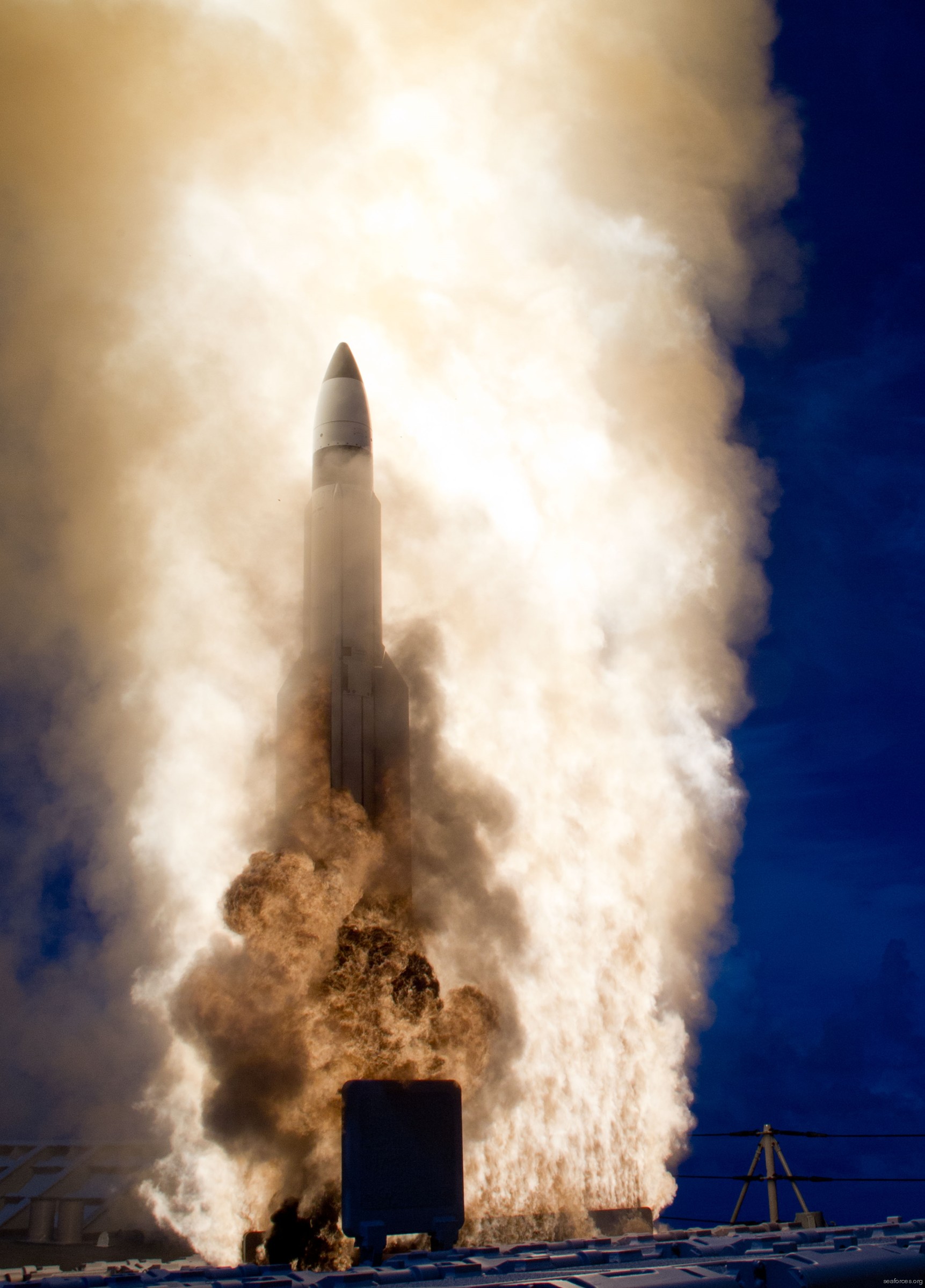 a RIM-161 Standard Missile SM-3 Block 1B was launched from the Mk-41 VLS - Pacific Ocean - September 2013 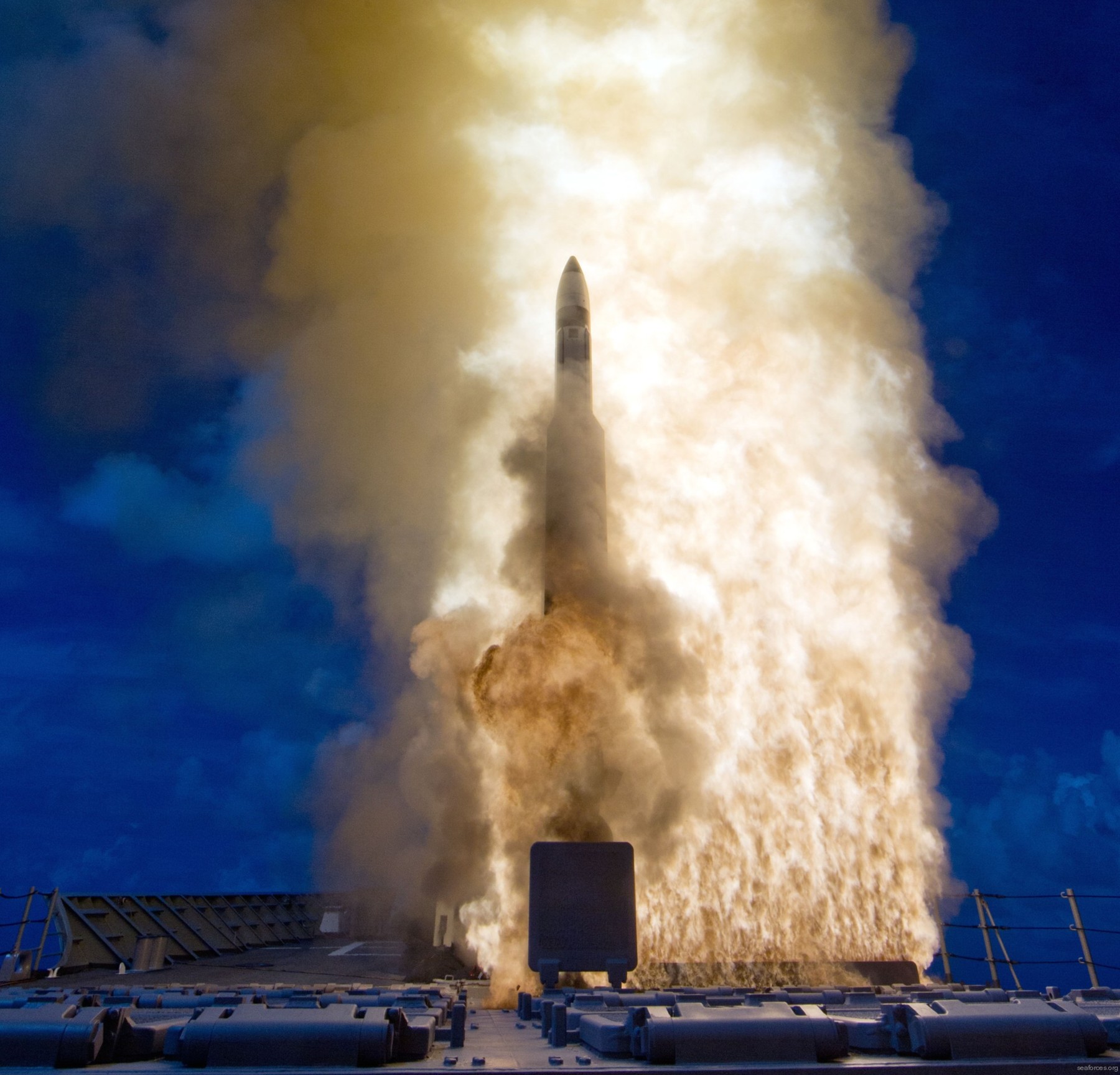 a RIM-161 Standard Missile SM-3 Block 1B was launched from the forward Mk-41 VLS - Pacific Ocean - September 2013 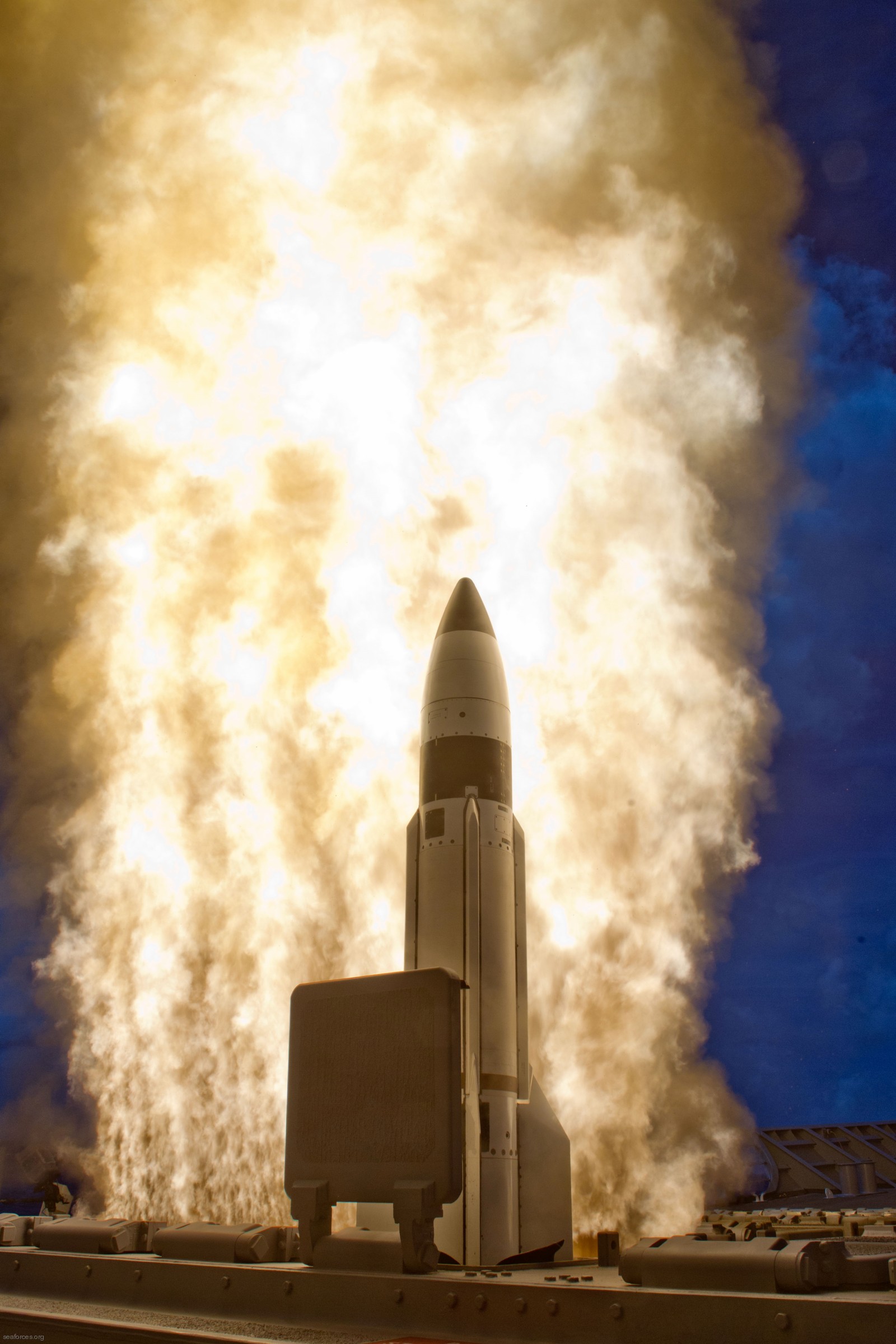 a RIM-161 Standard Missile SM-3 Block 1B was launched from the forward Mk-41 VLS - Pacific Ocean - September 2013 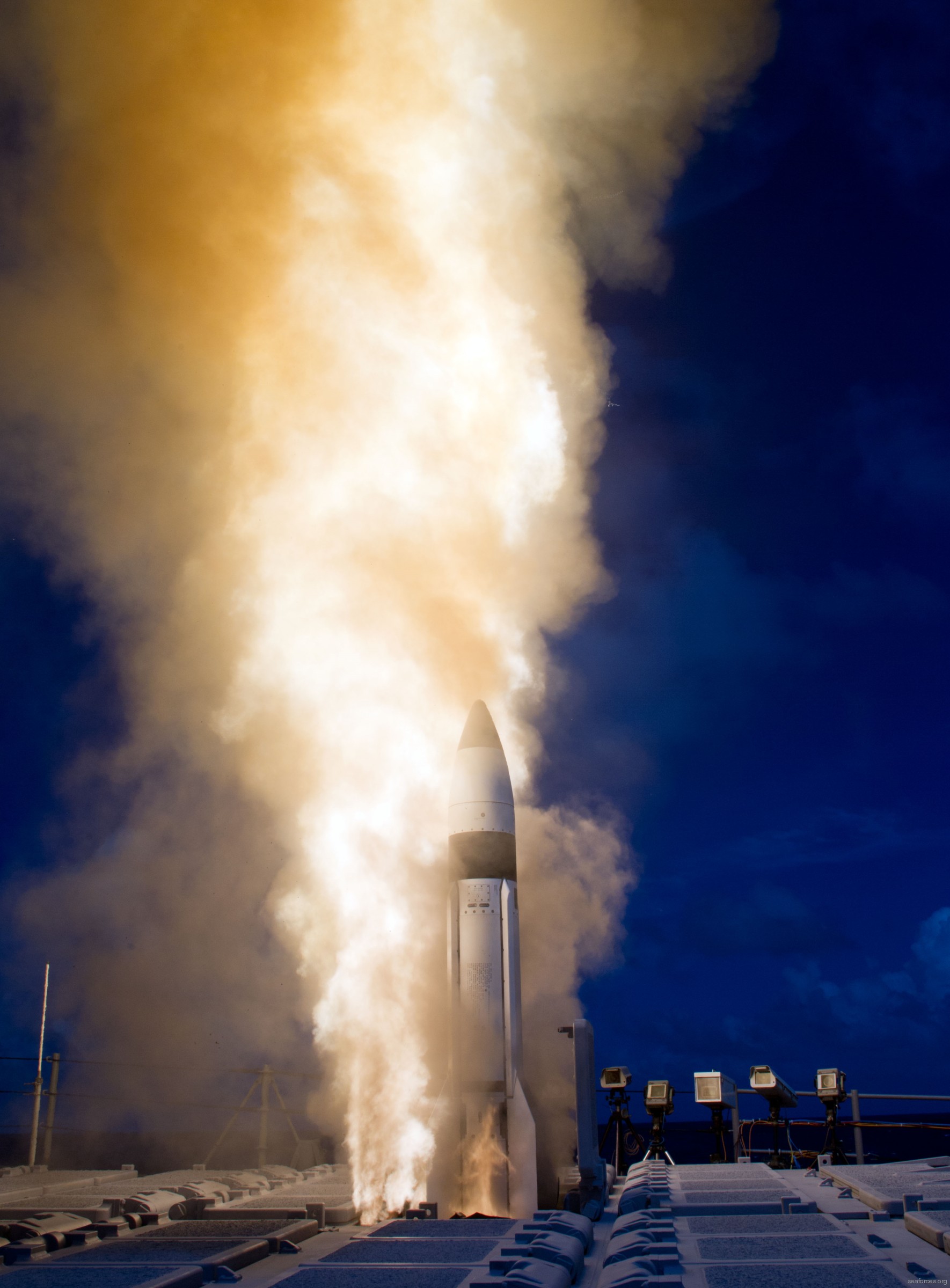 a RIM-161 Standard Missile SM-3 Block 1B was launched from the Mk-41 VLS - Pacific Ocean - September 2013 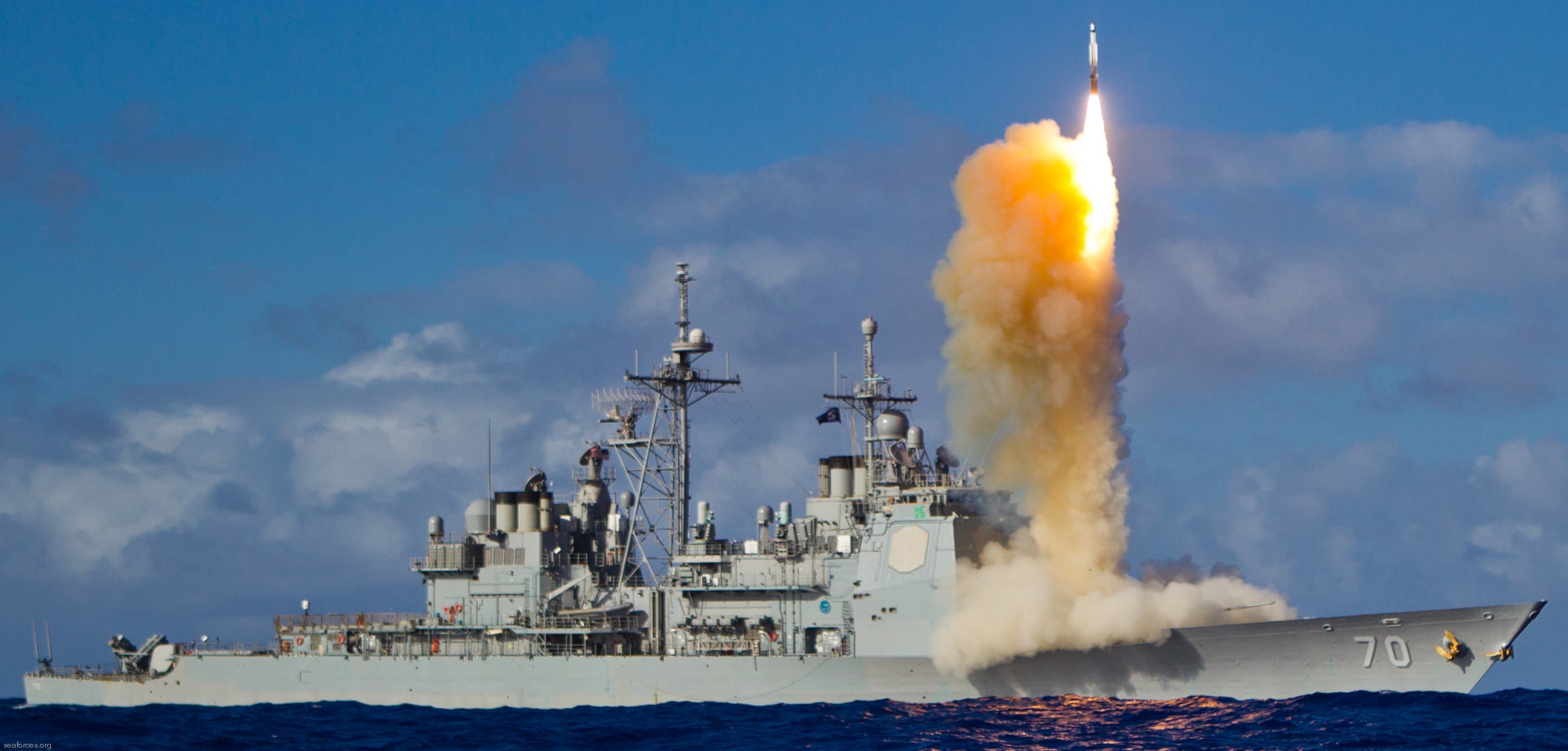 a RIM-161 Standard Missile SM-3 Block 1B was launched from the forward Mk-41 VLS - Pacific Ocean - May 2013 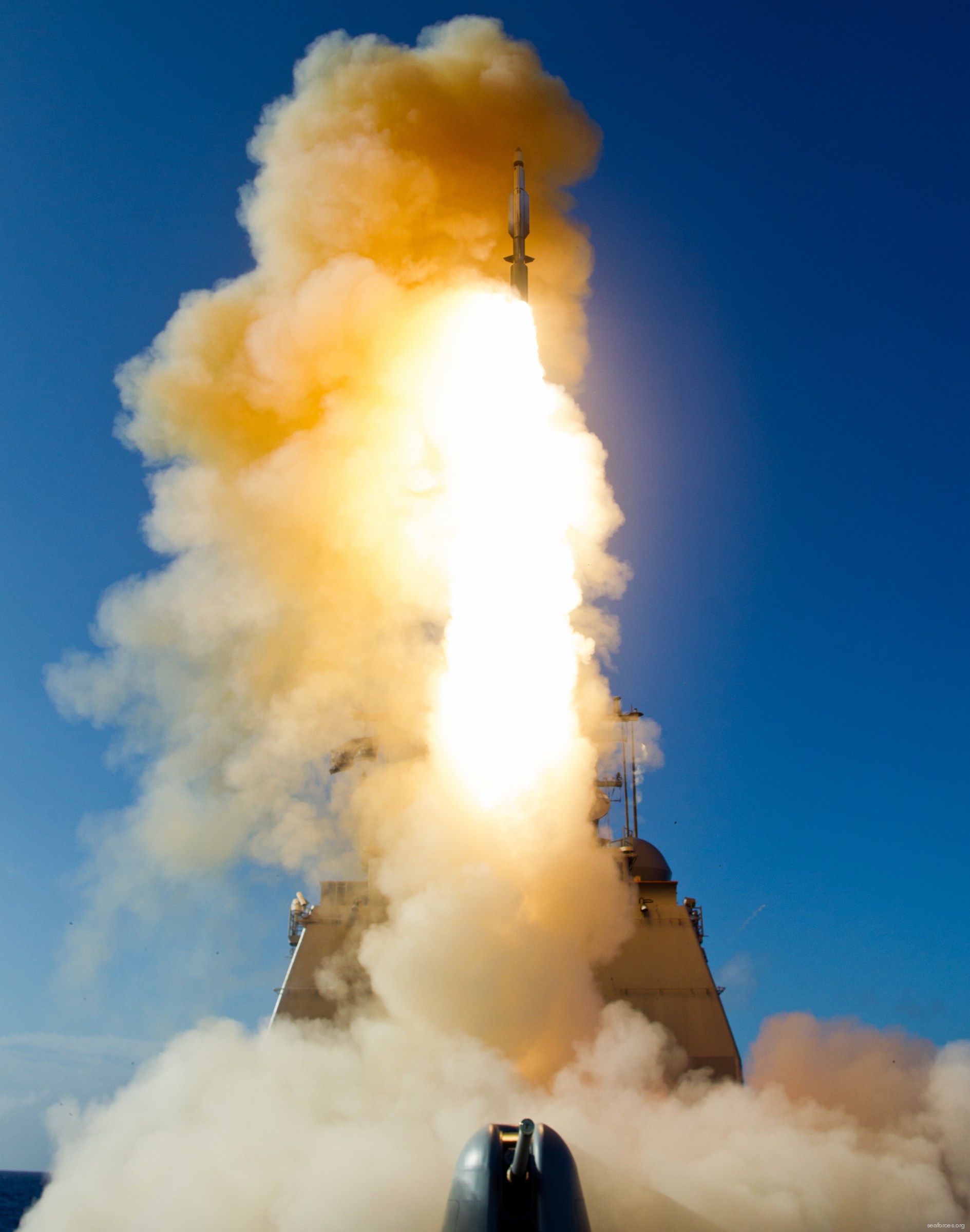 a RIM-161 Standard Missile SM-3 Block 1B was launched from the forward Mk-41 VLS - Pacific Ocean - May 2013 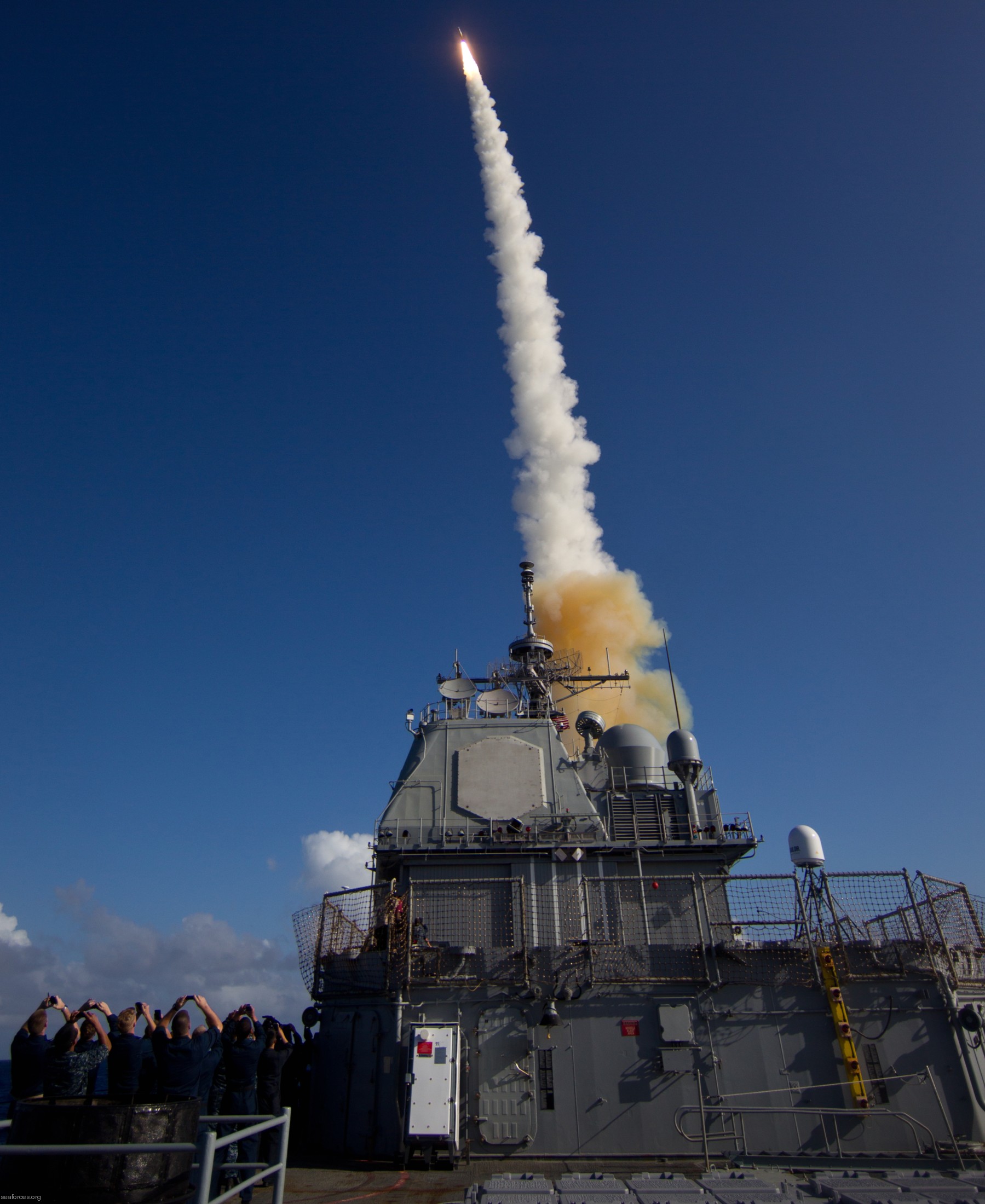 a RIM-161 Standard Missile SM-3 Block 1B was launched from the forward Mk-41 VLS - Pacific Ocean - May 2013 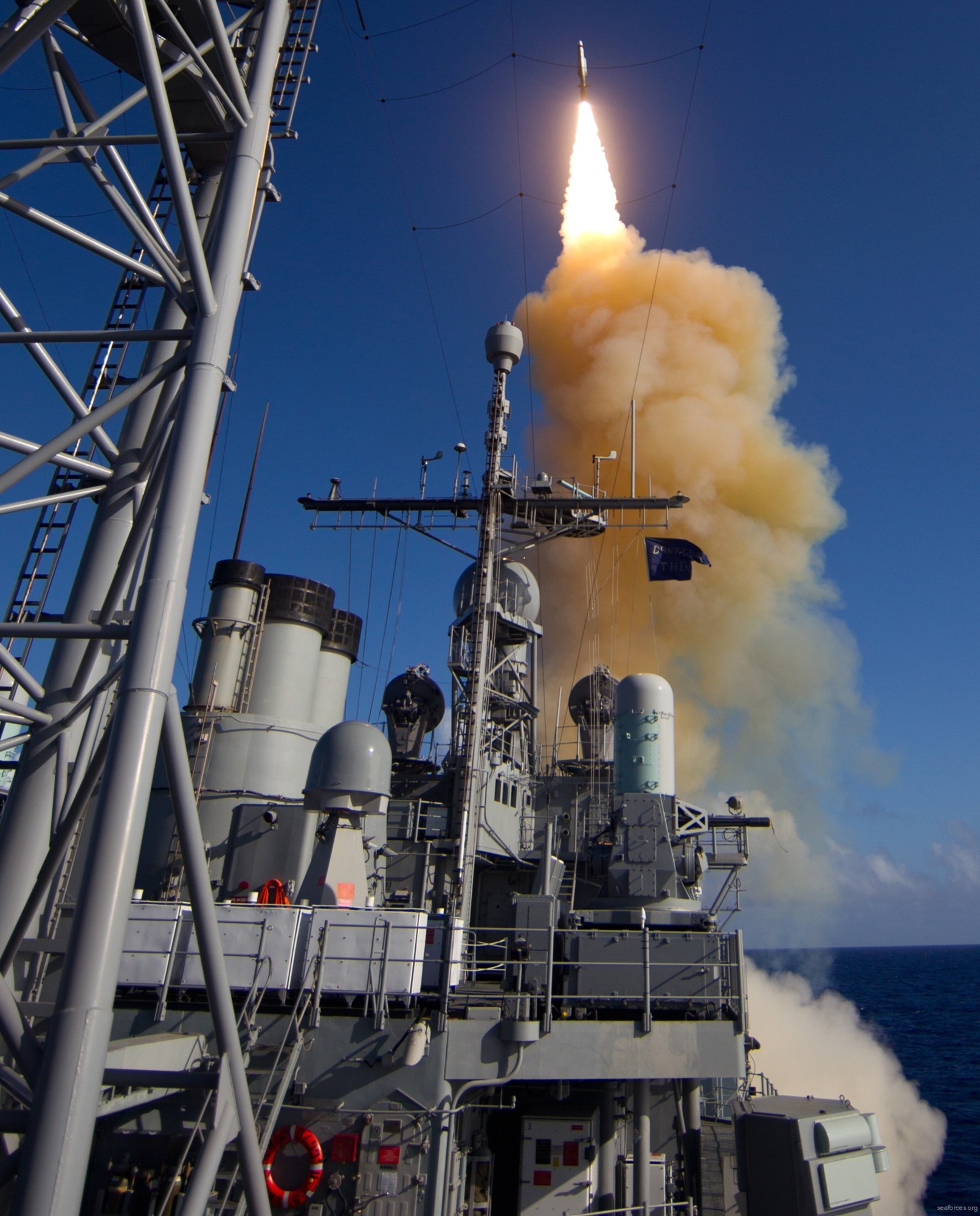 a RIM-161 Standard Missile SM-3 Block 1B was launched from the forward Mk-41 VLS - Pacific Ocean - May 2013 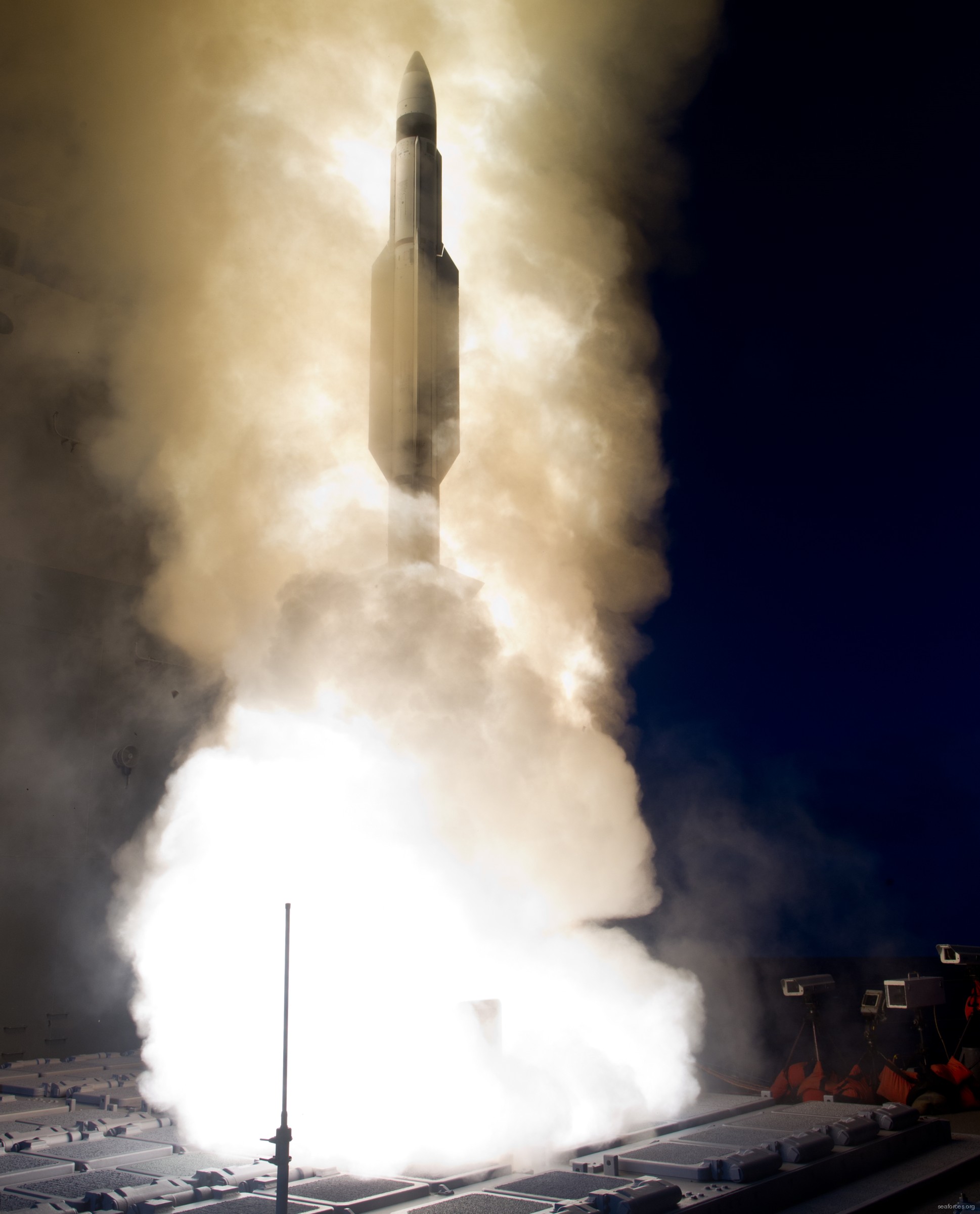 a RIM-161 Standard Missile SM-3 Block 1B was launched from the Mk-41 VLS - Pacific Ocean - May 2013 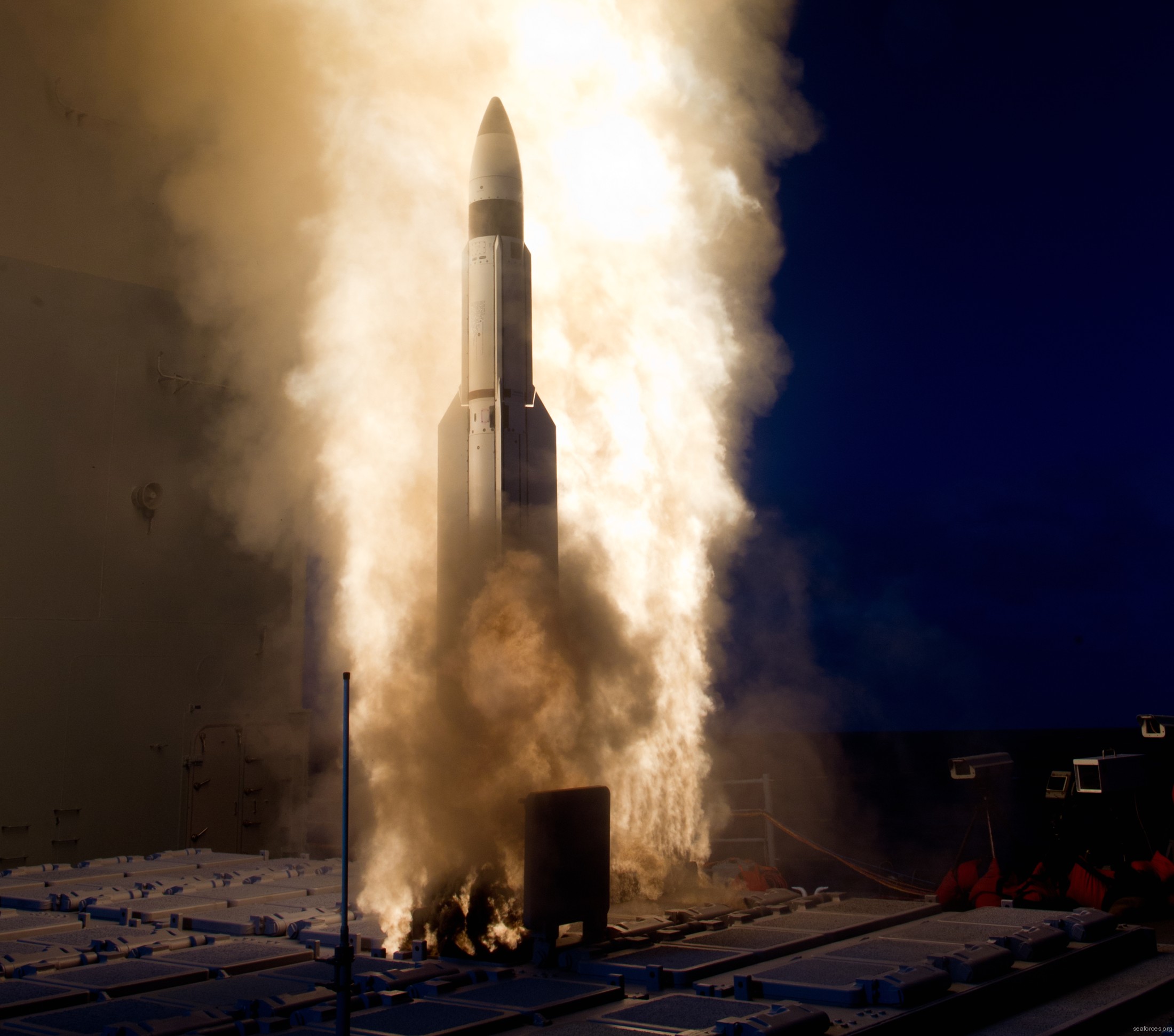 a RIM-161 Standard Missile SM-3 Block 1B was launched from the Mk-41 VLS - Pacific Ocean - May 2013 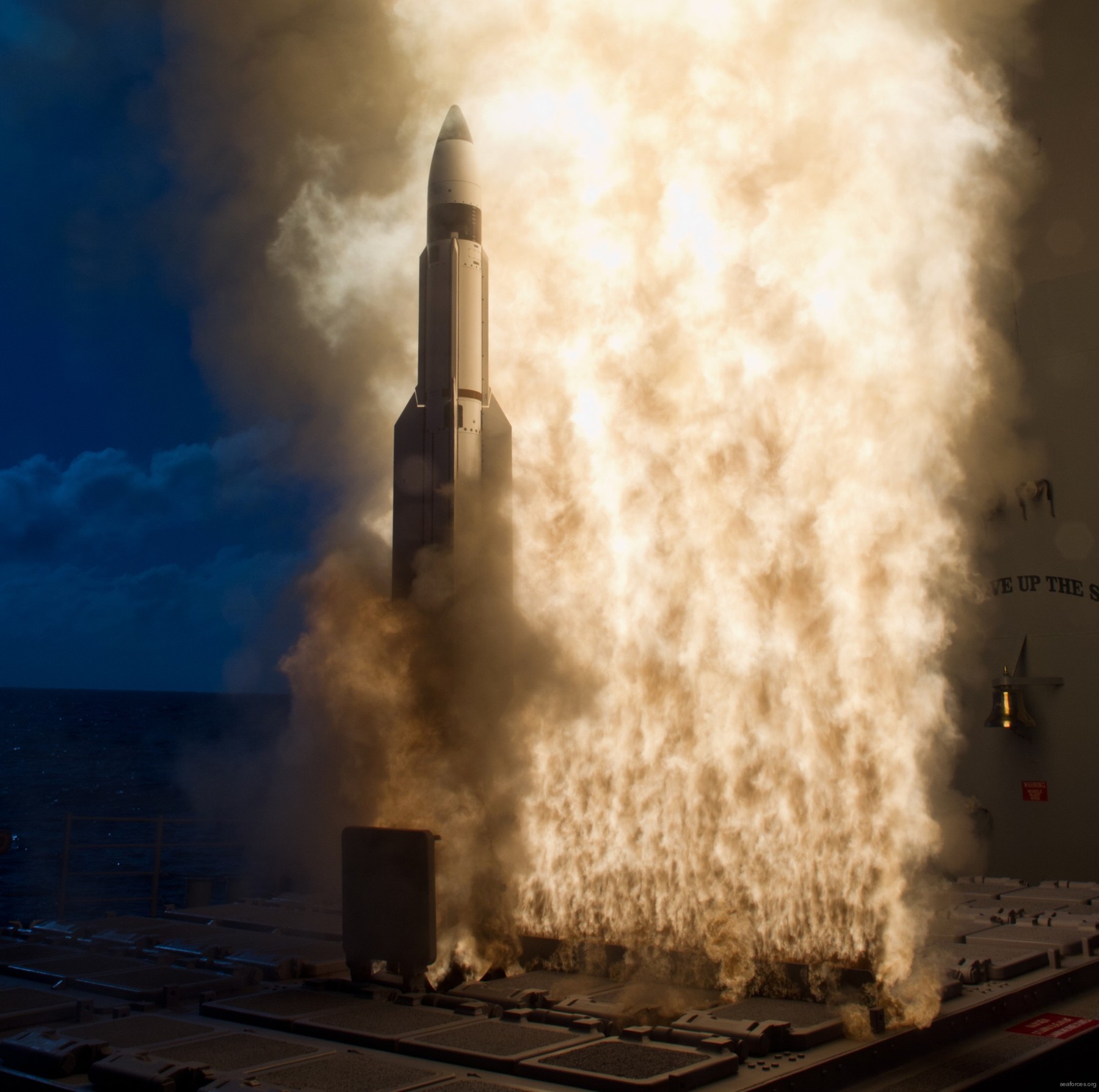 a RIM-161 Standard Missile SM-3 Block 1B was launched from the Mk-41 VLS - Pacific Ocean - May 2013 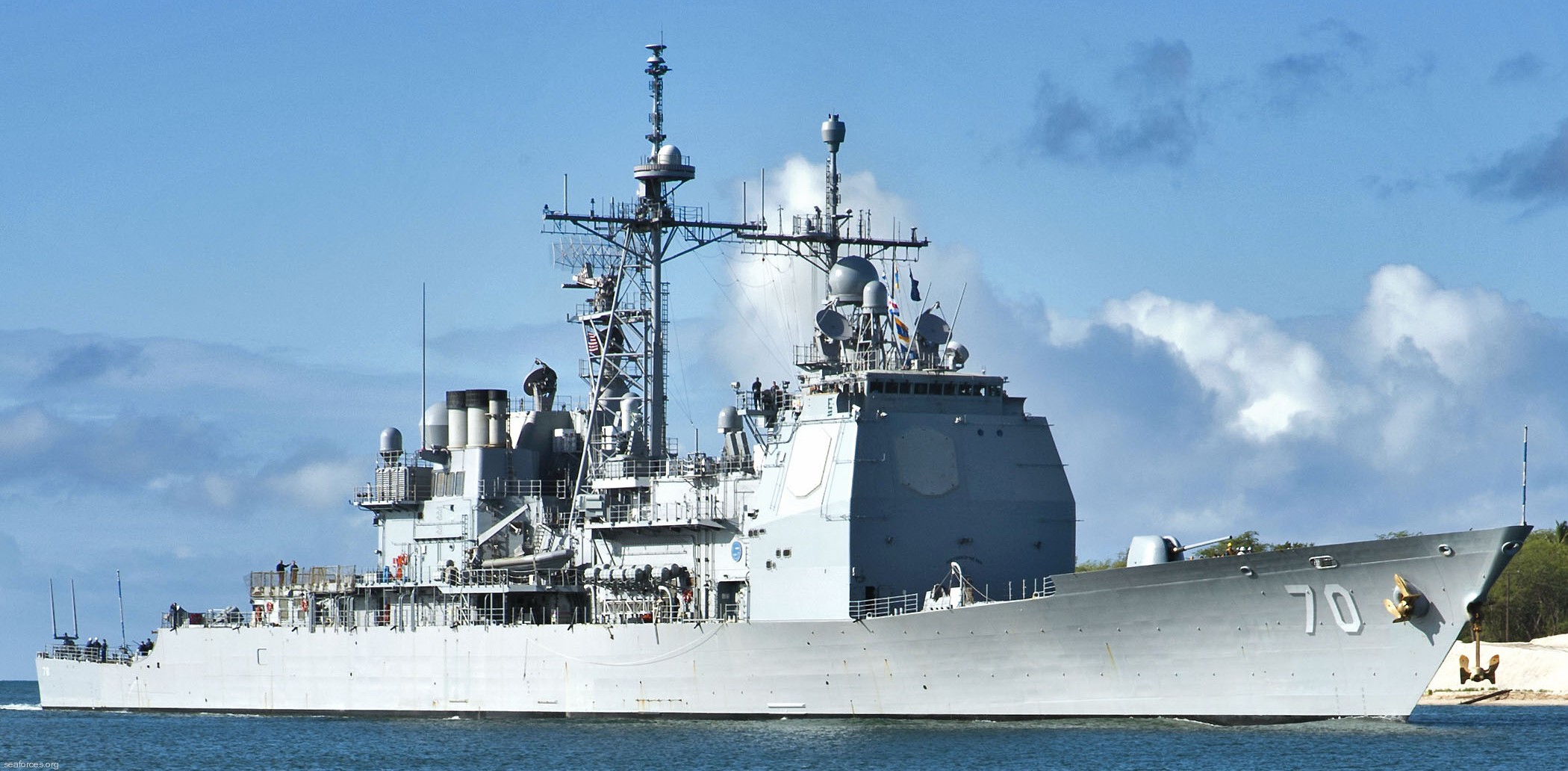 returning to Pearl Harbor, Hawaii - March 2013 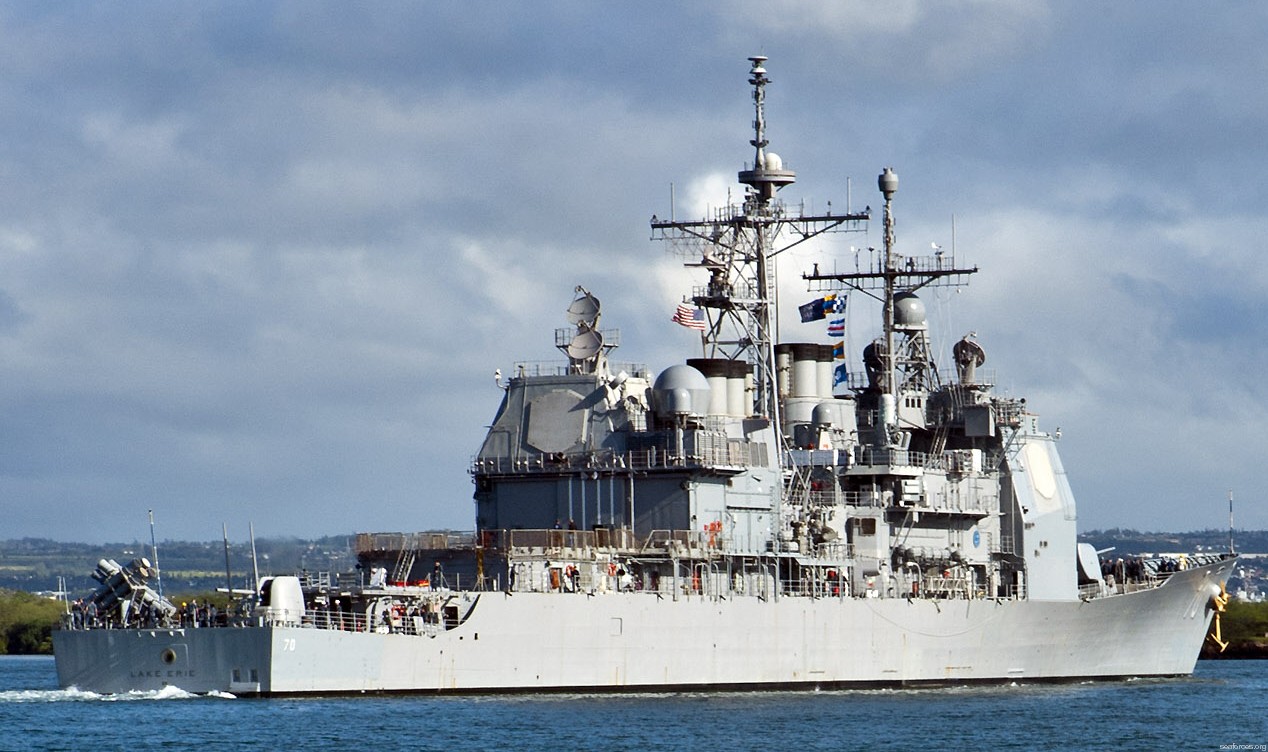 returning to Pearl Harbor, Hawaii - March 2013 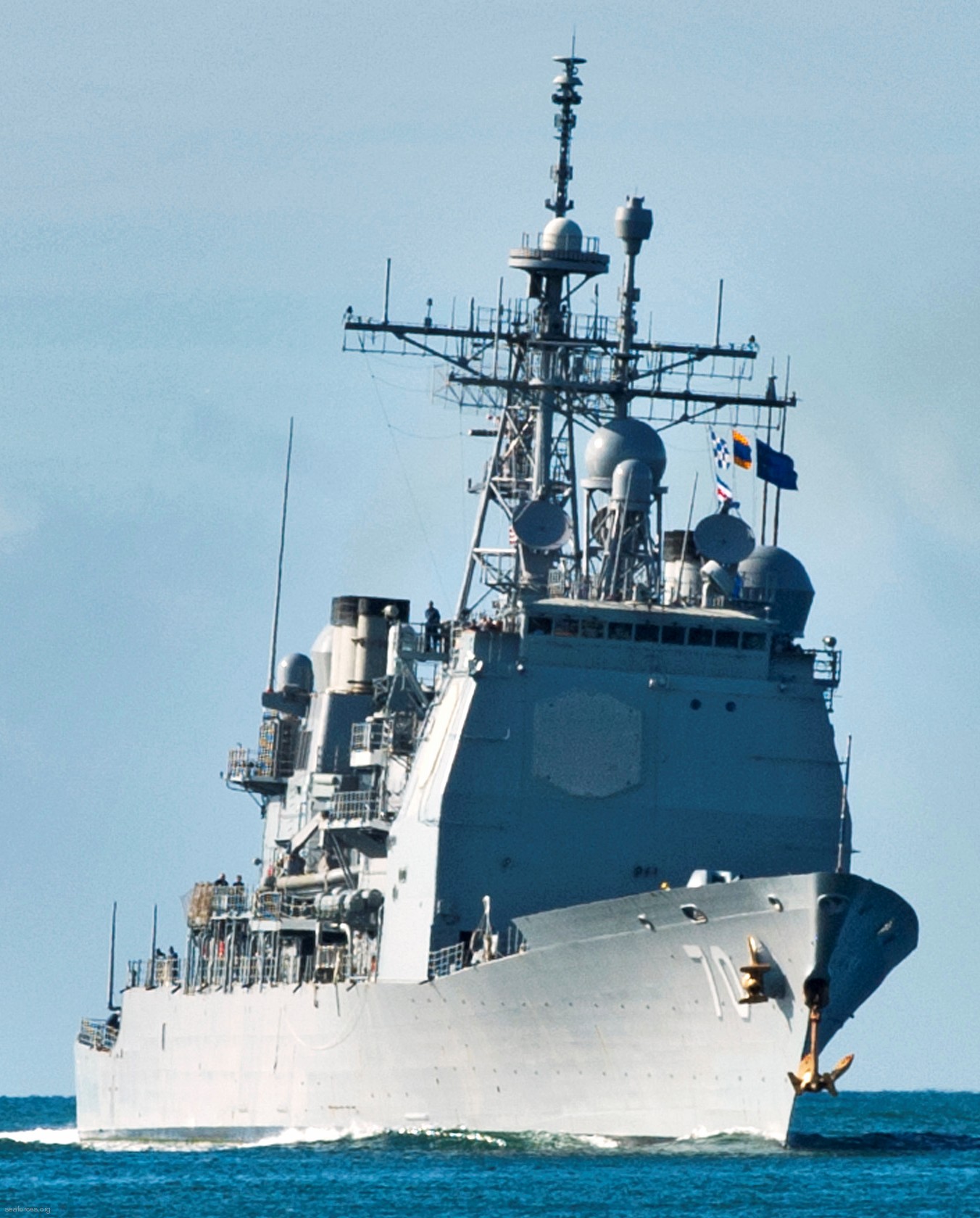 returning to Pearl Harbor, Hawaii - March 2013 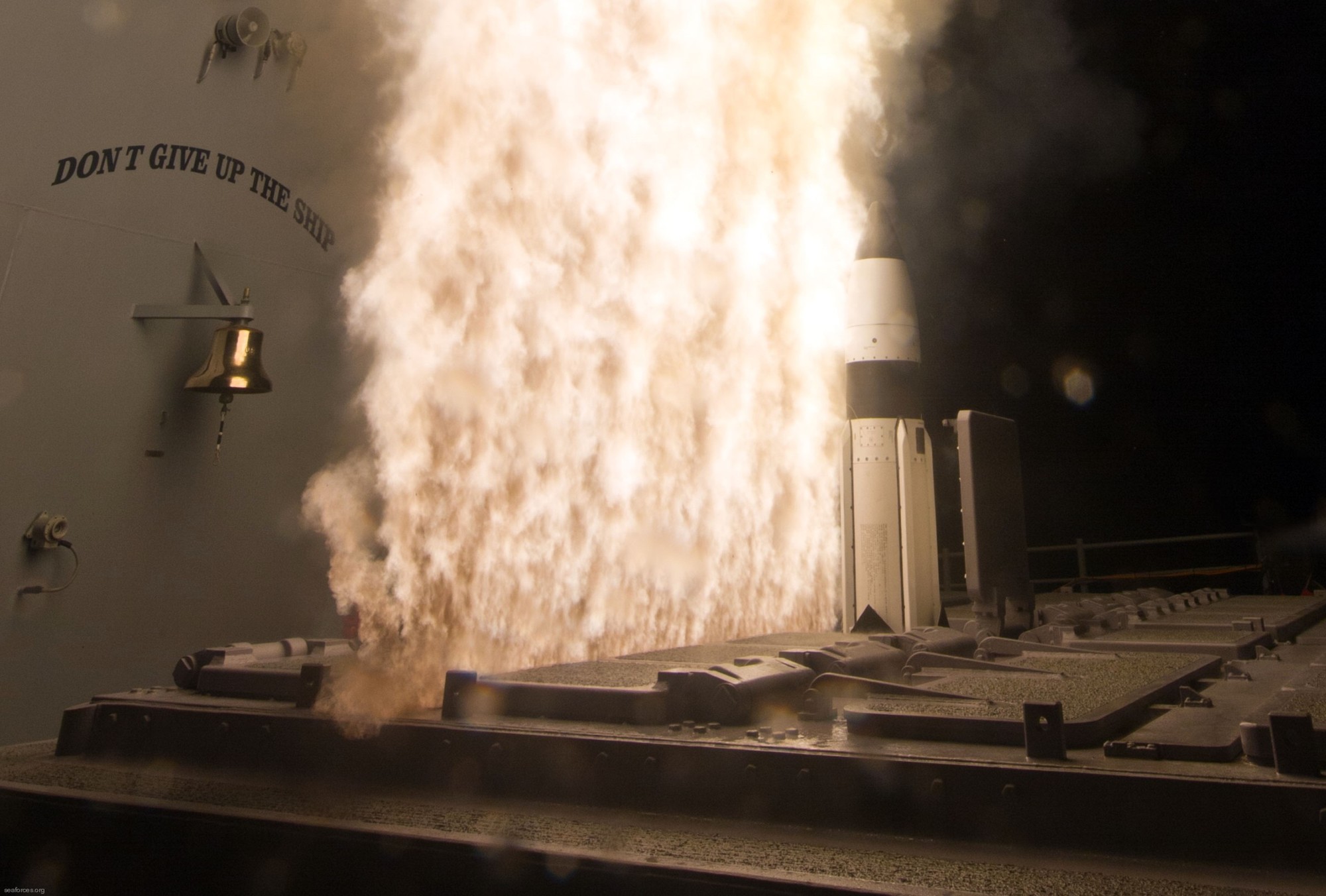 a RIM-161 Standard Missile SM-3 Block 1A was launched from the Mk-41 VLS - Pacific Ocean - February 2013 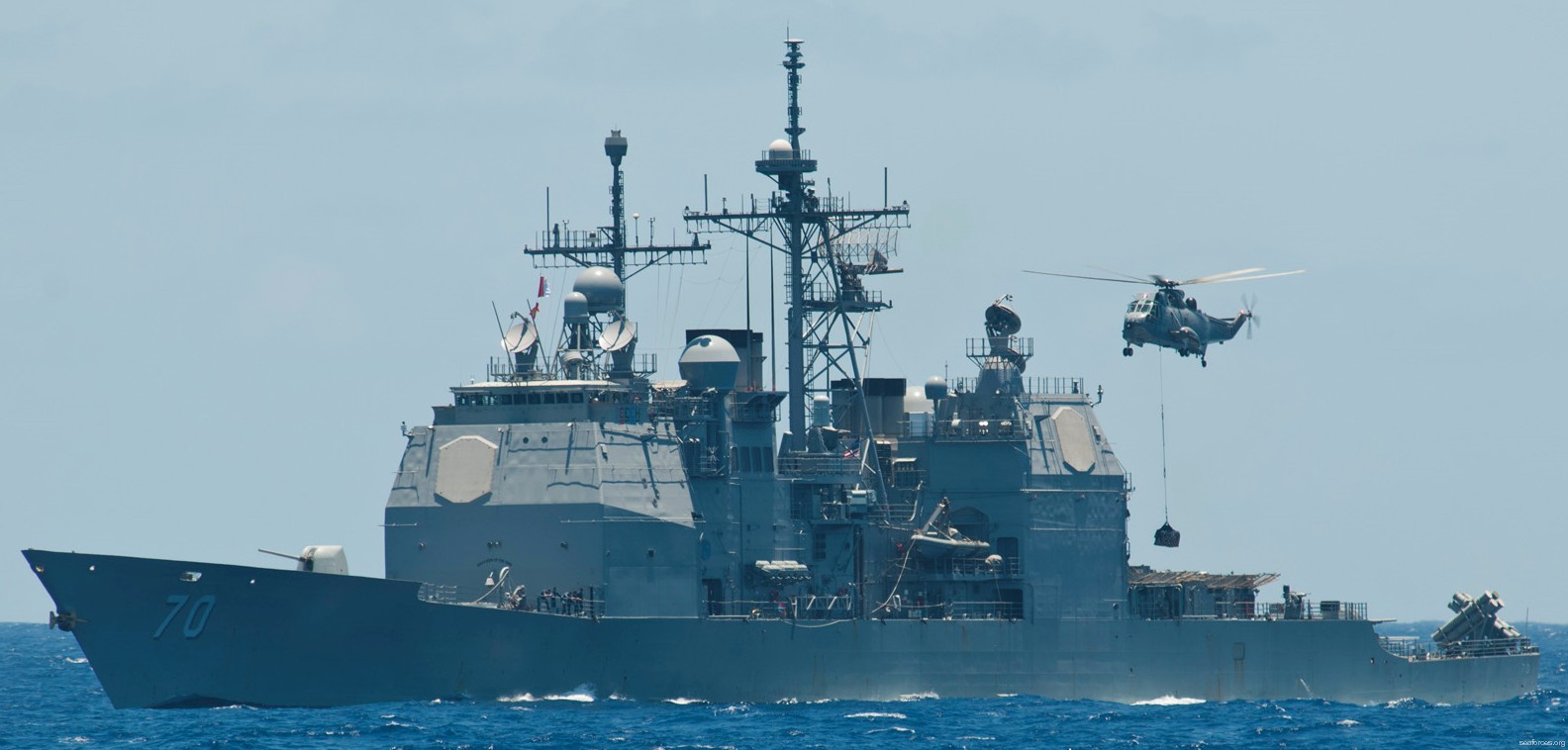 during exercise RIMPAC 2012 - Pacific Ocean - July 2012 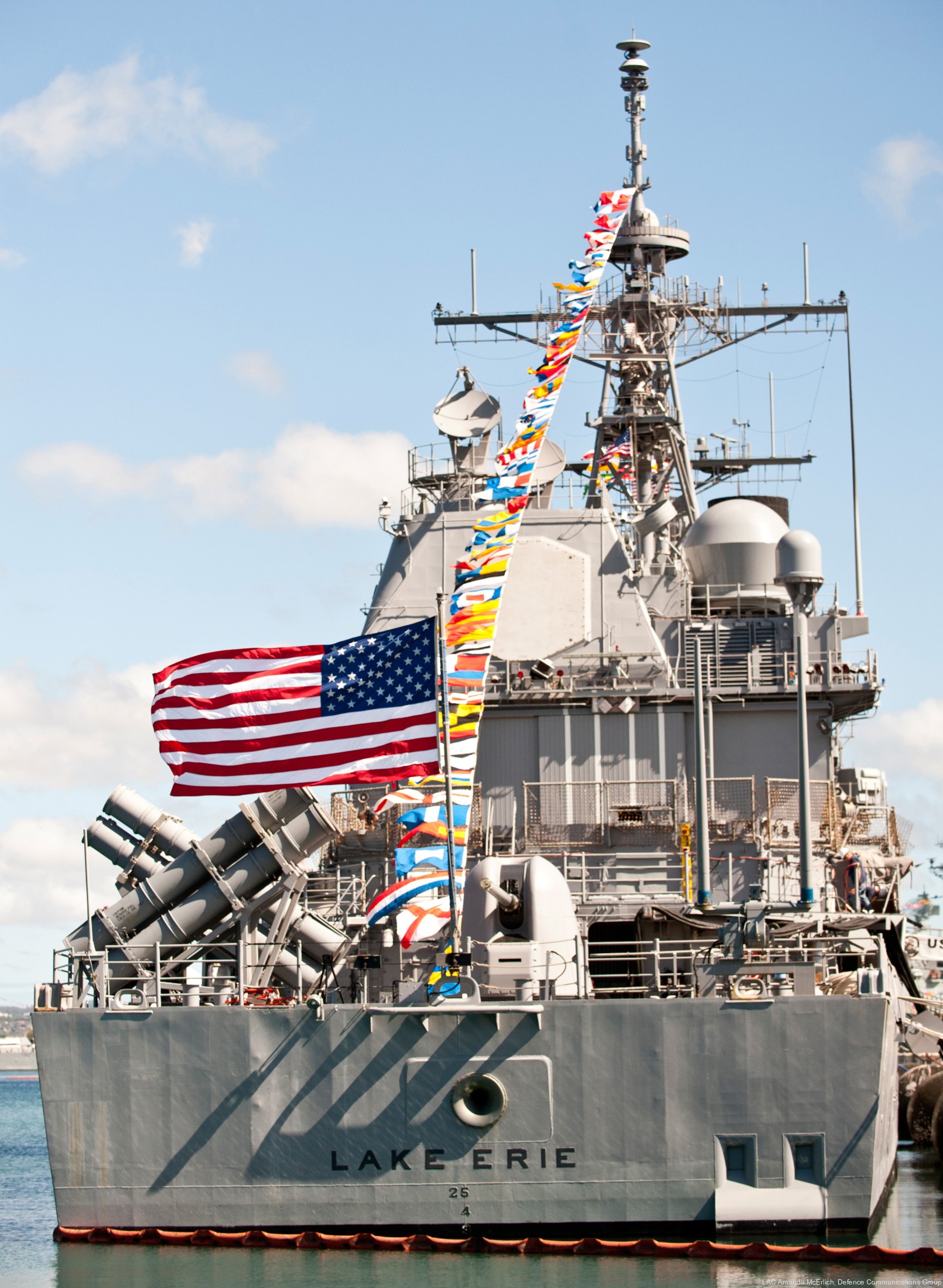 Pearl Harbor, Hawaii - July 2012 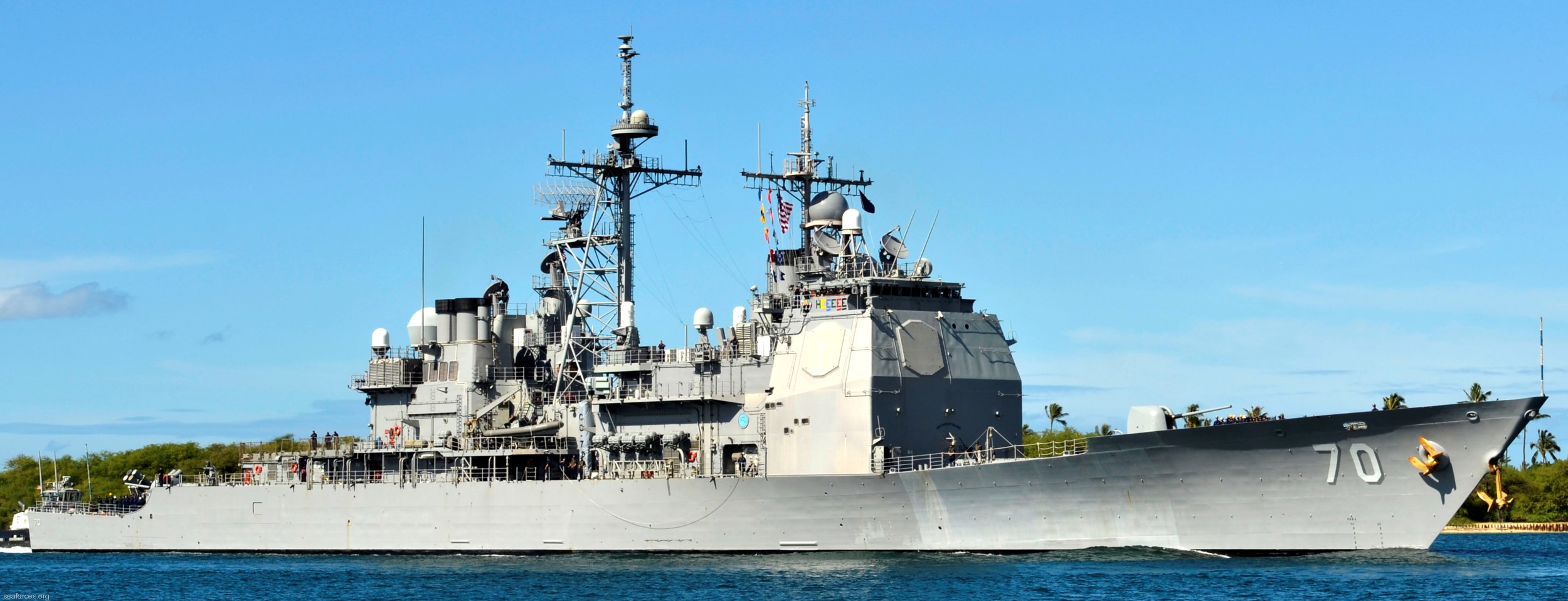 returning to Joint Base Pearl Harbor-Hickam, Hawaii - July 2011 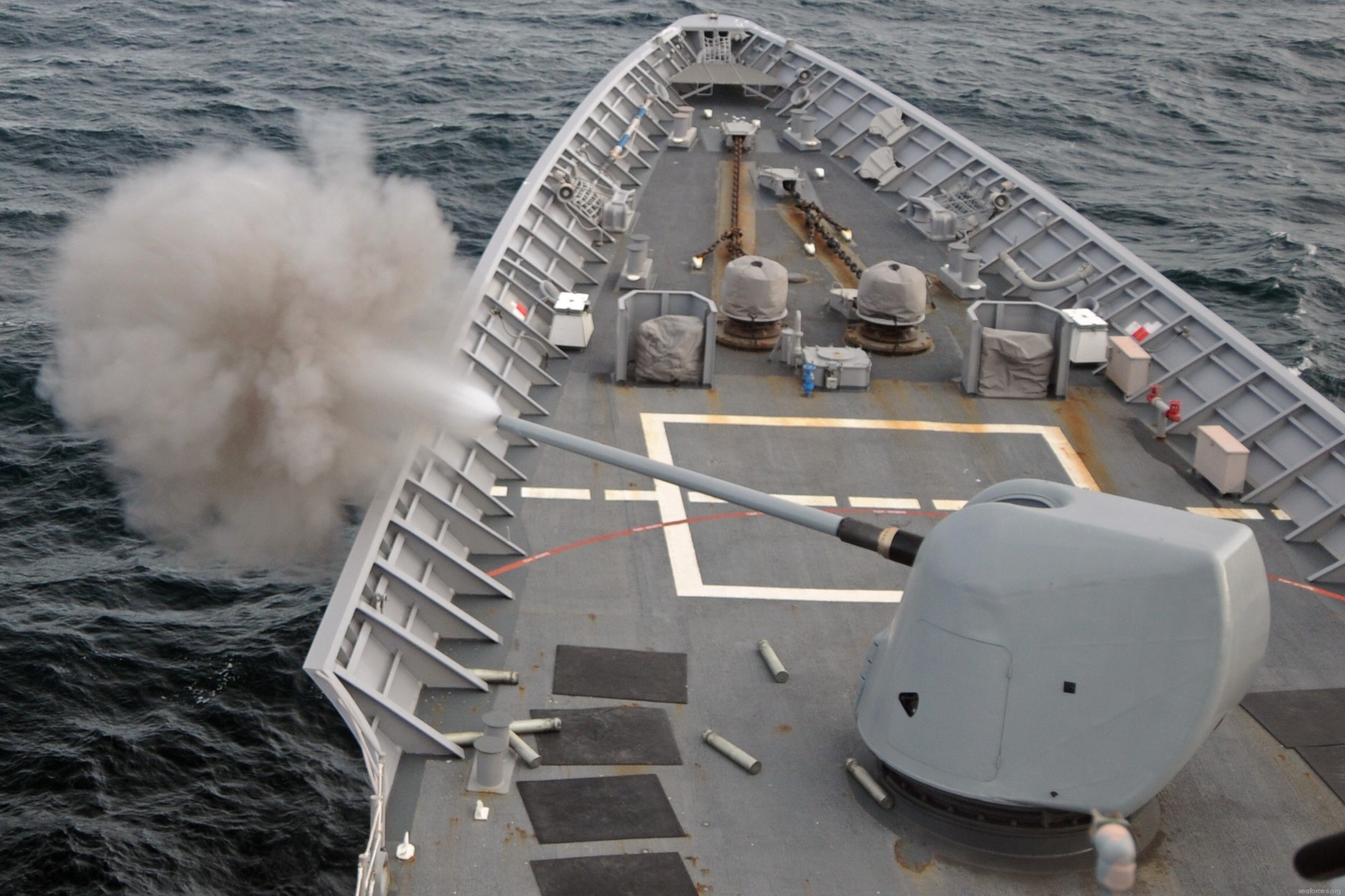 Mk-45 Mod.2 (5-inches / 54-caliber) gun fire exercise - May 2011 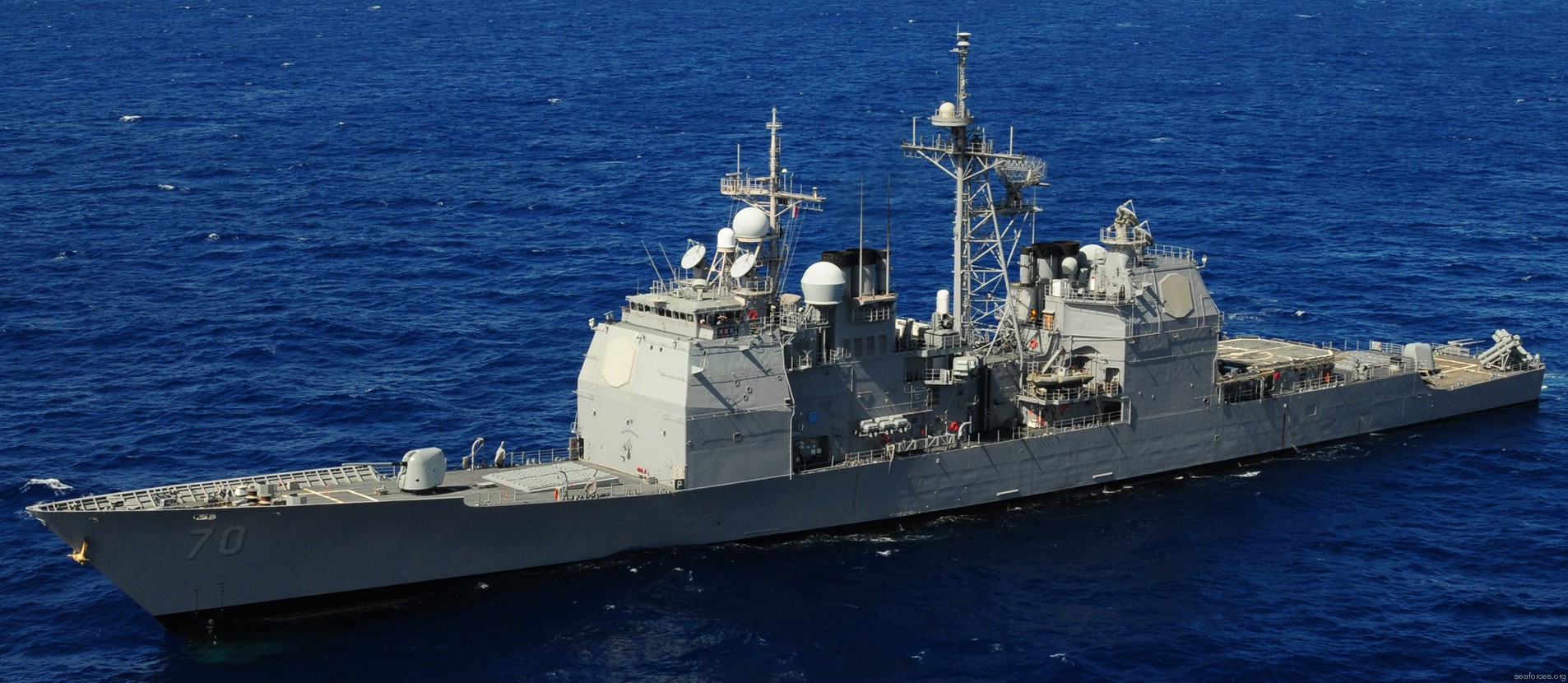 during exercise RIMPAC 10 - Pacific Ocean - July 2010 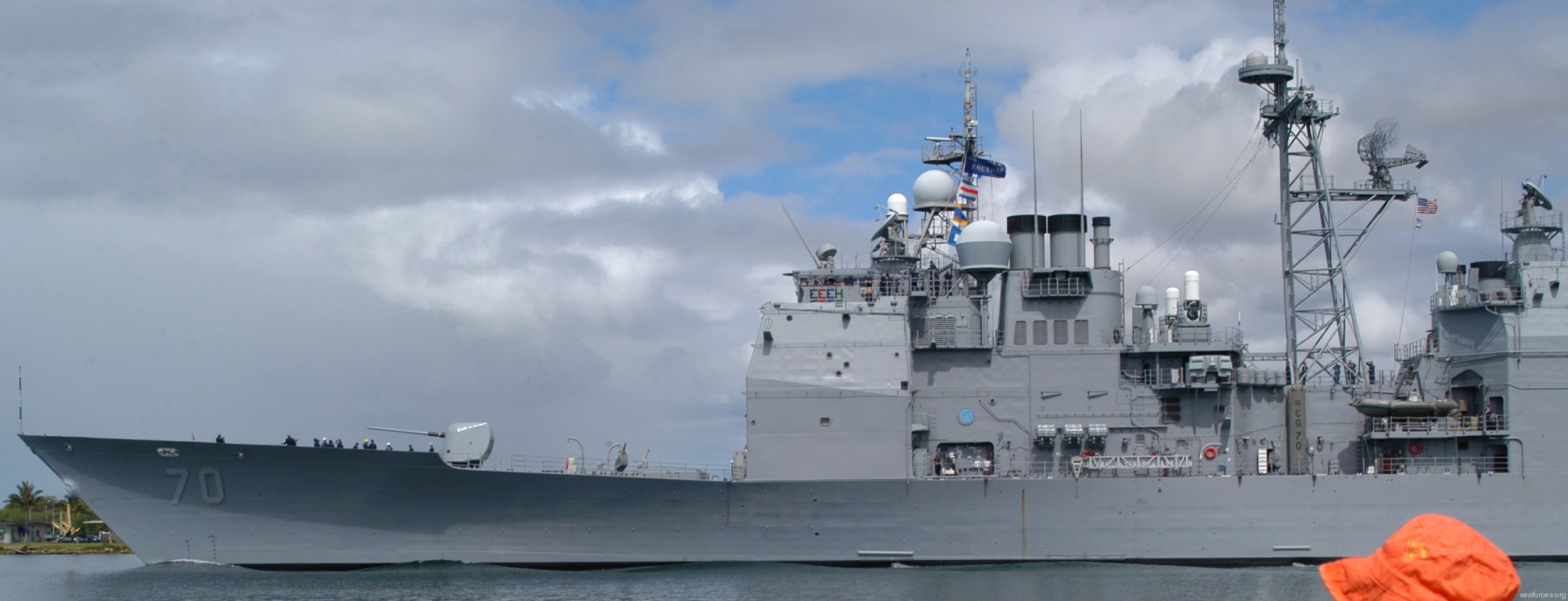 Joint Base Pearl Harbor-Hickam, Hawaii - July 2010 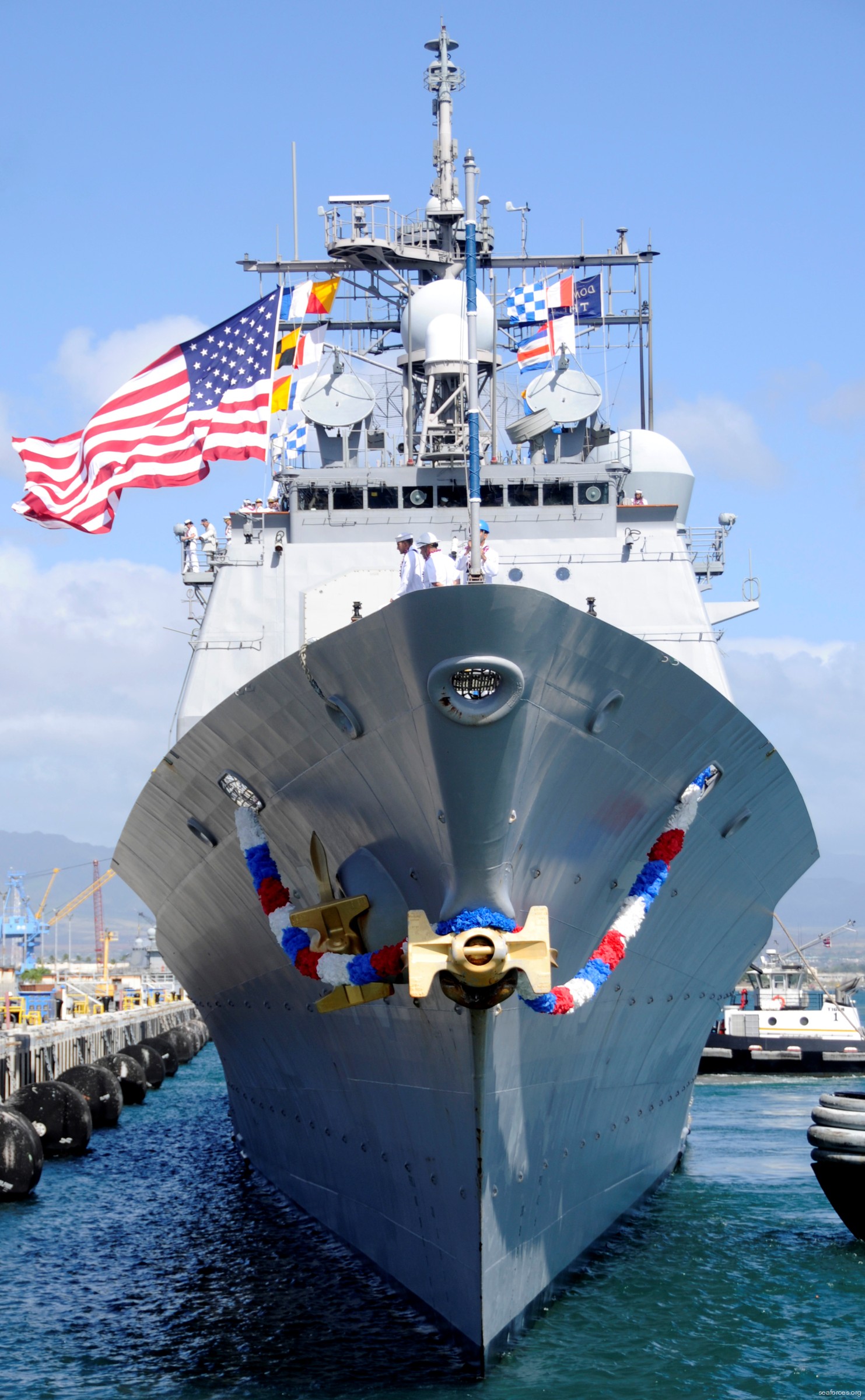 returning to Joint Base Pearl Harbor-Hickam, Hawaii - April 2010 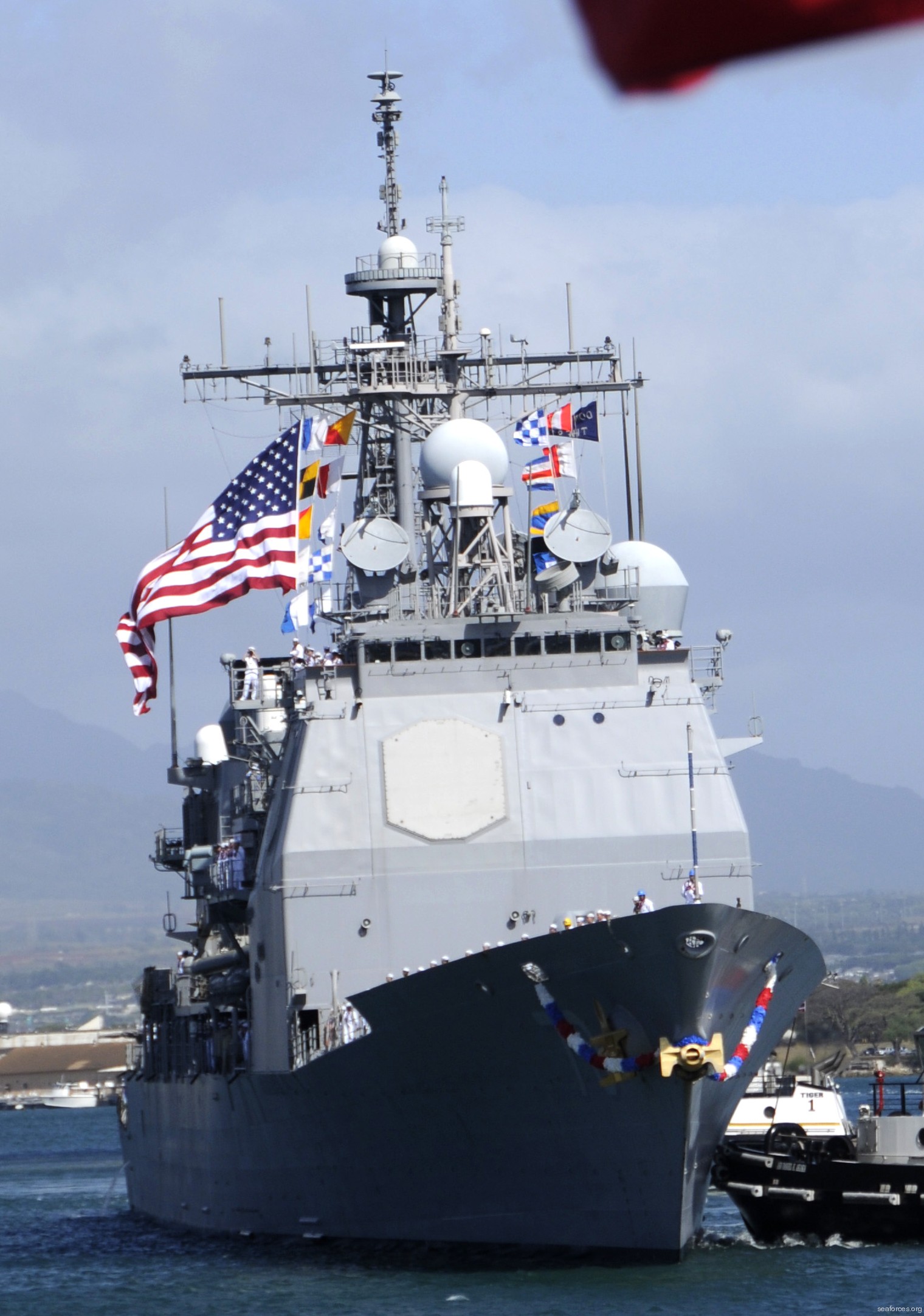 returning to Joint Base Pearl Harbor-Hickam, Hawaii - April 2010 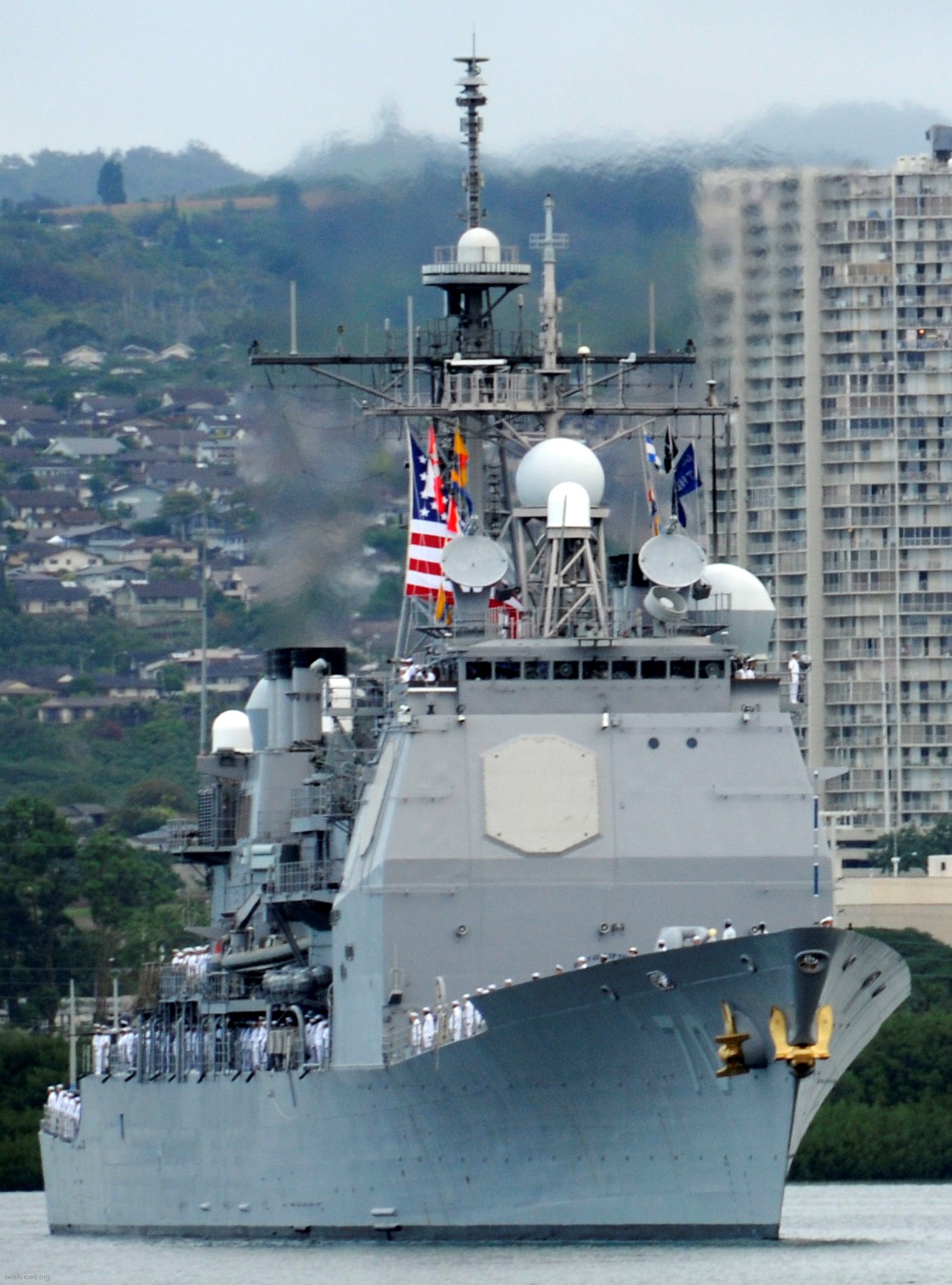 Pearl Harbor, Hawaii - December 2009 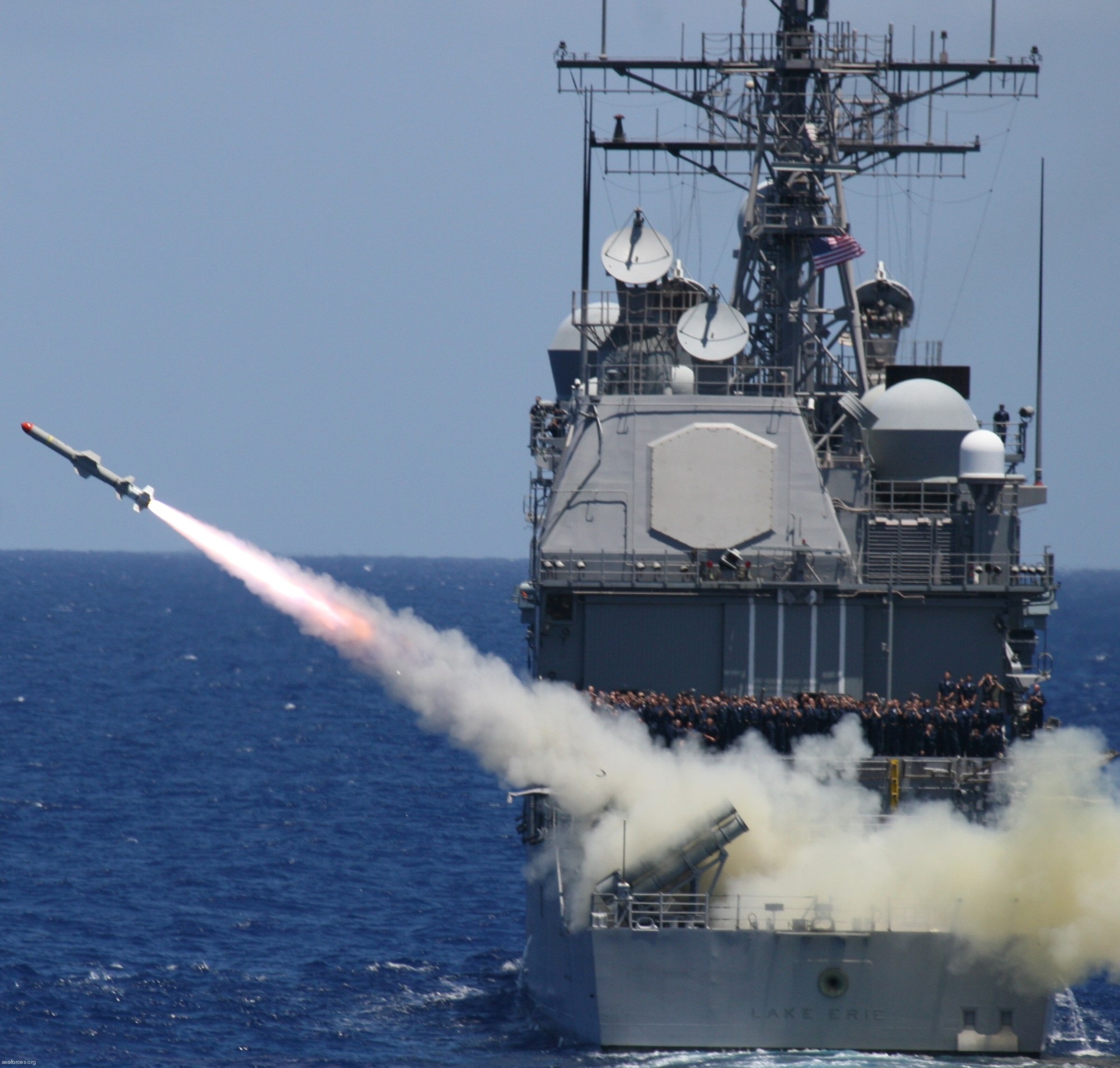 firing an RGM-84 Harpoon SSM during exercise RIMPAC 08 - Pacific Ocean - July 2008 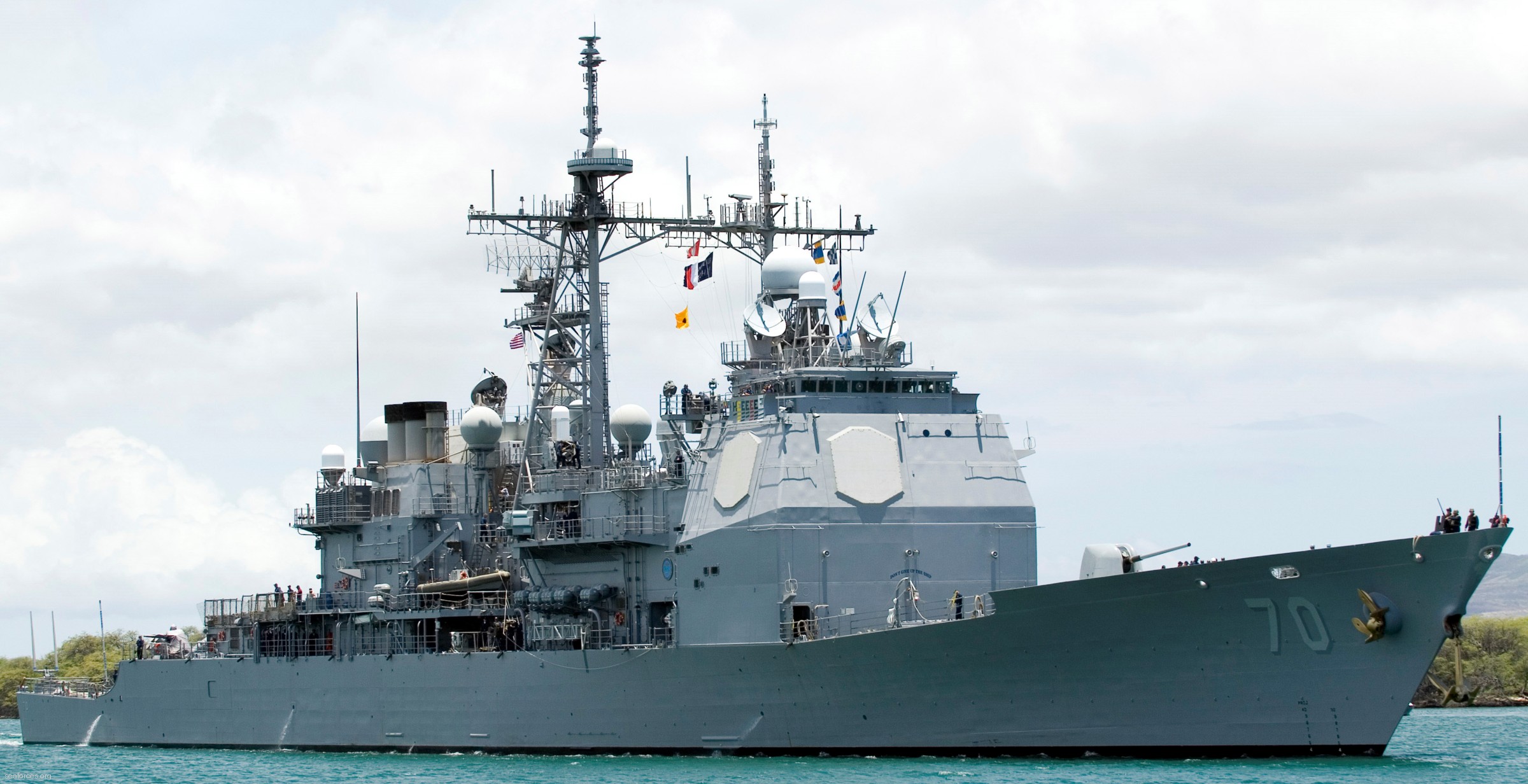 arriving at Naval Station Pearl Harbor, Hawaii for exercise RIMPAC 08 - June 2008 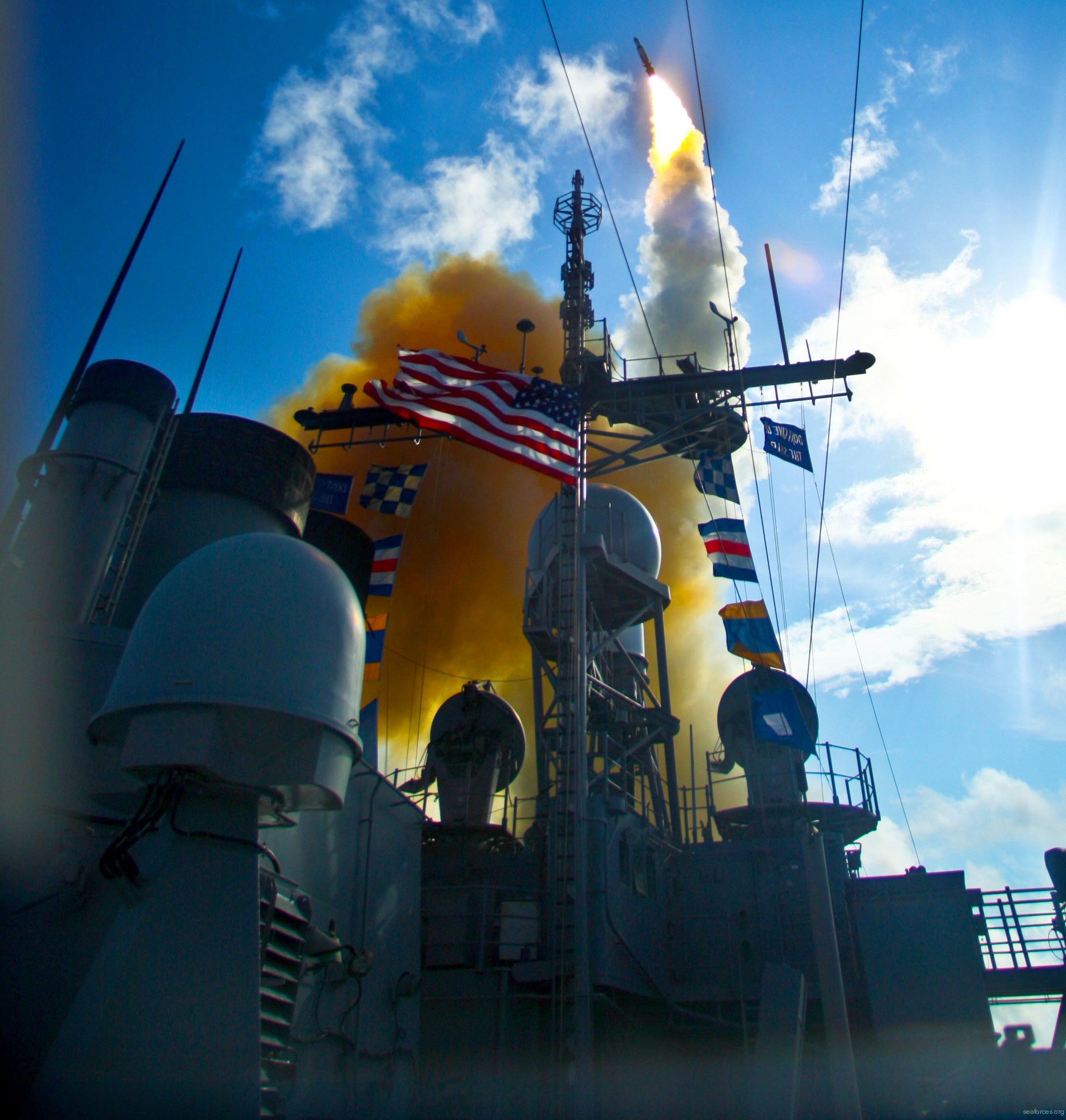 a modified RIM-156 Standard Missile SM-2MR Block IV Interceptor was launched - Pacific Ocean - June 2008 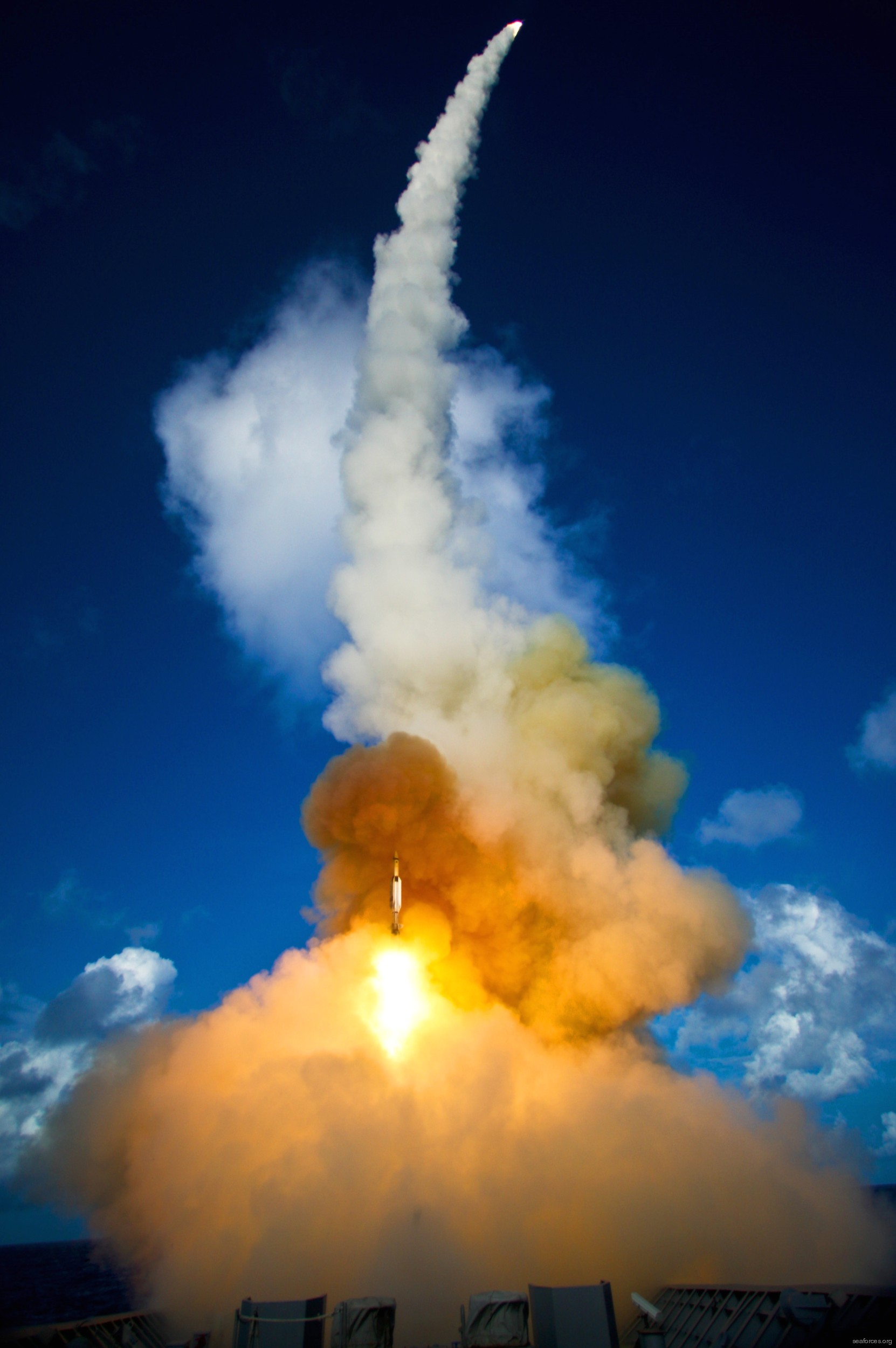 two modified RIM-156 Standard Missiles SM-2MR Block IV Interceptor were launched - Pacific Ocean - June 2008 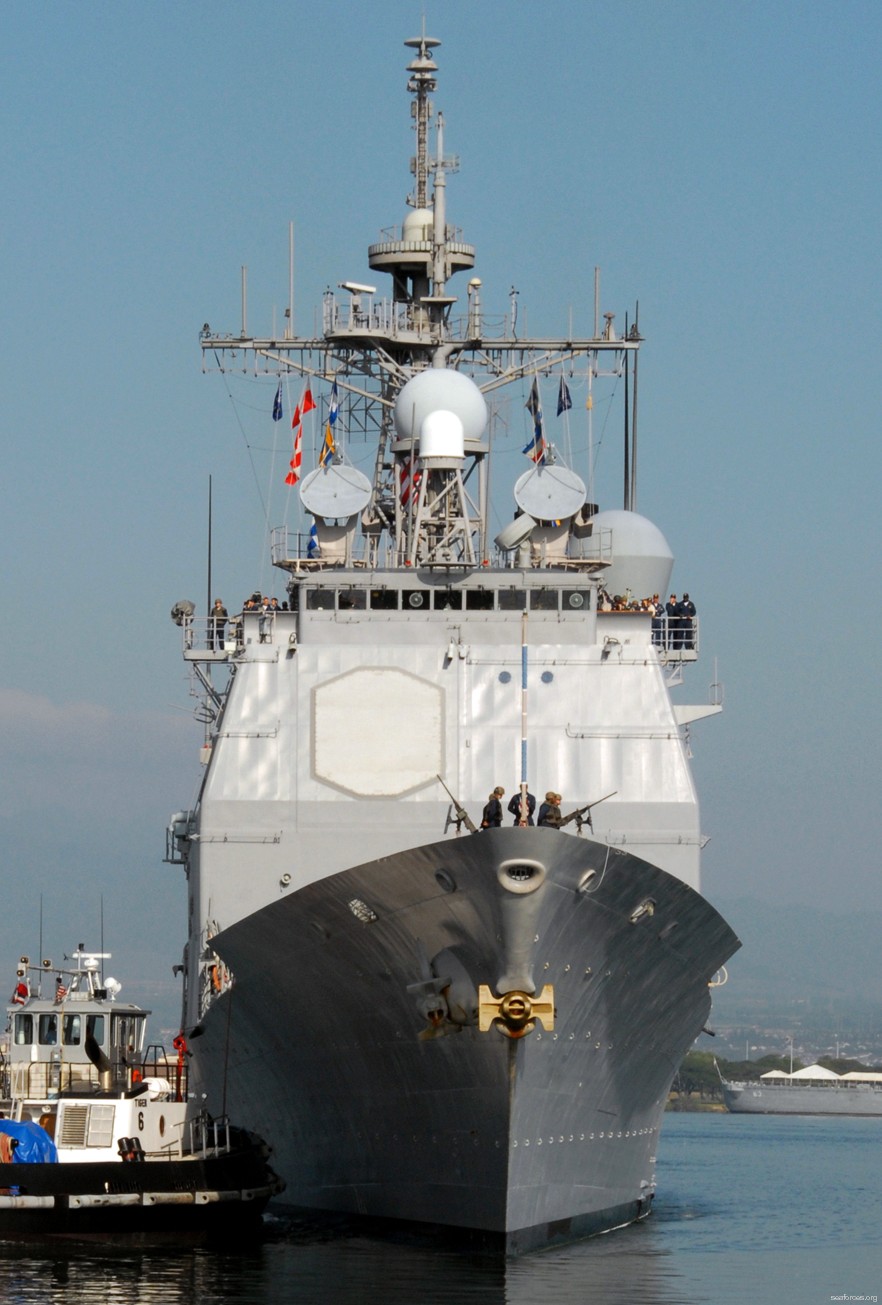 Pearl Harbor, Hawaii - February 2008 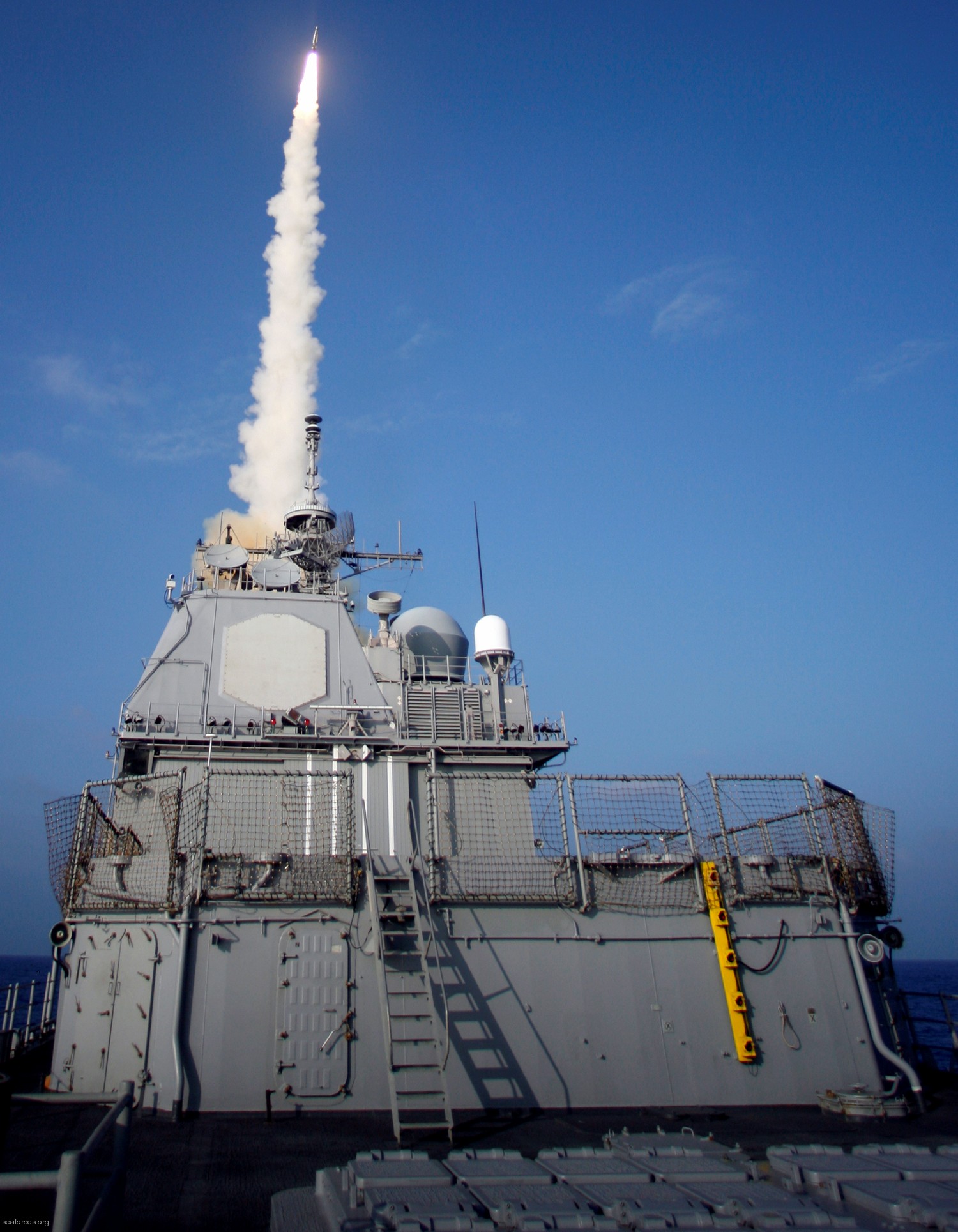 a single modified RIM-161 Standard Missile-3 (SM-3) launches from the AEGIS cruiser USS Lake Erie (CG 70), successfully impacting a non-functioning National Reconnaissance Office satellite approximately 247 kilometers (133 nautical miles) over the Pacific Ocean, as it traveled in space at more than 17,000 mph - February 2008 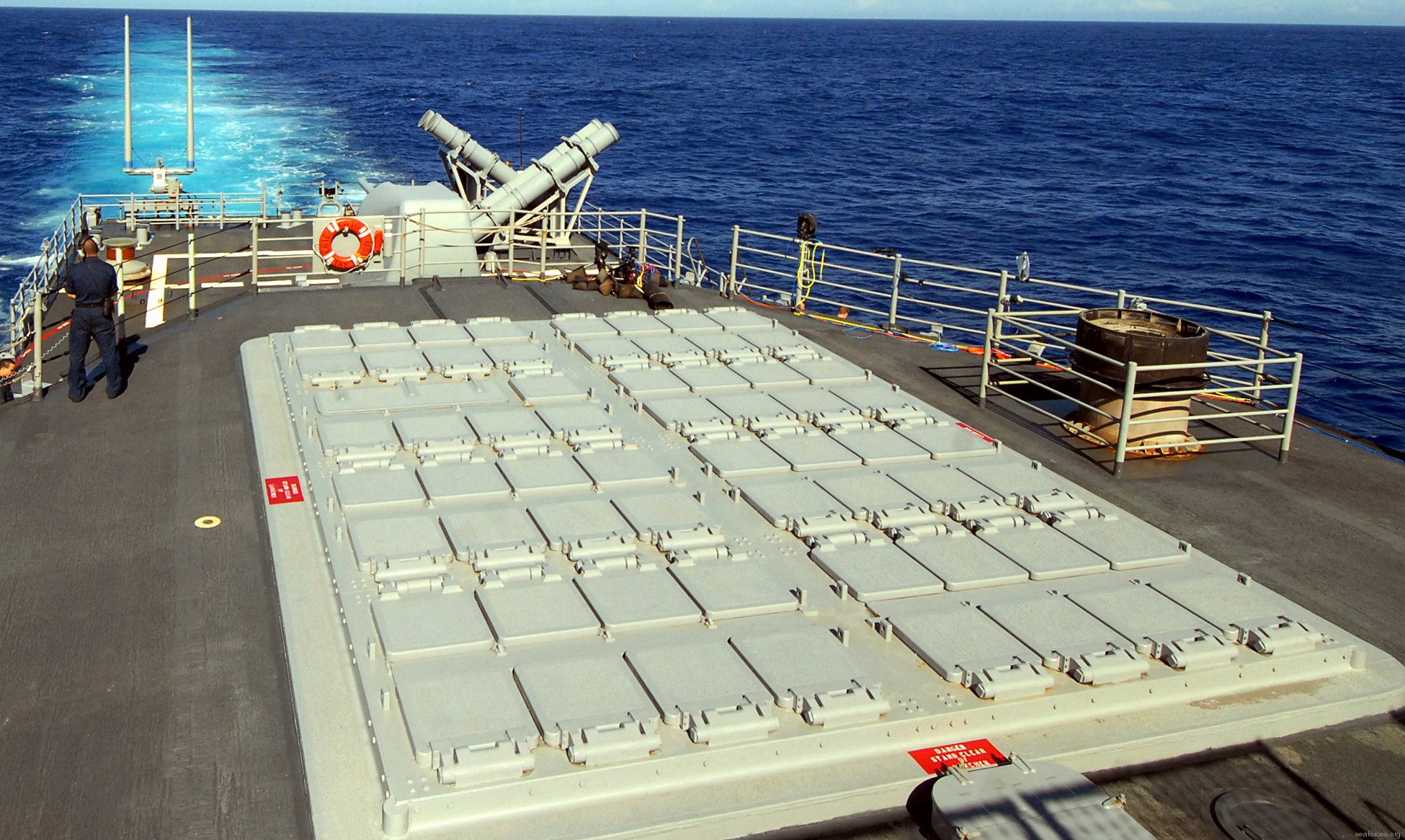 aft Mk-41 Vertical Launching System (VLS) 61-cells - Pacific Ocean - February 2008  Pearl Harbor, Hawaii - December 2007  Pearl Harbor, Hawaii - December 2007 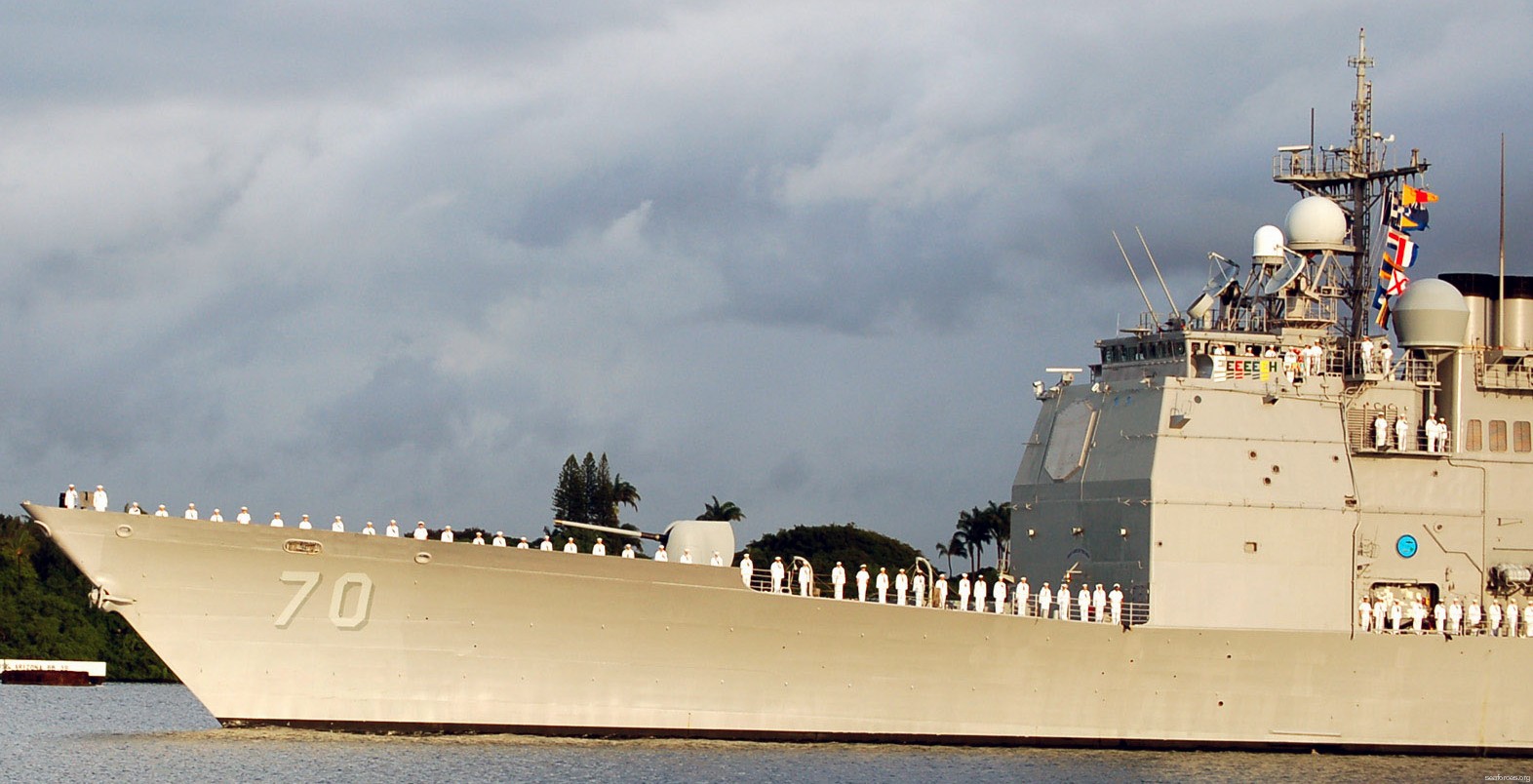 Pearl Harbor, Hawaii - December 2007 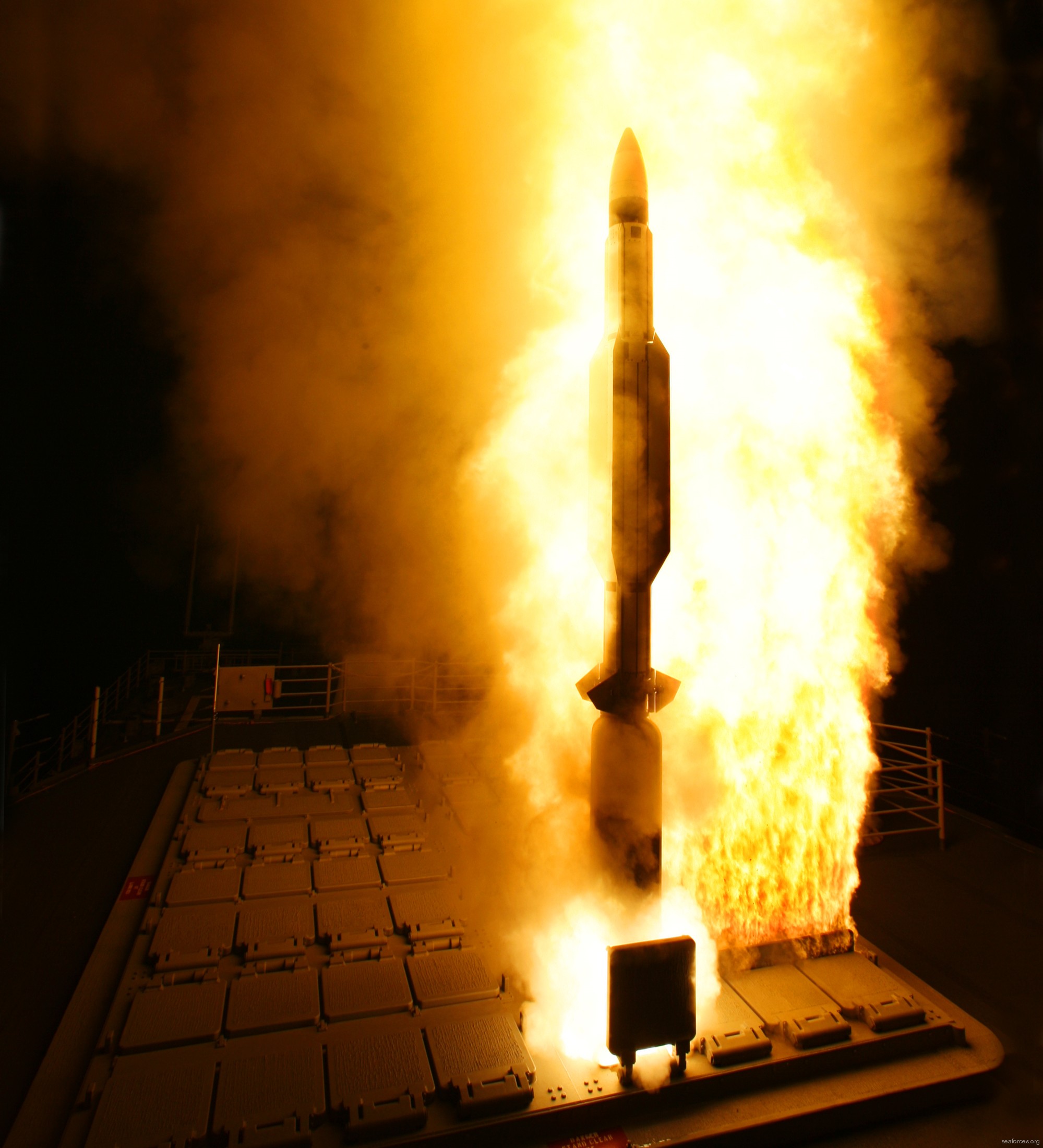 a RIM-161 Standard Missile SM-3 was launched from the aft Mk-41 VLS - November 2007 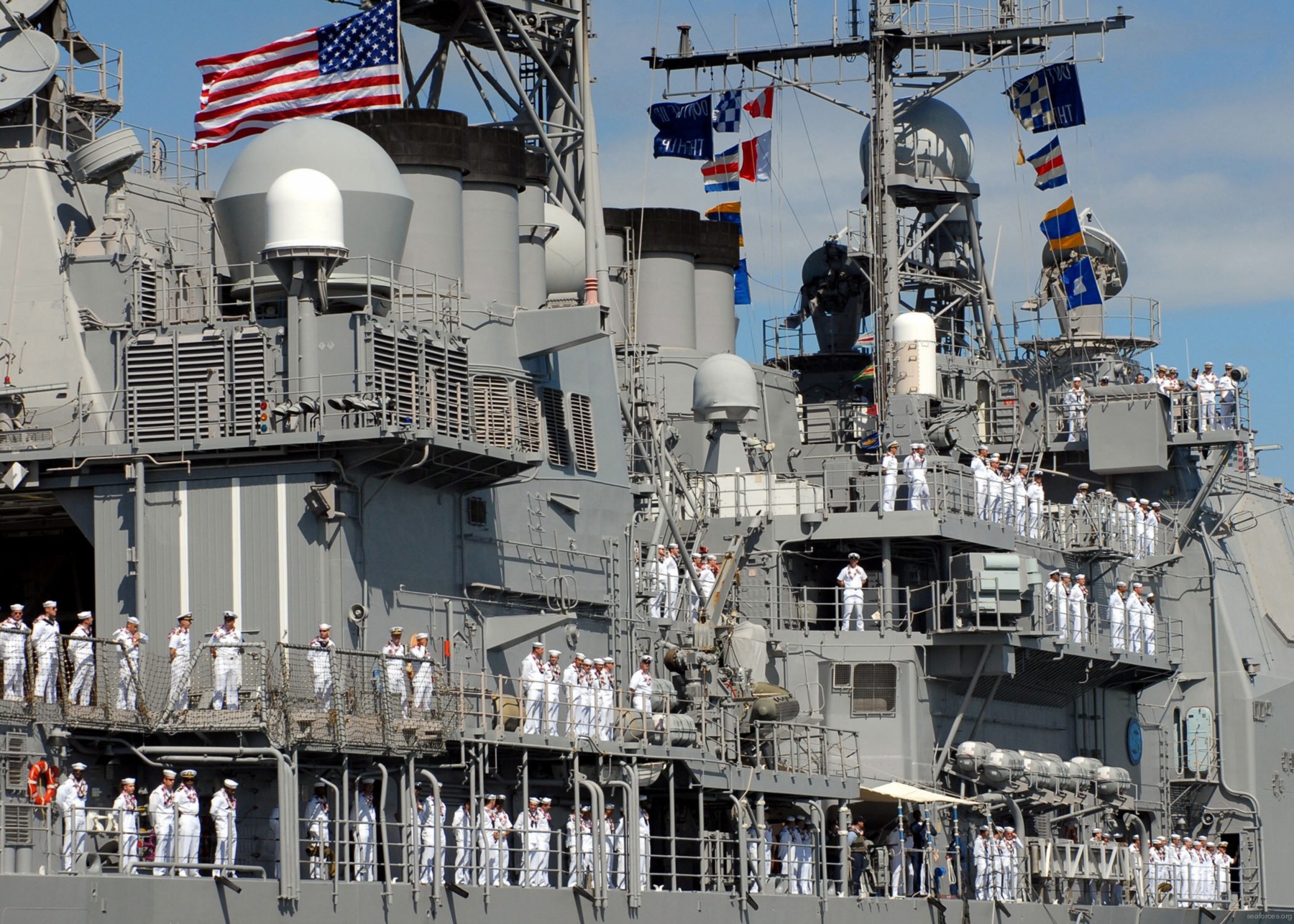 returning to Pearl Harbor, Hawaii - September 2007 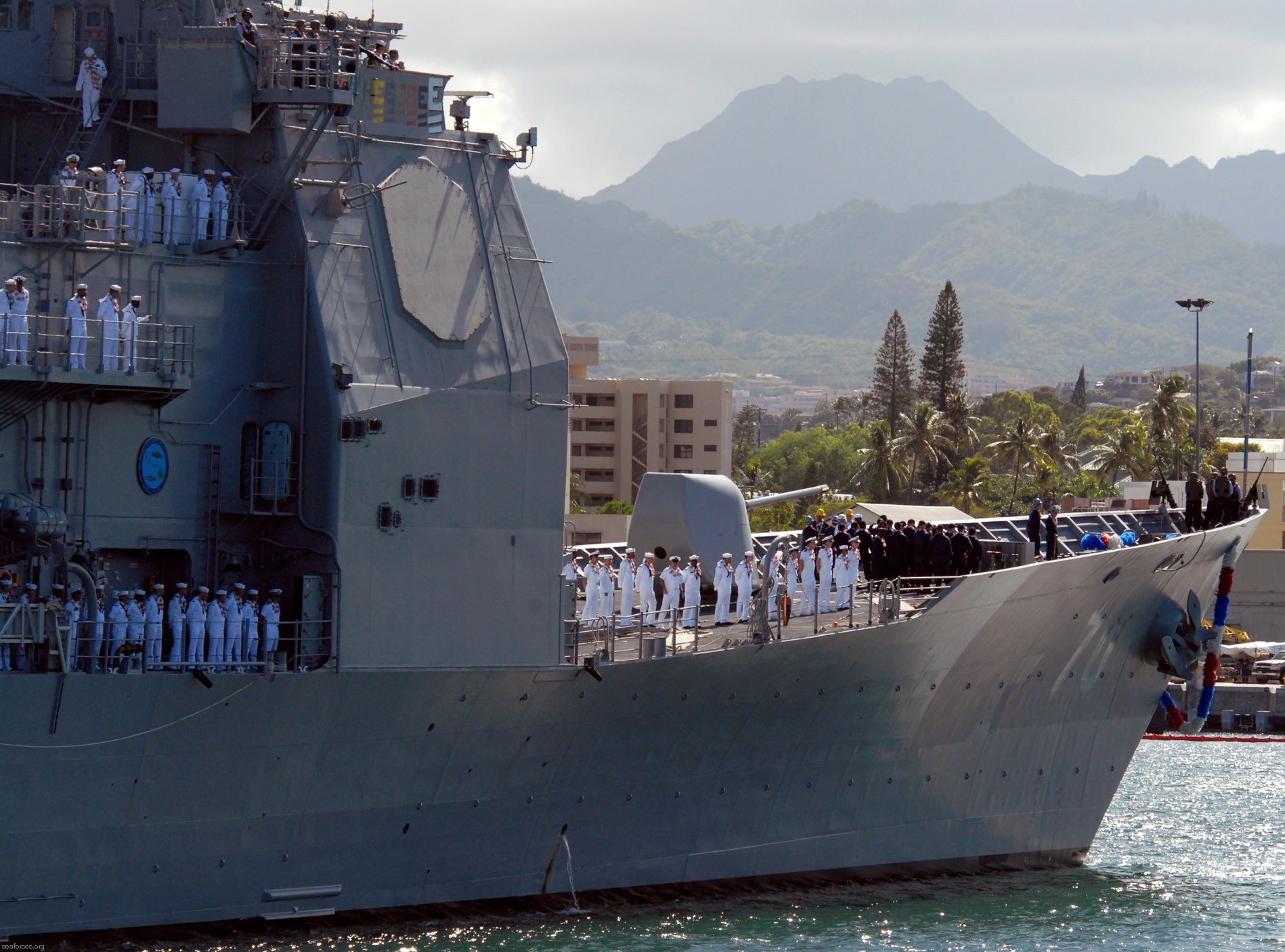 returning to Pearl Harbor, Hawaii - September 2007 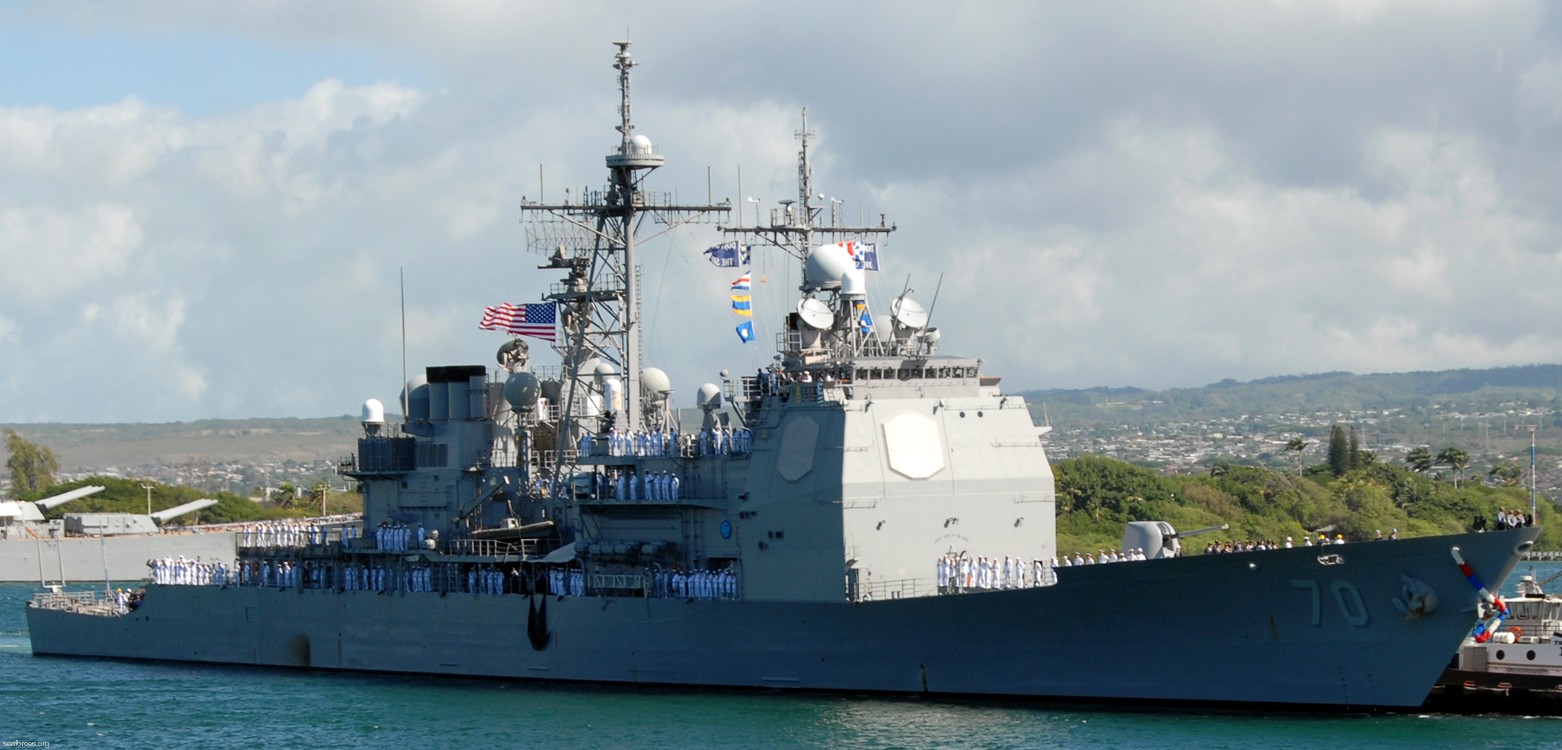 returning to Pearl Harbor, Hawaii - September 2007 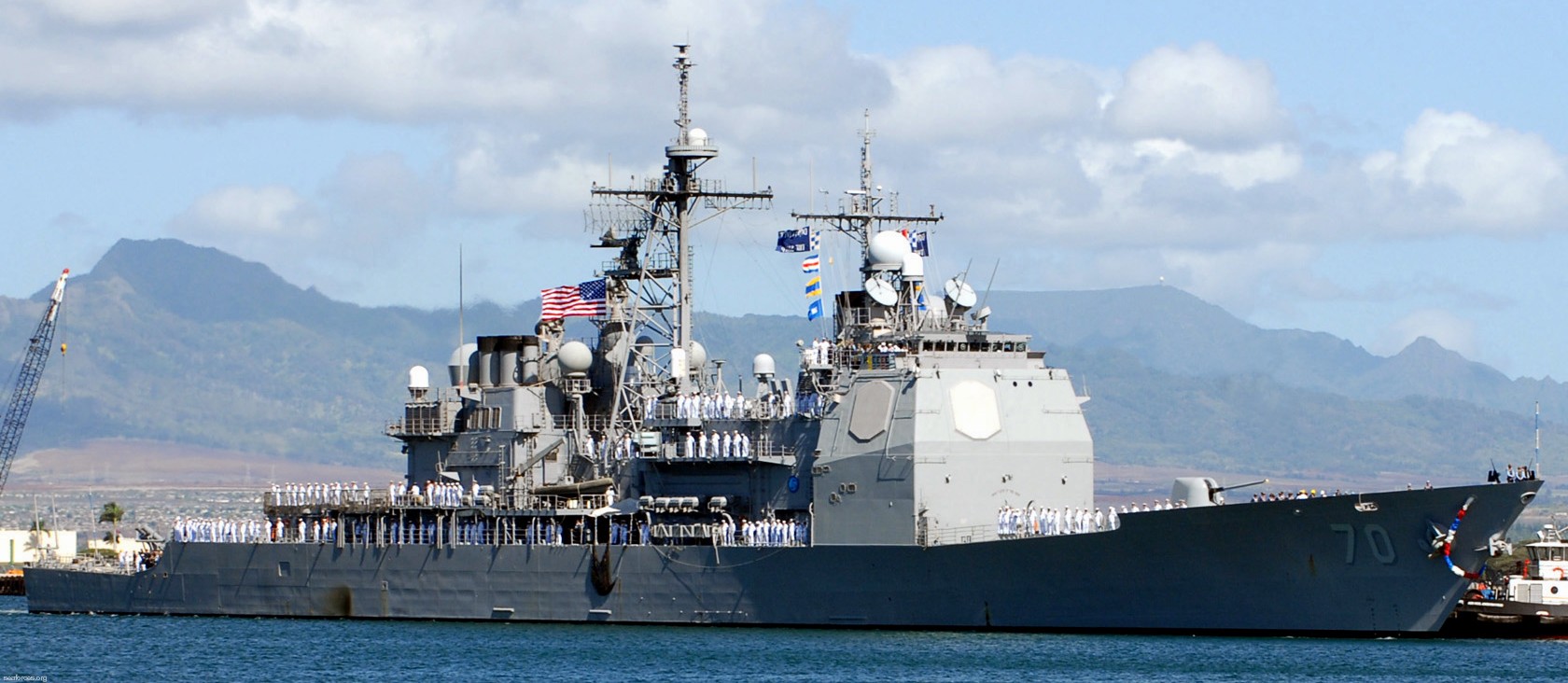 returning to Pearl Harbor, Hawaii - September 2007 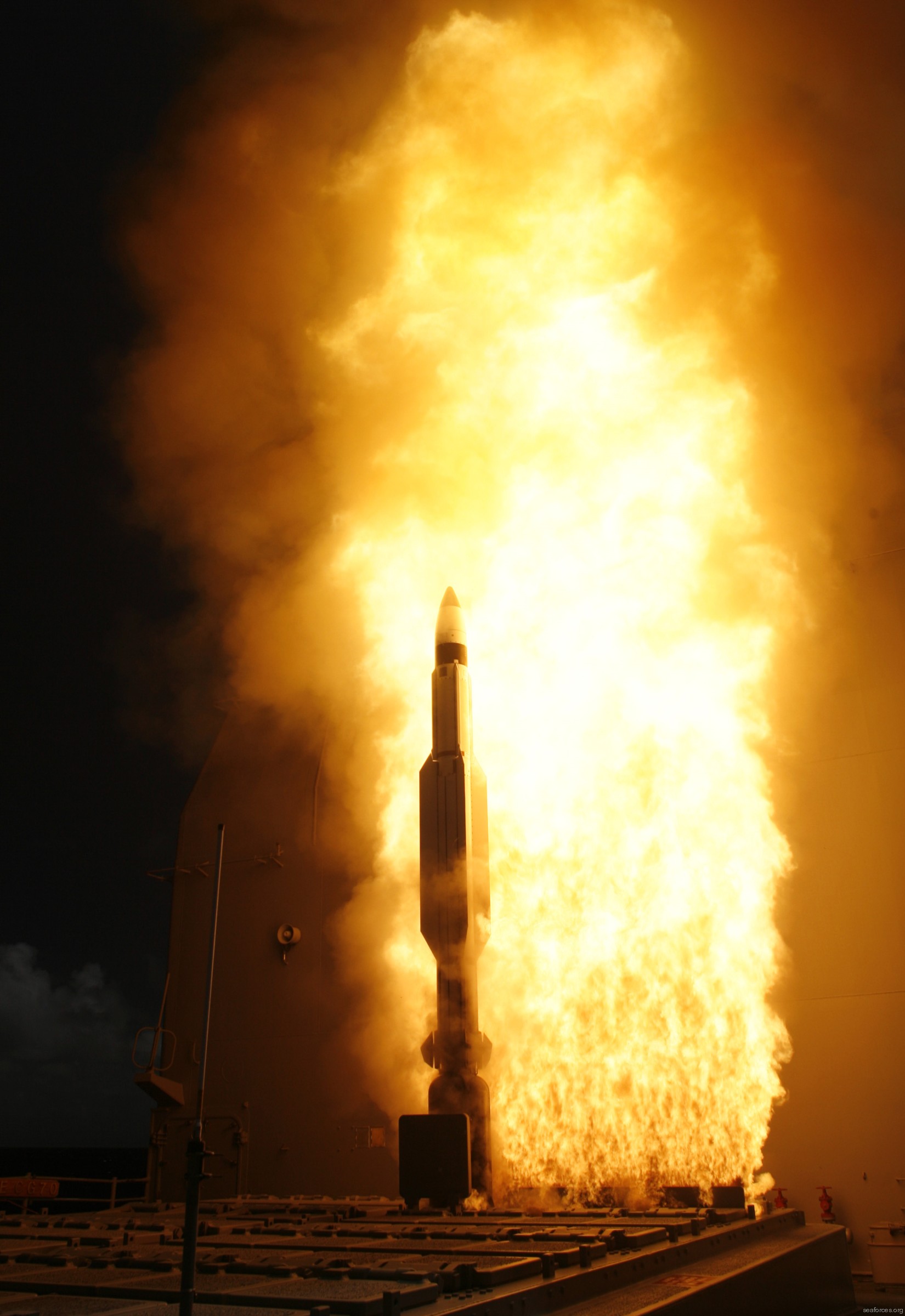 a RIM-161 Standard Missile SM-3 was launched from the forward Mk-41 VLS during tests - Pacific Ocean - April 2007 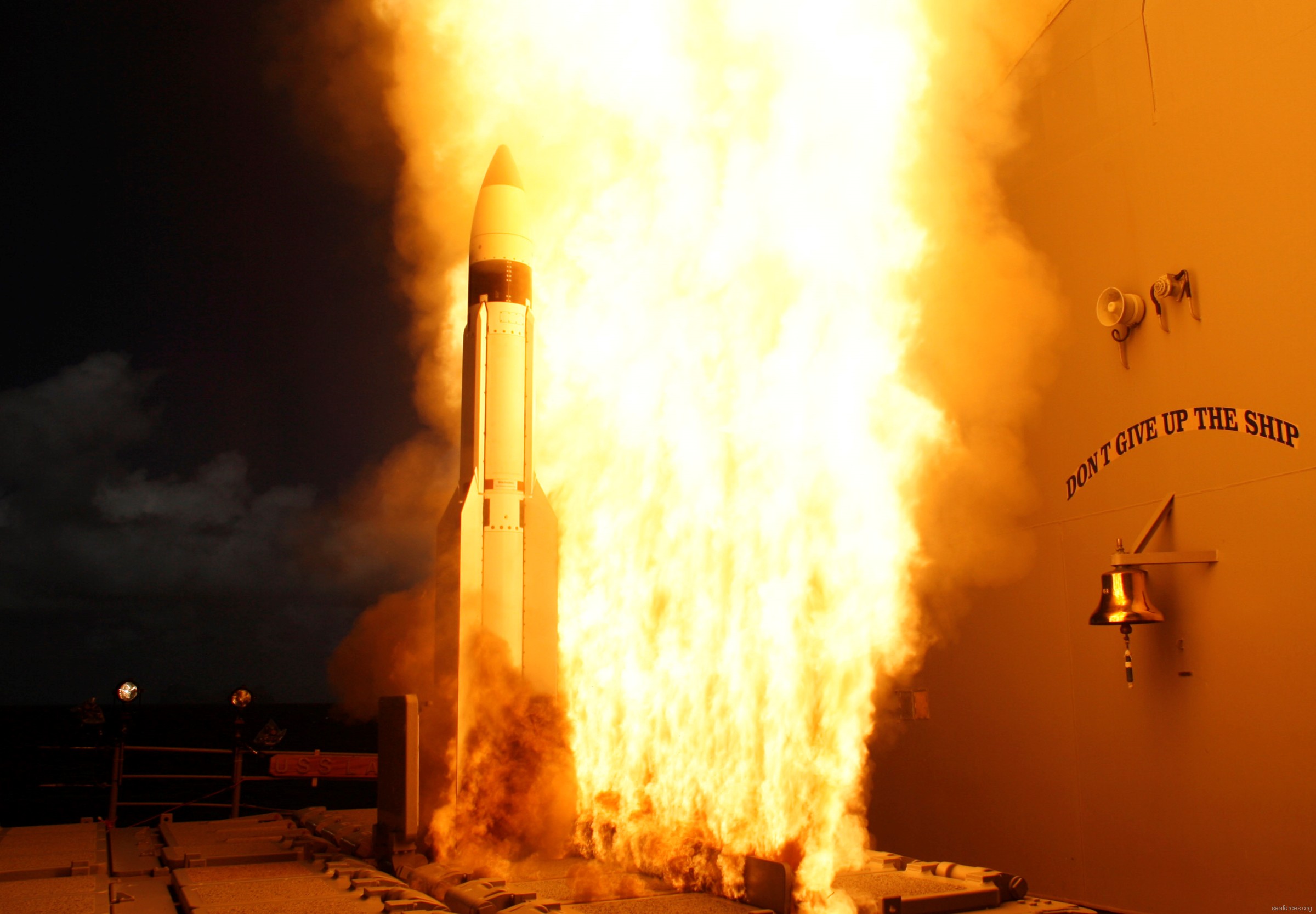 a RIM-161 Standard Missile SM-3 was launched from the forward Mk-41 VLS during tests - Pacific Ocean - April 2007 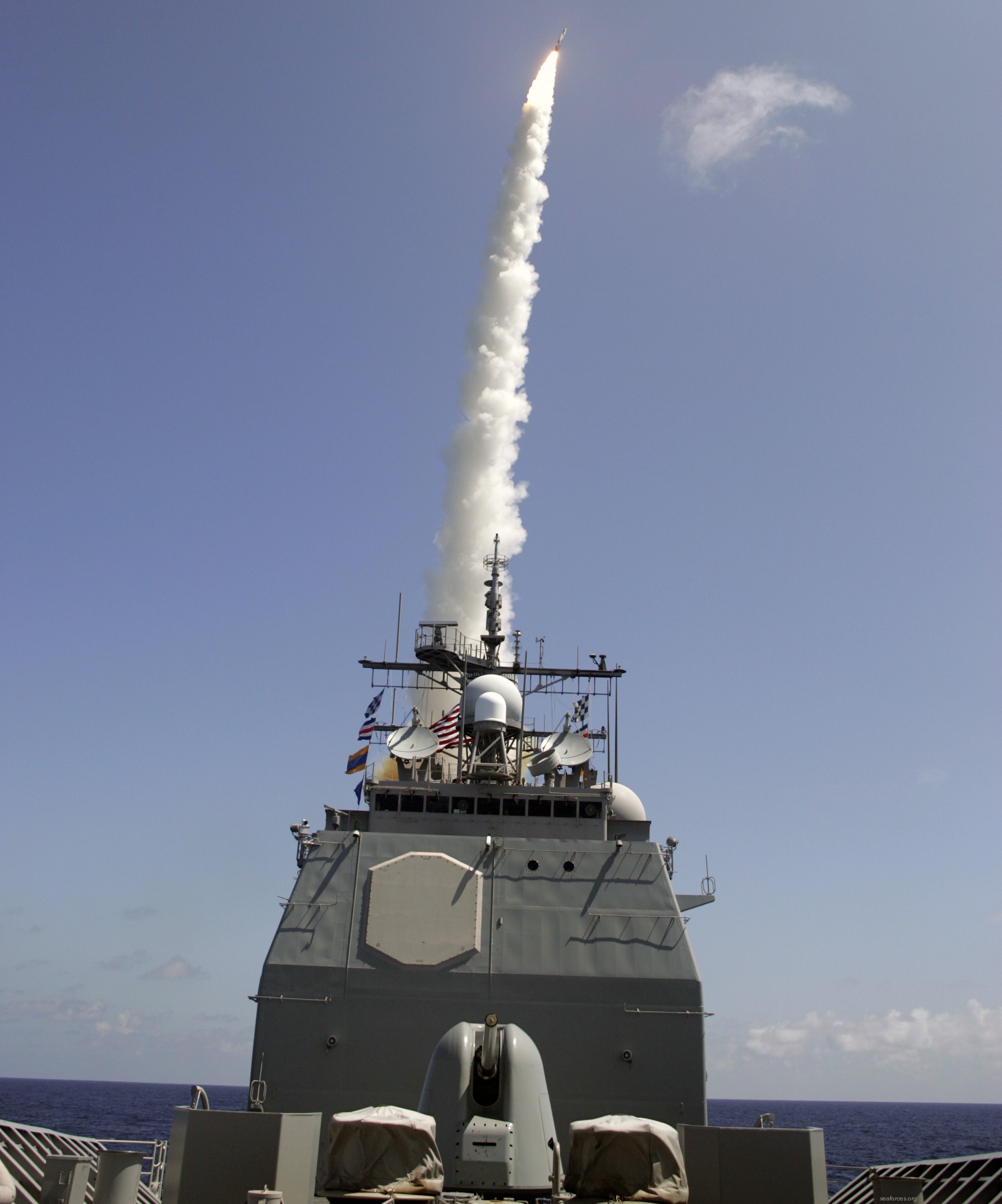 a Standard Missile SM-2 was launched - Pacific Ocean - May 2006 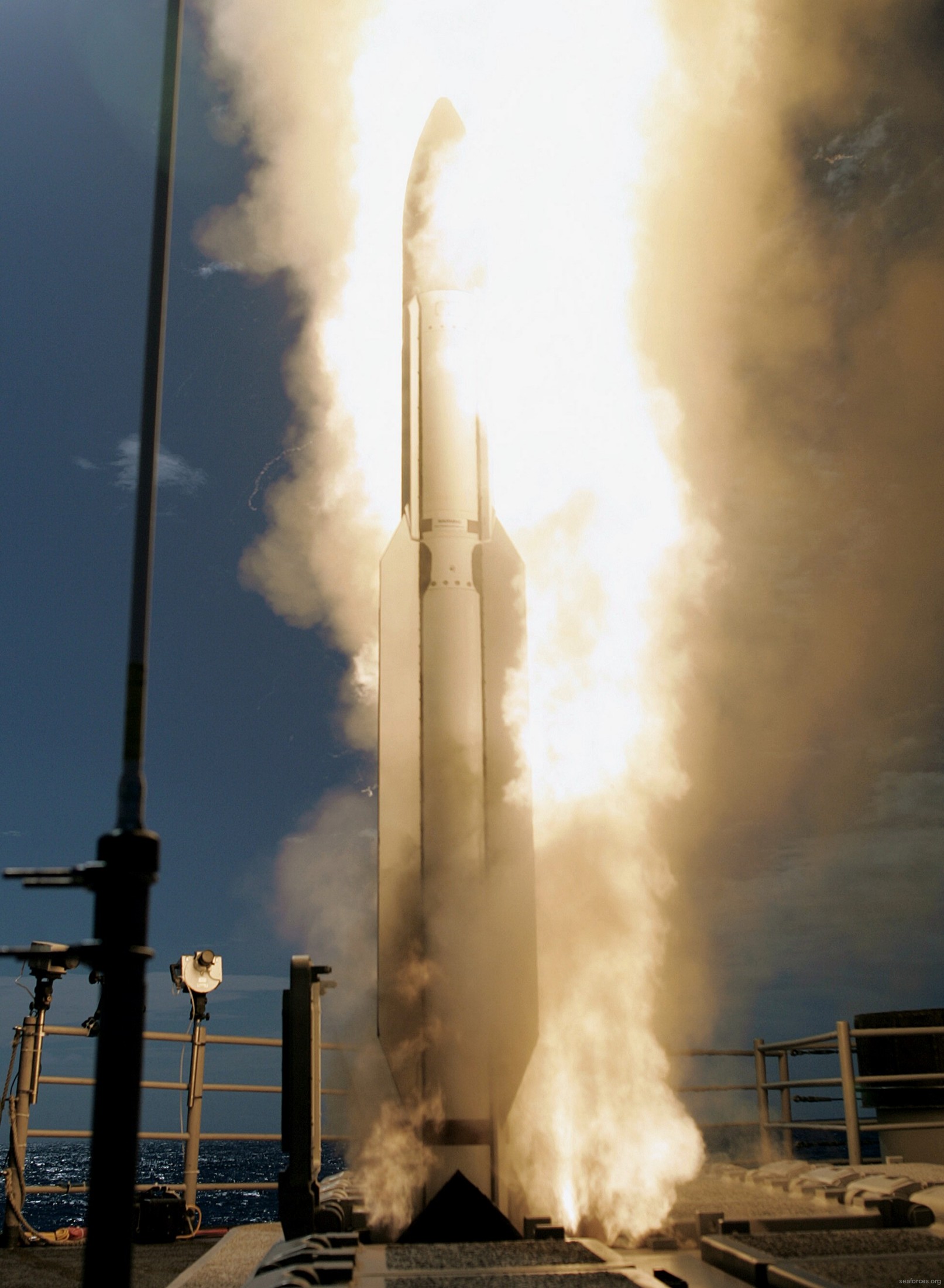 a RIM-161 Standard Missile SM-3 was launched from the Mk-41 VLS during tests - Pacific Ocean - March 2006 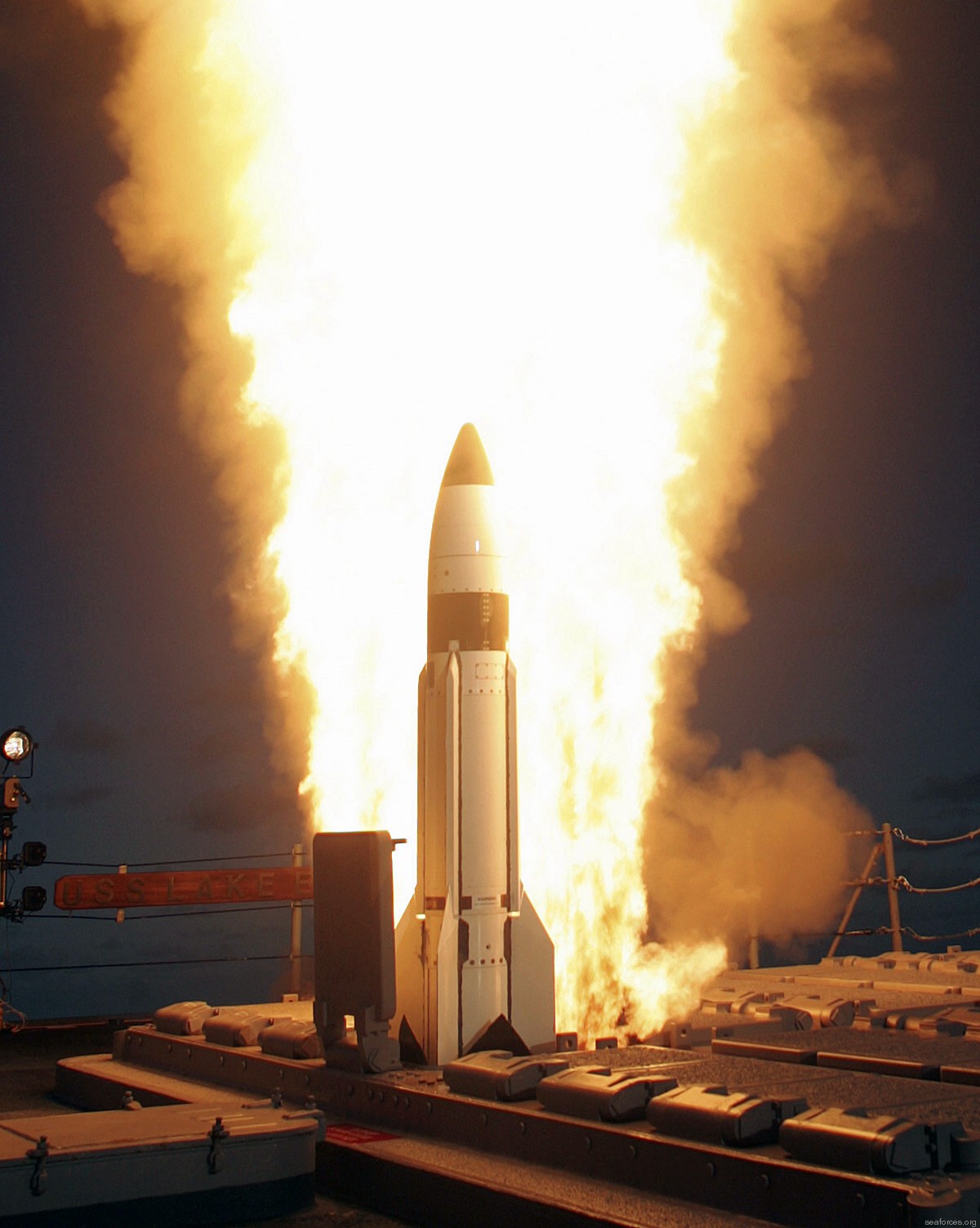 a RIM-161 Standard Missile SM-3 was launched from the Mk-41 VLS during tests - Pacific Ocean - November 2005 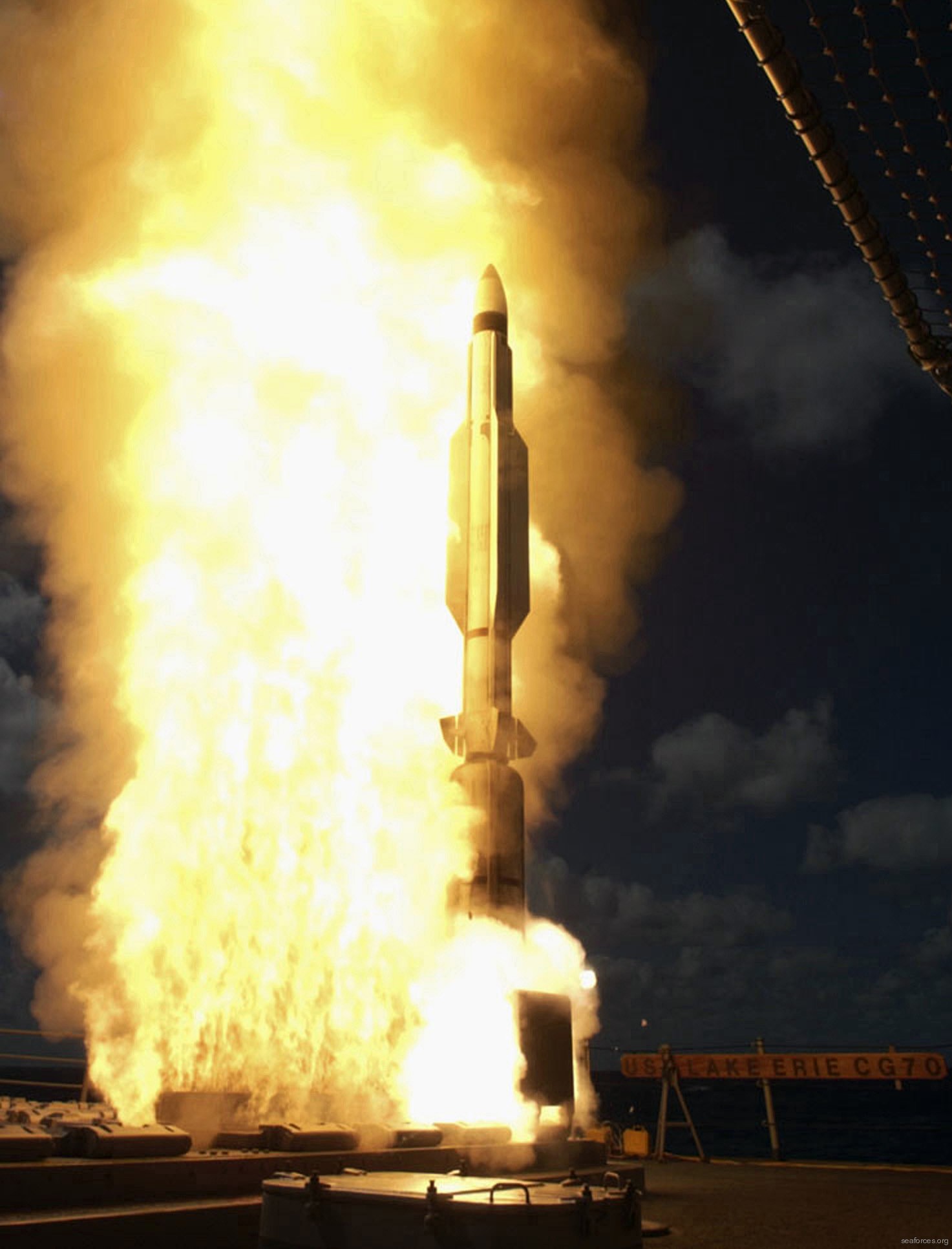 a RIM-161 Standard Missile SM-3 was launched from the Mk-41 VLS during tests - Pacific Ocean - February 2005 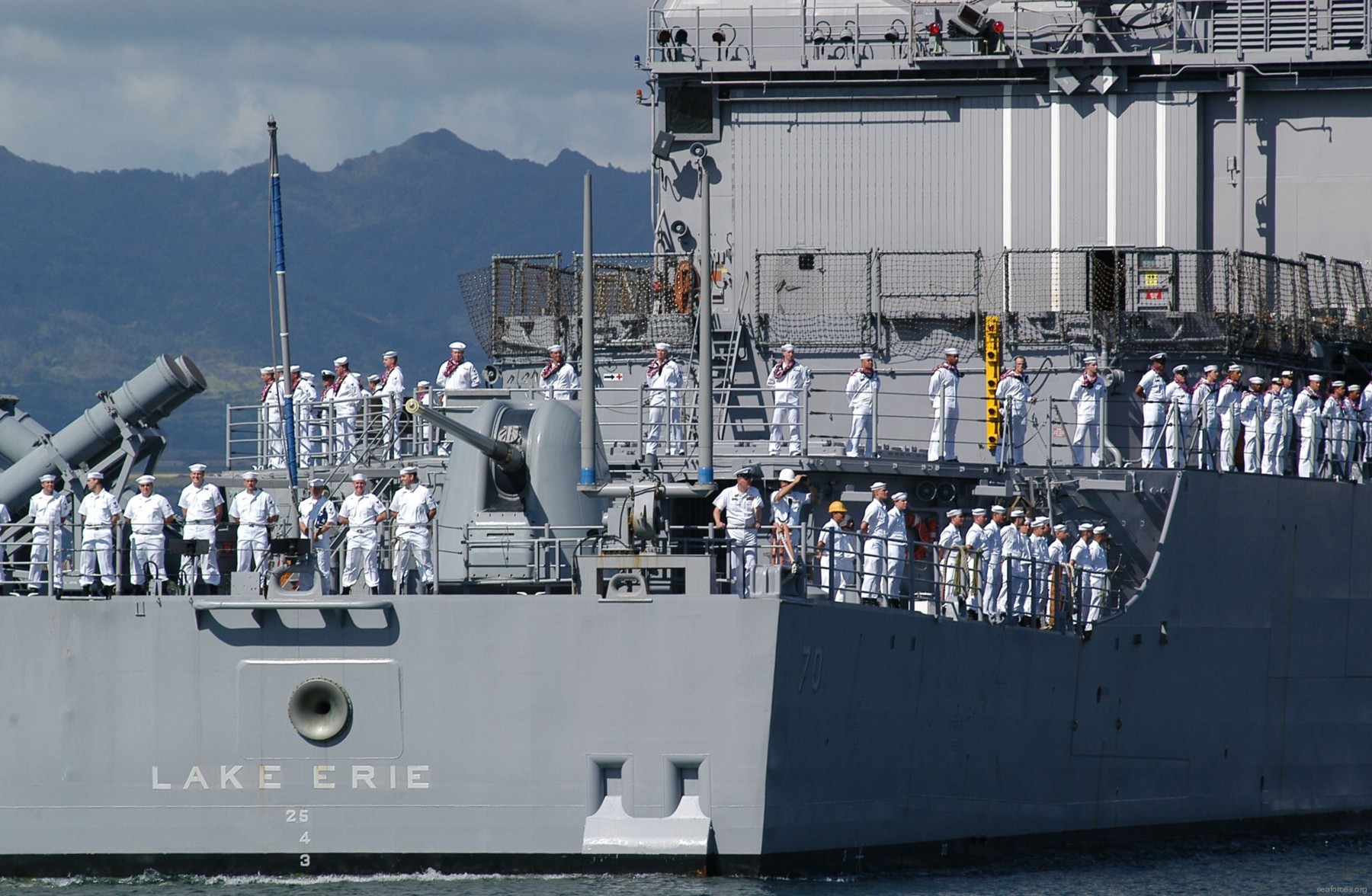 returning to Pearl Harbor, Hawaii - December 2004 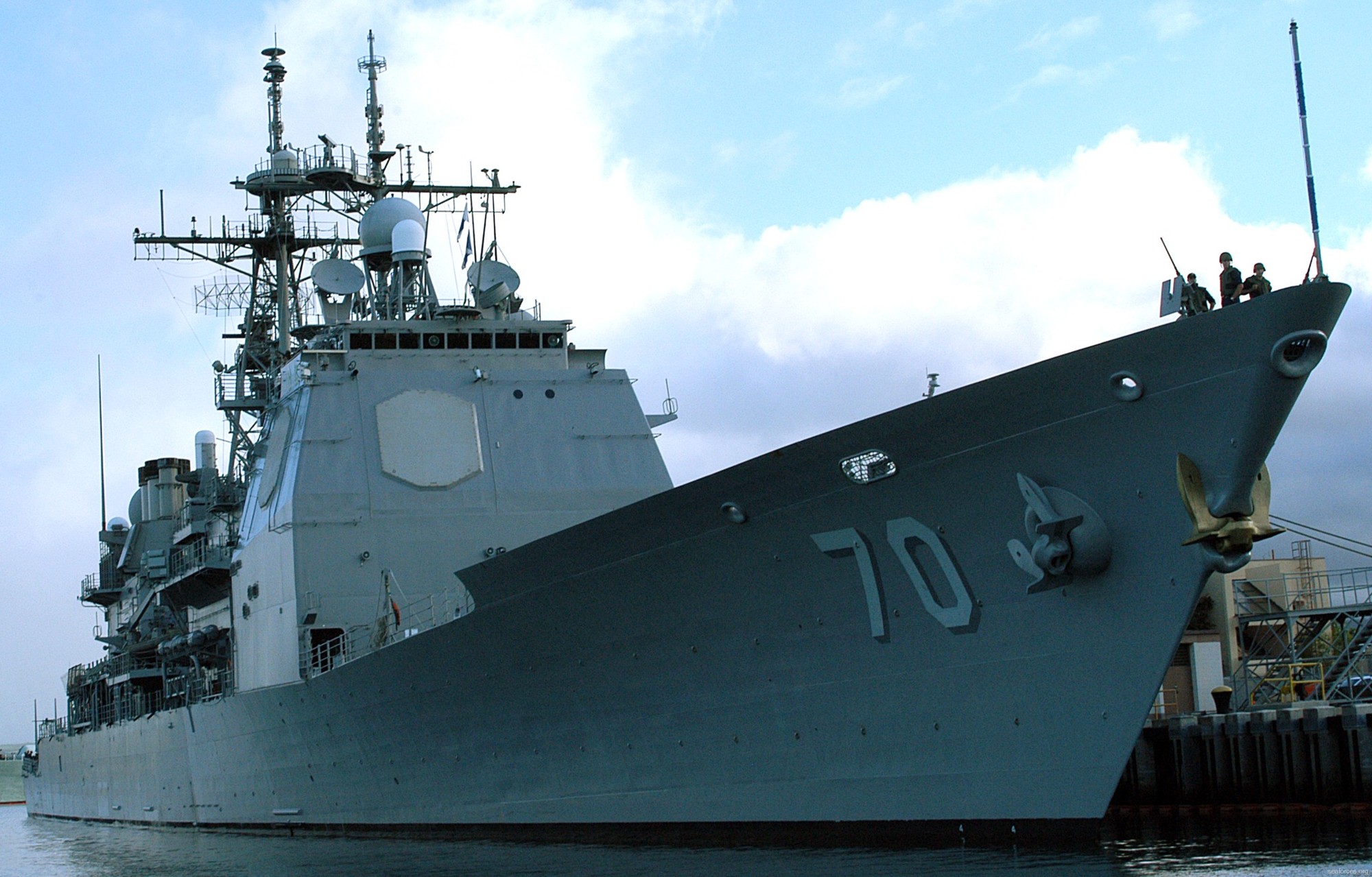 Naval Station Pearl Harbor, Hawaii - July 2004 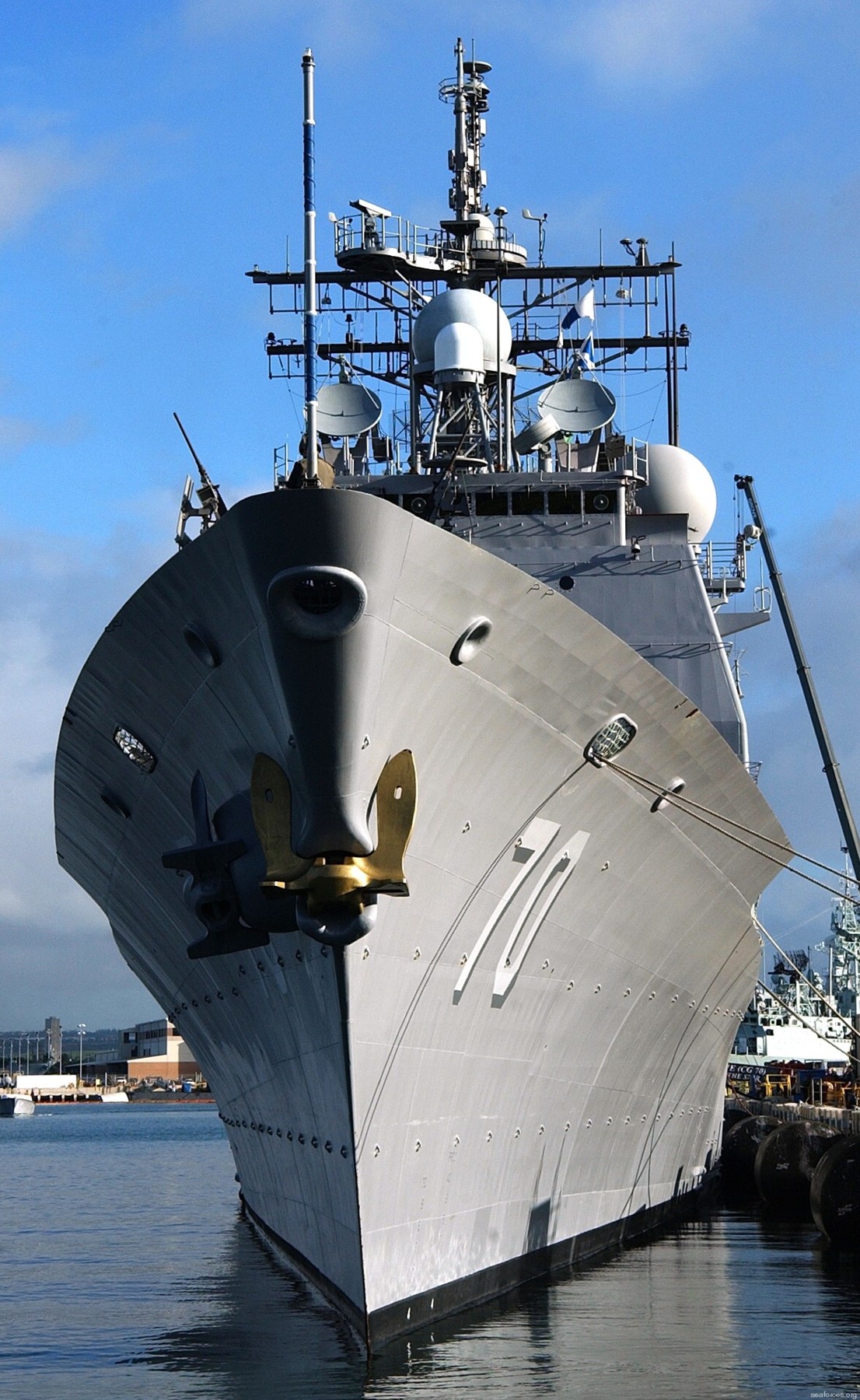 Naval Station Pearl Harbor, Hawaii - July 2004 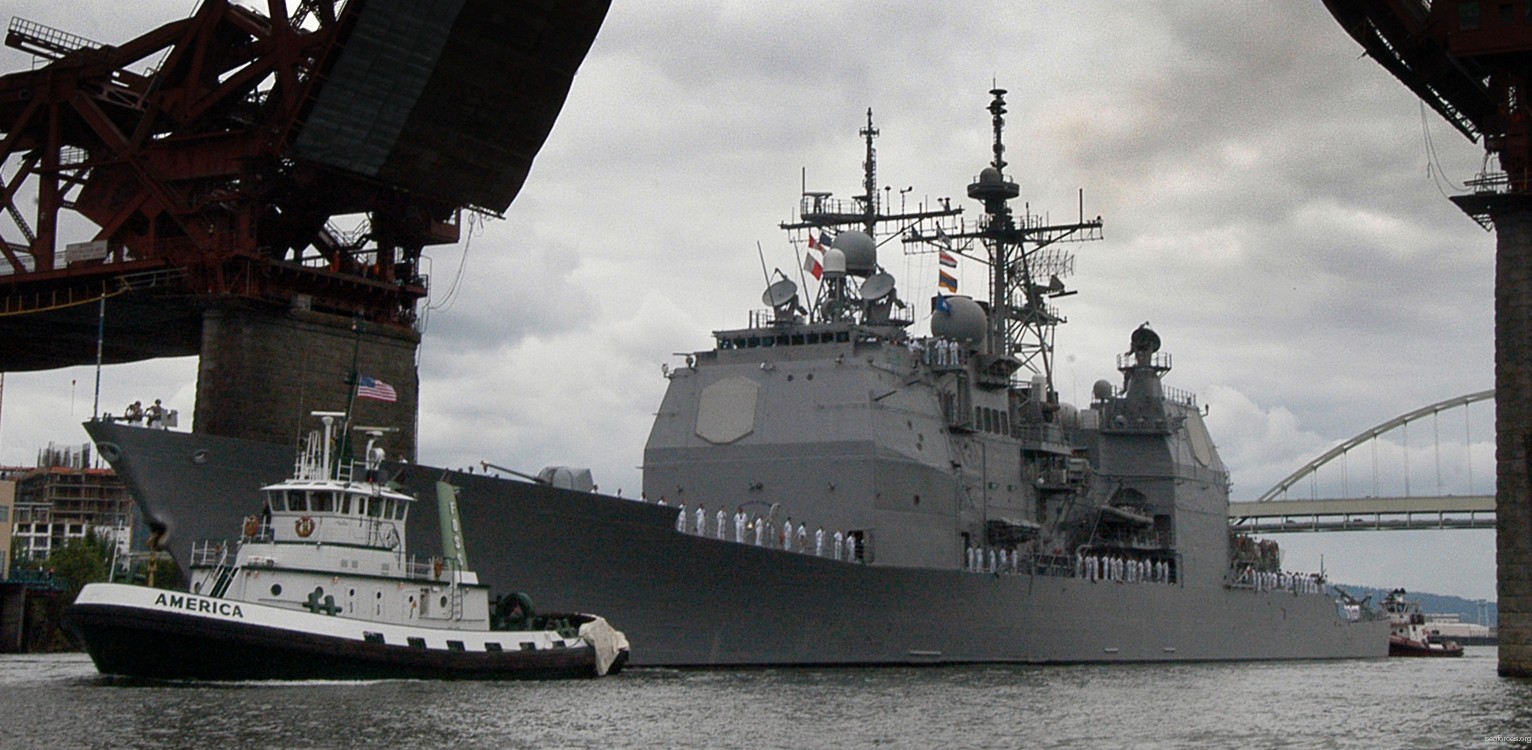 Portland, Oregon - June 2004 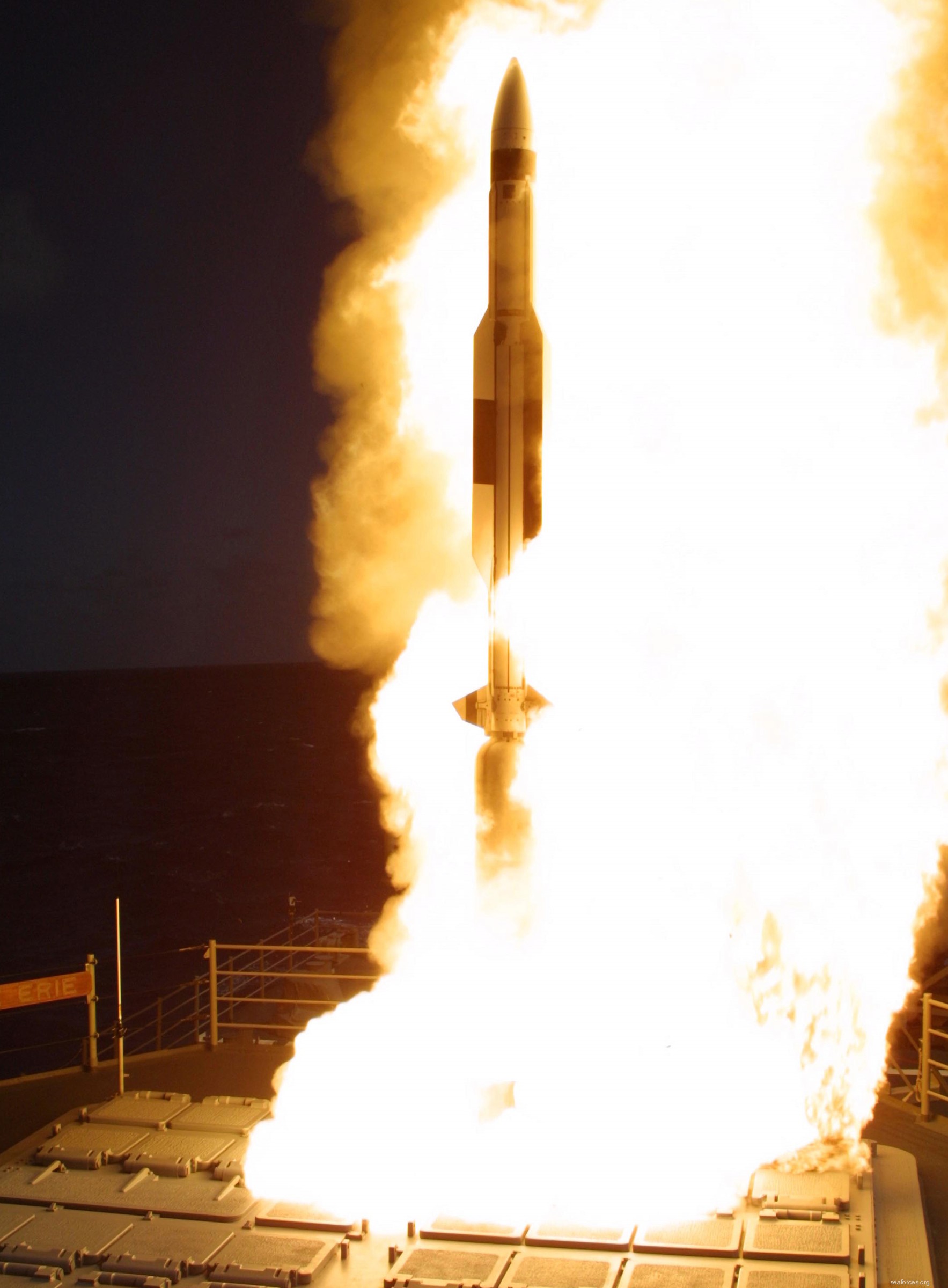 The Missile defense Agency (MDA) and the U.S. Navy announced a successful flight test in the continuing development of the Sea-Based Midcourse (SMD) element of the Ballistic Missile Defense System capability. Flight Mission Three (FM-3) involved the firing of a developmental Standard Missile Three (SM-3) from USS Lake Erie (CG 70) to intercept an Aries ballistic missile target launched for the Pacific Missile Range Facility on the island of Kauai, Hawaii - June 2002 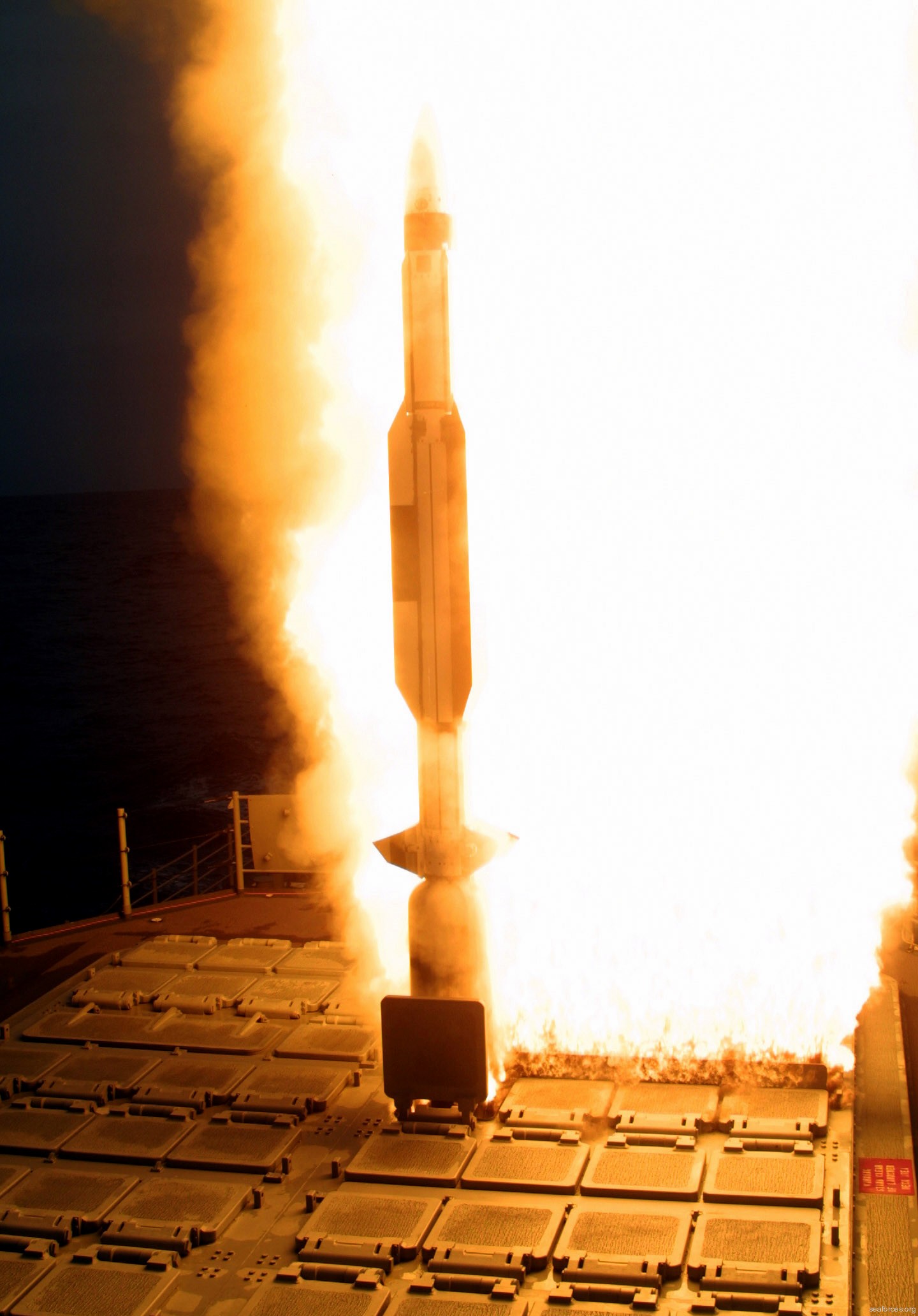 A Standard Missile 3 (SM-3) leaves the ships vertical launch system (VLS) during a combined Missile Defense Agency and U.S. Navy flight test, conducted in the continuing development of a Sea-Based Midcourse (SMD) Ballistic Missile Defense System (BMDS). Test involved the launch of a developmental Standard Missile 3 (SM-3) equipped with a kinetic warhead (KW) interceptor controlled from the Aegis Cruiser, and an Aries target missile launched from the Pacific Missile Range Facility (PMRF) on the island of Kauai, Hawaii. The SM-3 acquired, tracked, and diverted toward the target, successfully demonstrating the SM-3 fourth-stage Kinetic Warhead (KW) guidance, navigation and control - January 2002 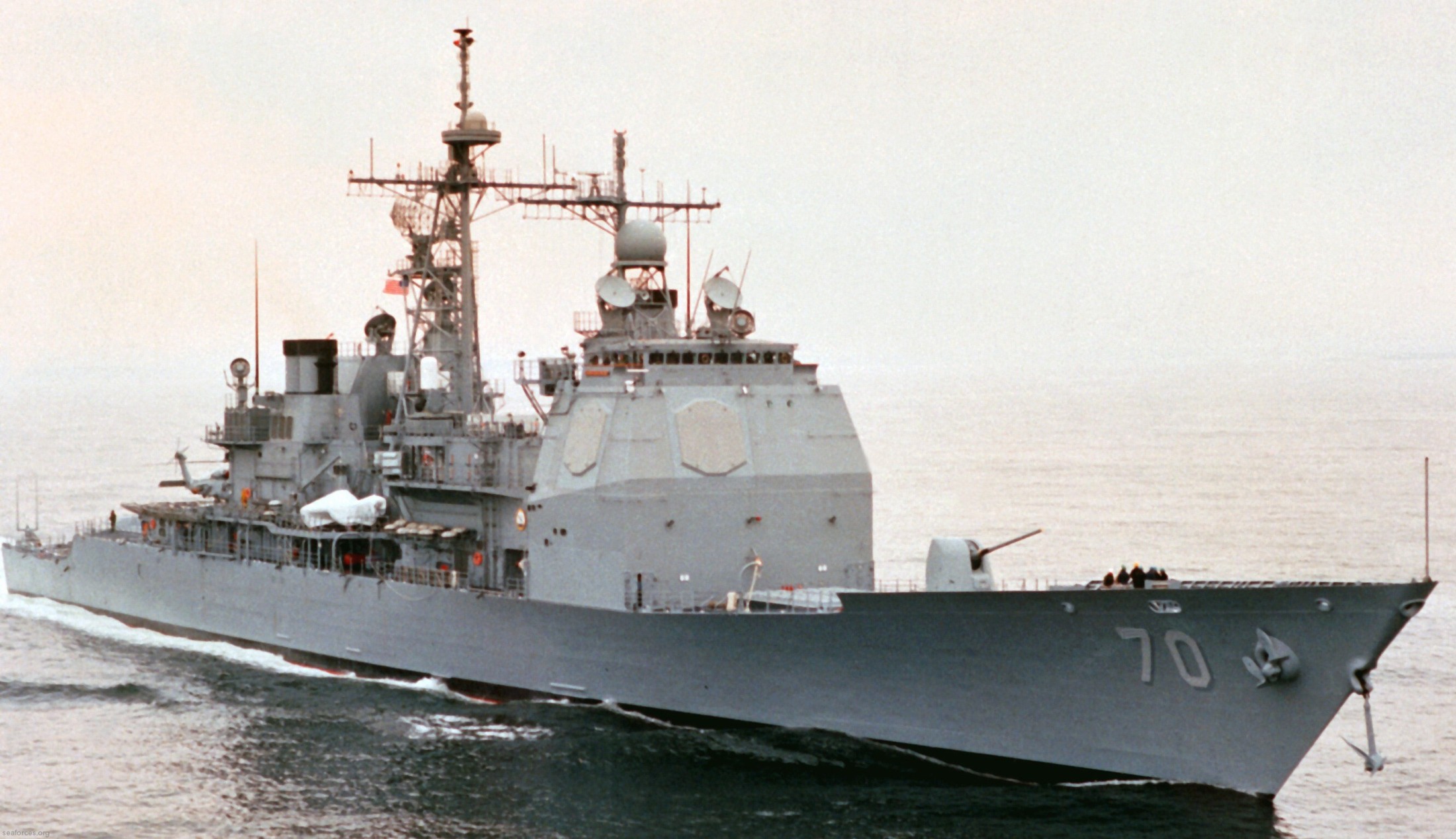 May 1993 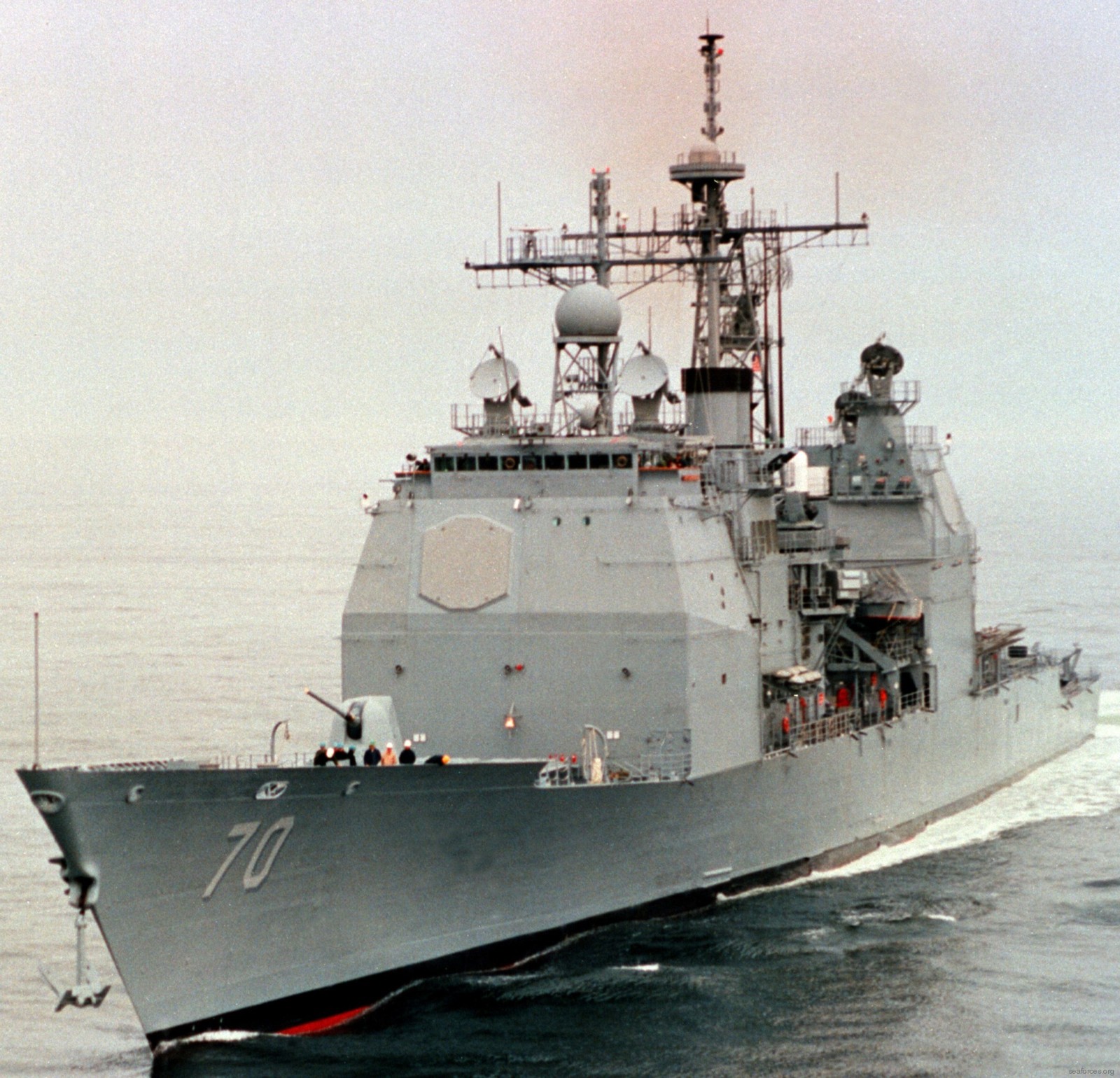 May 1993 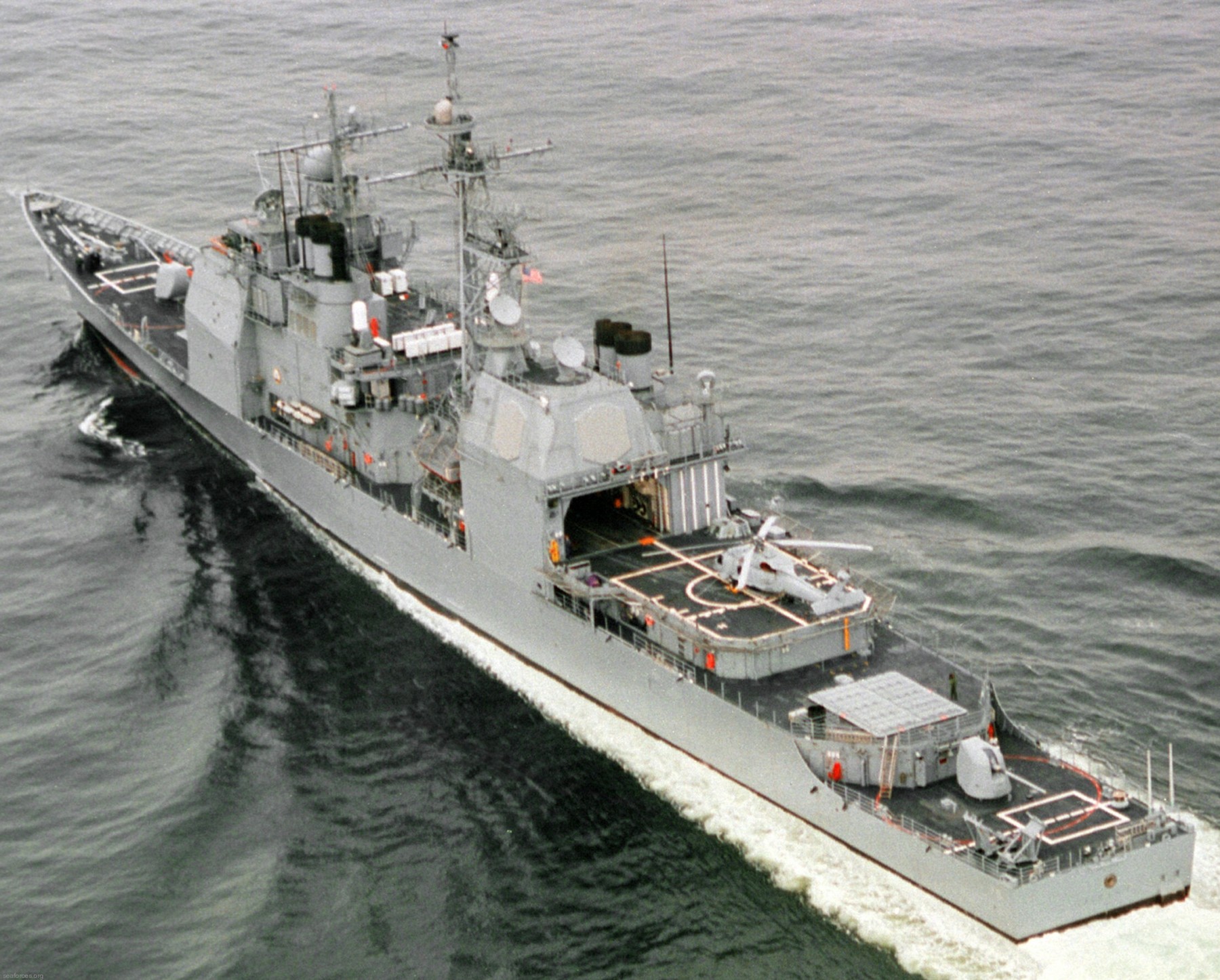 May 1993 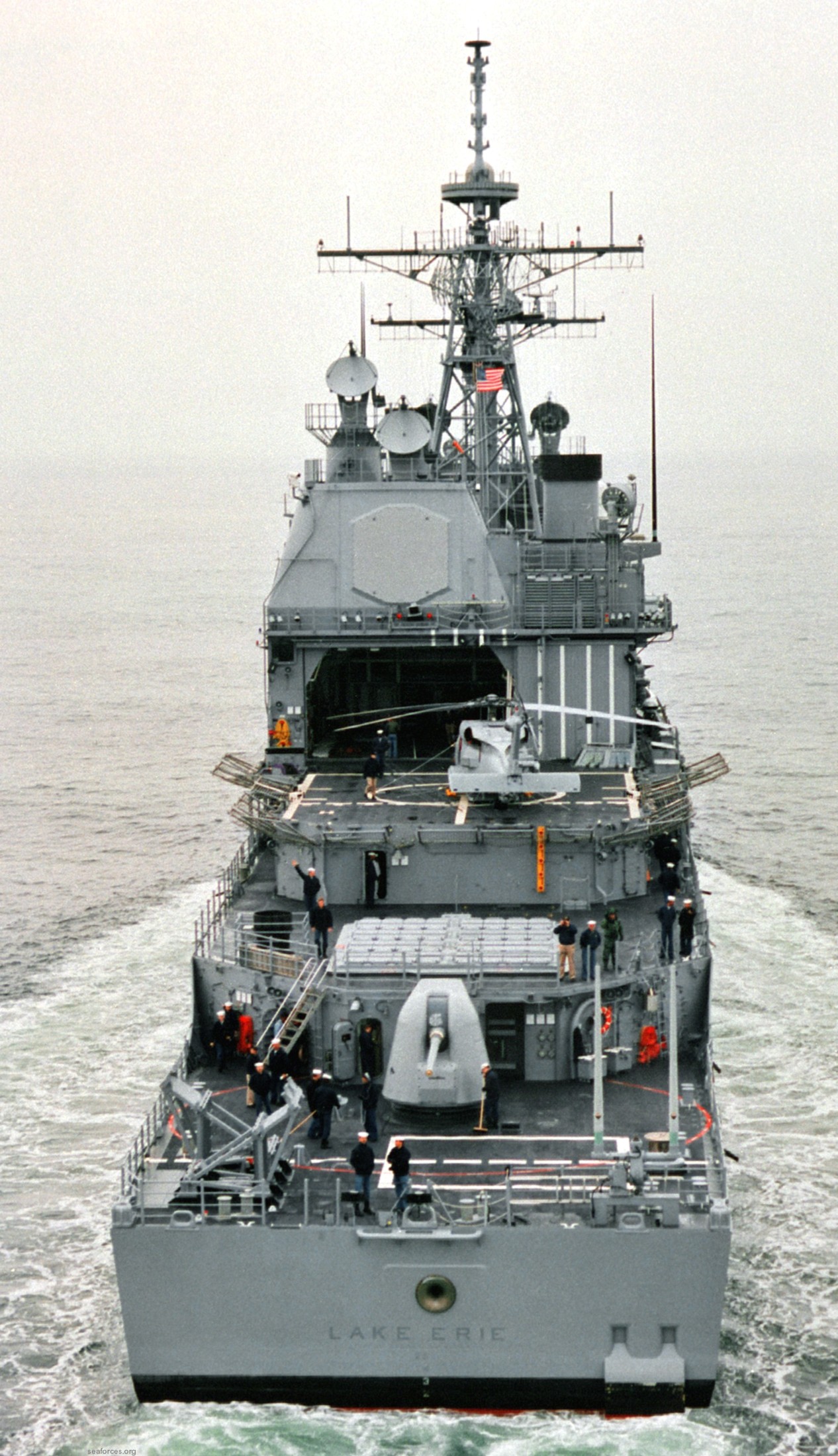
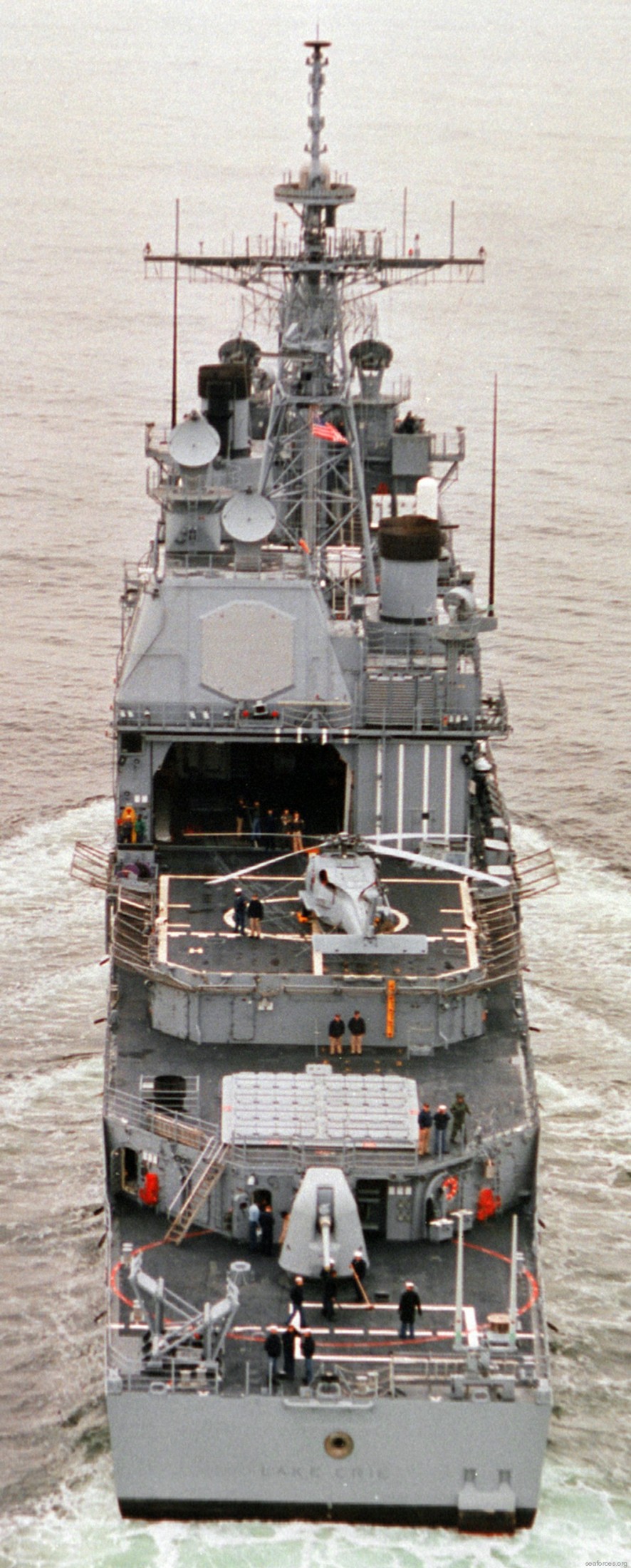 May 1993 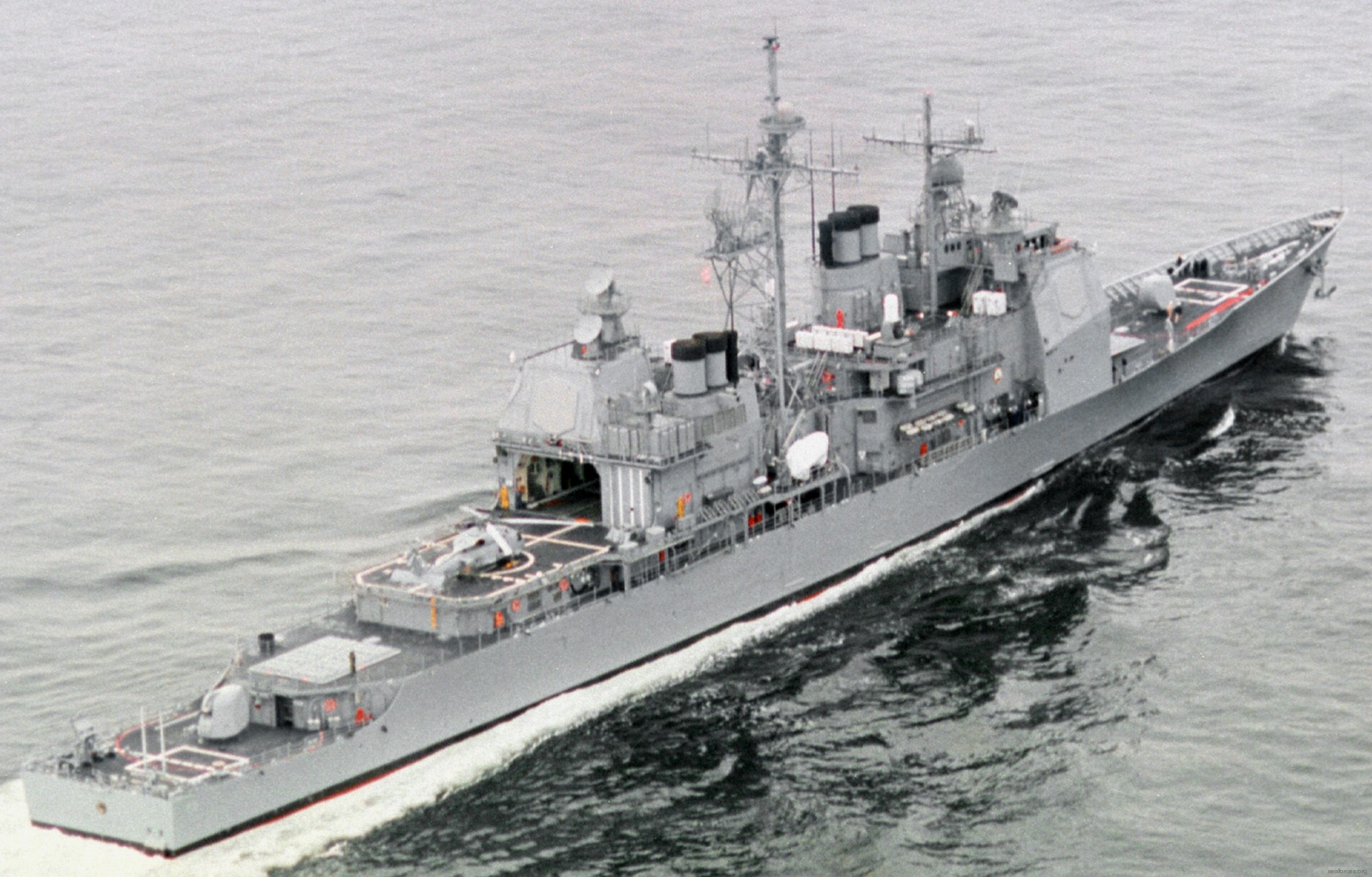 May 1993 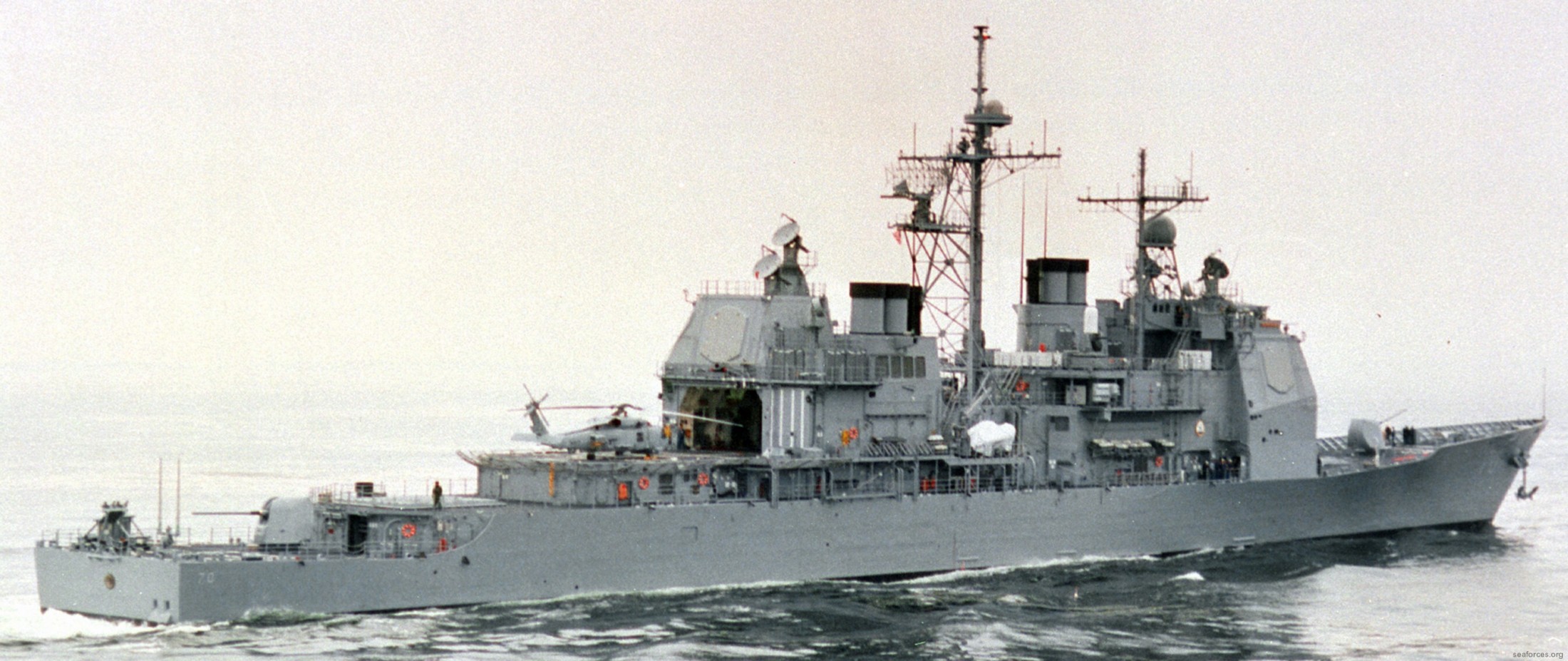 May 1993 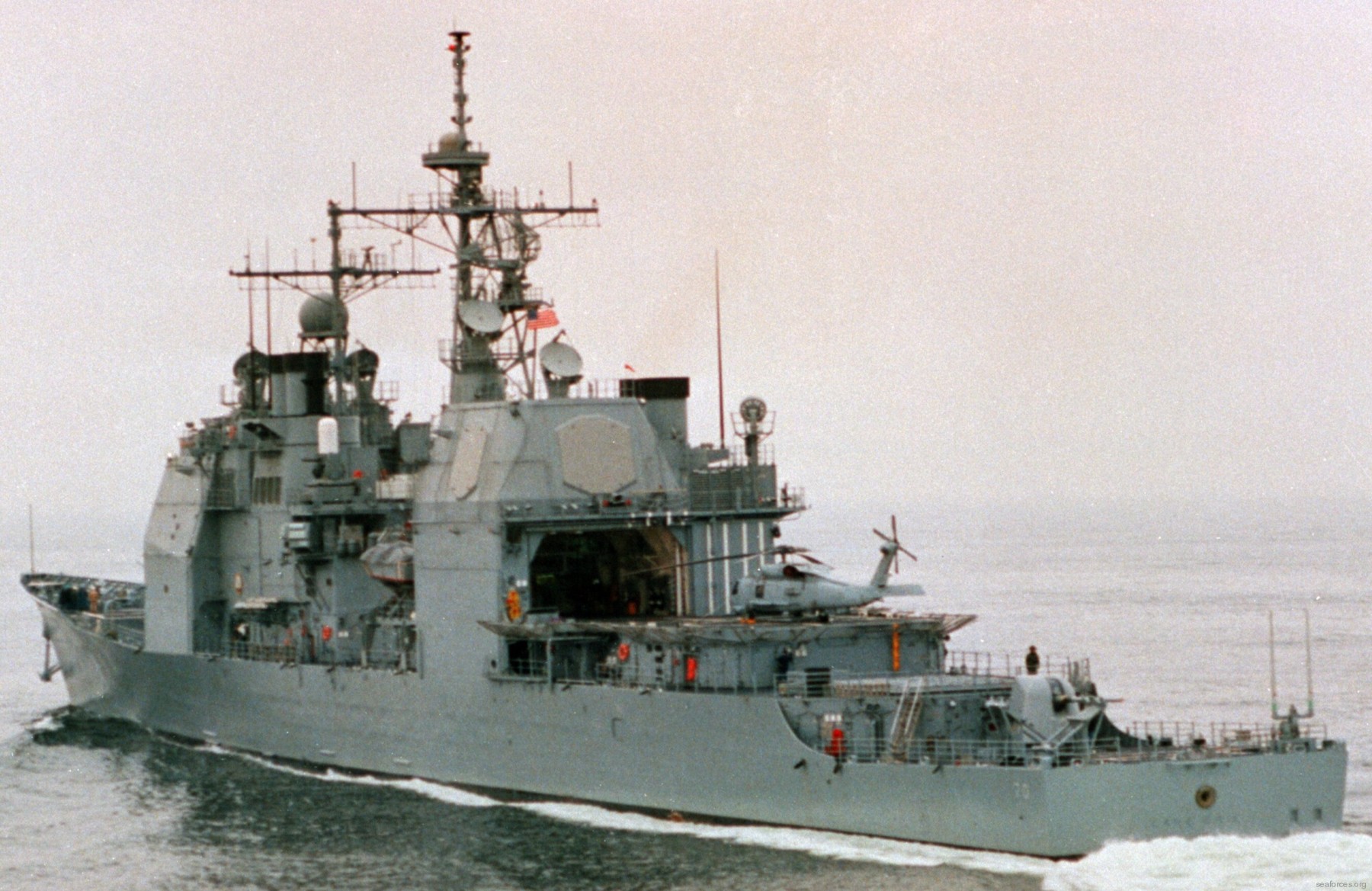 May 1993 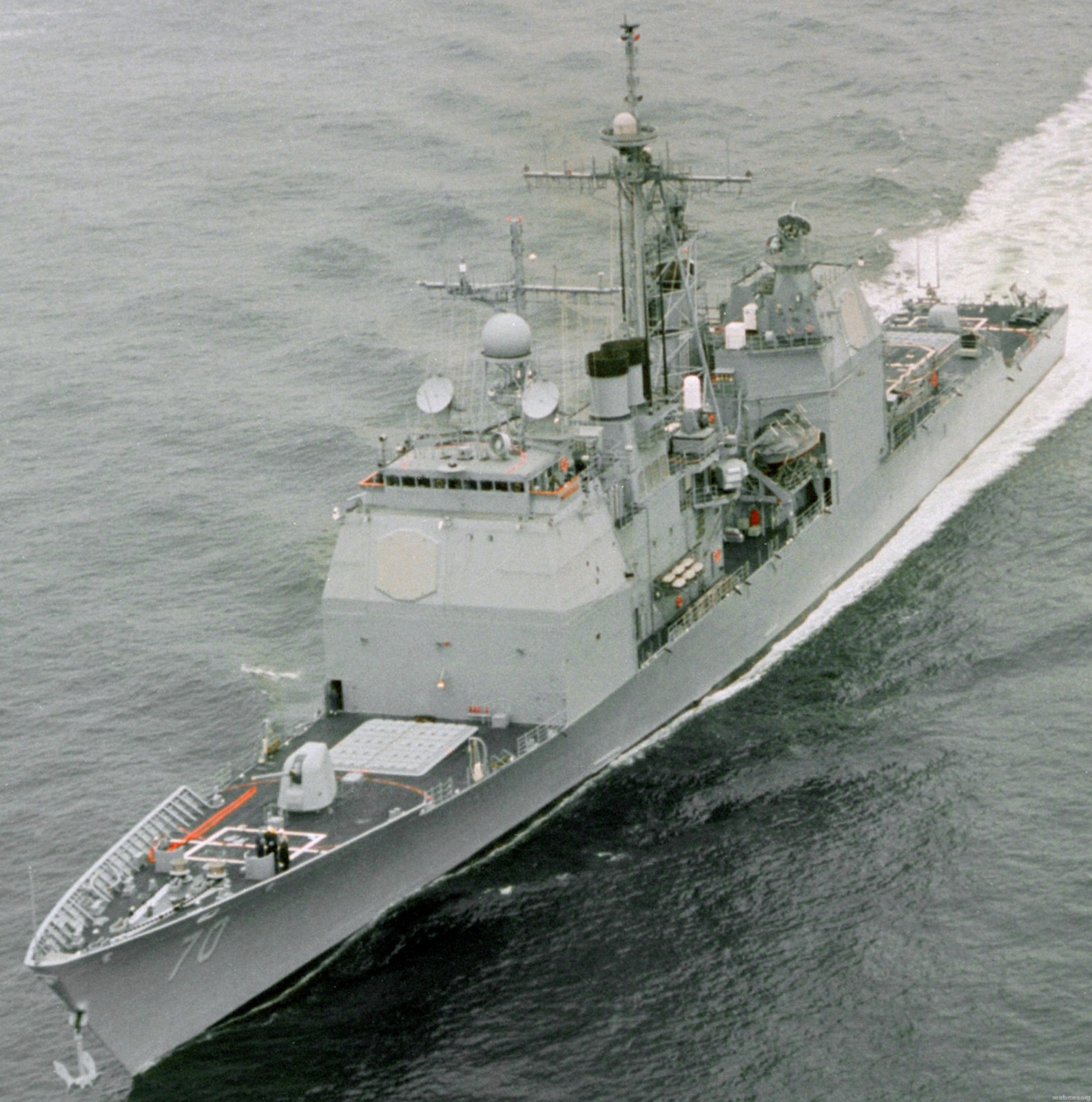 May 1993  May 1993  May 1993  May 1993  May 1993 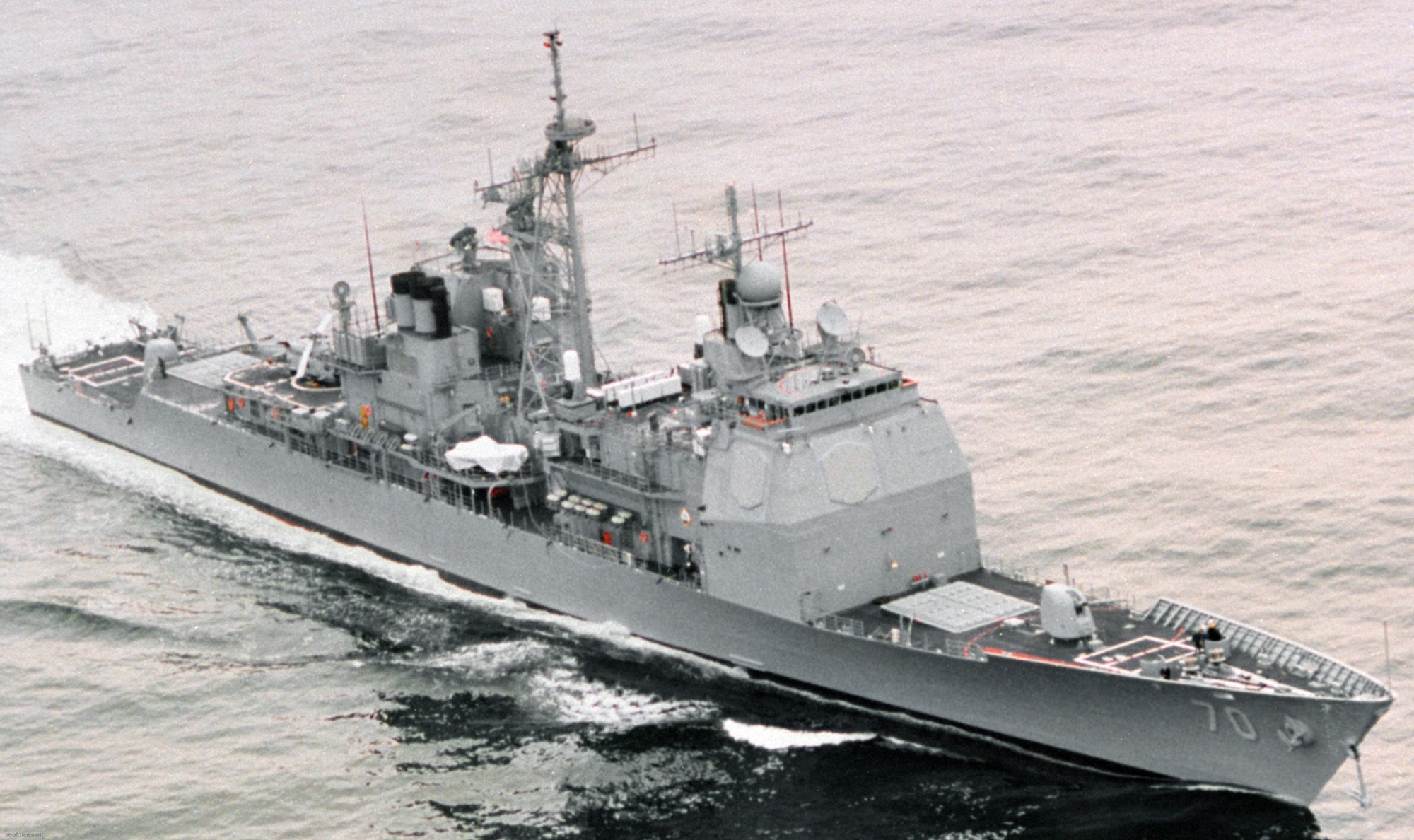 May 1993 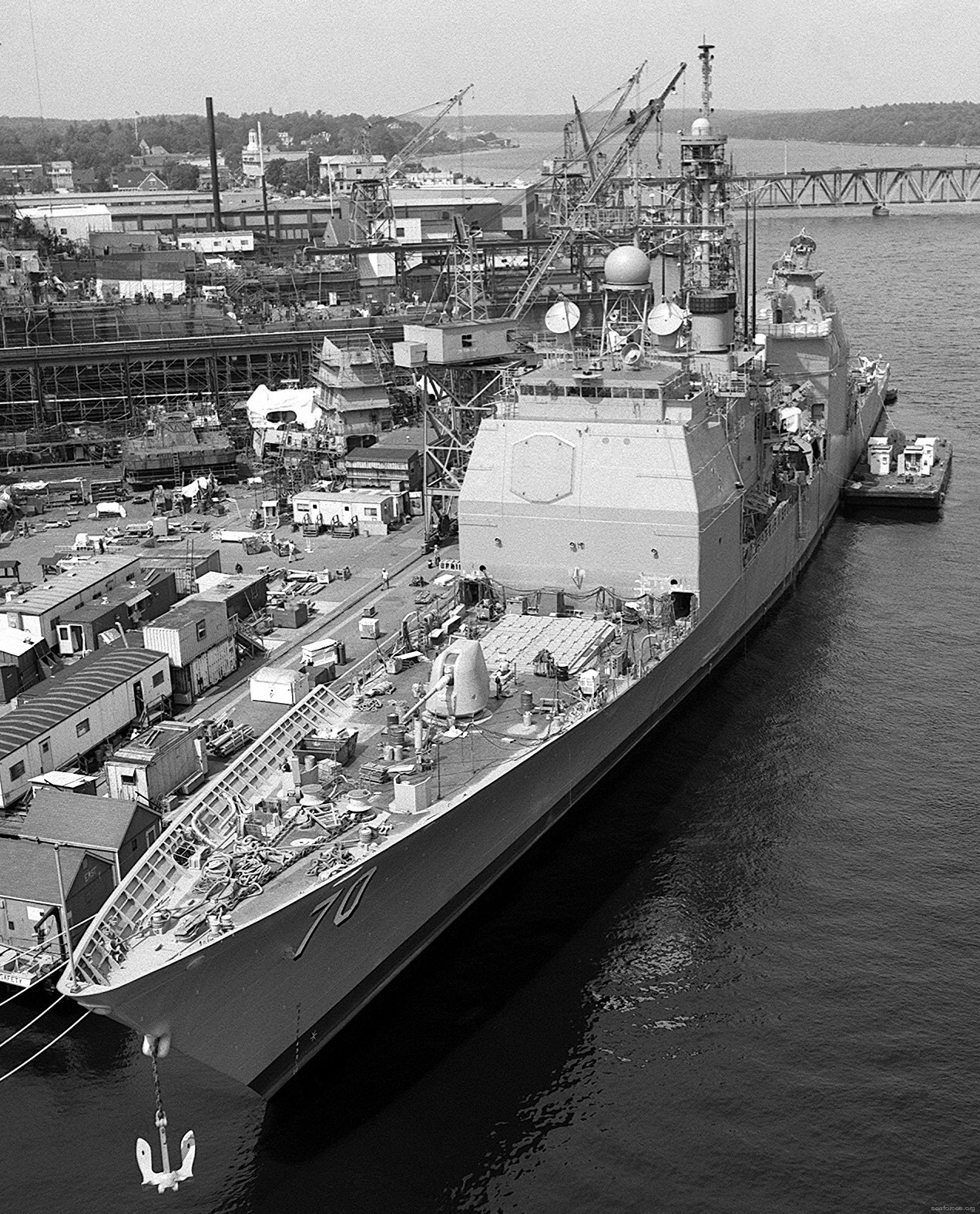 90 percent of completion at Bath Iron Works, Bath, Maine - August 1992 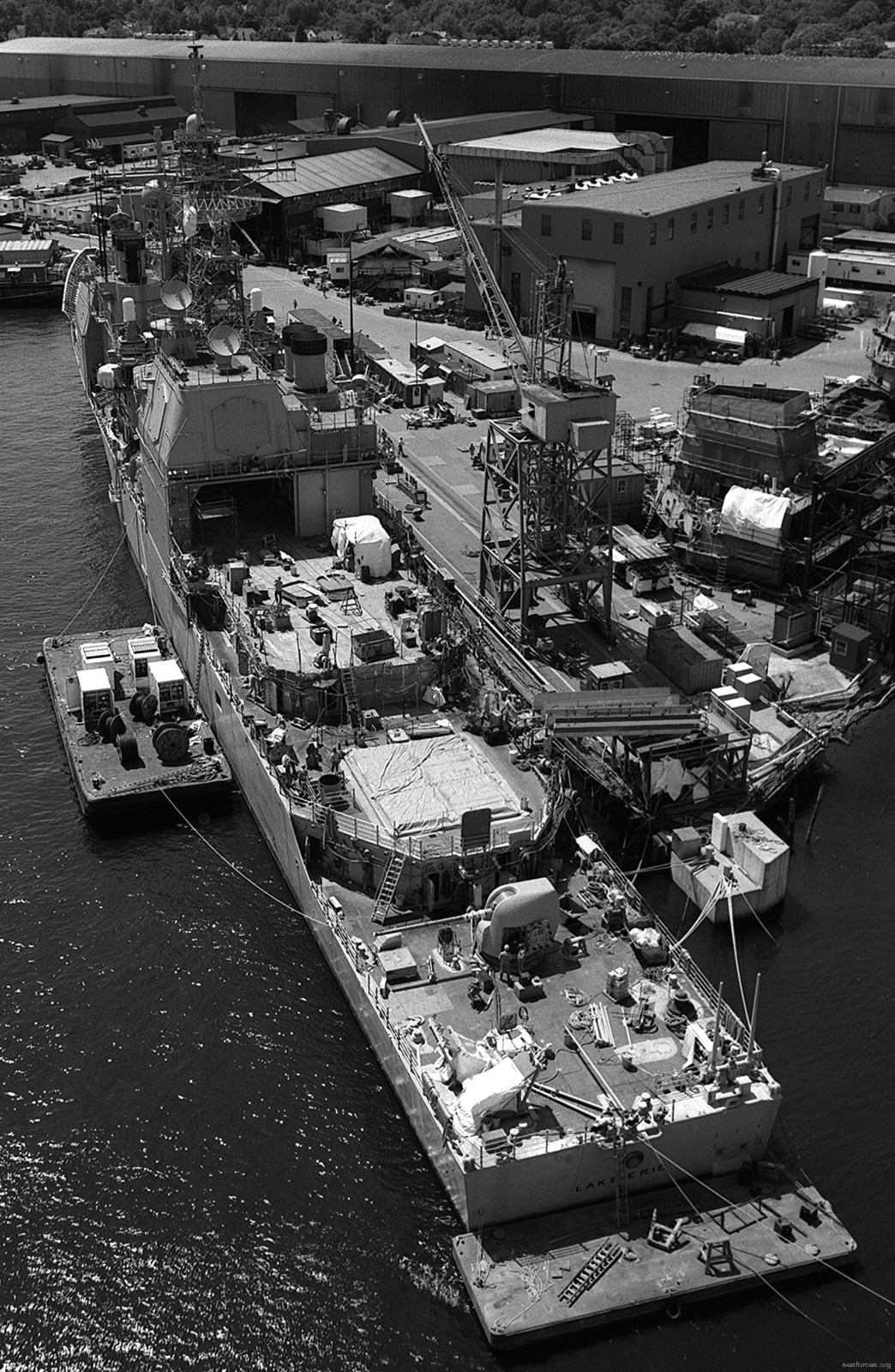 90 percent of completion at Bath Iron Works, Bath, Maine - August 1992 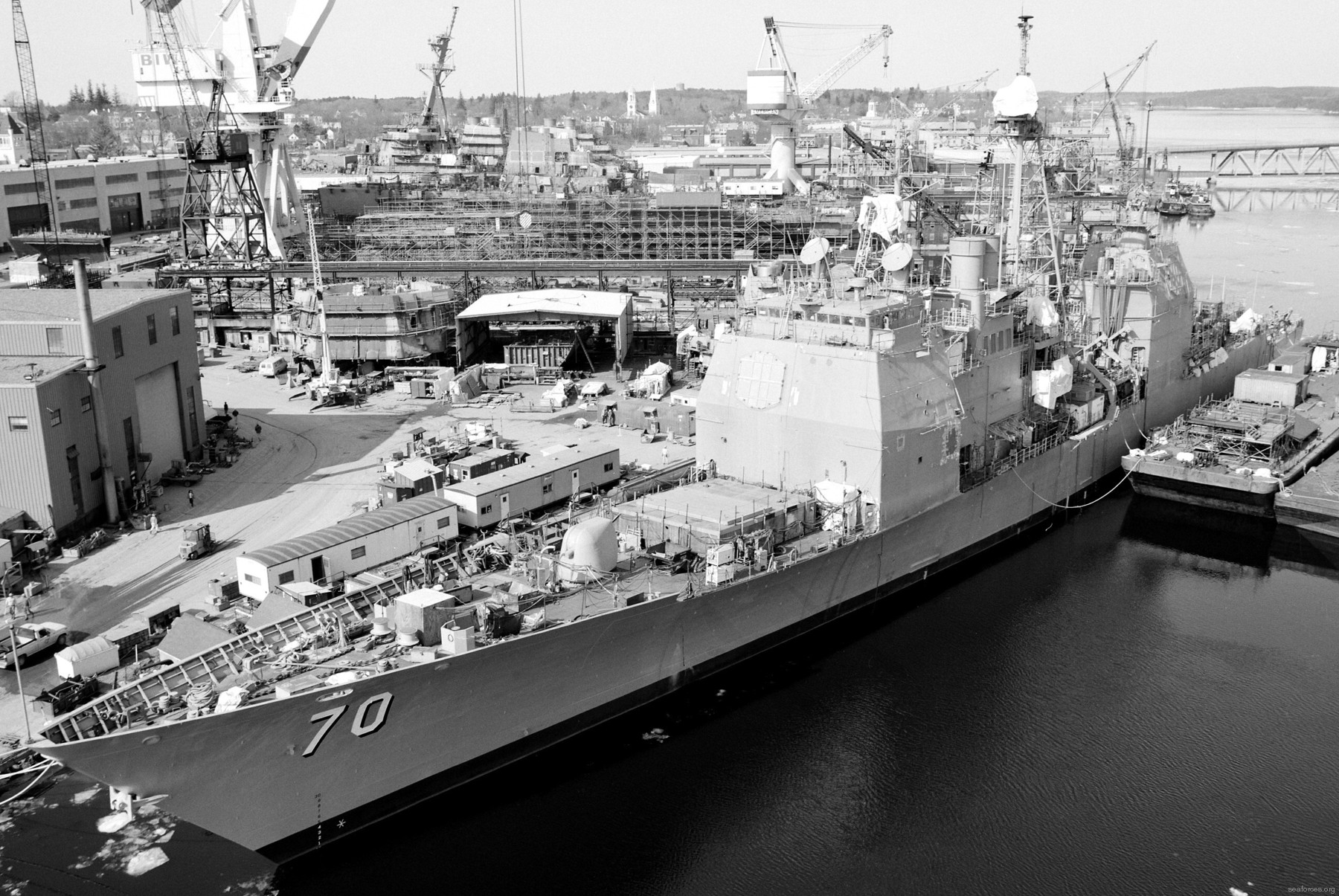 80 percent of completion at Bath Iron Works, Bath, Maine - March 1992 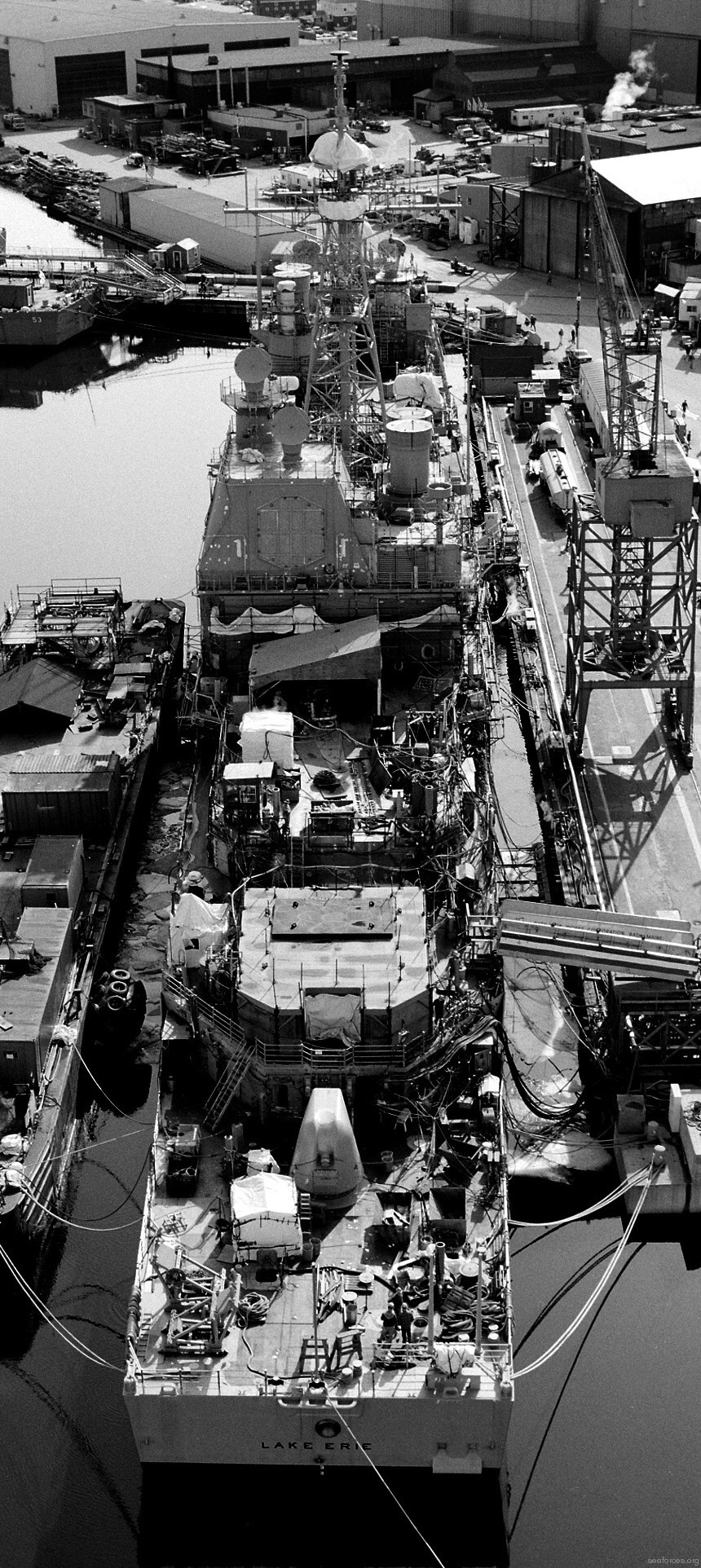 80 percent of completion at Bath Iron Works, Bath, Maine - March 1992 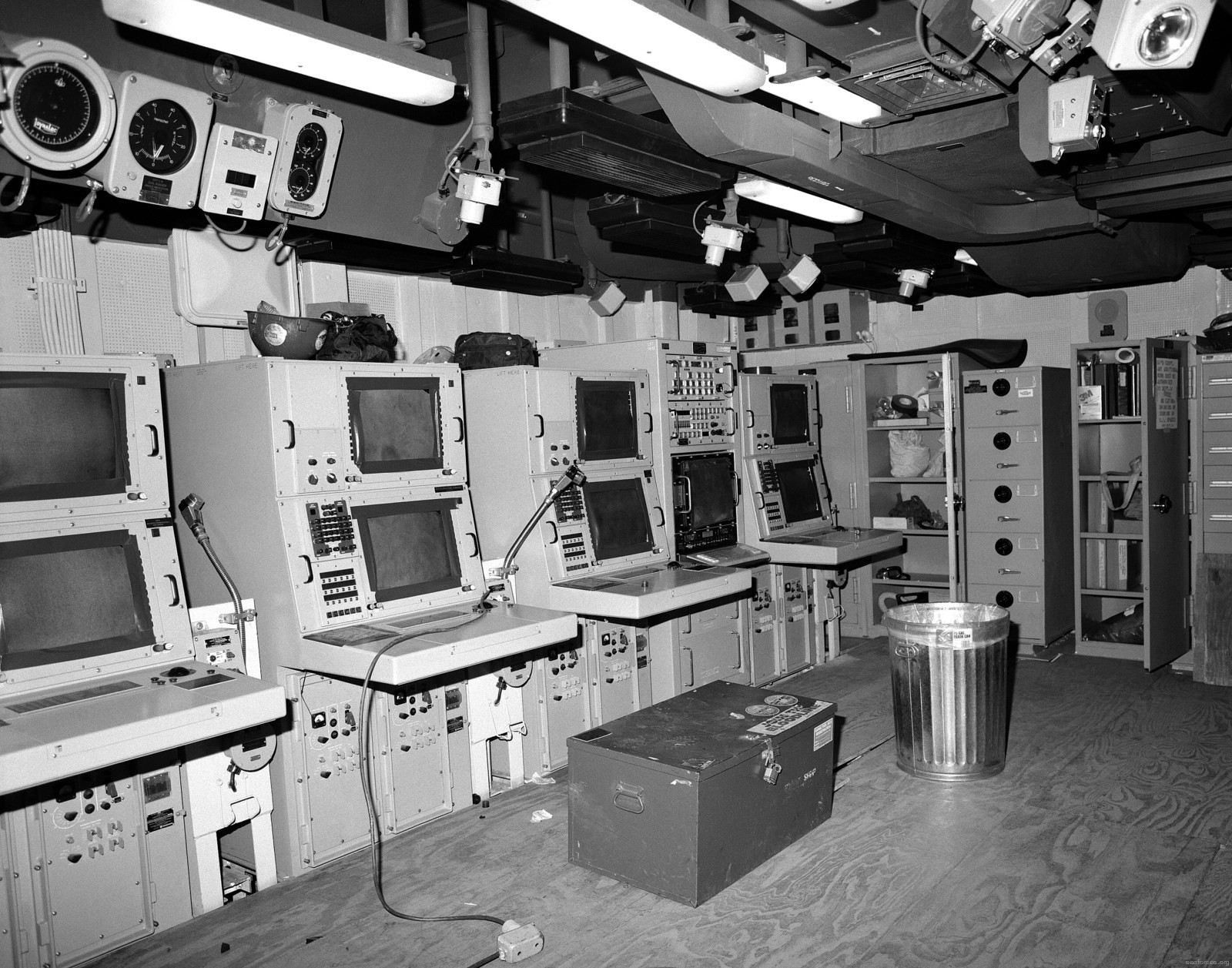 Sonar Control Room while under construction - March 1992 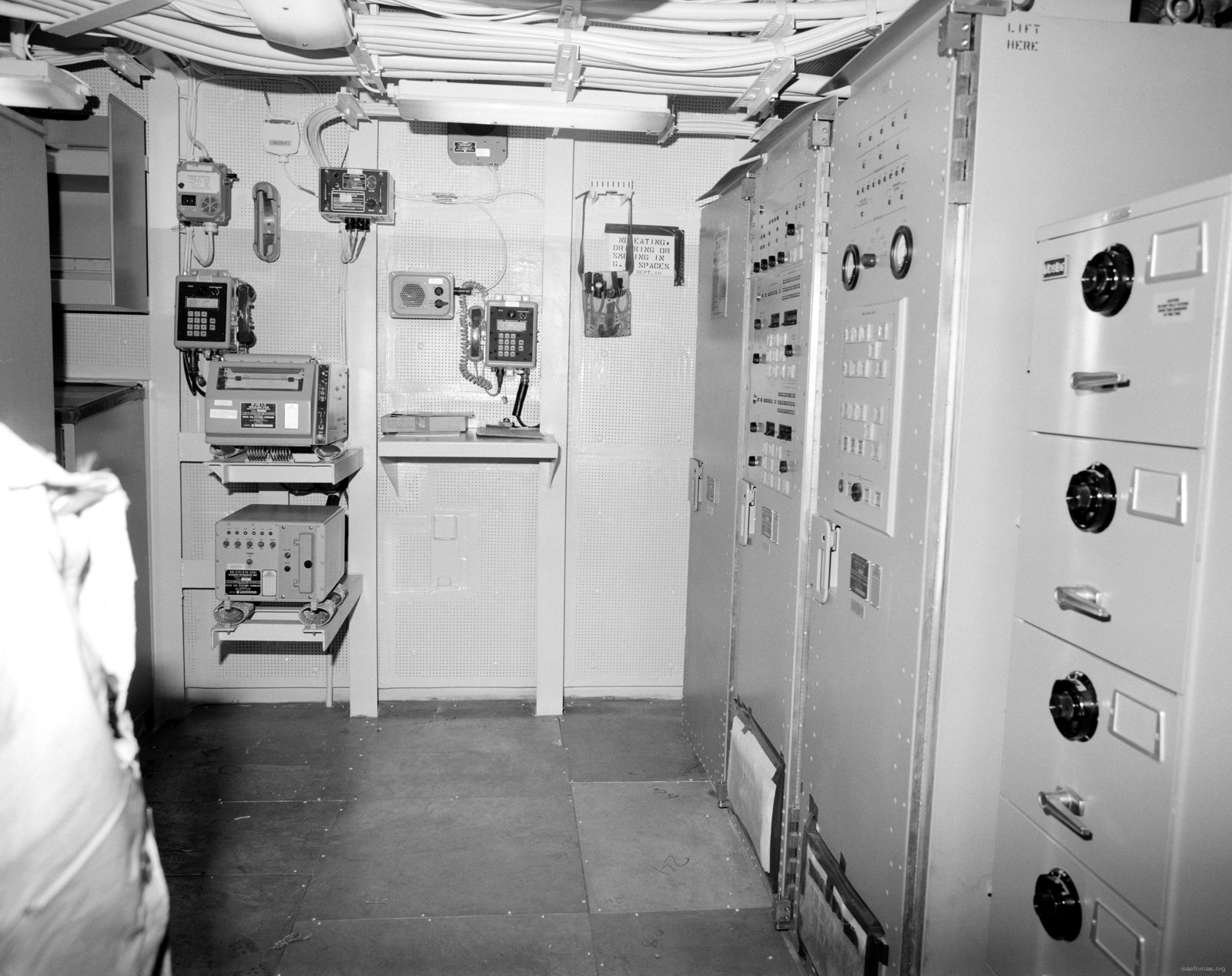 internal communication and gyroscope room No. 2 - March 1992 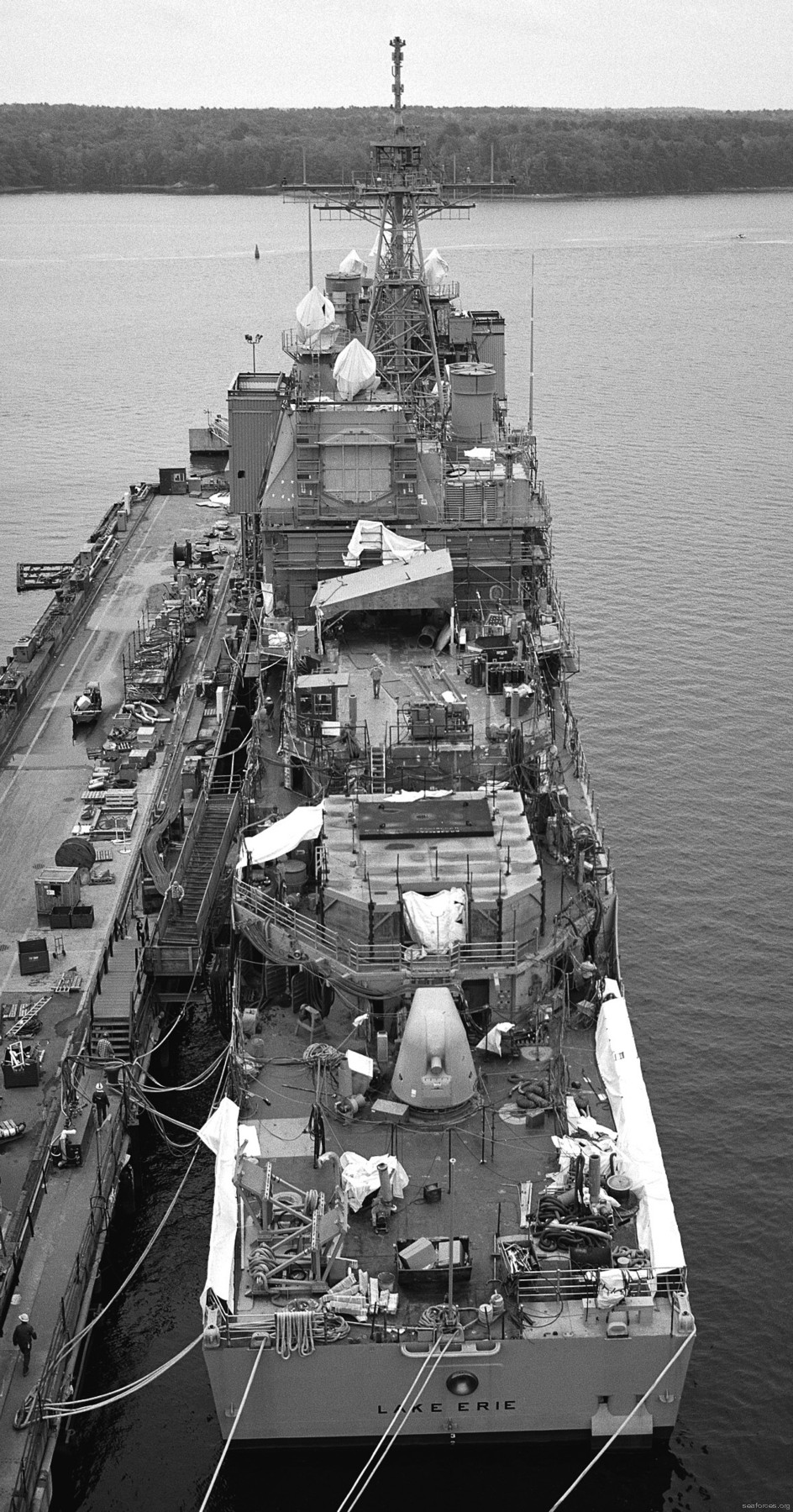 70 percent of completion at Bath Iron Works, Bath, Maine - October 1991 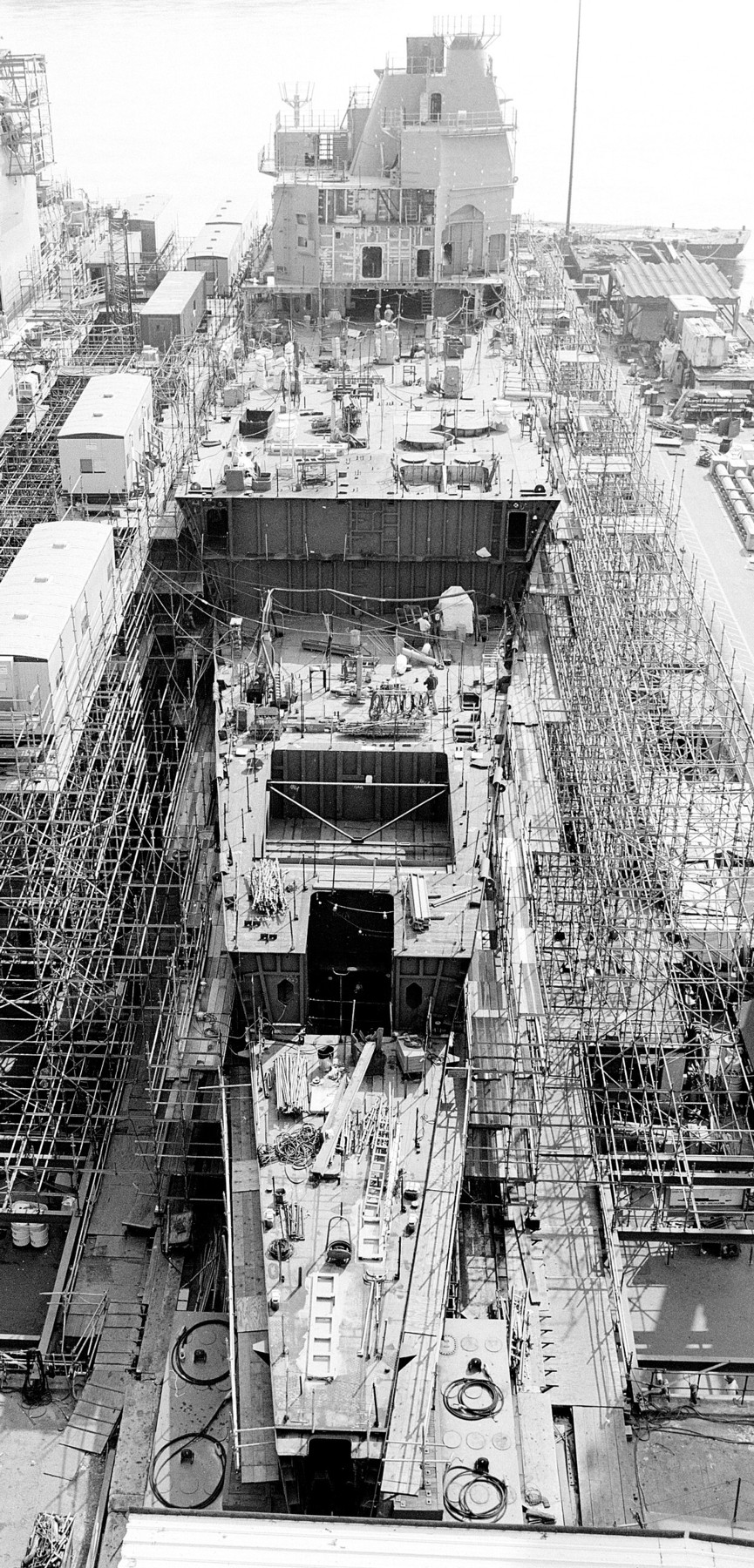 40 percent of completion at Bath Iron Works, Bath, Maine - August 1990 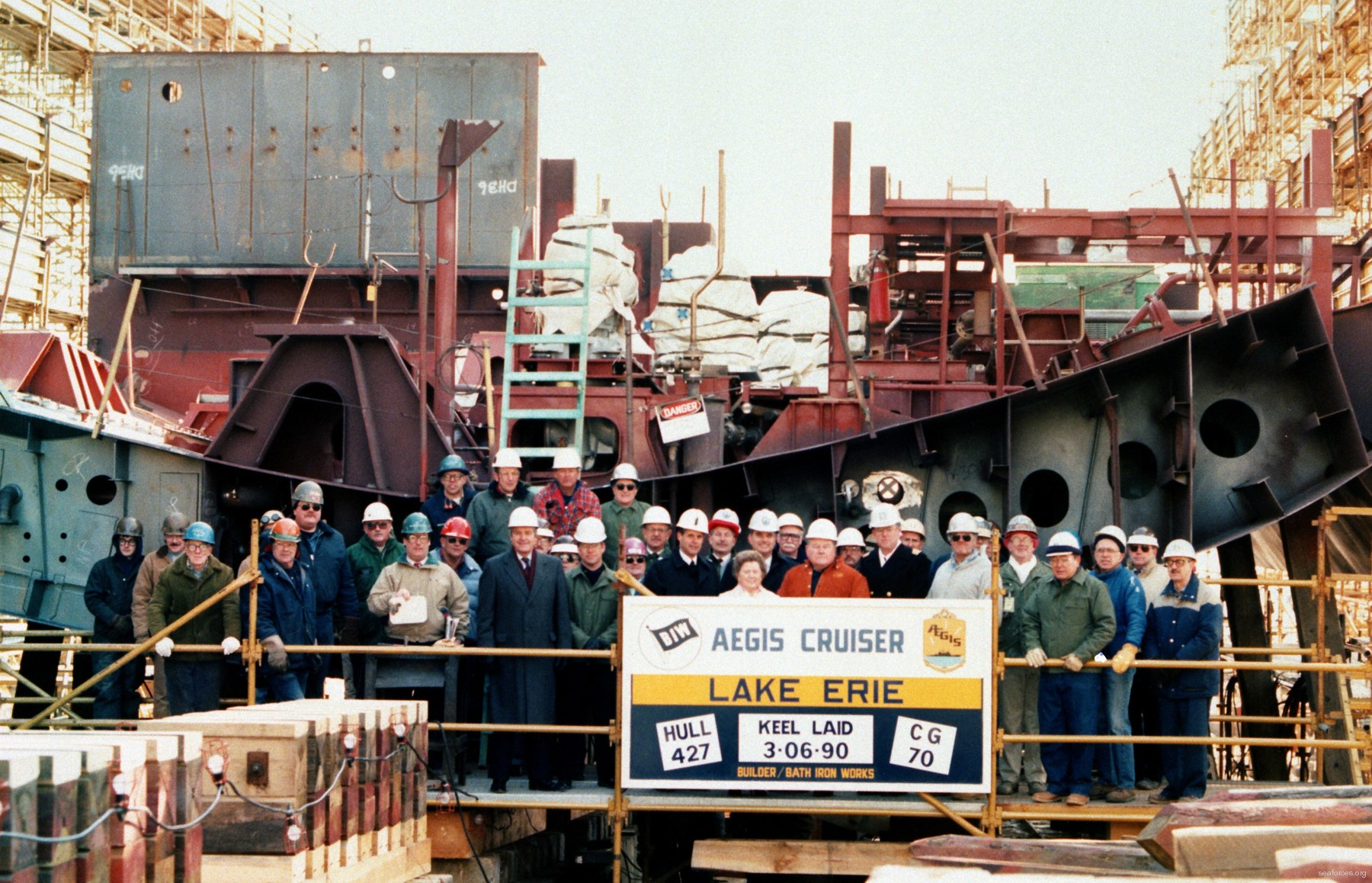 keel laying ceremony at Bath Iron Works, Maine - March 6, 1990 |
||
|
USS Lake Erie (CG 70): USS Lake Erie (CG 70) was laid down 6 March 1990 by Bath Iron Works, Bath ME; launched 13 July 1991; and commissioned 24 July 1993. She was assigned to Pearl Harbor HI. Lake Erie deployed with the Constellation (CV-64) battle group on 10 November 1994 and spent most of December in the Western Pacific. The battle group entered the Arabian Gulf 11 January 1995. The battle group's arrival strengthened U.S. presence in the gulf and supports U.N. initiatives in the region, including Operation Southern Watch. In March, Lake Erie took part in a two-week, anti-submarine warfare (ASW) exercise in the Persian Gulf and Gulf of Oman (5-19 February). The purpose of Exercise Sharem 110 was to gather data and evaluate tactics to counter the growing third-world diesel submarine threat. Throughout the exercise, Topeka (SSN-754) simulated a diesel submarine, while Lake Erie and Vandegrift (FFG-48) rounded out the surface forces. The first week of the exercises took place in the southern Persian Gulf. The second week was held outside the Strait of Hormuz in the Gulf of Oman. The ships of the Constellation Battle Group returned to their home ports in May. She took part in Pacific Joint Task Force Exercise (PACJTFEX) 97-1, from 10-21 February 1997 off the Southern California coast. PAC JTFEX 97-1 is part of a series of exercises previously named "FLEETEX." The new name reflects the increasing focus on preparing naval forces for joint operations with other U.S. military services. During a deployment with the Constellation Battle Group, Chosin (CG-65) turned over the duties of being regional Air Defense Commander to Lake Erie in July 1997. In early August 1997, Lake Erie was involved in two major Theater Ballistic Missile Defense (TBMD) exercises in the Arabian Gulf named "Arabian Skies". During the exercises, the Constellation Battle Group demonstrated a viable TBMD capability using the existing command and control architecture. Lake Erie, with the Constellation (CV-64) Battle Group, then departed 5th Fleet's Area of Responsibility (AOR) on 17 August 1997 on schedule to continue its routine six-month deployment in the waters of the Indian and Pacific Oceans. The Constellation Battle Group entered the Arabian Sea on 16 May. After departing the Arabian Gulf, the Constellation Battle Group concluded its tour in the 5th Fleet with a joint-combined exercise with military forces from Pakistan. Dubbed Inspired Siren 97-2 and Inspired Alert 97-2, the exercises incorporated both surface combatants and air components, respectively. The purpose of this four-day training mission was to exercise the joint-combined naval and air capabilities of both countries, improve their respective levels of readiness and interoperability, and enhance military relations between the two nations. In August 1998, modifications were made aboard Lake Erie and Port Royal, which consisted of modifications to the Aegis weapons system on board Ticonderoga-class cruisers; a modification, known as linebacker, and which uses specialized computing and radar software and hardware to provide improved tracking and reporting capabilities, and when coupled with the Standard Missile-2 Block IVA, intercept Tactical Ballistic Missiles (TBM). Ballistic missile testing afforded Port Royal and other participants an opportunity to flex the capabilities of the current Aegis weapon system against a live ballistic missile target and gave a representation of how the modified system tracks and destroys TBMs. Lake Erie and Port Royal were then to conduct at sea testing, develop core doctrine and tactics, and serve as focal points for putting the TBMD technology in the hands of the warfighters in the rest of the fleet. Sailors on board both ships were also to provide early feedback to the technical community and influence the final design of the TBMD system. Successful Linebacker sea trials at the Pacific Missile Range, Kauai, Hawaii took place in the fall of 1998. On 17 December 1999, Lake Erie returned to its homeport at Pearl Harbor Naval Station after completing a six-month deployment to the western Pacific and Arabian Gulf. The guided missile cruiser had deployed with the Constellation (CV-64) Battle Group. In March 2000, the US Navy began ALI live fire tests and had successfully conducted the first Controlled Test Vehicle. Shiloh (CG-67) had conducted the first ALI live firing test in September 1999 and had successfully demonstrated the launch and flight sequence through third stage separation as well as verified flight stability at extreme altitude. Though the original plan had been to conduct all Flight Test Round shots from Shiloh, the need for further testing conflicted with that ship's operational schedule. Therefore, it was decided by the CNO to shift to the Lake Erie to conduct the next firings in the ALI testing program. Lake Erie, already equipped with Area Linebacker modifications, was, as of 2 March 2000, receiving ALI equipment modifications in Pearl Harbor and was to conduct system checks and training to support the planned test firings. In early July 2000, the US Navy announced that Lake Erie had been designated the Navy's theater-wide test ship for the AEGIS Lightweight Exoatmospheric Projectile intercept flight-test series. For the next two years, Lake Erie would be dedicated to conducting these critical tests. Lake Erie's homeport in Pearl Harbor, Hawaii, made the ship's participation in tests at the Pacific Missile Range Facility off Kauai cost-effective with the Navy anticipating that the ship would not deploy operationally again for about two years. In January 2001, Lake Erie conducted the Aegis Light Exo-Atmospheric Projectile (LEAP) Intercept Flight Test Round (FTR-1A) mission in the mid-Pacific using the Pacific Missile Range Facility, Kauai, Hawaii. Equipped with Aegis LEAP Intercept (ALI) computer programs and hardware, Lake Erie launched an SM-3 missile demonstrating third stage airframe stability and control through nominal kinetic warhead fourth stage separation. The SM-3 is the Navy's new exo-atmospheric missile developed to counter theater ballistic missile (TBM) threats outside the atmosphere. On 9 February 2001, Lake Erie sortied from Pearl Harbor to assist along with Coast Guard boats and cutters with rescue efforts after a surfacing U.S. submarine, the Greenville (SSN-772), struck a Japanese fishing vessel at approximately 1:45 p.m. (HST) about nine miles south of the Diamond Head crater off Honolulu, Hawaii. The fishing vessel, named Ehime Maru, rapidly flooded and sank within 10 minutes in 1,800 feet of water. Twenty-six of 35 aboard were rescued. The Ehime Maru had been on a fishing and research mission when the Greeneville rapidly surfaced and collided with its stern. The fast-attack submarine was, at the time, conducting an "emergency ballast tank blow," a procedure used to bring subs to the surface in the event of an emergency, although in this case it was used for training, on a one-day cruise with 16 military and civilian guests. On 25 January 2002, the Missile Defense Agency and the Navy conducted a successful flight test in the continuing development of a Sea-Based Midcourse (SMD) Ballistic Missile Defense System (BMDS). Flight Mission-2 (FM-2) involved the launch of a developmental Standard Missile 3 (SM-3) and kinetic warhead (KW) interceptor from Lake Erie and an Aries target missile launched from the Pacific Missile Range Facility (PMRF) on the island of Kauai, Hawaii. The target was launched at 9 p.m., EST, January 26. About eight minutes later, Lake Erie, equipped with Aegis Lightweight Exo-atmospheric Projectile (LEAP) computer programs and equipment, and having tracked the target with the Aegis SPY-1 radar and developed a fire-control solution, launched the newly-developed SM-3. The SM-3 acquired, tracked and diverted toward the target, demonstrating SM-3 fourth-stage Kinetic Warhead (KW) guidance, navigation and control. Although not a primary objective, during this early developmental test, the KW was aimed at the target, resulting in a hit-to-kill intercept at approximately 9:18 p.m., EST. The primary objective of this test was to evaluate SM-3 fourth-stage Kinetic Warhead guidance, navigation and control, with extensive engineering evaluation data collected for analyses in preparation for future flight tests. It was the fourth in a planned series of nine developmental test flights for the SMD program. The mission also included the first fully operational SM-3 with a live Solid Divert and Attitude Control System to steer the KW into the target. On 18 June 2003, exo-atmospheric missile testing suffered a failure but on 11 December Lake Erie reported a successful intercept from an SM-3 missile fired off Kauai in the Hawaiian Islands four minutes after the target was launched. On 14 February 2008 the U.S. Department of Defense announced that the Lake Erie and two other ships would attempt to hit the dead satellite USA 193 in the north Pacific just prior to burn up during a period after February 20 using a modified SM-3 missile. On 21 February 2008, at approximately 3:30 UTC, the missile was fired and later confirmed to have struck the satellite. The military intended that the kinetic energy of the missile would rupture the hydrazine fuel tank allowing the toxic fuel to be consumed during re-entry. USS Lake Erie was featured in the 2011 naval thriller, Thunder in the Morning Calm, by Don Brown. On 14 February 2008 the U.S. Department of Defense announced that as part of Operation Burnt Frost Lake Erie and two other ships would attempt to hit the failed satellite USA-193 in the north Pacific just prior to burn up during a period after 20 February using a modified SM-3 missile. On 21 February 2008, at approximately 3:30 UTC, the missile was fired and later confirmed to have struck the satellite. The military intended that the kinetic energy of the missile would rupture the hydrazine fuel tank allowing the toxic fuel to be consumed during re-entry. In August 2014, Lake Erie went to San Diego for an extended maintenance period. Lake Erie was expected to replace John Paul Jones as a rotational Ballistic Missile Defense (BMD) deployer after the maintenance period. In November 2015, investigators noted that a weird culture had developed on board Lake Erie, including a grueling schedule with arbitrary weekend workdays; a supply officer so offensive that he was ordered not to speak to any E-6 or below; a crew that spent hours repeatedly cleaning the same places just to look busy; work done and redone because of miscommunication with the shipyard and the CO storing a goat on board. On 30 November 2017, Lake Erie arrived in Pearl Harbor following a seven-month deployment to the Indo-Asia-Pacific region and the Persian Gulf. USS Lake Erie returned to its homeport of Naval Station San Diego, November 18, 2019, following an independent deployment to the U.S. 3rd and 7th Fleet areas of operation. |
||
|
About the Battle of Lake Erie,
Ohio - 1813: The Battle of Lake Erie, sometimes referred to as the Battle of Put-in-Bay, was fought on 10 September, 1813, in Lake Erie off the coast of Ohio during the War of 1812. Nine vessels of the United States Navy defeated and captured six vessels of Great Britain’s Royal Navy. This ensured American control of the lake for the remainder of the war, which in turn allowed the Americans to recover Detroit and win the Battle of the Thames to break the Indian confederation of Tecumseh. It was one of the biggest naval battles of the war of 1812. Background 1812 When the war broke out, the British immediately seized control of Lake Erie. They already had a small force of warships there: the sloop of war Queen Charlotte and the brig General Hunter. The brig Lady Prevost was under construction and was put into service a few weeks after the outbreak of war. These vessels were controlled by the Provincial Marine, which was a military transport service rather than a naval service. Nevertheless, the Americans lacked any counter to the British armed vessels. The only American warship on Lake Erie, the brig Adams, was pinned down in Detroit by the British batteries at Sandwich on the Canadian side of the Detroit River. Major-General Isaac Brock used this superiority to defeat an American army at the Siege of Detroit. The British took the Adams when Detroit was surrendered, renaming her HMS Detroit. Together with the brig Caledonia, which had been commandeered from the Canadian North West Company, she was boarded and captured near Fort Erie on 9 October, by American sailors and United States Marines under the command of Lieutenant Jesse Elliot. Detroit went aground on an island in the middle of the Niagara River and was burned to prevent her being recaptured. Caledonia was taken to the navy yard at Black Rock and commissioned into the United States Navy. Also present at Black Rock were the schooners Somers and Ohio and the sloop-rigged Trippe, which had all been purchased by the United States Navy and were being converted into gunboats. While the British held Fort Erie and the nearby batteries which dominated the Niagara River, all these vessels were pinned down and unable to leave Black Rock. Late in 1812, Paul Hamilton, the Secretary of the Navy had received long-time American lake mariner Daniel Dobbins, who had escaped capture at Detroit and brought information on the British forces on Lake Erie. Dobbins recommended Presque Isle (present-day Erie, Pennsylvania) as a naval base on the lake. (“Presqu’isle” is French for “peninsula,” literally “almost an island”). Dobbins was despatched to build four gunboats there, although Lieutenant Elliot objected to the lack of facilities. Commodore Isaac Chauncey had been appointed to command of the United States naval forces on the Great Lakes. He made one brief visit to Presque Isle on 1 January, 1813 where he approved Dobbins' actions and recommended collecting materials for a larger vessel, but then returned to Lake Ontario where he thereafter concentrated his energies. 1813 In January 1813, William Jones (the newly-appointed Secretary of the Navy) had ordered the construction of two brig-rigged corvettes at Presque Isle, and transferred shipwright Noah Brown there to take charge of construction. Other than their rig and crude construction (for example, using wooden pegs instead of nails because of shortages of the latter), the two brigs were close copies of the contemporary USS Hornet. The heaviest armament for the ships came from foundries on Chesapeake Bay, and were moved to Presque Isle only with great difficulty. (The Americans were fortunate in that some of their largest cannon had been despatched shortly before raiding parties under Rear-Admiral George Cockburn destroyed a foundry at Frenchtown on the eastern seaboard.) However, the Americans could obtain other materials and fittings from Pittsburgh, which was expanding as a manufacturing center, and smaller guns were borrowed from the Army. Master Commandant Oliver Hazard Perry had earlier been appointed to command on Lake Erie, through lobbying by the Senior Senator from Rhode Island. He arrived at Presque Isle to take command at the end of March. Having arranged for the defence of Presque Isle, he proceeded to Lake Ontario to obtain reinforcements of seamen from Commodore Isaac Chauncey. After commanding the American schooners and gunboats at the Battle of Fort George, he then went to Black Rock where the American vessels had been released when the British abandoned Fort Erie at the end of May. Perry had them towed by draught oxen up the Niagara, an operation which took six days, and sailed with them along the shore to Presque Isle. Meanwhile, Commander Robert Heriot Barclay was appointed to command the British squadron on Lake Erie. Another British officer had already endangered his career by refusing the appointment as success appeared unlikely. Barclay missed a rendezvous with the Queen Charlotte at Point Abino and was forced to make the tedious journey to Amherstburg overland, arriving on 10 June. He brought with him only a handful of officers and seamen. When he took command of his squadron, the crews of his vessels numbered only seven British seamen, 108 officers and men of the Provincial Marine (whose quality Barclay disparaged), 54 men of the the Royal Newfoundland Fencibles and 106 soldiers, effectively landsmen, from the 41st Foot. Nevertheless he immediately set out in the Queen Charlotte and the Lady Prevost. He first reconnoitred Perry’s base at Presque Isle and determined that it was defended by 2,000 Pennsylvania militia, with batteries and redoubts. He then cruised the eastern end of Lake Erie, hoping to intercept the American vessels from Black Rock. The weather was hazy, and he missed them. During July and August Barclay received two small vessels which had been constructed at Chatham and attempted to complete the ship-rigged corvette HMS Detroit at Amherstburg. Because the Americans controlled Lake Ontario and occupied the Niagara Peninsula in early 1813, supplies for Barclay had to be carried overland from York. The American victory earlier in the year at the Battle of York resulted in guns (24-pounder carronades) intended for the Detroit falling into American hands. The Detroit had to be completed with a miscellany of guns from the fortifications of Amherstburg. It was alleged that these guns lacked flintlock firing mechanisms and matches, and that they could be fired only by snapping pistols over powder piled in the vent holes. (Nevertheless, they were very effectively served during the battle). Barclay repeatedly requested men and supplies from Commodore James Lucas Yeo, commanding on Lake Ontario, but received very little. The commander of the British troops on the Detroit frontier, Major-General Henry Procter, was similarly starved of soldiers and munitions by his superiors. He declined to make an attack on Presque Isle unless he was reinforced, and instead he incurred heavy losses in an unsuccessful attack on Fort Stephenson, which he mounted at the urgings of some of his Indian warriors. Blockades of Presque Isle and Amherstburg By mid-July, the American squadron was almost complete, although not yet fully manned (Perry claimed to have only 120 men fit for duty). The British squadron maintained a blockade of Presque Isle for ten days from 20 July to 29 July. The harbour had a sandbar across its mouth, with only 5 feet (1.5 m) of water over it, which prevented Barclay sailing in to attack the American ships (although Barclay briefly skirmished with the defending batteries on 21 July), but also prevented the Americans leaving in fighting order. Barclay had to lift the blockade on 29 July because of shortage of supplies and bad weather. Perry immediately began to move his vessels across the sandbar. This was an exhausting task. The guns had to be removed from all the boats, and the largest of them had to be raised between “camels” (barges or lighters which were then emptied of ballast). When Barclay returned four days later, he found that Perry had nearly completed the task. Perry’s two largest brigs were not ready for action, but the gunboats and smaller brigs formed a line so confidently that Barclay withdrew to await the completion of the Detroit. Perry had received 130 extra sailors under Lieutenant Elliot, who had been despatched by Chauncey. Although Perry described some of them as "wretched", at least 50 of them were experienced sailors drafted from the USS Constitution, then undergoing a refit in Boston. Perry also had a few volunteers from the Pennsylvania militia. His vessels first proceeded to Sandusky, where they received further contingents of volunteers from Major General William Henry Harrison's Army of the Northwest. After twice appearing off Amherstburg, Perry established an anchorage at Put-in-Bay, Ohio. For the next five weeks, Barclay was effectively blockaded and unable to move supplies to Amherstburg. His sailors, Procter’s troops, and the very large numbers of Indian warriors and their families there quickly ran out of supplies. After receiving a last-minute reinforcement of two naval officers, three warrant officers and thirty-six sailors transferred from a transport temporarily laid up in Quebec under Lieutenant George Bignall, Barclay had no choice but to put out again and seek battle with Perry. Battle On the morning of 10 September, the Americans saw Barclay's vessels heading for them, and got under way from their anchorage at Put-in-Bay. The wind was light. Barclay initially held the weather gauge, but the wind shifted and allowed Perry to close and attack. Both squadrons were in line of battle, with their heaviest vessels near the centre of the line. Perry hoped to get his two big brigs, his flagship Lawrence and Niagara, into carronade range quickly, but in the light wind his vessels were making very little speed and the Lawrence was battered by the assortment of long guns mounted in the Detroit for at least 20 minutes before being able to reply effectively. When Lawrence was finally within carronade range, her fire was not as effective as Perry hoped, her gunners apparently having overloaded the carronades with shot. Astern of the Lawrence, the Niagara, under Elliot, was slow to come into action and remained far out of effective carronade range. It is possible that Elliott was under orders to engage his opposite number, the Queen Charlotte, and that the Niagara was obstructed by the Caledonia, but Elliot's actions would become a matter of dispute between him and Perry for many years. Aboard the Queen Charlotte, the British ship opposed to the Niagara, the commander (Robert Finnis) and First Lieutenant were both killed. The next most senior officer, Lieutenant Irvine of the Provincial Marine, found that both the Niagara and the American gunboats were far out of range, and passed the brig General Hunter to engage Lawrence at close range. Although the American gunboats at the rear of the American line of battle steadily pounded the British ships in the centre of the action with raking shots from their long guns from a distance, Lawrence was reduced by the two British ships to a wreck. Four-fifths of the Lawrence's crew were killed or wounded. Both of the fleet’s surgeons were sick with lake fever, so the wounded were taken care of by the assistant, Usher Parsons. When the last gun on the Lawrence became unusable, Perry decided to transfer his flag. He was rowed a half mile (1 km) through heavy gunfire to the Niagara while the Lawrence was surrendered. (It was later alleged that he left the Lawrence after the surrender; but Perry had actually taken down only his personal pennant, in blue bearing the motto, "Don't give up the ship", the last reported words of Captain James Lawrence of the frigate USS Chesapeake.) When the Lawrence surrendered, firing died away briefly. The Detroit collided with Queen Charlotte, both ships being almost unmanageable with damaged rigging and almost every officer killed or severely wounded. Barclay was severely wounded and his first Lieutenant was killed, leaving Lieutenant Inglis in command. Most of the smaller British vessels were also disabled and drifting to leeward. The British nevertheless expected the Niagara to lead the American schooners away in retreat. Instead, once aboard Niagara, Perry dispatched Elliot to bring the schooners into closer action, while he steered Niagara at Barclay’s damaged ships, helped by the strengthening wind. Niagara broke through the British line ahead of the Detroit and Queen Charlotte and luffed up to fire raking broadsides from ahead of them, while the Caledonia and the American gunboats fired from astern. Although the crews of Detroit and Queen Charlotte managed to untangle the two ships they could no longer offer any effective resistance. Both ships surrendered at about 3:00 pm. The smaller British vessels tried to flee but were overtaken and also surrendered. Although Perry won the battle on the Niagara, he received the British surrender on the deck of the recaptured Lawrence to allow the British to see the terrible price his men had paid. Results The British lost 41 killed and 94 wounded. The surviving crews, including the wounded, numbered 306. The Americans lost 27 killed and 96 wounded, of whom 2 later died. The vessels were anchored and hasty repairs were underway near West Sister Island when Perry composed his now famous message to Harrison. Scrawled in pencil on the back of an old envelope, Perry wrote: Dear General: We have met the enemy and they are ours. Two ships, two brigs, one schooner and one sloop. Yours with great respect and esteem, O.H. Perry Perry next sent the following message to the Secretary of the Navy, William Jones: Brig Niagara, off the Western Sister, Head of Lake Erie September 10, 4 P. M. Sir:- It has pleased the Almighty to give to the arms of the United States a signal victory over their enemies on this lake. The British squadron, consisting of two ships, two brigs, one schooner and one sloop, have this moment surrendered to the force under my command after a sharp conflict. I have the honor to be, Sir, very respectfully, your obedient servant, O. H. Perry The British army under Proctor had made preparations to abandon their positions even before Procter knew the result of the battle. In spite of exhortations from Tecumseh, Procter began to retreat on 27 September. Lacking supplies, Tecumseh's natives had no option but to accompany him. Once his vessels and prizes were patched up, Perry ferried 2,500 American soldiers to Amherstburg and Detroit which were captured without opposition, while Harrison moved overland with 1,000 mounted troops. Harrison caught up with Procter's retreating force and defeated them on 5 October at the Battle of the Thames, where Tecumseh was killed. The Americans controlled Lake Erie for the remainder of the war. This accounted for much of the Americans’ successes on the Niagara peninsula in 1814 and also removed the threat of a British attack on Michigan, Ohio, Pennsylvania, or Western New York. However, an expedition to recover Mackinac Island on Lake Huron failed, and the Americans lost eight of their smaller vessels and prizes. (Four were destroyed when the British captured Black Rock at the end of 1813, and four were boarded and captured in separate incidents on Lake Erie and Lake Huron.) Aftermath After the war, the U.S. Navy intentionally sank both the Lawrence and Niagara in Misery Bay in Lake Erie; the battle damage they had suffered was too extensive to repair. In 1875, the Lawrence was raised and moved to Philadelphia, where she was displayed at the 1876 Centennial Exposition. Later that year, the ship burned when the pavilion that housed it caught fire. Although Niagara was raised and restored in 1913, she subsequently fell into disrepair. She was eventually disassembled, and portions of her were used in a reconstructed Niagara, which is now on view in Erie, Pennsylvania. The Perry Monument within Perry's Victory and International Peace Memorial now stands at Put-in-Bay, commemorating the men who fought in the battle. After the war, there was a bitter quarrel between Perry and Elliot over their respective parts in the action, mostly fought at second hand in the press. On the British side, Barclay was exonerated of any blame by a court-martial but was too badly injured to see service again for several years. Reasons for the American victory Most historians attribute the American victory to what Theodore Roosevelt described as, "Superior heavy metal". Perry's leadership, particularly in the latter stages of the action, is also mentioned as a factor. The British historian C.S. Forester commented, "...it was as fortunate for Americans that the Lawrence still possessed a boat that would float, as it was that Perry was not hit." On the British side, William Bell served as constructor and built the Detroit, which was the best-built ship on the Lake. However, the Detroit was built slowly, in part due to Bell's perfectionism, and indeed it was the only purpose-built British warship constructed on Lake Erie during the war. This building imbalance, given the fact that six American ships were built in the same time frame, was another important cause of the American victory (although it might be argued that, even if Barclay had possessed more hulls, he would have been unable to obtain armament and crews for them). The battle itself was close-run. Because of failing winds and Elliot's inaction (perhaps caused by confusion over orders), Perry’s superior squadron straggled into action, and as a result, Perry’s flagship was forced to fight against unequal odds. A draw might have been possible, though a complete British victory was unlikely. In the event, the portion of the American squadron which had not been engaged in the early part of the action was later able to overwhelm the damaged British ships with their depleted and exhausted crews. source: wikipedia |
||
| patches + more | ||
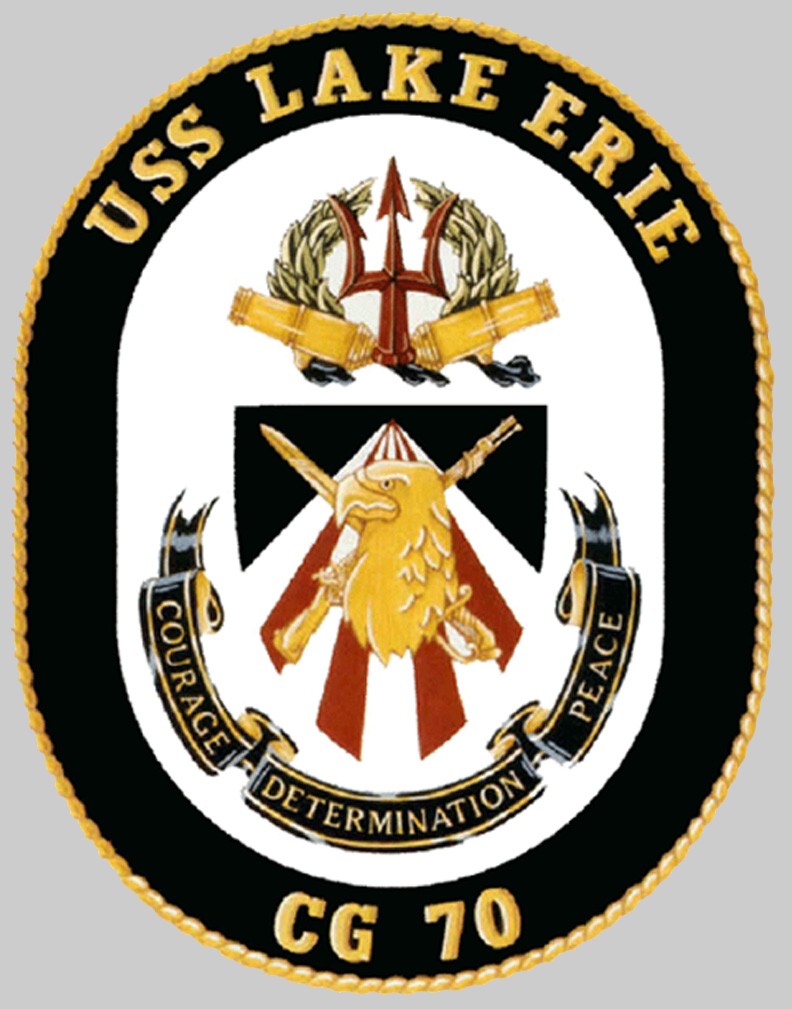 |
||
|
|
seaforces.org |
USN ships
start page | |
